Search Result
Results for "
Rats
" in MedChemExpress (MCE) Product Catalog:
4
Biochemical Assay Reagents
17
Isotope-Labeled Compounds
| Cat. No. |
Product Name |
Target |
Research Areas |
Chemical Structure |
-
- HY-131929
-
|
|
NO Synthase
|
Inflammation/Immunology
|
|
AE-ITU dihydrobromide is the dihydrobromide form of AE-ITU. AE-ITU dihydrobromide is a selective inhibitor for inducible NO synthase (iNOS), and attenuates the liver dysfunction caused by endotoxaemia in rats .
|
-
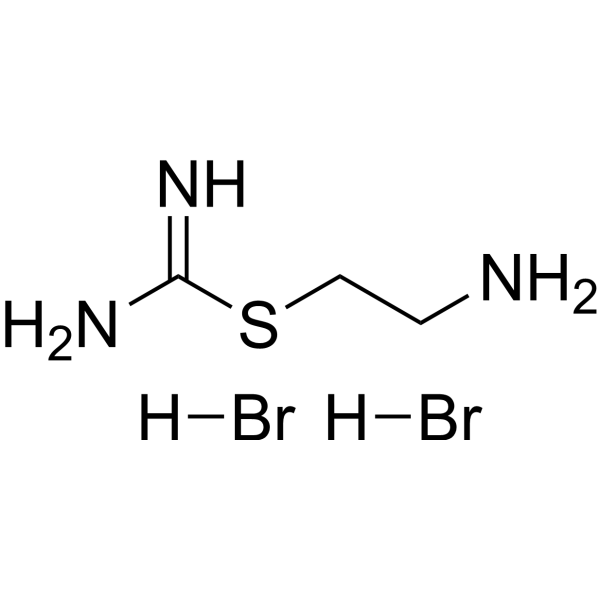
-
- HY-116239
-
-
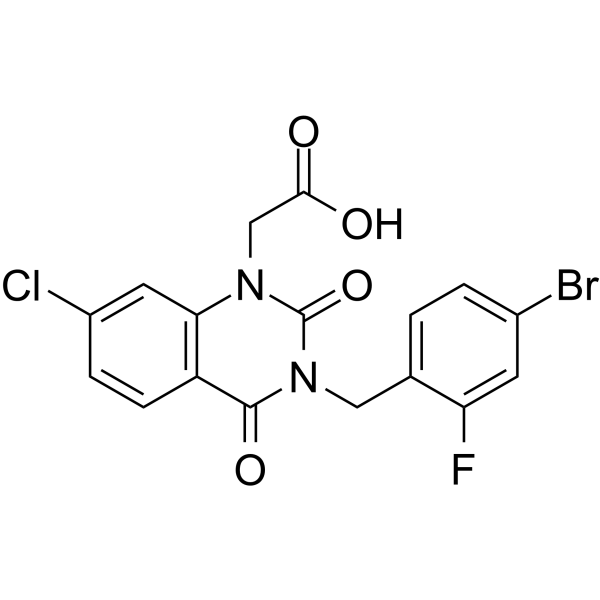
-
- HY-N4209
-
|
|
Others
|
Cardiovascular Disease
|
|
3α-Dihydrocadambine is a natural product isolated from the heartwoods of Anthocephalus cadamba.3α-Dihydrocadambine exhibits dose-dependent hypotensive and anti-hypertensive effects in anesthetized normotensive rats and in conscious spontaneously hypertensive rats .
|
-
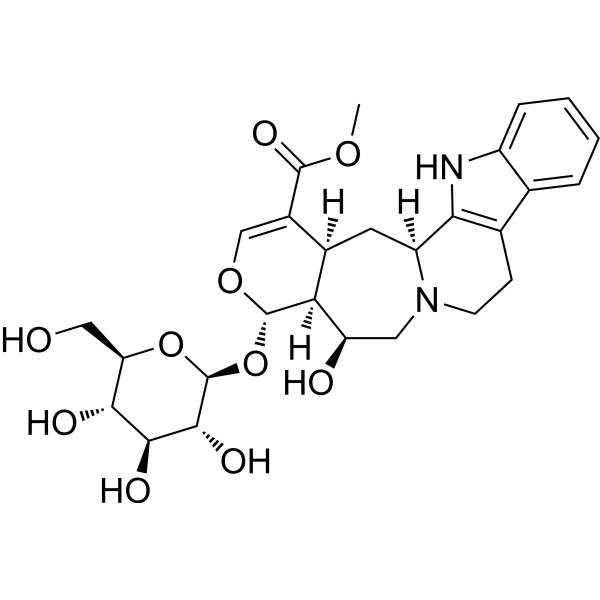
-
- HY-162345
-
|
|
Others
|
Cardiovascular Disease
|
|
CK-963 is an activator for cardiac troponin (cTnC) with Ki of 11.5 μM. CK-963 exhibits activity in enhancing cardiac contractility in Sprague-Dawley rats .
|
-

-
- HY-D1005A6
-
|
PEG-PPG-PEG, 2200 (Averag)
|
Biochemical Assay Reagents
|
Others
|
|
Poloxamer 124 L44 is block polymer of polyoxyethylene and polyoxypropylene with average molecular mass of 2200. Poloxamer 124 L44 reveals toxicity with an oral LD50 of 5 g/kg in albino rats. Poloxamer 124 L44 causes ocular irritation. Poloxamer 124 L44 forms thermoreversible hydrogel, that is utilized in food additives, drug delivery carriers in cosmetics, pharmaceutical ingredients and tissue engineering .
|
-

-
- HY-105090
-
|
|
5-HT Receptor
|
Cardiovascular Disease
Neurological Disease
|
|
Lerisetron is a potent 5-HT3 antagonists and possess high-affinity binding for the 5-HT3 receptors with pKi value of 9.2. Lerisetron has a potent ability to inhibit the 5-HT-evoked reflex bradycardia in urethane-anesthetized rats .
|
-

-
- HY-11098
-
|
R170591
|
RSV
|
Infection
|
|
JNJ 2408068 is a potent RSV (respiratory syncytial virus) inhibitor. JNJ 2408068 significantly inhibits replication of RSV A and B subtypes in the lungs of cotton rats without any evidence of toxicity. The minimum protective dose of JNJ 2408068 appears to be approximately 0.39 mg/kg .
|
-
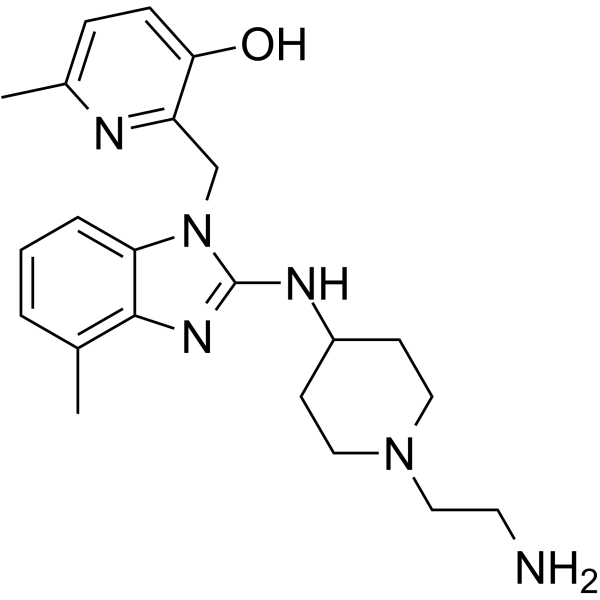
-
- HY-144801A
-
|
|
Potassium Channel
|
Cardiovascular Disease
|
|
DDO-02005 is a potent Kv1.5 potassium channel inhibitor with an IC50 value of 0.72 μM. DDO-02005 has good anti-atrial fibrillation (AF) effect in CaCl2-ACh AF rats model and effective anti-arrhythmic activity caused by aconitine .
|
-
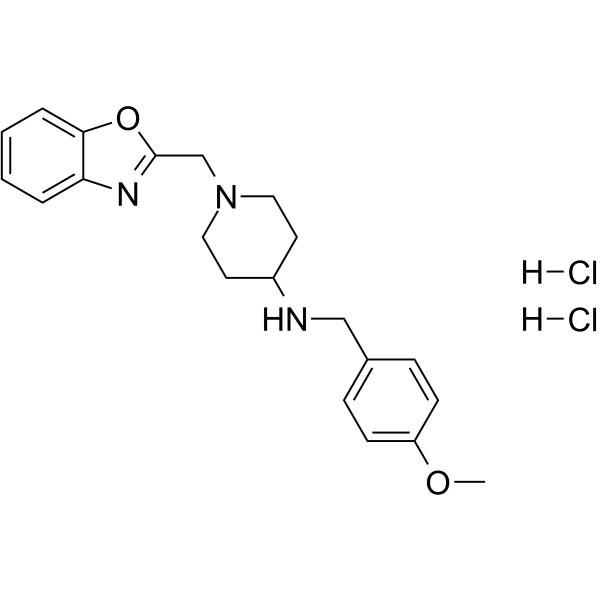
-
- HY-144801
-
|
|
Potassium Channel
|
Cardiovascular Disease
|
|
DDO-02005 (free base) is a potent Kv1.5 potassium channel inhibitor with an IC50 value of 0.72 μM. DDO-02005 (free base) has good anti-atrial fibrillation (AF) effect in CaCl2-ACh AF rats model and effective anti-arrhythmic activity caused by aconitine .
|
-

-
- HY-P3662
-
|
|
Tyrosinase
|
Cancer
|
|
Ac-[Nle4,D-Phe7]-α-MSH (4-10)-NH2 is a melanotropin, a melanocyte-stimulating hormone. Ac-[Nle4,D-Phe7]-α-MSH (4-10)-NH2 stimulates tyrosinase and exhibits thermoregulatory effect in rats model .
|
-
![Ac-[Nle4,D-Phe7]-α-MSH (4-10)-NH2](//file.medchemexpress.com/product_pic/hy-p3662.gif)
-
- HY-W013989
-
|
|
Epoxide Hydrolase
|
Cardiovascular Disease
|
|
1,3-Dicyclohexylurea (DCU) is an orally active and potent sEH (soluble epoxide hydrolase) inhibitor. Oral Delivery of 1,3-Dicyclohexylurea nanosuspension enhances exposure and lowers blood pressure in hypertensive Rats .
|
-
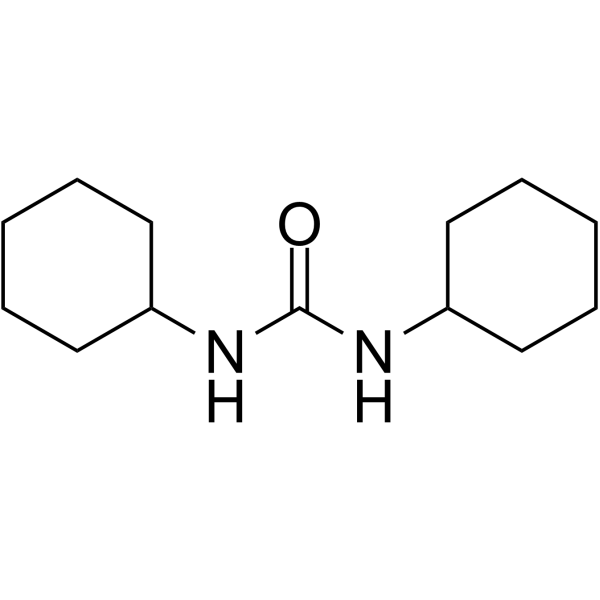
-
- HY-151138
-
|
|
Glucosidase
|
Metabolic Disease
|
|
α-Glucosidase-IN-16 is a potent and orally active α-glucosidase inhibitor with an IC50 value of 3.28 μM. α-Glucosidase-IN-16 can reduce the level of blood glucose in Streptozotocin-induced diabetic rats. Antidiabetic activity .
|
-
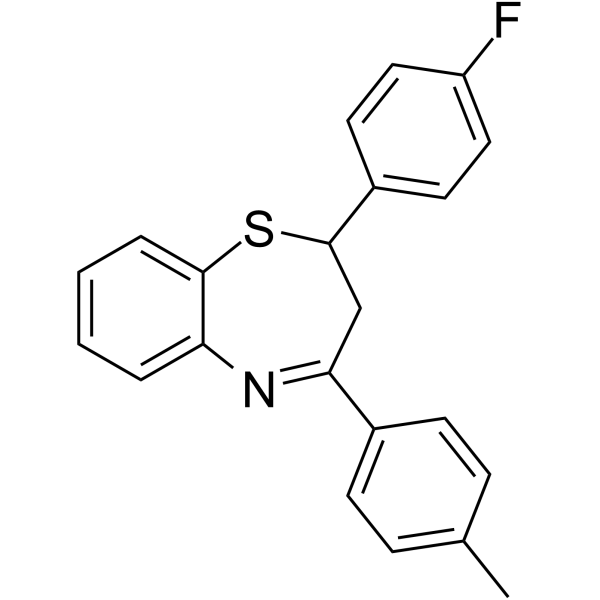
-
- HY-123298
-
|
|
Src
Akt
Apoptosis
|
Cancer
|
|
Chrysotoxine is a dual inhibitor of Src/Akt. Chrysotoxine suppresses cancer stem cells (CSCs) phenotypes by down-regulating Src/Akt signaling. Chrysotoxine reduces cell viability and increases apoptosis level in H460 and H23 cells instead of non-tumor cell lines. Chrysotoxine shows rapid excretion and low bioavailability in rats. Chrysotoxine is used in cancer research .
|
-
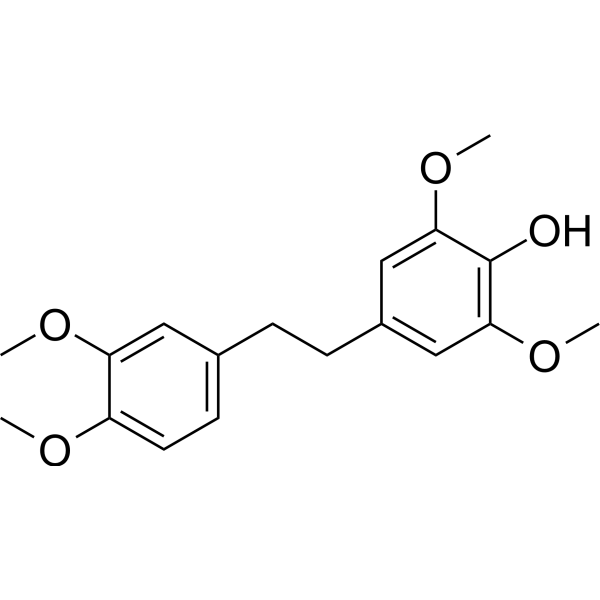
-
- HY-B0747
-
|
EPA ethyl ester; Ethyl eicosapentaenoate; AMR101
|
Endogenous Metabolite
|
Metabolic Disease
|
|
Eicosapentaenoic acid ethyl ester (EPA ethyl ester) is an orally active ω-3 fatty acid agent. Eicosapentaenoic acid ethyl ester could improve the activity of liver β-oxidase in vitro, reduce the level of liver total triglyceride, increase the content of liver triglyceride and phospholipid ω-3 fatty acid, and increase the total ω-3 fatty acid level in rats .
|
-

-
- HY-150700
-
|
|
ERK
|
Metabolic Disease
|
|
RLX-33 is a potent, selective and blood-brain barrier (BBB) penetrant relaxin family peptide 3 (RXFP3) antagonist, also blocks relaxin-3-induced ERK1/2 phosphorylation, with IC50 values of 2.36 μM for RXFP3, 7.82 and 13.86 μM for ERK1 and ERK2 phosphorylation, respectively. RLX-33 can block the stimulation of food intake induced by the RXFP3-selective agonist R3/I5 in rats. RLX-33 can be used for the research of metabolic syndrome .
|
-
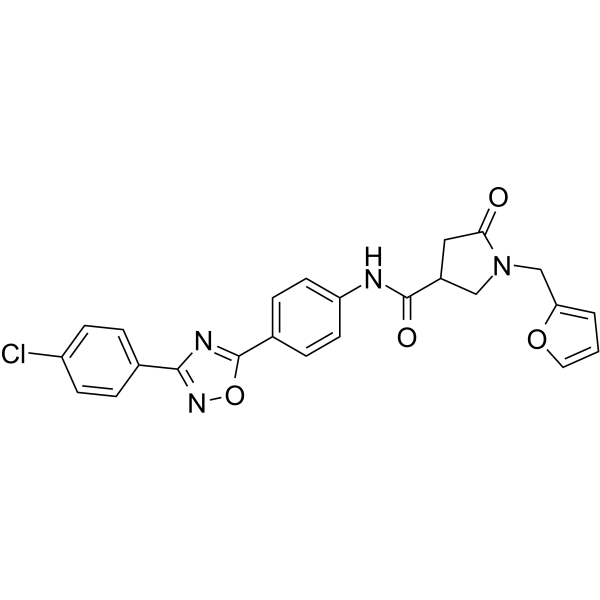
-
- HY-W250580
-
|
|
Biochemical Assay Reagents
|
Others
|
|
Dimethicone is an orally active biochemical assay reagents consisting of a fully methylated linear siloxane polymer whose ends are blocked by trimethylsiloxane units. Dimethicone can lubricate hair and physically block the respiratory system of lice to remove lice. Dimethicone has potential applications in cosmetics and daily cleaning products .
|
-
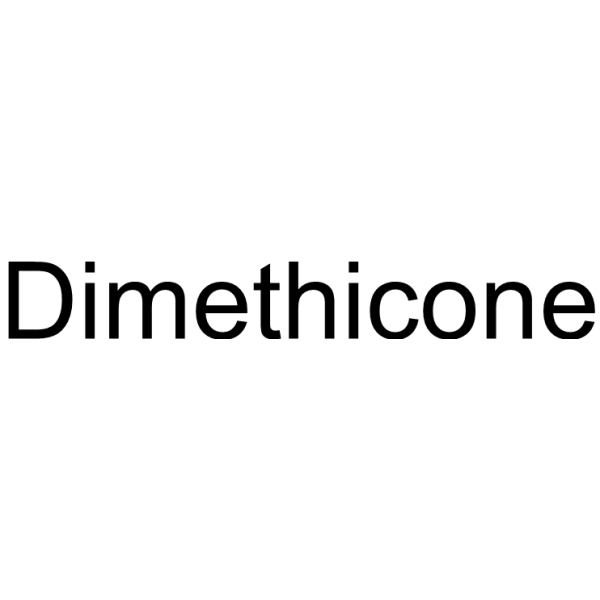
-
- HY-B1984
-
|
4,4'-DDD; p,p'-Dichlorodiphenyl dichloroethane
|
|
|
|
p,p'-DDD is a major metabolite of p,p'-DDT. p,p'-DDD occurs in the feces and livers of rats, that are given p,p'-DDT by stomach tube, but not of rats injected intraperitoneally with p,p'-DDT .
|
-
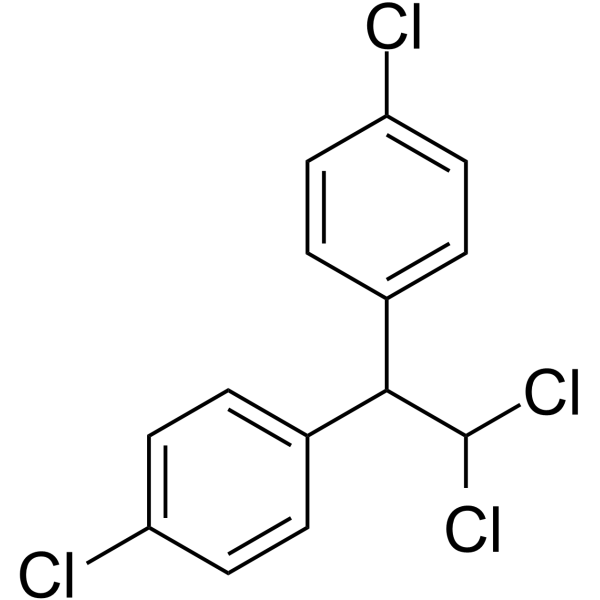
-
- HY-B0962
-
|
|
mAChR
|
Neurological Disease
|
|
Piperidolate hydrochloride is an antimuscarinic, inhibits intestinal cramp induced by acetylcholine (rats and dogs).
|
-
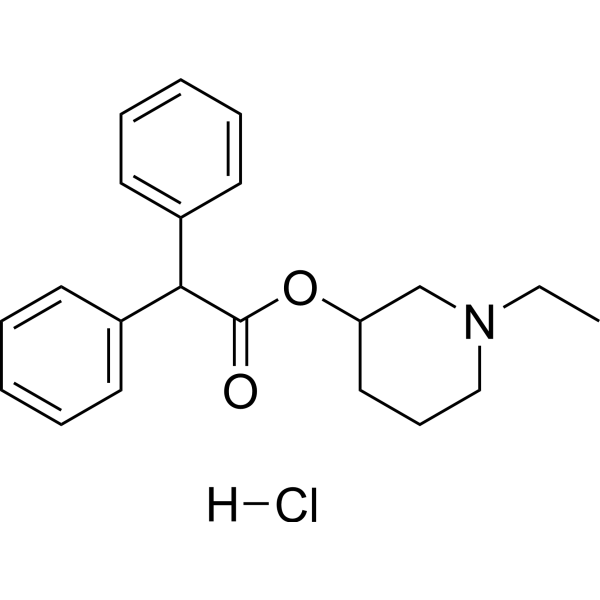
-
- HY-B0962A
-
|
|
mAChR
|
Neurological Disease
|
|
Piperidolate is an antimuscarinic, inhibits intestinal cramp induced by acetylcholine (rats and dogs).
|
-
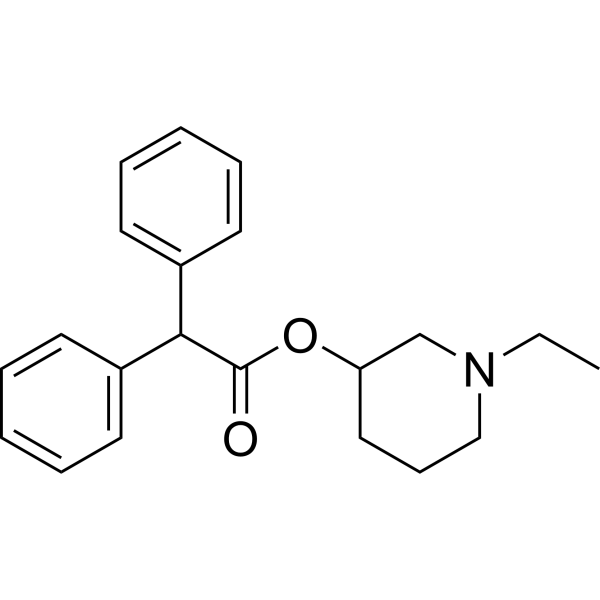
-
- HY-W096159
-
|
|
Endogenous Metabolite
|
Metabolic Disease
|
|
D-Biotinol is the nutrition of Lactobacillus arabinosus, L. casei, or Saccharomyces cerevisiae. D-Biotinol replaces the D-biotin (HY-B0511) in saving egg white induced biotin deficiency in rats. D-Biotinol is orally active and displays to be converted to biotin by rats .
|
-
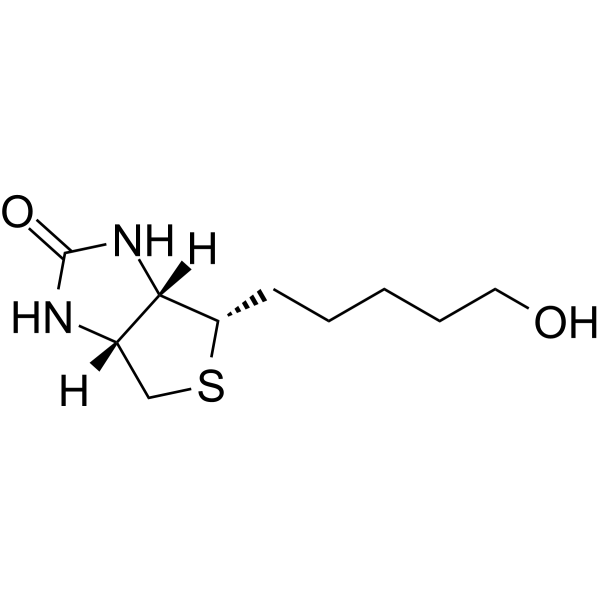
-
- HY-N1115
-
|
(+)-Tubotaiwine; NSC 306222; Tubotaiwin
|
Others
|
Cardiovascular Disease
|
|
Tubotaiwine ((+)-Tubotaiwine), an alkaloid, has beneficial effect on cadmium (Cd) induced hypertension in rats. Tubotaiwine regulates systolic, diastolic and mean arterial blood pressure of the Cd exposed rats. Tubotaiwine reduces arterial stiffness, inhibits of oxidative stress and increases vascular remodeling .
|
-
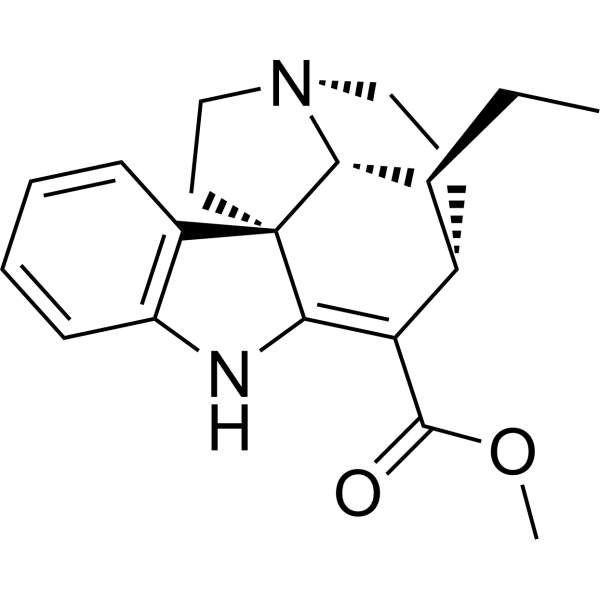
-
- HY-B1978
-
|
|
|
|
|
Iprodione is an orally active diformimide fungicide. Iprodione can specifically cause oxidative damage by producing free radicals (ROS). Iprodione is also an antiandrogen agent that delays adolescent development in rats and reduces sexual behavior and reproductive ability in rats .
|
-
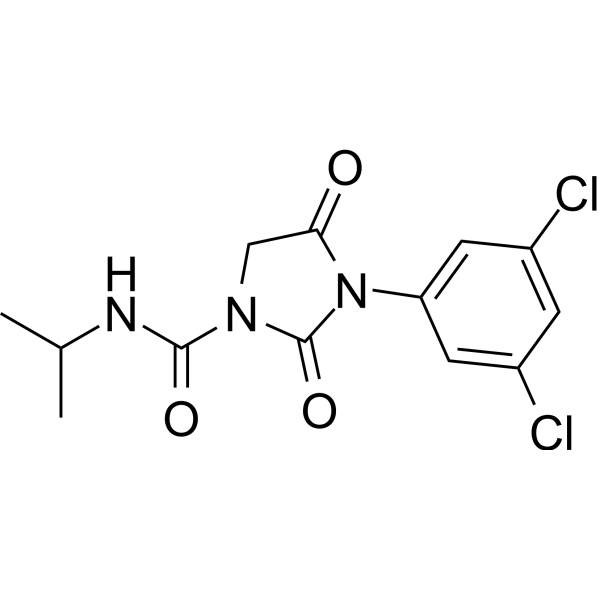
-
- HY-107482
-
|
Nicotinoyl-GABA; Nicotinoyl-γ-aminobutyric acid
|
GABA Receptor
|
Neurological Disease
|
|
Picamilon is an orally active derivative of γ-aminobutyric acid that has nootropic effect. Picamilon improves the epilepsy model in rats and promotes correction of functional disorders of the pancreas during Alloxan (HY-W017227)-induced diabetes mellitus in rats .
|
-
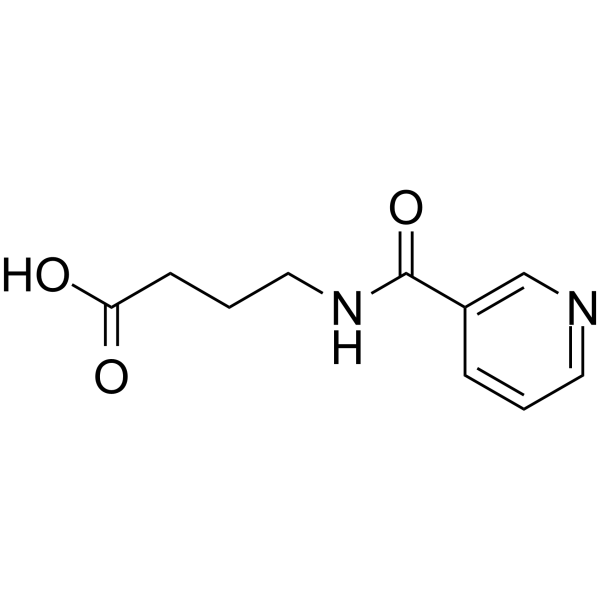
-
- HY-P4296
-
|
|
Amino Acid Derivatives
|
Others
|
|
H-Gly-Sar-Sar-OH is an orally active tripeptide. H-Gly-Sar-Sar-OH is transported through PepT1 within Caco-2 cells. H-Gly Sar Sar OH has potential applications in material transportation .
|
-
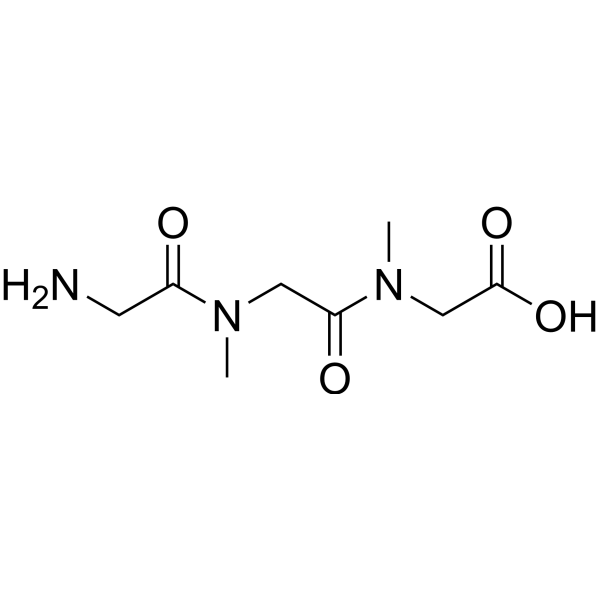
-
- HY-109519
-
|
|
Others
|
Others
|
|
Simethicone is an orally active defoamer. Simethicone reduces the surface tension of air bubbles in the gastrointestinal tract, causing them to be expelled by vomiting, exhalation or absorption into the bloodstream. Simethicone has potential applications in flatulence and colic .
|
-

-
- HY-114761
-
|
|
Prostaglandin Receptor
|
Cardiovascular Disease
|
|
Prostaglandin F2α dimethyl amine is a Prostaglandin F2α (HY-12956) derivative. Prostaglandin F2α dimethyl amine is an antagonist for Prostaglandin F receptor (FP) . Prostaglandin F2α dimethyl amine blocks the cardiovascular responses induced by orexin and Arachidonic acid (HY-109590) .
|
-

-
- HY-W011873
-
-
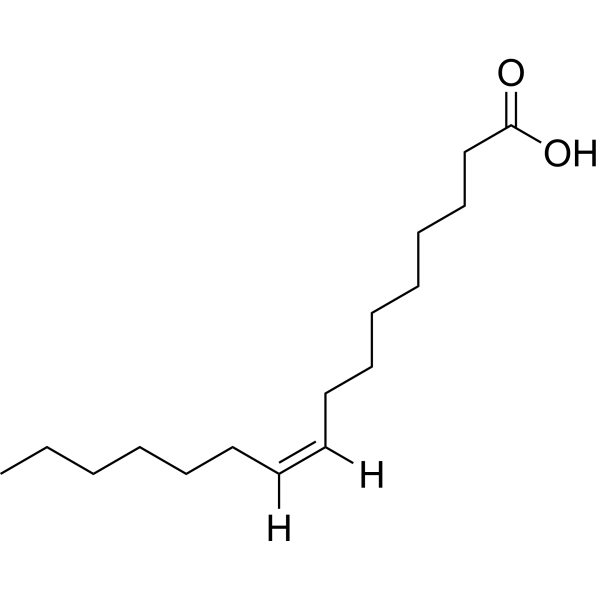
-
- HY-121528
-
-

-
- HY-113329
-
|
Taurocyamine
|
Endogenous Metabolite
|
Metabolic Disease
|
|
Guanidinoethyl sulfonate (Taurocyamine), a transport antagonist of taurine, induces much urinary taurine excretion with a resulting decrease in the tissue taurine content and readily produces taurine-deficient fetal rats in pregnant rats . Guanidinoethyl sulfonate, a structural analogue of taurine, acts as a competitive inhibitor of taurine transport .
|
-
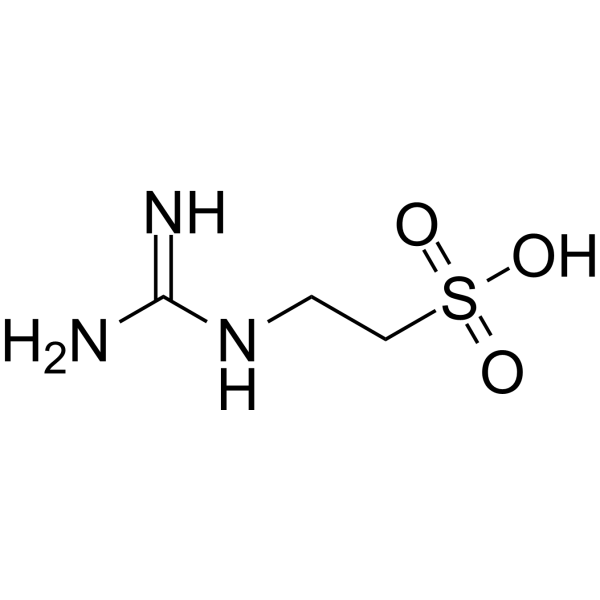
-
- HY-135761S
-
|
|
Fungal
Cholinesterase (ChE)
|
|
|
Penconazole-d7 is the deuterium labeled Penconazole[1]. Penconazole is a typical triazole fungicide, and mainly applied on apples, grapes, and vegetables to control powdery mildew. Penconazole inhibits sterol biosynthesis in fungi. Penconazole decrease AChE activity in the cerebrum and cerebellum of rats[2][3].
|
-
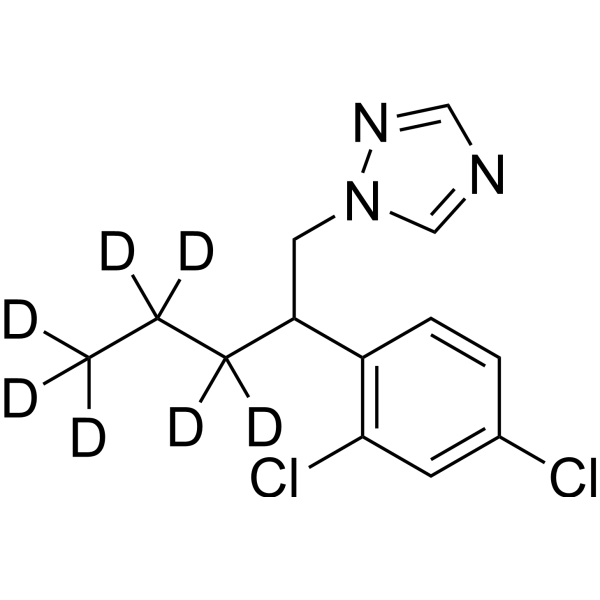
-
- HY-111081C
-
|
|
Sigma Receptor
|
Neurological Disease
|
|
(±)-PPCC oxalate is a sigma-1 agonist that mainly interacts with sigma-1 receptors with Ki of 1.5 nM. (±)-PPCC oxalate has effective anti-amnesia effects in rats with mild or severe cognitive impairment, and can improve the cognitive abilities of rats .
|
-
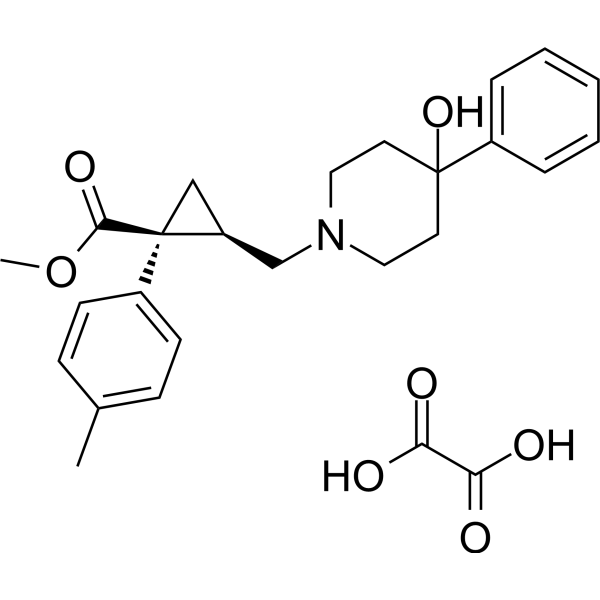
-
- HY-100189
-
|
|
Others
|
Metabolic Disease
|
|
LS2265 is a taurine derivative of fenofibrate and can induce proliferation of peroxisomes in liver cells of rats.
|
-

-
- HY-119602
-
|
CI-911
|
Others
|
Neurological Disease
|
|
Rolziracetam is a nootropic agent of the racetam family and improves short-term memory in rats and monkeys .
|
-
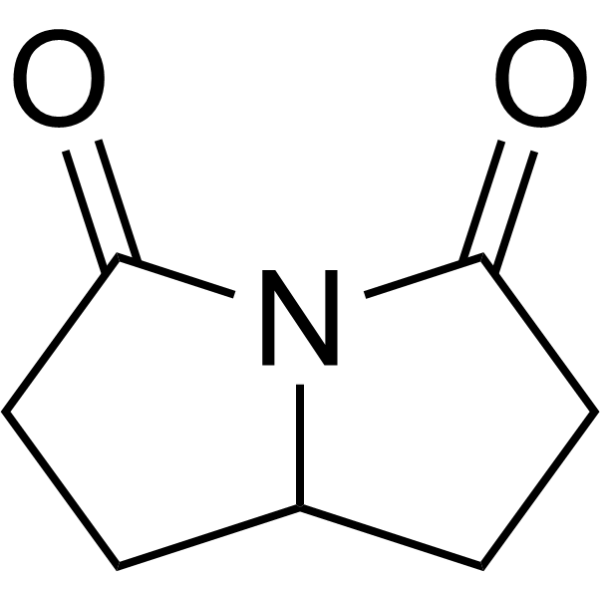
-
- HY-N11503
-
|
|
Others
|
Inflammation/Immunology
|
|
Disialyllacto-N-tetraose is a human milk oligosaccharide that prevents necrotising enterocolitis in neonatal rats .
|
-
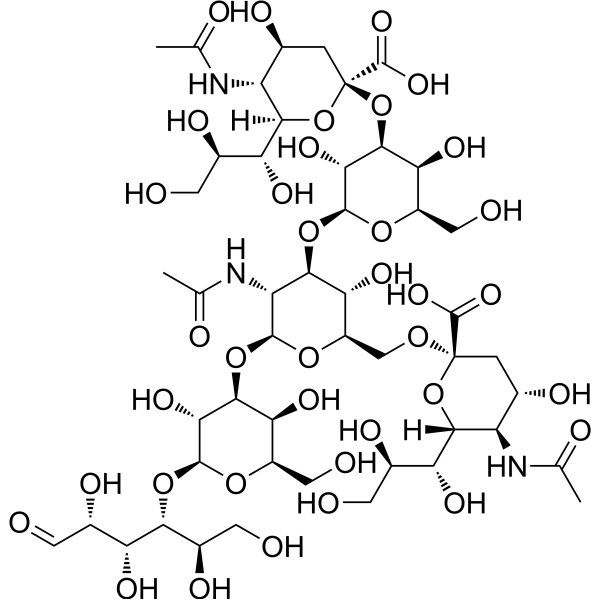
-
- HY-B0476S
-
|
Acetophenetidin-d5
|
COX
|
Inflammation/Immunology
|
|
Phenacetin-d5 is the deuterium labeled Phenacetin. Phenacetin (Acetophenetidin) is a non-opioid analgesic/antipyretic agent. Phenacetin is a selective COX-3 inhibitor. Phenacetin is used as probe of cytochrome P450 enzymes CYP1A2 in human liver microsomes and in rats[1][2][3].
|
-
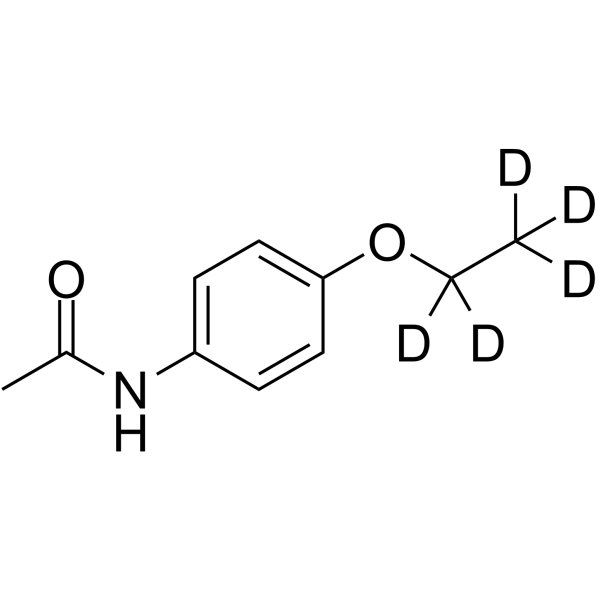
-
- HY-107652
-
|
|
mAChR
|
Neurological Disease
|
|
AF-DX 384 is a selective antagonist of M2 and M4 muscarinic acetylcholine receptors (Kis=6.03 and 10 nM, respectively) . AF-DX 384 reverses deficits in novel object recognition and passive avoidance in aged rats, as well as in young rats with impairments induced by scopolamine .
|
-
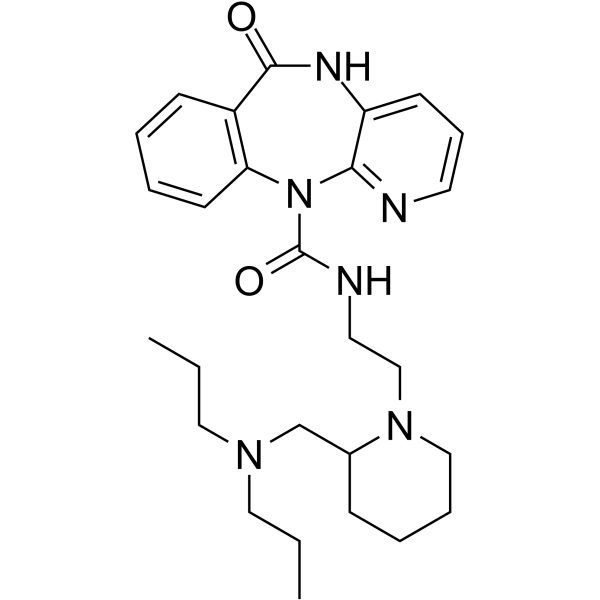
-
- HY-129208
-
|
|
Antibiotic
Fungal
|
Infection
|
|
Viridicatumtoxin is a new mycotoxin extracted from Penicillium viridicatum with a LD50 of 122.4 mg/kg in rats.
|
-

-
- HY-B0476S1
-
|
|
COX
|
Inflammation/Immunology
|
|
Phenacetin- 13C is the 13C labeled Phenacetin[1]. Phenacetin (Acetophenetidin) is a non-opioid analgesic/antipyretic agent. Phenacetin is a selective COX-3 inhibitor. Phenacetin is used as probe of cytochrome P450 enzymes CYP1A2 in human liver microsomes and in rats[2][3][4].
|
-
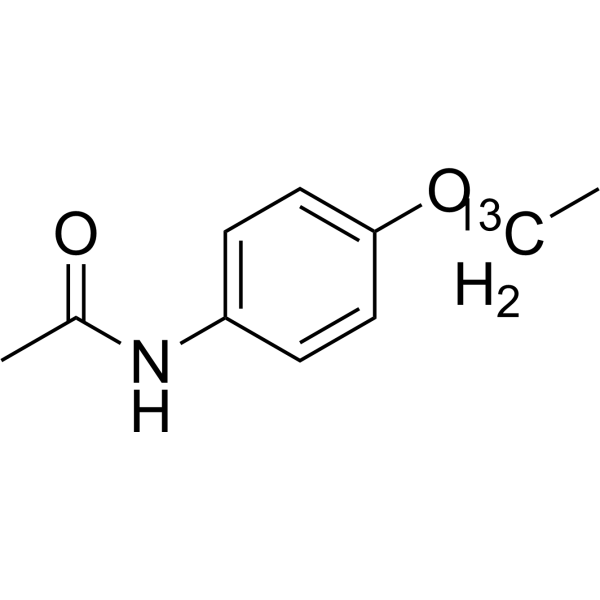
-
- HY-118821
-
|
|
CRFR
|
Metabolic Disease
|
|
JTC-017, a specific corticotropin-releasing hormone receptor 1 antagonist, attenuates hippocampal noradrenaline release, visceral perception, adrenocorticotropic hormone release, and anxiety after acute colorectal distention in rats. JTC-017 blocks stress-induced changes in colonic motility after chronic colorectal distention in rats .
|
-

-
- HY-124223
-
|
|
mAChR
|
Neurological Disease
|
|
AF-DX 384 (methanesulfonate) is a selective antagonist of M2 and M4 muscarinic acetylcholine receptors (Kis=6.03 and 10 nM, respectively) . AF-DX 384 (methanesulfonate) reverses deficits in novel object recognition and passive avoidance in aged rats, as well as in young rats with impairments induced by scopolamine .
|
-
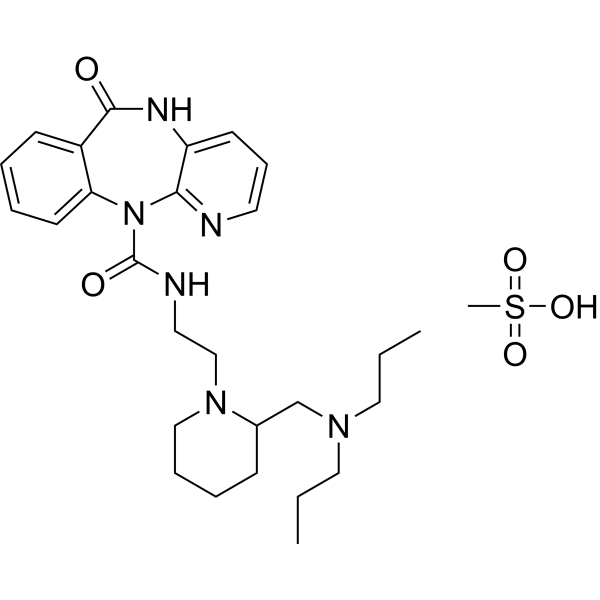
-
- HY-144289
-
|
|
Glucokinase
|
Metabolic Disease
|
|
BMS-820132 is an orally active and partial glucokinase (GK) activator with a AC50 of 29 nM. BMS-820132 decreases the glucose levels in glucose tolerance test (OGTT) model in normal rats, but not Zucker diabetic fatty (ZDF) rats. BMS-820132 exhibits pharmacological toxicity secondary to strong GK activation .
|
-
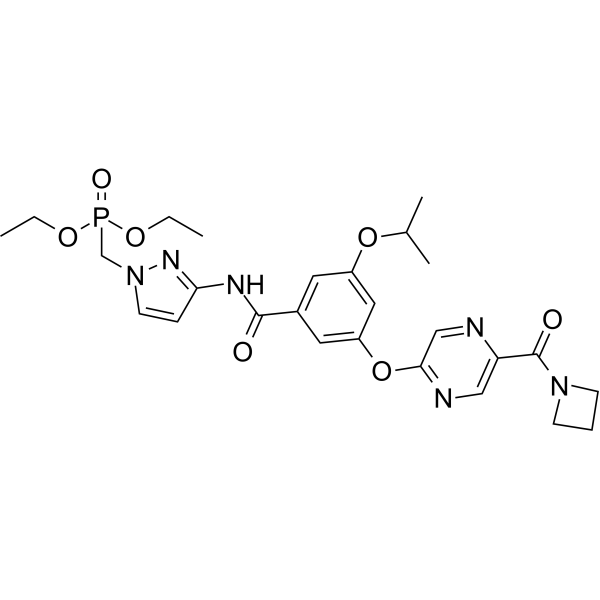
-
- HY-B1984S
-
|
4,4'-DDD-d8; p,p'-Dichlorodiphenyl dichloroethane-d8
|
Drug Metabolite
|
Others
|
|
p,p'-DDD-d8 is the deuterium labeled p,p'-DDD[1]. p,p'-DDD is a major metabolite of p,p'-DDT. p,p'-DDD occurs in the feces and livers of rats, that are given p,p'-DDT by stomach tube, but not of rats injected intraperitoneally with p,p'-DDT[2][3].
|
-
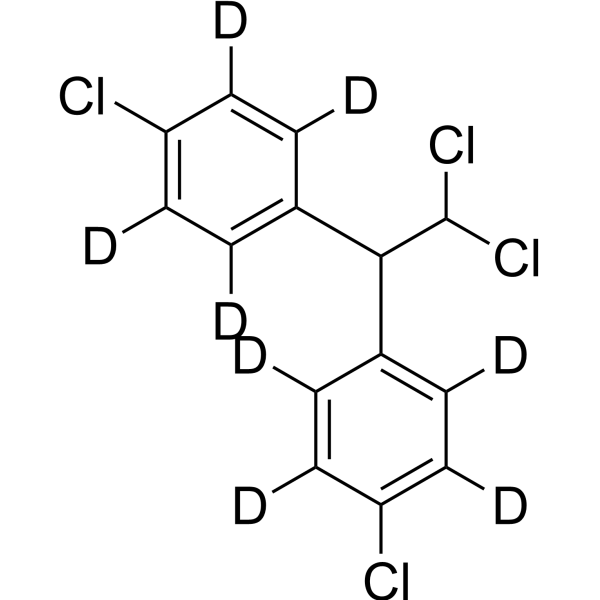
-
- HY-D1782
-
-
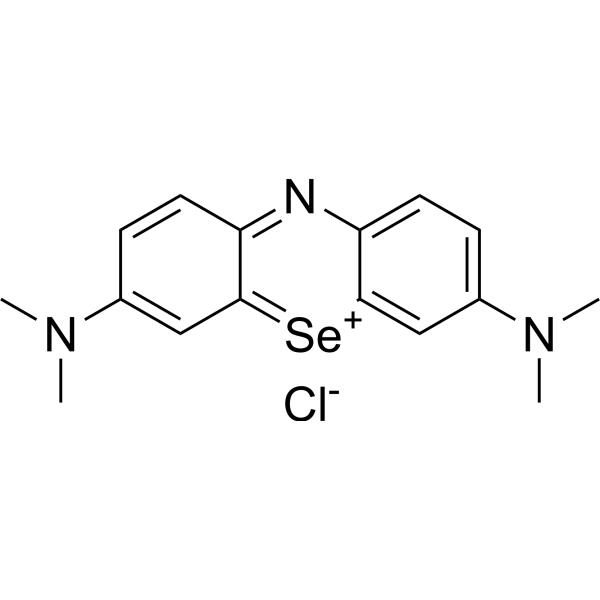
-
- HY-N9226
-
|
|
Others
|
Metabolic Disease
|
|
Glucocheirolin, a natural compound that can be isolated from Erysimum corinthium Boiss, possesses antinutritional and toxic effects in rats .
|
-
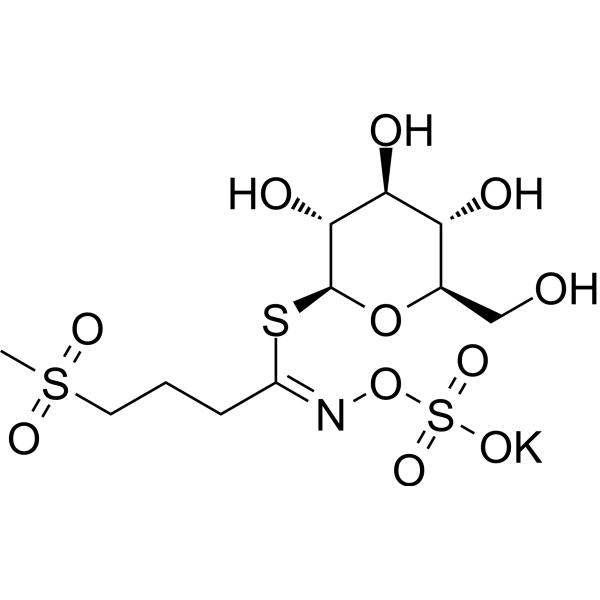
-
- HY-N0300
-
|
DL-Tetrahydropalmatine
|
Dopamine Receptor
Apoptosis
|
Neurological Disease
|
|
Tetrahydropalmatine possesses analgesic effects. Tetrahydropalmatine acts through inhibition of amygdaloid release of dopamine to inhibit an epileptic attack in rats .
|
-
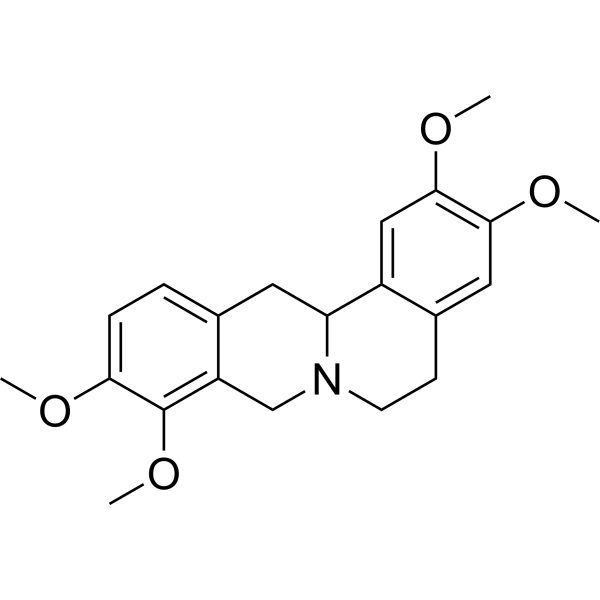
-
- HY-119320
-
|
Aethimidinum
|
Others
|
Cancer
|
|
Ethimidine (Aethimidinum) can reduce the blood serum free SH (sulfhydryl) in in rats previously transplanted with sarcoma or carcinoma cells .
|
-

-
- HY-B1448AS
-
|
|
Apoptosis
Calcium Channel
|
Cardiovascular Disease
|
|
(Rac)-Benidipine-d7 is the deuterium labeled Benidipine[1]. Benidipine is a potent and orally active calcium channel antagonist[2]. Benidipine shows anti-apoptosis effects in ischaemic/reperfused myocardial cells[3]. Benidipine increases the activity of endothelial cell-type nitric oxide synthase and improves coronary circulation in hypertensive rats[4].
|
-
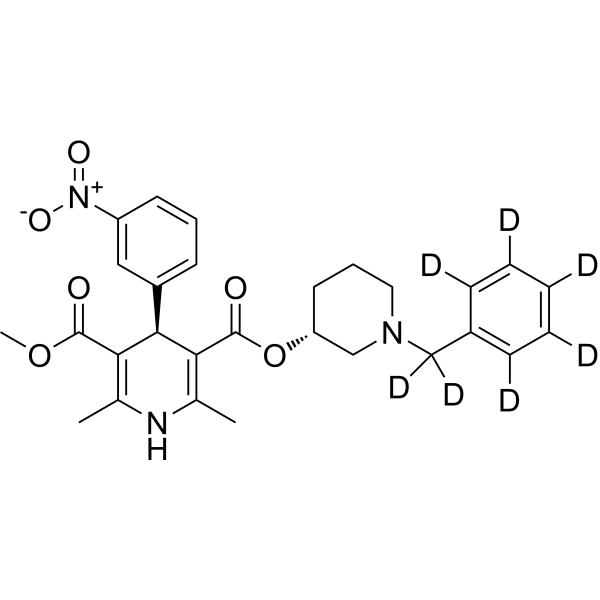
-
- HY-W012946S
-
|
|
Acyltransferase
ATP Citrate Lyase
Endogenous Metabolite
|
Metabolic Disease
|
|
2-Furoic acid-d3 is the deuterium labeled 2-Furoic acid[1]. 2-Furoic acid (Furan-2-carboxylic acid) is an organic compound produced through furfural oxidation[2]. 2-Furoic acid exhibits hypolipidemic effet, lowers both serum cholesterol and serum triglyceride levels in rats[3].
|
-
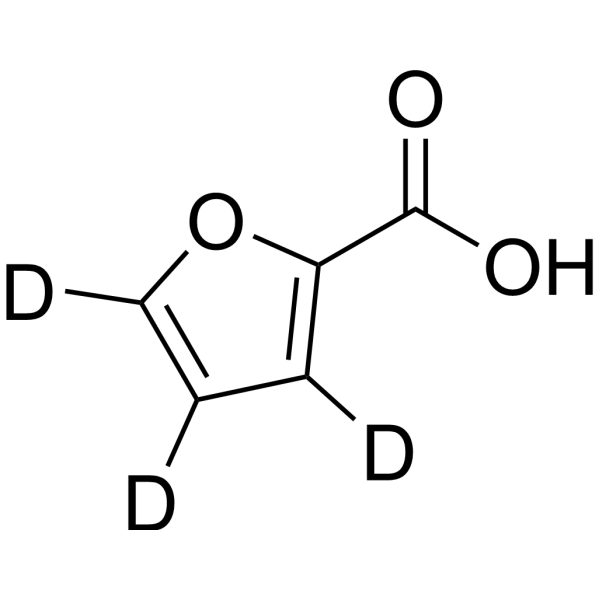
-
- HY-14562
-
|
|
mAChR
|
Neurological Disease
|
|
TBPB is an allosteric M1 mAChR agonist(EC50=289 nM) that regulates amyloid processing and produces antipsychotic-like activity in rats.
|
-
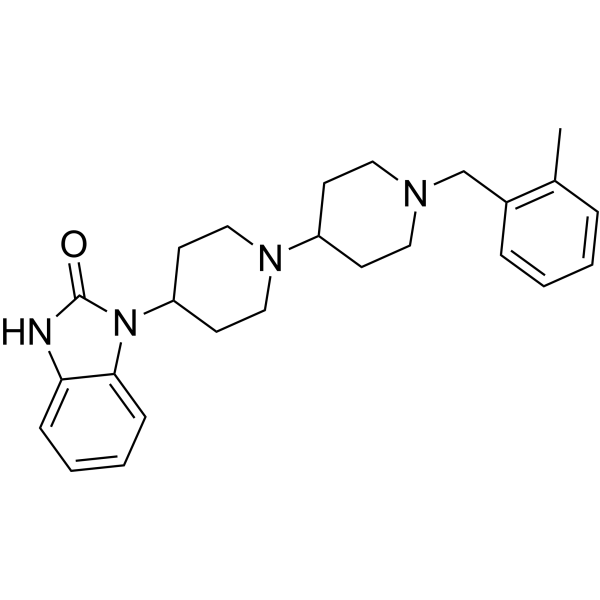
-
- HY-108667
-
|
|
P2X Receptor
|
Others
|
|
TNP-ATP triethylammonium is a selective P2X receptor antagonist. TNP-ATP triethylammonium shows antinociceptive effects in rats .
|
-

- HY-101749
-
-
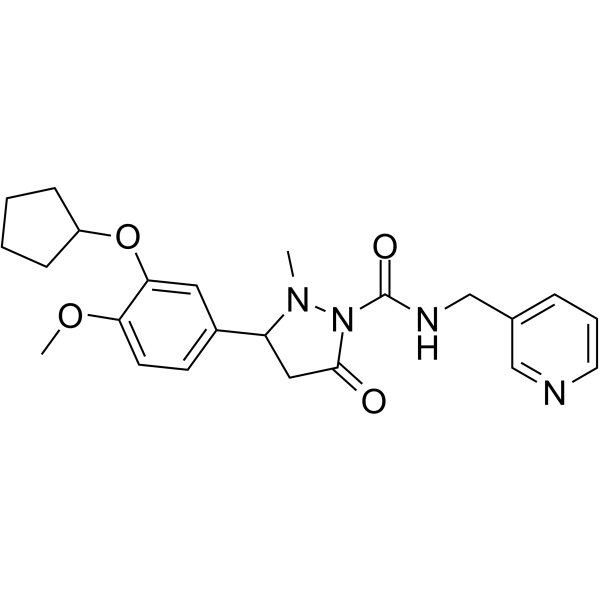
- HY-U00013
-
|
HCT 1206; NO-flurbiprofen; Nitroxybutyl flurbiprofen
|
COX
|
Cardiovascular Disease
|
|
Nitroflurbiprofen is a cyclooxygenase (COX) inhibitor with nitric oxide (NO)-donating properties, modulates the increased intrahepatic vascular tone in portal hypertensive cirrhotic rats.
|
-
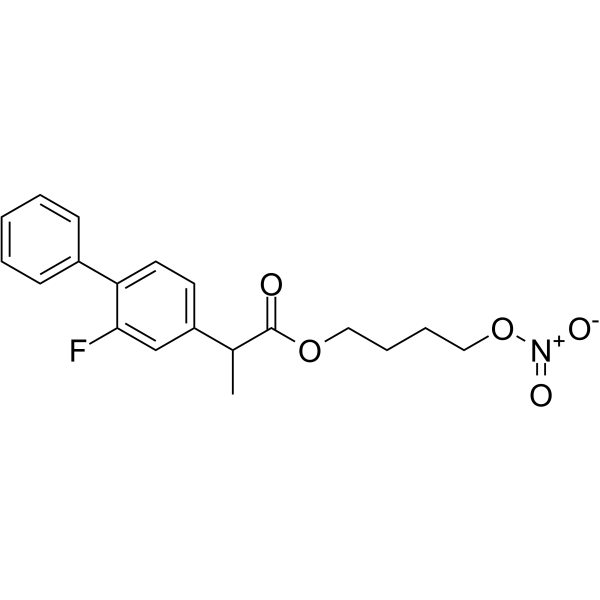
- HY-111634
-
|
|
Constitutive Androstane Receptor
|
Cancer
|
|
Epsilon-momfluorothrin is a type I synthetic pyrethroid insecticide, activates constitutive androstane receptor (CAR), and induces hepatocellular tumors in rats .
|
-

- HY-N0300A
-
|
DL-Tetrahydropalmatine hydrochloride
|
|
|
|
Tetrahydropalmatine (DL-Tetrahydropalmatine) hydrochloride possesses analgesic effects. Tetrahydropalmatine hydrochloride acts through inhibition of amygdaloid release of dopamine to inhibit an epileptic attack in rats .
|
-
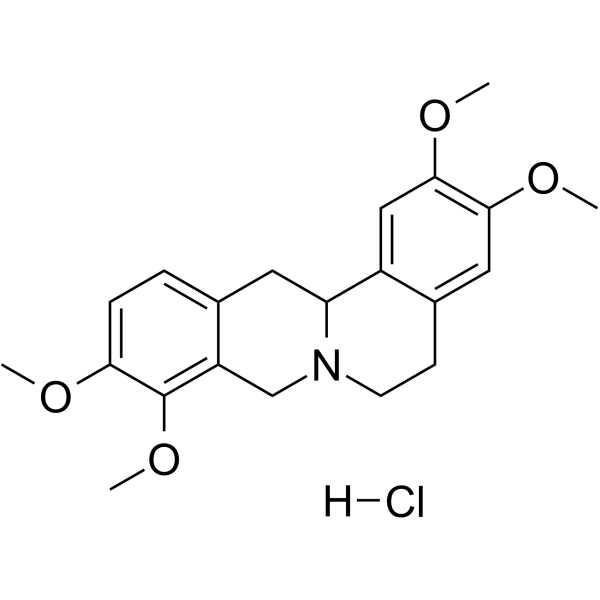
- HY-137204
-
|
|
GABA Receptor
|
Neurological Disease
|
|
COR659 is a potent and effective GABAB positive allosteric modulator (PAM). COR659 suppresses alcohol and chocolate self-administration in rats .
|
-
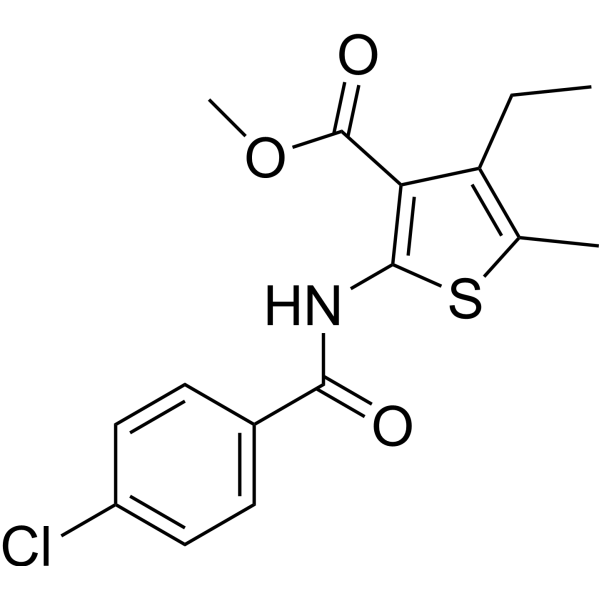
- HY-W092533
-
|
|
Tryptophan Hydroxylase
|
Neurological Disease
|
|
6-Fluorotryptophan, a competitive inhibitor of tryptophan hydroxylase, produced a transient disruption of sleep in rats chronically implanted with EEG recording electrodes .
|
-

- HY-N11449
-
|
|
Others
|
Others
|
|
Nardoaristolone B, a non-sesquiterpene compound isolated from the root of Nardostachys jatamansi, has protective effects on cardiomyocyte injury in neonatal rats .
|
-
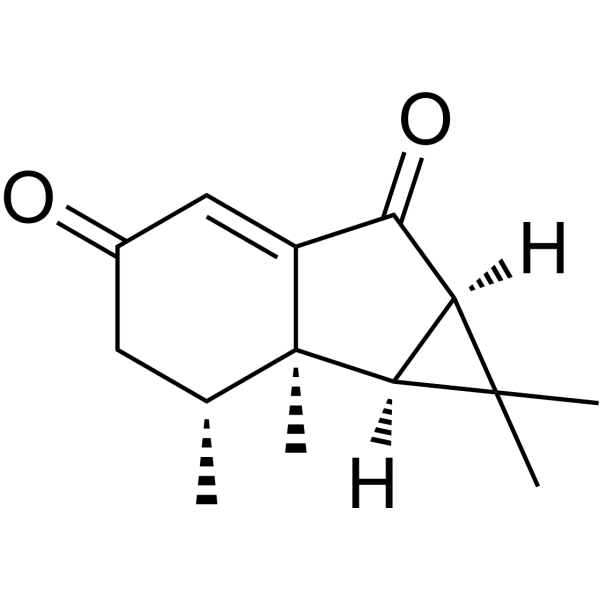
- HY-111327
-
|
|
Glucosidase
|
Metabolic Disease
|
|
Valibose is analpha-glucosidaseinhibitor, and ameliorates the metabolic disorder of glucose and lipids and the nephropathy in Streptozotocin (HY-13753)-induced diabetic rats .
|
-
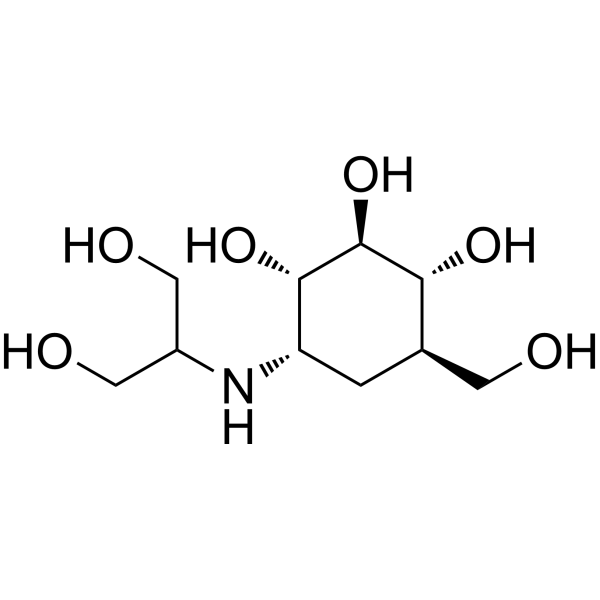
- HY-N2026S1
-
|
Propyl parahydroxybenzoate-d4; Propyl 4-hydroxybenzoate-d4
|
Apoptosis
Bacterial
Endogenous Metabolite
|
Infection
|
|
Propylparaben-d4 is the deuterium labeled Propylparaben[1]. Propylparaben (Propyl parahydroxybenzoate) is an antimicrobial preservative which can be produced naturally by plants and bacteria. Propylparaben is prevalently used in cosmetics, pharmaceuticals, and foods. Propylparaben disrupts antral follicle growth and steroidogenic function by altering the cell-cycle, apoptosis, and steroidogenesis pathways. Propylparaben also decreases sperm number and motile activity in rats[2][3][4].
|
-

- HY-13056
-
|
|
Drug Metabolite
|
Neurological Disease
|
|
SMND-309 is a metabolite of salvianolic acid B, and exhibits neuroprotective effects in cultured neurons and in permanent middle cerebral artery occlusion rats .
|
-
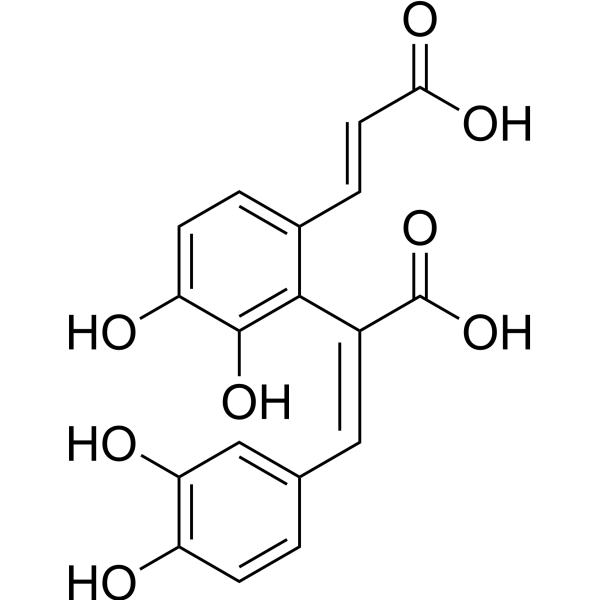
- HY-B0099
-
Edaravone
Maximum Cited Publications
16 Publications Verification
MCI-186
|
MMP
Apoptosis
|
Neurological Disease
|
|
Edaravone is a strong novel free radical scavenger, and inhibits MMP-9-related brain hemorrhage in rats treated with tissue plasminogen activator.
|
-
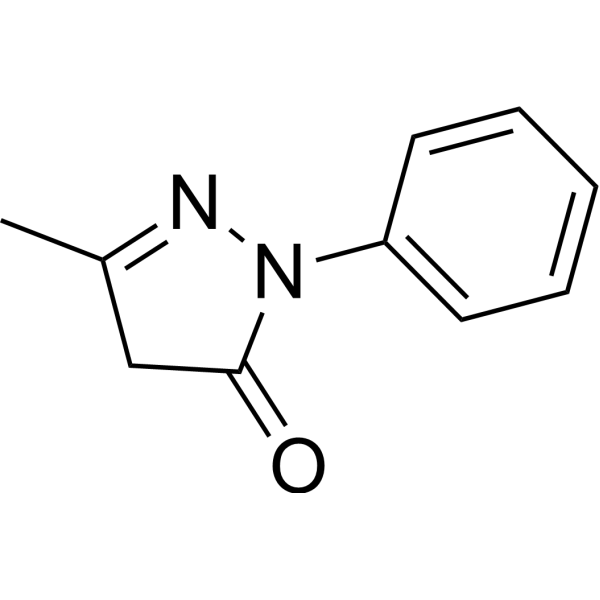
- HY-W011873S
-
-

- HY-N7981
-
|
|
NF-κB
|
Neurological Disease
|
|
Pratensein, a flavonoid, ameliorates β-amyloid-induced cognitive impairment in rats via reducing oxidative damage and restoring synapse and BDNF levels .
|
-

- HY-W011873S1
-
|
|
Endogenous Metabolite
|
Neurological Disease
|
|
Palmitoleic acid-d13 is the deuterium labeled Palmitoleic acid. Palmitoleic acid, a composition of fatty acid, is implicated in the prevention of death from cerebrovascular disorders in SHRSP rats.
|
-
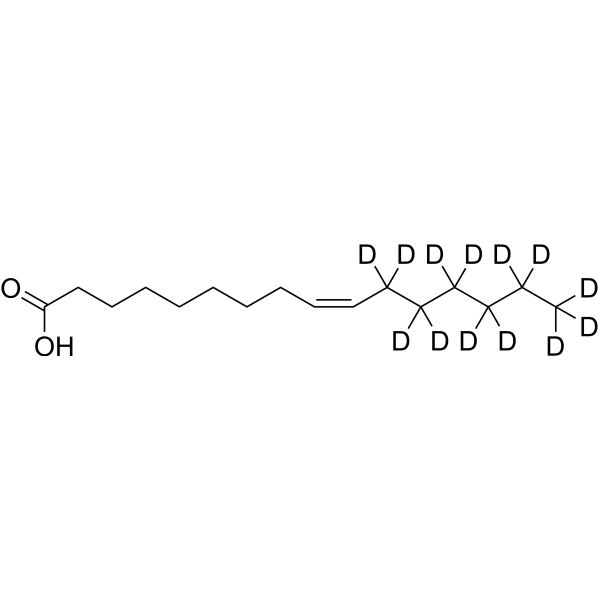
- HY-W011873S2
-
|
|
Endogenous Metabolite
|
Neurological Disease
|
|
Palmitoleic acid- 13C16 is the 13C labeled Palmitoleic acid. Palmitoleic acid, a composition of fatty acid, is implicated in the prevention of death from cerebrovascular disorders in SHRSP rats.
|
-
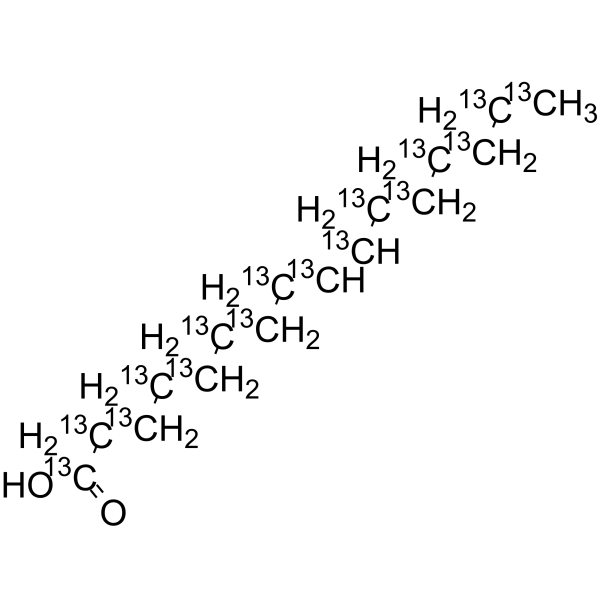
- HY-148158
-
-
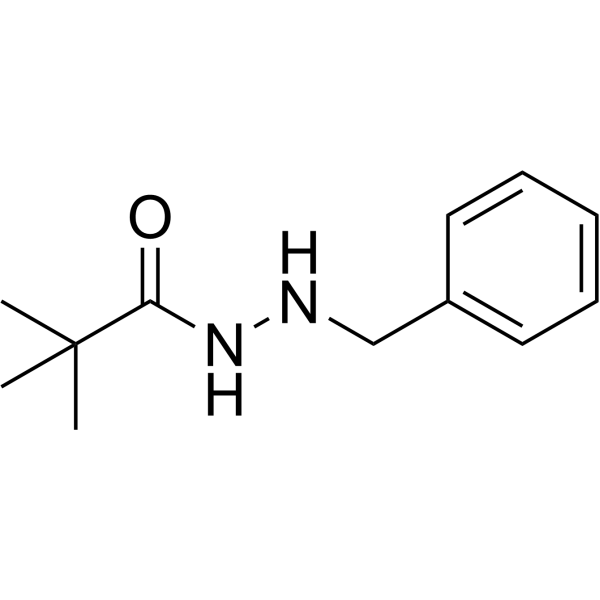
- HY-103500
-
-
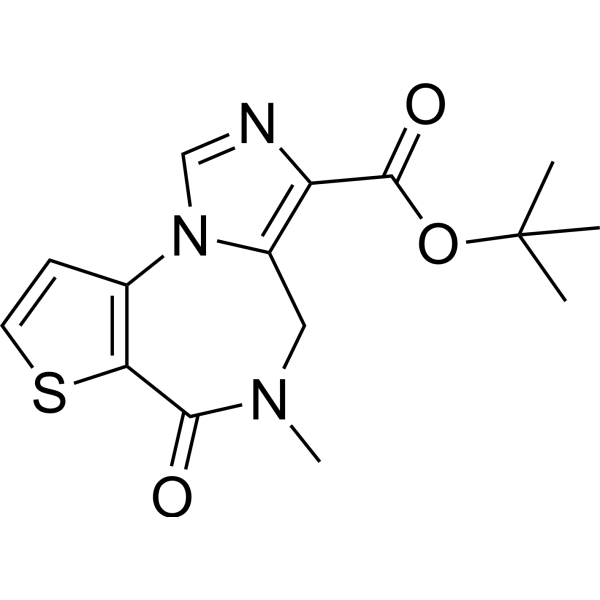
- HY-126848
-
-
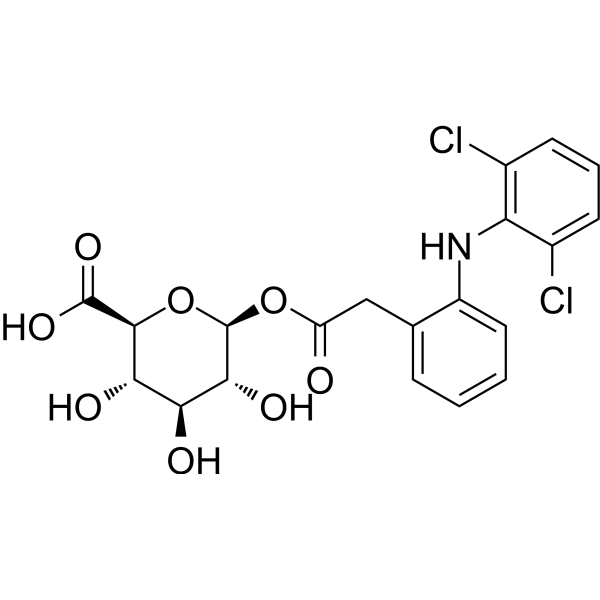
- HY-W047156
-
|
|
Biochemical Assay Reagents
|
Metabolic Disease
|
|
Allantoxanamide is a uricase inhibitor. Allantoxanamide-induced rats serve as animal models for studying purine biosynthesis, drug-induced hyperuricemia and hyperuricosuria, and related nephropathy .
|
-
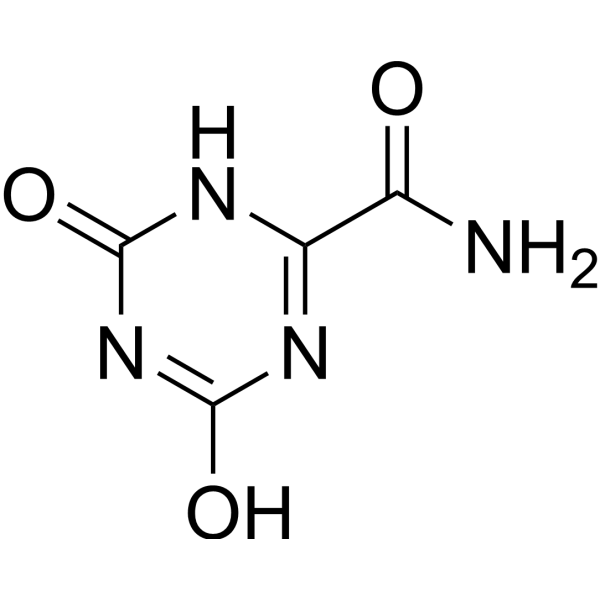
- HY-15402D
-
|
BMS 207940 hydrate
|
Endothelin Receptor
|
Cardiovascular Disease
|
|
Edonentan (BMS 207940) hydrate is a potent and selective antagonist of the endothelin A (ETA) receptor, with a Ki of 10 pM. In rats, Edonentan has superior (100%) oral bioavailbility .
|
-
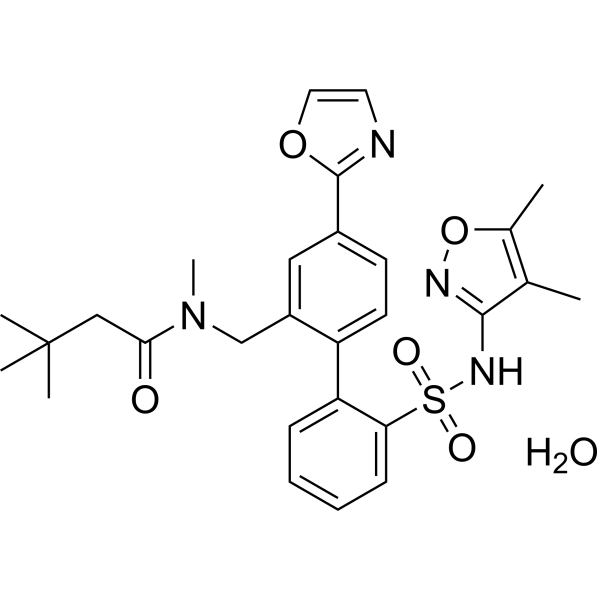
- HY-145454A
-
|
(-)-3-PPP
|
Dopamine Receptor
|
Neurological Disease
|
|
Preclamol is a dopamine (DA) agonist with autoreceptor as well as postsynaptic receptor stimulatory properties. Preclamol inhibits the locomotor activity of mice and rats in low doses .
|
-
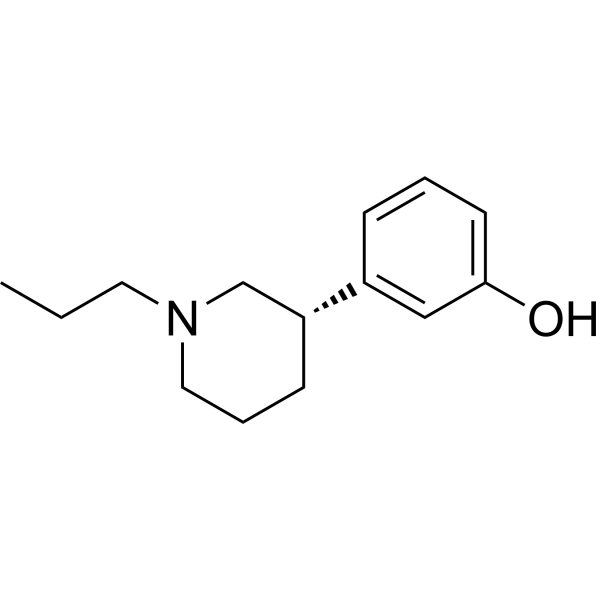
- HY-N7515
-
|
2',4',6'-Trihydroxychalcone
|
Bacterial
|
Inflammation/Immunology
|
|
Pinocembrin chalcone (2',4',6'-Trihydroxychalcone) is an antibacterial compound from Helichrysum Trilineatum. Pinocembrin chalcone can prevent gastric ulcers in rats .
|
-

- HY-19259
-
|
|
|
|
|
GP3269 is a potent, selective, and orally active inhibitor of human adenosine kinase (AK) with an IC50 of 11 nM. GP3269 exhibits anticonvulsant activity in rats .
|
-
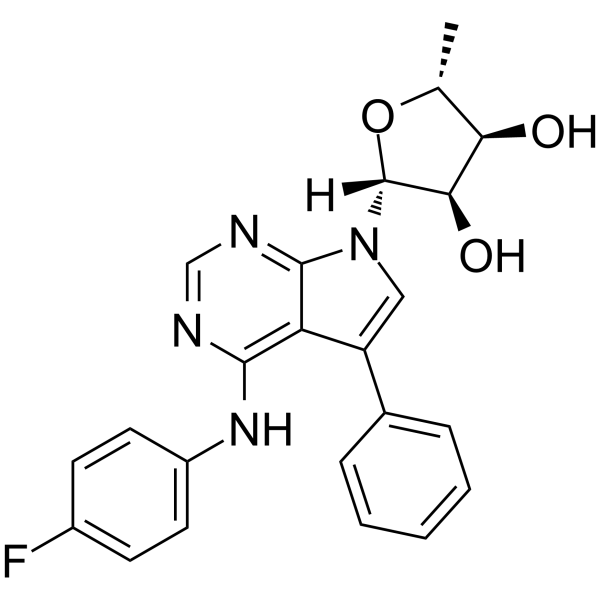
- HY-100174
-
|
NSC294836
|
Others
|
Neurological Disease
|
|
W-2429 (NSC294836) is considerably more effective than acetylsalicylic acid in inhibiting carrageenan-induced edema and in reducing brewer's yeast-induced fever in rats .
|
-
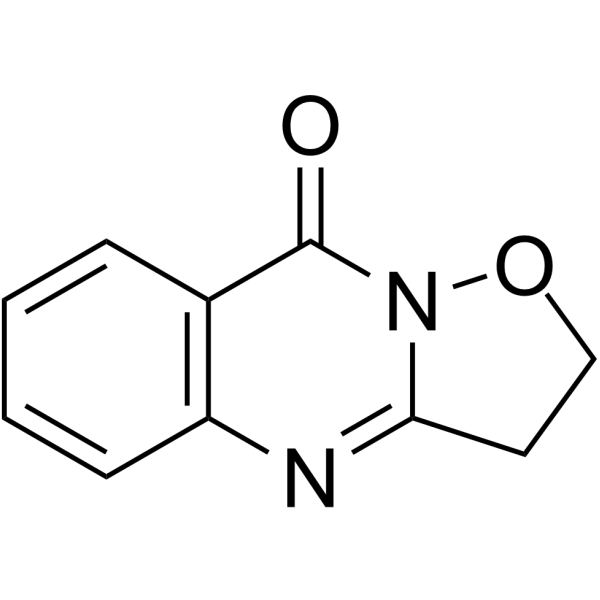
- HY-P1742
-
|
|
Opioid Receptor
|
Metabolic Disease
|
|
Gluten Exorphin B5 is an exogenous opioid peptides derived from wheat gluten, acts on opioid receptor, increases postprandial plasma insulin level in rats .
|
-
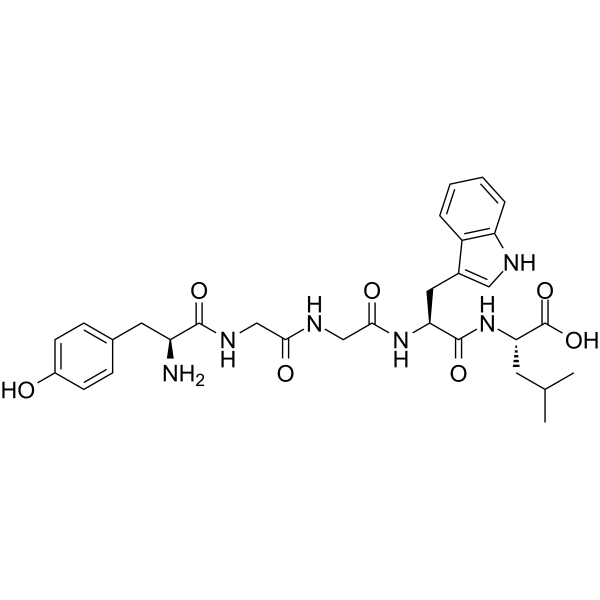
- HY-121565
-
|
|
Others
|
Metabolic Disease
Endocrinology
|
|
SaRI 59-801 is an orally effective hypoglycemic compound. SaRI 59-801 decreases blood glucose in several species and to elevate plasma insulin in rats and mice .
|
-
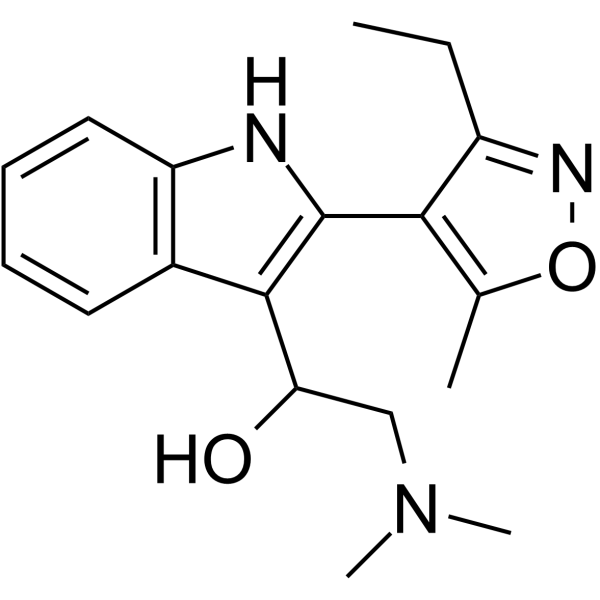
- HY-145454
-
|
(+)-3-PPP
|
Dopamine Receptor
|
Neurological Disease
|
|
(R)-Preclamol is a dopamine (DA) agonist with autoreceptor as well as postsynaptic receptor stimulatory properties. (R)-Preclamol inhibits the locomotor activity of mice and rats in low doses .
|
-
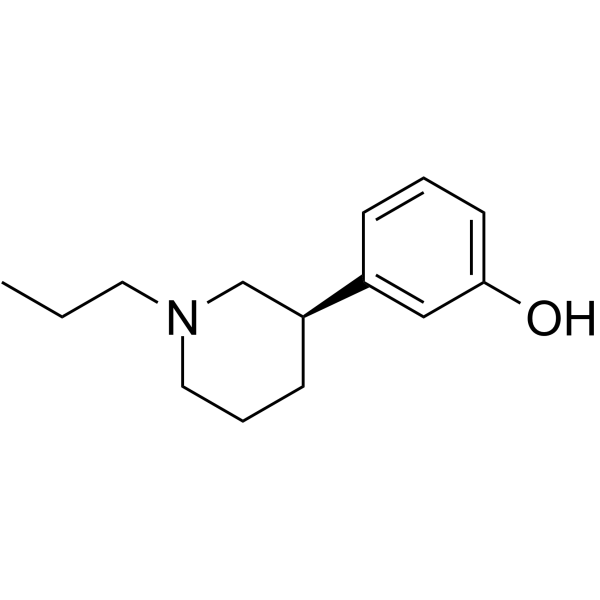
- HY-N0157S1
-
|
6-Carboxyuracil-13C,15N2 monohydrate; Vitamin B13-13C,15N2 monohydrate
|
Nucleoside Antimetabolite/Analog
Endogenous Metabolite
|
Metabolic Disease
|
|
Orotic acid- 13C, 15N2 (monohydrate) is the 13C and 15N labeled Orotic acid[1]. Orotic acid (6-Carboxyuracil), a precursor in biosynthesis of pyrimidine nucleotides and RNA, is released from the mitochondrial dihydroorotate dehydrogenase (DHODH) for conversion to UMP by the cytoplasmic UMP synthase enzyme. Orotic acid is a marker for measurement in routine newborn screening for urea cycle disorders. Orotic acid can induce hepatic steatosis and hepatomegaly in rats[2][3][4].
|
-

- HY-14121
-
-
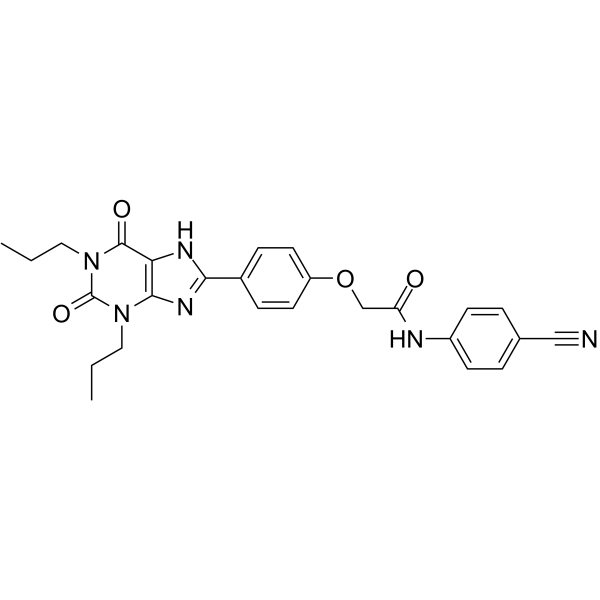
- HY-D0256
-
|
Chlorazol Black E; Ferristatin II disodium; C.I. 30235
|
DNA/RNA Synthesis
|
Others
|
|
Direct Black 38 (Chlorazol Black E) is an azo dye. Direct Black 38 induces unscheduled DNA synthesis in liver and micronucleus in bone marrow of rats in vivo .
|
-
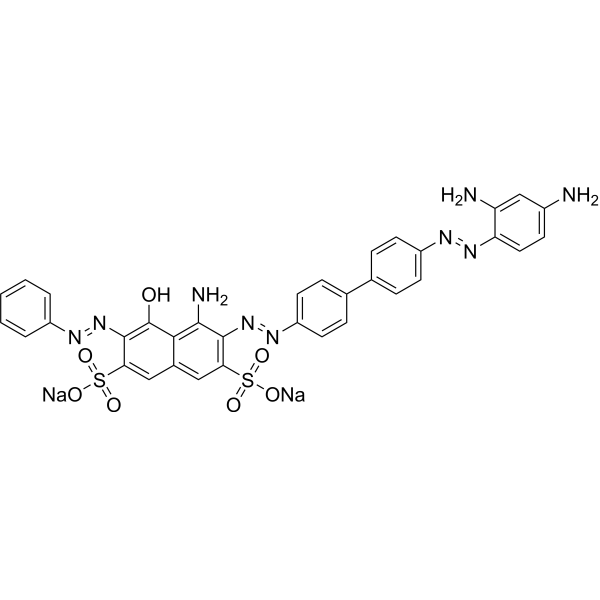
- HY-130704
-
|
|
Calcium Channel
|
Metabolic Disease
|
|
Isotachysterol 3 is an analog of 1,25-dihydrox Vitamin D3. Isotachysterol 3 stimulates intestinal calcium transport and bone calcium mobilization in anephric rats .
|
-
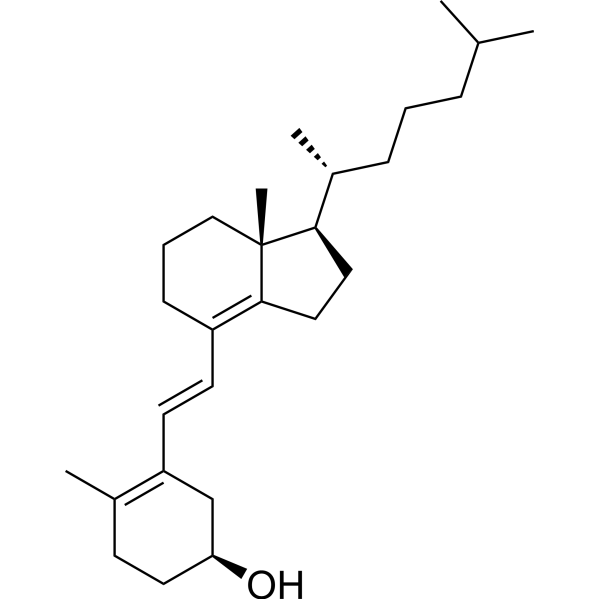
- HY-133610
-
|
|
Others
|
Others
|
|
3,4,6-trichlorocatechol (TCC) is the metabolite produced by industrial pollutant through post-mitochondrial liver fraction from Aroclor-1254 induced rats .
|
-
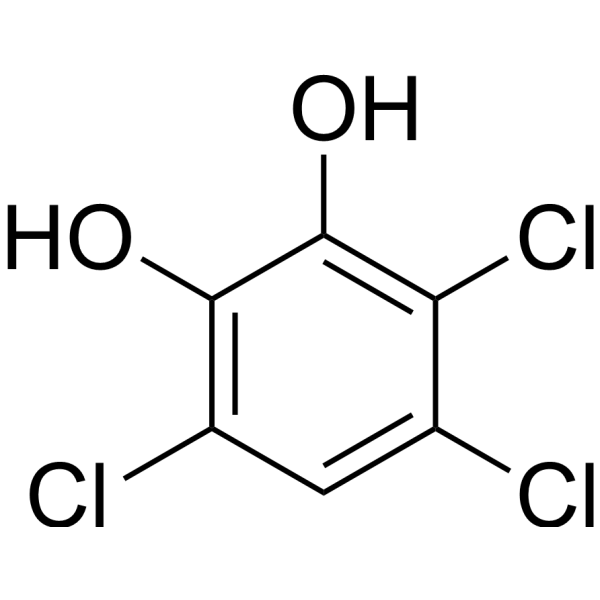
- HY-103424
-
|
|
Dopamine Receptor
|
Neurological Disease
|
|
A-412997 dihydrochloride is a selective dopamine D4 receptor agonist. A-412997 dihydrochloride improves cognitive performance in rats and can be used in the research of psychiatric diseases .
|
-
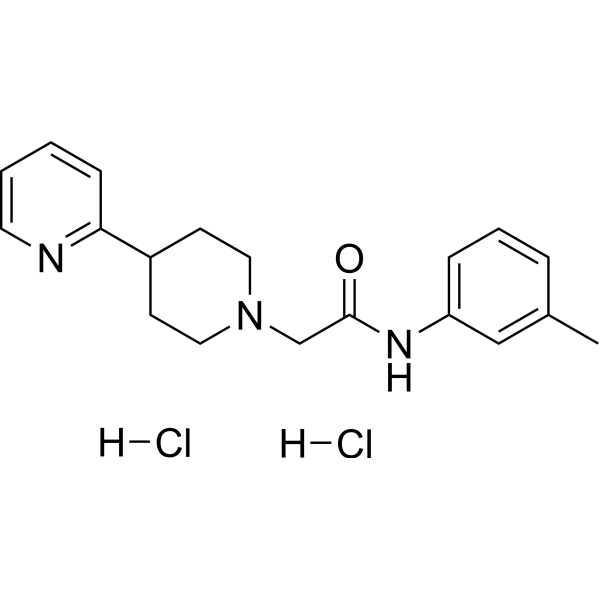
- HY-155042
-
|
|
Angiotensin Receptor
|
Cardiovascular Disease
|
|
Antihypertensive agent 3 (compound 4a) is an antagonis of angiotensin II receptor 1. Antihypertensive agent 3 exhibits antihypertensive activity in a spontaneously hypertensive rats (SHRs) model .
|
-
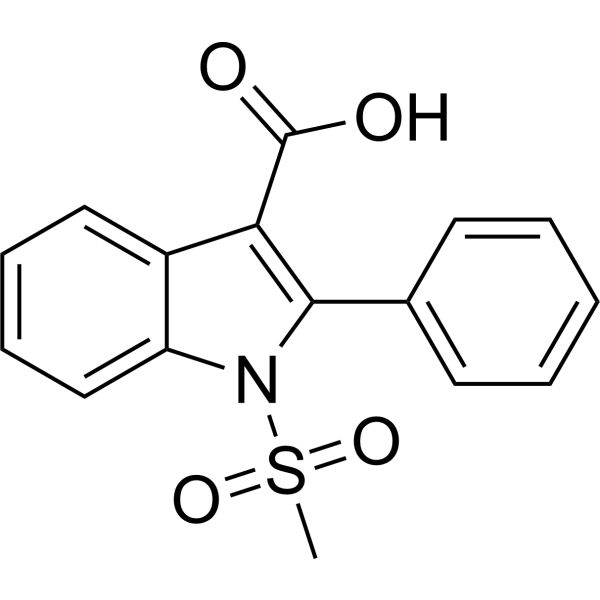
- HY-W751152
-
|
|
Others
|
Cancer
|
|
α,β-Thujone is a component of the essential oils of some plants. α,β-Thujone causes cancers in male rats and induces seizures in the highest doses .
|
-

- HY-148226
-
-
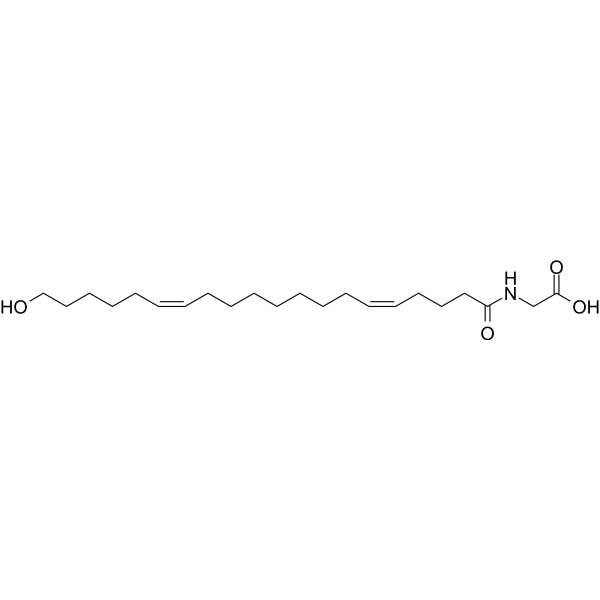
- HY-143444
-
|
|
JAK
|
Inflammation/Immunology
|
|
JAK-IN-20 is a potent, pan and orally active JAK inhibitor with an IC50s of 7 nM, 5 nM, 14 nM for JAK1, JAK2, JAK3, respectively. JAK-IN-20 shows excellent pharmacokinetics and displays anti-inflammatory efficacy in vivo .
|
-
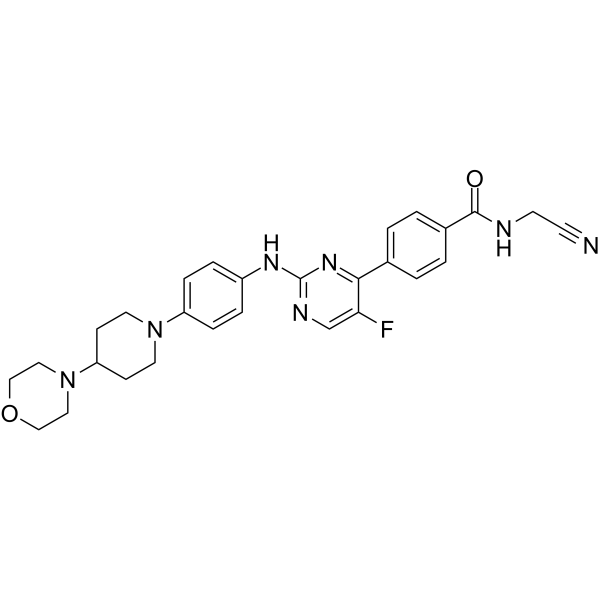
- HY-118470
-
|
Butoxamin hydrochloride
|
Adrenergic Receptor
|
Endocrinology
|
|
Butaxamine (Butoxamin) hydrochloride is a specific β2-adrenergic receptor blocker. Butaxamine hydrochloride inhibits the decreases in urine volume in ethanol-anesthetized, water-diuretic rats .
|
-
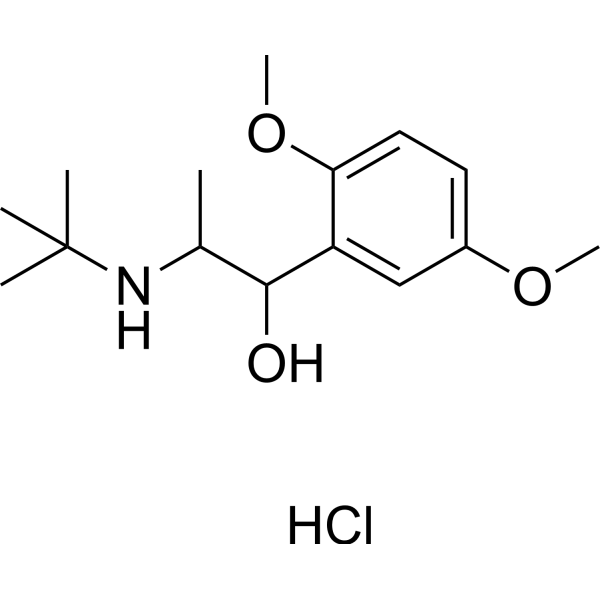
- HY-103232
-
|
|
mGluR
|
Neurological Disease
|
IEM-1925 bromide is an orally active glutamate receptor antagonist, increases the latent period and decreases the duration of status epilepticus in rats in a lithium-pilocarpine model of epilepsy .
|
-
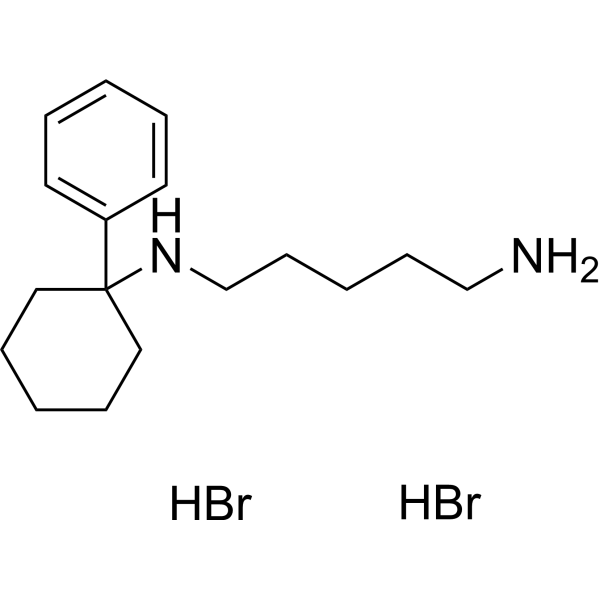
- HY-100987
-
|
|
|
|
|
Lauroylcarnitine chloride enhances the absorption of salmon calcitonin in rats. Also in determining in situ bioavailability, increased availability of Lucifer yellow and decreased expression of claudin-4 protein in the colon .
|
-
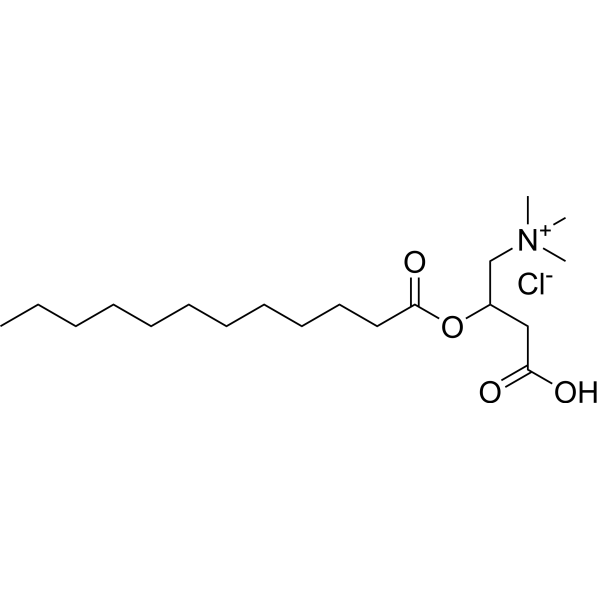
- HY-146429
-
|
|
Others
|
Metabolic Disease
|
|
NaPi2b-IN-3 (compound 5) is a potent sodium-dependent transport protein 2b (SLC34A2, NaPi2b) inhibitor with IC50s of 71 nM and 28 nM for human NaPi2b and rat NaPi2b, respectively. NaPi2b-IN-3 can be used for researching hyperphosphatemia .
|
-

- HY-128060
-
-
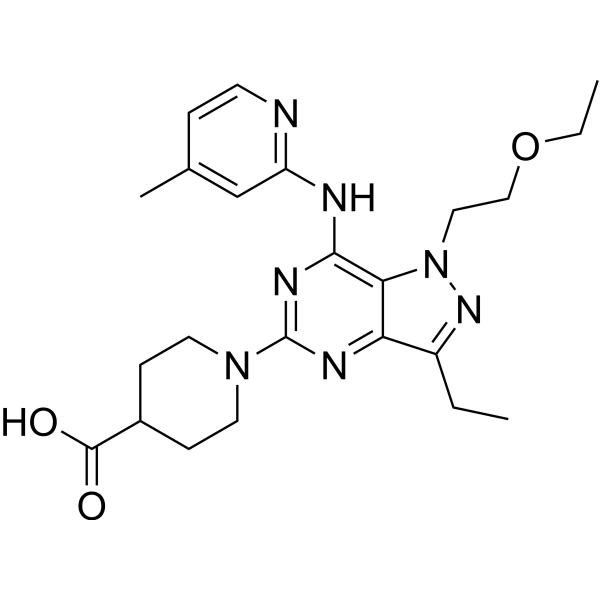
- HY-162398
-
|
|
CDK
|
Inflammation/Immunology
|
|
LQ23 is a selective inhibitor for CDC2-like kinase 2 (CLK2) with an IC50 of 1.4 nM. LQ23 exhibits anti-inflammatory activity .
|
-

- HY-162399
-
|
|
PD-1/PD-L1
STAT
|
Inflammation/Immunology
|
|
PD-L1-IN-6 (Compound 16) is an orally active inhibitor for PD-L1 expression in neutrophil by targeting STAT3 with KD of 90.5 nmol/L. PD-L1-IN-6 promotes neutrophil-mediated antifungal immunoresponse .
|
-
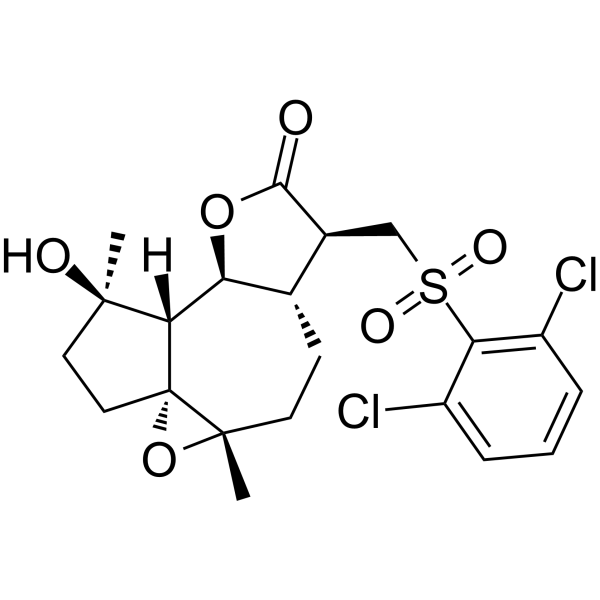
- HY-163443
-
|
|
PPAR
|
Others
|
|
PPAR agonist 4 (Compound 12) is an orally active agonist for peroxisome proliferator-activated receptor (PPAR), which activates PPARα, PPARδ and PPARγ with EC50s of 0.7, 0.7 and 1.8 μM, respectively. PPAR agonist 4 exhibits anti-liver fibrosis efficacy .
|
-

- HY-N8931
-
|
Lithospermic acid monomethyl ester
|
Akt
|
Neurological Disease
|
|
Monomethyl lithospermate activates the PI3K/AKT pathway, which plays a protective role in nerve injury. Monomethyl lithospermate can improve the survival ability of SHSY-5Y cells, inhibit the breakdown of mitochondrial membrane potential (MMOP) and inhibit cell apoptosis. Monomethyl lithospermate also reduced the level of oxidative stress in the brain tissue of rats with middle artery occlusion (MCAO) and improved nerve damage in rats with ischemic stroke (IS) .
|
-

- HY-153369
-
|
|
Guanylate Cyclase
|
Cardiovascular Disease
Neurological Disease
|
|
BAY-747 is an orally active and brain-penetrant stimulator of soluble guanylate cyclase (sGC). BAY-747 reverses L-NAME induced memory impairments and enhances cognition of rats in the object location task (OLT). BAY-747 also decreases blood pressure in both conscious normotensive and spontaneously hypertensive rats (SHR). BAY-747 improves function of the skeletal muscle associated with Duchenne muscular dystrophy (DMD) in mdx/mTRG2 mice model .
|
-
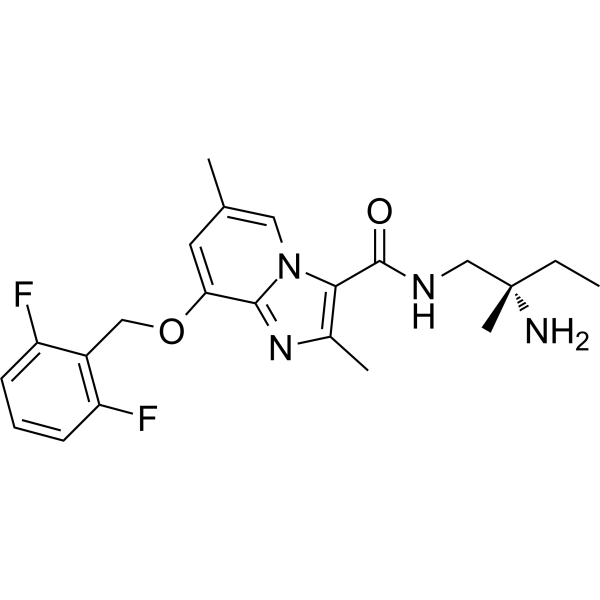
- HY-119304
-
-

- HY-N9363
-
|
|
Others
|
Metabolic Disease
|
|
Corymbiferin is one of active constituents, responsible for anti-diabetic properties. Corymbiferin improves antioxidant capacity and carbohydrate metabolism in diabetic rats, along with the improvement of histopathology of livers and pancreatic β cells .
|
-

- HY-118383
-
-
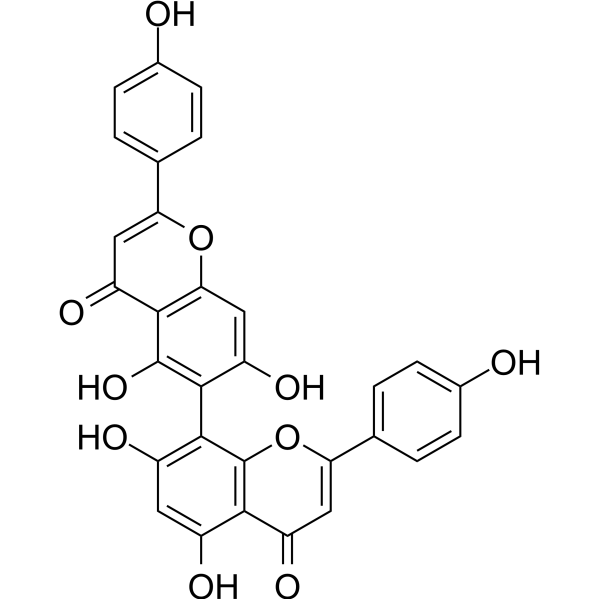
- HY-119953
-
|
|
mAChR
|
Neurological Disease
|
|
BIBN-99 is a selective, BBB-penetrable and competitive muscarinic M2 receptor antagonist. BIBN-99 improves cognitive performancein rats with traumatic brain injury .
|
-
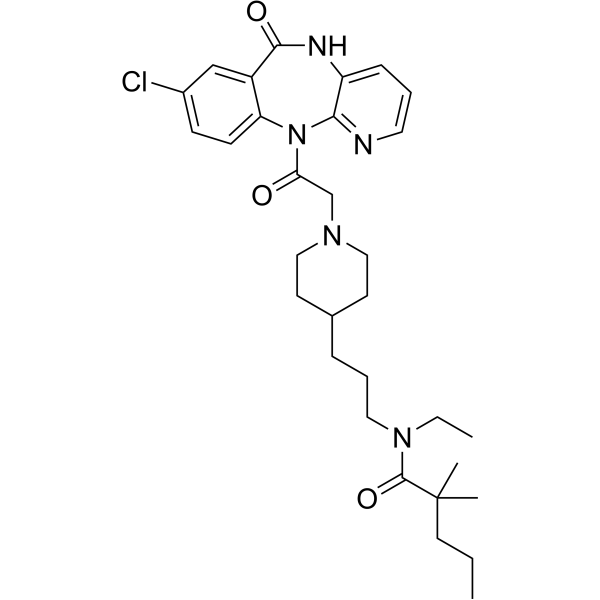
- HY-P4201
-
|
|
Vasopressin Receptor
|
Cardiovascular Disease
|
|
JKC 301 is a selective Endothelin A receptor antagonist. JKC 301 attenuates the pressor effects of nicotine in rats. JKC 301 can be used to study cardiovascular disease caused by smoking .
|
-

- HY-136880
-
|
Sgd 195/78
|
5-HT Receptor
|
Cardiovascular Disease
|
|
Flufylline shows antihypertensive properties in spontaneously hypertensive rats and display antagonism towards 5-HT receptors in various animal models. Flufylline can be used for cardiovascular disease research .
|
-
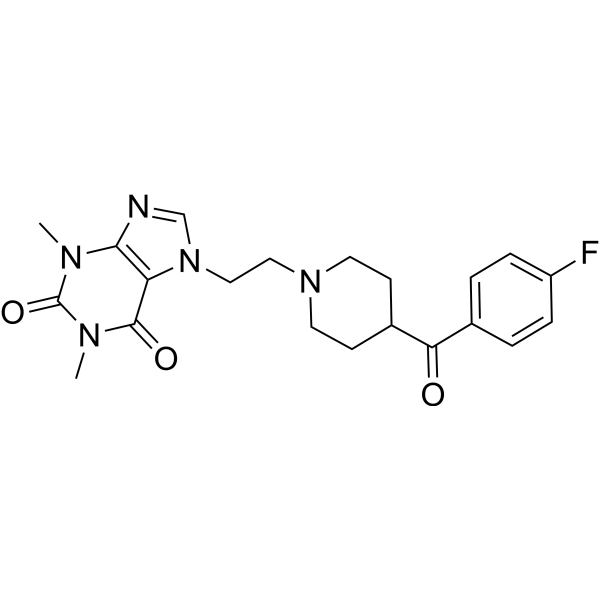
- HY-110270A
-
|
|
TRP Channel
|
Inflammation/Immunology
|
|
RN-9893 Hydrochloride is an orally active antagonist of transient receptor potential vanilloid 4 (TRPV4), with IC50 values of 0.42 and 0.66 μM, for humans and rats, respectively .
|
-
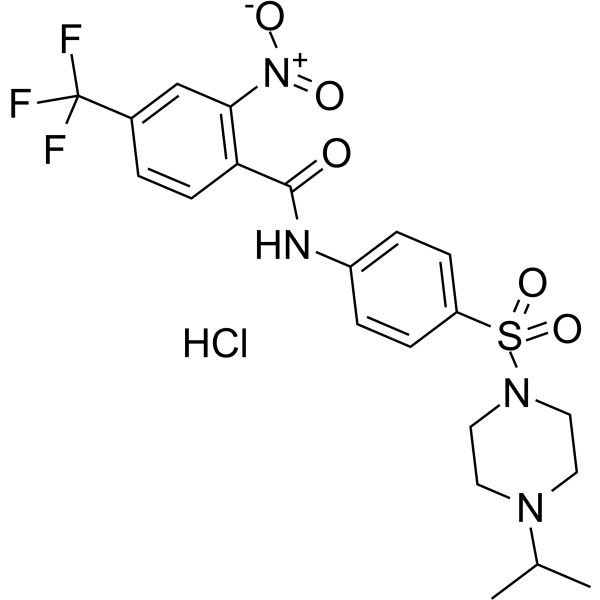
- HY-N6910
-
|
|
Others
|
Metabolic Disease
|
|
Pseudolaric Acid C2, a diterpenoid isolated from Pseudolarix kaempferi, is identified as the specific metabolite of Pseudolaric acid B in plasma, urine, bile and feces after both oral and intravenous administration to rats .
|
-
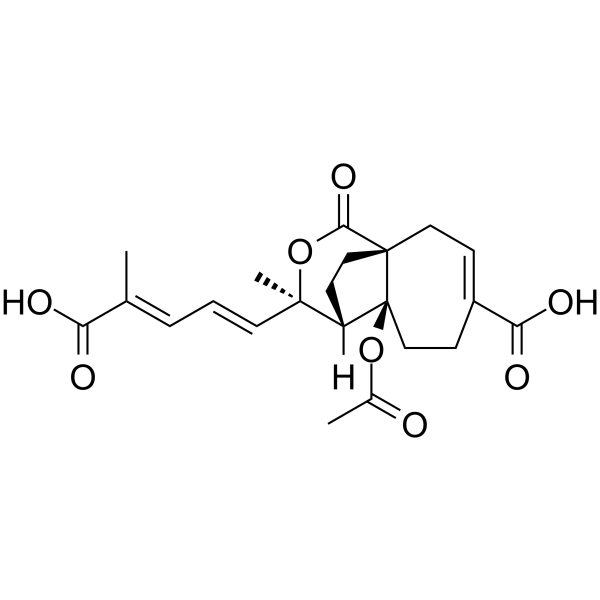
- HY-121401A
-
|
(1R)-(−)-Myrtenal; (−)-(1R,5S)-Myrtenal
|
Akt
|
Metabolic Disease
Cancer
|
|
(−)-Myrtenal ((1R)-(−)-Myrtenal) is an orally active terpene with antitumour activity. (−)-Myrtenal ameliorates hyperglycemia by enhancing GLUT2 through Akt in the skeletal muscle and liver of diabetic rats .
|
-
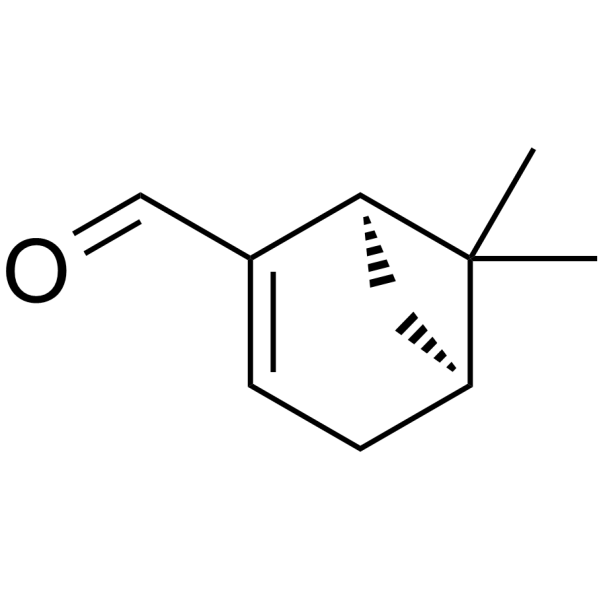
- HY-107176A
-
|
HS-25
|
Others
|
Metabolic Disease
|
|
Hyzetimibe is a cholesterol absorption inhibitor. Hyzetimibe blocks the intestinal absorption of cholesterol and phytol. Hyzetimibe is well tolerated in animal models, with an LDmax 2000 mg/kg in rats and an LDmax 500 mg/kg in rhesus monkeys .
|
-
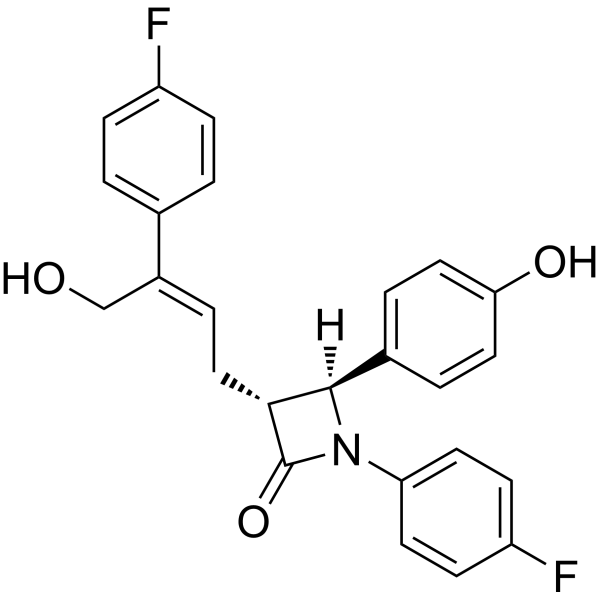
- HY-130325
-
|
|
Others
|
Neurological Disease
|
|
α-Guanidinoglutaric acid is a guanidino compound first found in cobaltinduced epileptogenic focus tissue in the cerebral cortex of cats. α-Guanidinoglutaric acid induces epileptic seizures in rats after intraventricular administration .
|
-

- HY-158030
-
|
|
HDAC
|
Neurological Disease
|
|
HDAC6-IN-37 (compound W5) is an inhibitor of HDAC6 and has neuroprotective effects. HDAC6-IN-37 can restore the morphology of hippocampal neurons, reduce the expression of Aβ, Tau, and p-Tau proteins in the hippocampus of AD rats, and inhibit the formation of senile plaques and neurofibrillary tangles. Thus, HDAC6-IN-37 improves the Aβ/Cu 2+-induced AD model in rats, regulates oxidative stress status, and balances neurotransmitter disorders in brain tissue .
|
-
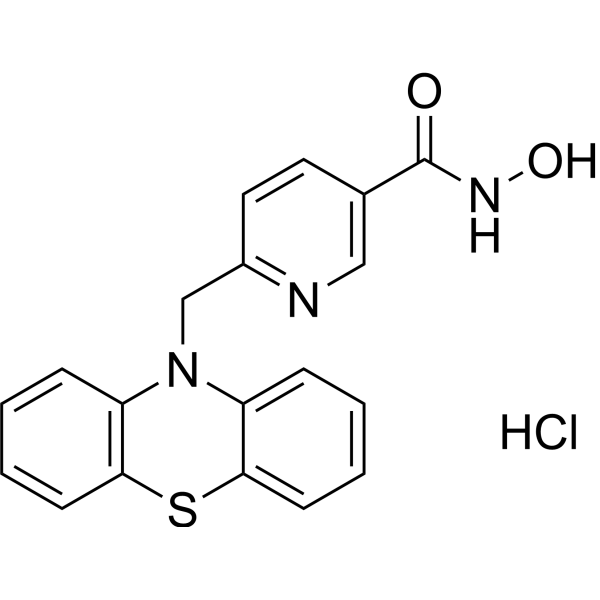
- HY-P1236
-
|
Atrial natriuretic factor (1-28) (rat)
|
Endothelin Receptor
|
Cardiovascular Disease
Endocrinology
|
|
Atrial Natriuretic Peptide (ANP) (1-28), rat is a major circulating form of ANP in rats, potently inhibits Angiotensin II (Ang II)-stimulated endothelin-1 secretion in a concentration-dependent manner.
|
-

- HY-B1971S
-
|
Decamethrin-d5
|
Isotope-Labeled Compounds
Endogenous Metabolite
|
Cancer
|
|
Deltamethrin-d5 is the deuterium labeled Deltamethrin. Deltamethrin (Decamethrin), a neurotoxic pyrethroid insecticide, produces a reversible sequence of motor symptoms in rats involving hind limb rigidity and choreoathetosis[1][2].
|
-
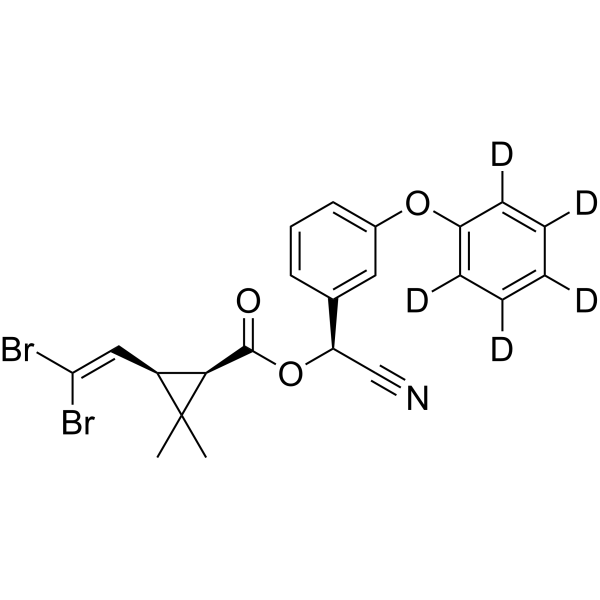
- HY-B1301
-
|
|
|
|
|
Triprolidine hydrochloride monohydrate, a first-generation antihistamine, is an oral active histamine H1 antagonist. Triprolidine hydrochloride monohydrate can be used for the research of allergic rhinitis. Triprolidine hydrochloride monohydrate exhibits spinal motor and sensory block in rats .
|
-

- HY-135761
-
|
|
Fungal
Cholinesterase (ChE)
|
Infection
Neurological Disease
|
|
Penconazole is a typical triazole fungicide, and mainly applied on apples, grapes, and vegetables to control powdery mildew. Penconazole inhibits sterol biosynthesis in fungi. Penconazole decrease AChE activity in the cerebrum and cerebellum of rats .
|
-

- HY-P2497
-
|
|
GCGR
|
Neurological Disease
|
|
Exendin (5-39) is a potent glucagon-like peptide 1 (GLP-1) receptor antagonist. Exendin (5-39) improves memory impairment in β-amyloid protein-treated rats .
|
-

- HY-108038
-
|
|
nAChR
|
Neurological Disease
|
|
ABT-107 is a selective α7 neuronal nicotinic receptor agonist. ABT-107 protects against nigrostriatal damage in rats with unilateral 6-hydroxydopamine lesions .
|
-
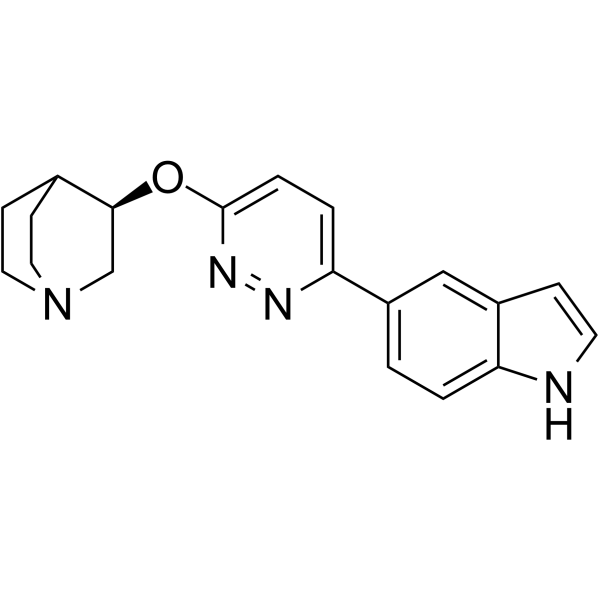
- HY-103510
-
|
|
GABA Receptor
|
Neurological Disease
|
|
TB-21007 is an inverse agonist of α5β3γ2 subunit-containing GABAA receptor with a Ki of 1.6 nM. TB-21007 enhanced spatial memory in rats .
|
-

- HY-111130
-
|
|
Histamine Receptor
mAChR
|
Neurological Disease
Cancer
|
Methapyrilene is a histamine antagonist, a pyridine chemical with anticholinergic activity. Methapyrilene can cause target organ-specific epigenetic alterations, such as a decrease in DNA methylation levels. Methapyrilene induces hepatocellular carcinoma in rats .
|
-
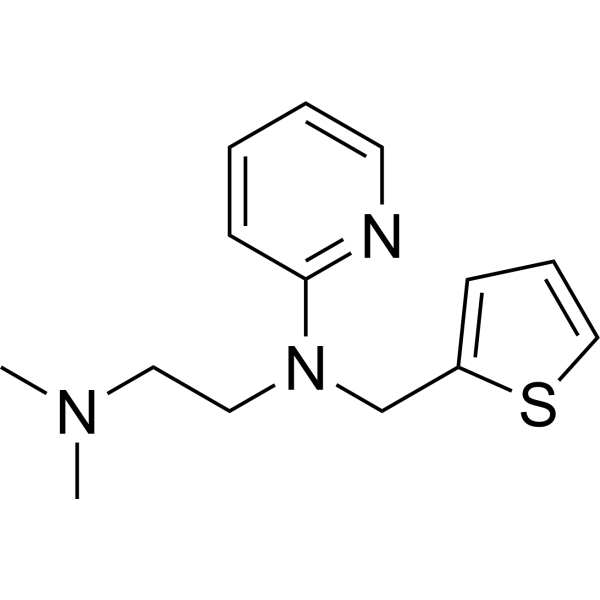
- HY-118388
-
|
|
Prostaglandin Receptor
|
Endocrinology
|
|
AS604872 is an orally active, potent and selective prostaglandin F2α receptor (FP) antagonist with a Ki of 35 nM in humans, 158 nM in rats and 323 nM in mice. AS604872 inhibits contractions and delays labour .
|
-
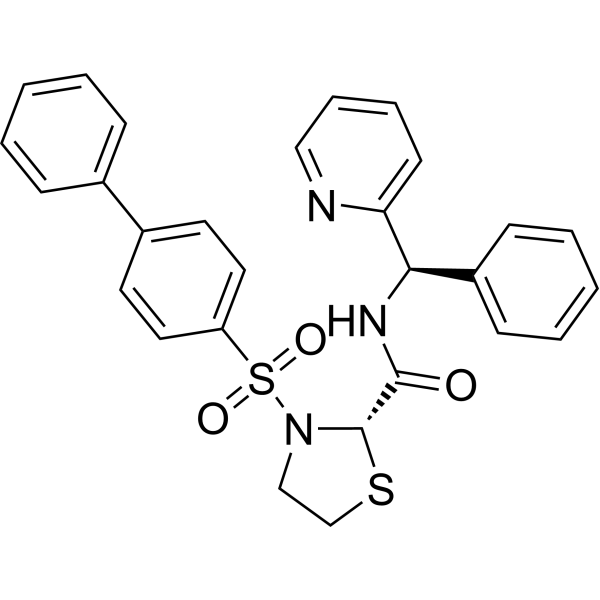
- HY-129315
-
|
N-Deacetylketoconazole; R-39519
|
Bacterial
Fungal
|
Infection
|
|
Deacylketoconazole (N-Deacetylketoconazole; R-39519) is an orally active metabolite of Ketoconazole (HY-B0105). Deacylketoconazole exhibits antifungal and antibacterial activity. Deacylketoconazole is cytotoxic in rats hepatocyte .
|
-
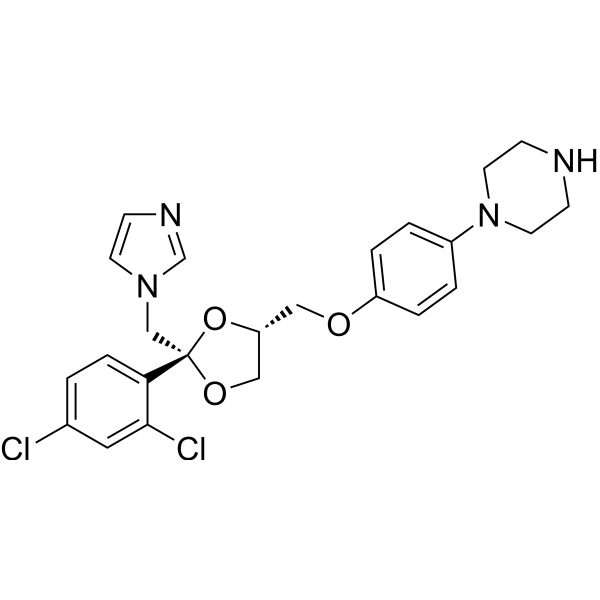
- HY-110161
-
|
|
Somatostatin Receptor
|
Cardiovascular Disease
Endocrinology
|
|
sst2 Receptor agonist-1 is a potent somatostatin receptor subtype 2 (sst2) agonist with a Ki value of 0.025 nM and a cAMP IC50 value of 4.8 nM. sst2 Receptor agonist-1 can inhibit rat growth hormone (GH) secretion and ocular neovascular lesion formation. Antiangiogenic effect .
|
-

- HY-14127
-
R121919
1 Publications Verification
NBI30775
|
CRFR
|
Neurological Disease
Endocrinology
|
|
R121919 (NBI30775) is a potent and selective CRF1R antagonist with a Ki of 2 to 5 nM. R121919 has antidepressant and anxiolytic effects. R121919 alleviates defensive withdrawal in rats .
|
-

- HY-P1236A
-
|
Atrial natriuretic factor (1-28) (rat) TFA
|
Endothelin Receptor
|
Cardiovascular Disease
Endocrinology
|
|
Atrial Natriuretic Peptide (ANP) (1-28), rat (TFA) is a major circulating form of ANP in rats, potently inhibits Angiotensin II (Ang II)-stimulated endothelin-1 secretion in a concentration-dependent manner.
|
-

- HY-107248
-
|
|
Others
|
Inflammation/Immunology
|
|
Escin IIa, isolated from horse chestnut, the seeds of Aesculus hippocastanum L., has positive effects on acute inflammation in animals. Escin IIa has gastroprotections on ethanol-induced gastric mucosal lesions in rats .
|
-
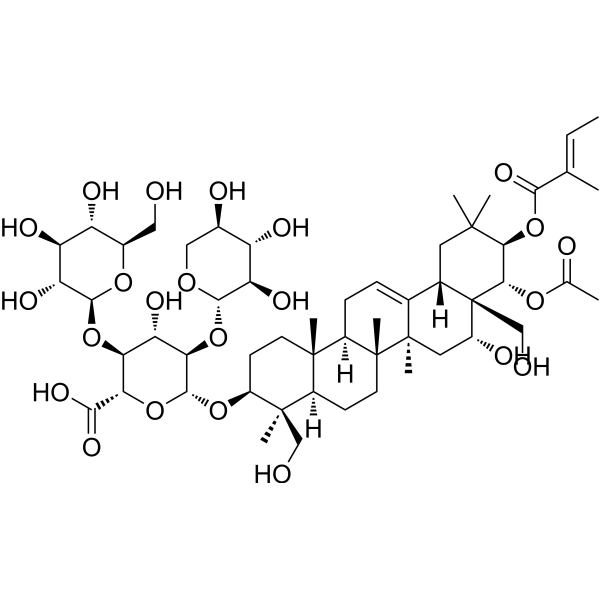
- HY-119061
-
|
|
5-HT Receptor
|
Neurological Disease
|
|
SB-357134 is a potent, selective, brain penetrant, and orally active 5-HT6 receptor antagonist. SB-357134 enhances memory and learning and increases seizure threshold in rats .
|
-
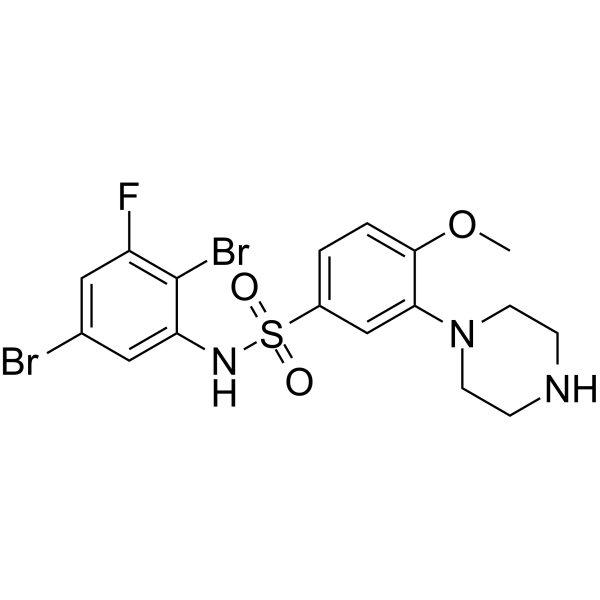
- HY-156972
-
|
|
Opioid Receptor
|
Metabolic Disease
|
|
NOP agonist-1(compound 4) is a nociceptin opioid receptor (NOP) partial agonist. NOP agonist-1attenuate parkinsonian disabilities in 6-OHDA hemilesioned rats .
|
-
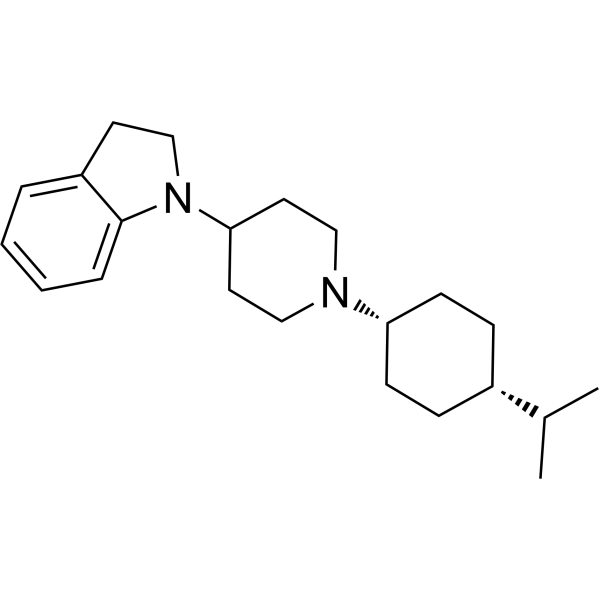
- HY-115645
-
|
NBI30775 hydrochloride
|
CRFR
|
Neurological Disease
Metabolic Disease
|
|
R121919 (NBI30775) hydrochloride is a potent and selective CRF1R antagonist with a Ki of 2 to 5 nM. R121919 hydrochloride has antidepressant and anxiolytic effects. R121919 hydrochloride alleviates defensive withdrawal in rats .
|
-
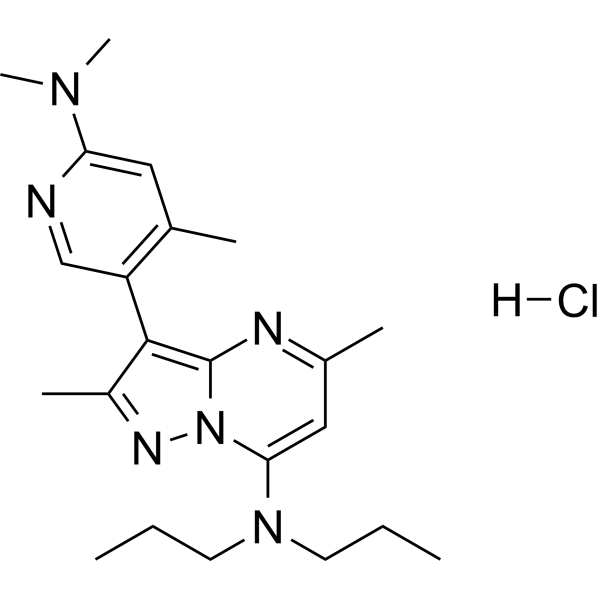
- HY-15543A
-
|
|
5-HT Receptor
|
Neurological Disease
|
|
CP-809101 hydrochloride is a potent and highly selective 5-HT2C receptor agonist, with pEC50s of 9.96, 7.19 and 6.81 M for human 5HT2C, 5HT2B and 5HT2A receptor. CP-809101 hydrochloride inhibits conditioned avoidance responding in rats and antagonizes both PCP (phencyclidine hydrochloride)- and d-amphetamine-induced hyperactivity. CP-809101 hydrochloride also reduces food and nicotine dependence in rats, can be used in studies of antipsychotic and nicotine dependence .
|
-

- HY-15543
-
|
|
5-HT Receptor
|
Neurological Disease
|
|
CP-809101 is a potent and highly selective 5-HT2C receptor agonist, with pEC50s of 9.96, 7.19 and 6.81 M for human 5HT2C, 5HT2B and 5HT2A receptor. CP-809101 inhibits conditioned avoidance responding in rats and antagonizes both PCP (phencyclidine hydrochloride)- and d-amphetamine-induced hyperactivity. CP-809101 also reduces food and nicotine dependence in rats, can be used in studies of antipsychotic and nicotine dependence .
|
-

- HY-106281
-
|
PPD 10558
|
HMG-CoA Reductase (HMGCR)
|
Cardiovascular Disease
Metabolic Disease
|
|
Bemfivastatin (PPD 10558) is an orally active, HMG-CoA Reductase (HMGCR) inhibitor, also known as Statin. Bemfivastatin enhances the activity of liver extraction. Bemfivastatin exhibits little developmental toxicity effects in pregnant rats and rabbits via daily oral doses during organogenesis period. The no observed adverse effect level (NOAEL) are ≥320 mg/kg/day for rats developmental toxicity, 12.5 mg/kg/day for rabbits maternal toxicity, and 25 mg/kg/day for rabbits developmental toxicity, respectively. Bemfivastatin can be used for research on Statin-related hypercholesterolemic myalgia with inability to tolerate statins .
|
-
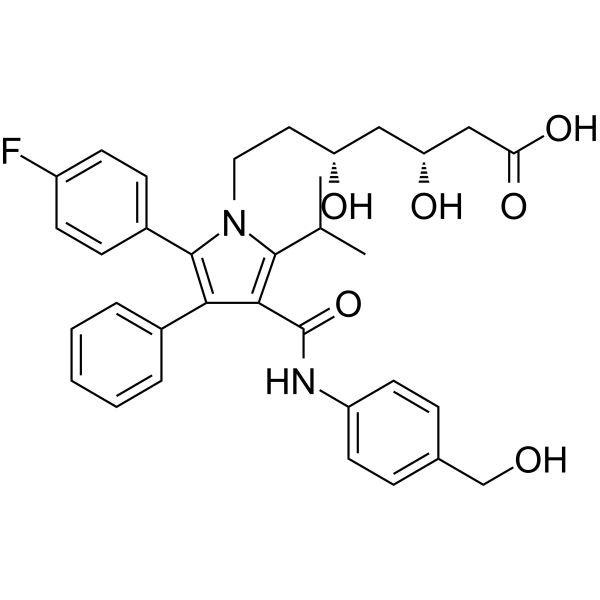
- HY-B0235
-
|
|
Others
|
Metabolic Disease
|
|
Trichlormethiazide is an orally active thiazide diuretic, with antihypertensive effect. Trichlormethiazide increases urine volume (UV), Na and K excretion and tends to improve the depressed creatinine clearance (CCRE) in acute renal failure rats model .
|
-

- HY-108582
-
|
|
Potassium Channel
|
Cardiovascular Disease
|
|
Y-27152, a proagent of the KATP (Kir6) channel opener Y-26763, is a long-acting K+ channel opener with less tachycardia: antihypertensive effects in hypertensive rats and dogs in conscious state .
|
-

- HY-N0723
-
|
|
Others
|
Metabolic Disease
|
|
Neomangiferin is a natural C-glucosyl xanthone isolated from m the dried rhizome of Anemarrhena asphodeloides. Neomangiferin has significant therapeutic effects on high-fat diet-induced nonalcoholic fatty liver disease (NAFLD) in rats .
|
-

- HY-N2531
-
|
|
Autophagy
|
Cardiovascular Disease
|
|
Notoginsenoside Fc, a protopanaxadiol- (PPD-) type saponin isolated from the leaves of Panax notoginseng, effectively counteracts platelet aggregation. Notoginsenoside Fc can accelerate reendothelialization following vascular injury in diabetic rats by promoting autophagy .
|
-

- HY-121827
-
|
|
Cannabinoid Receptor
|
Metabolic Disease
|
|
LH-21 is a potent in vivo neutral cannabinoid CB1 receptor antagonist. LH-21 reduces food intake and body weight gain in obese Zucker rats.
, and displays efficacy as a feeding inhibitor .
|
-

- HY-B0235A
-
|
|
Others
|
Metabolic Disease
|
|
Trichlormethiazide sodium is an orally active thiazide diuretic, with antihypertensive effect. Trichlormethiazide sodium increases urine volume (UV), Na and K excretion and tends to improve the depressed creatinine clearance (CCRE) in acute renal failure rats model .
|
-
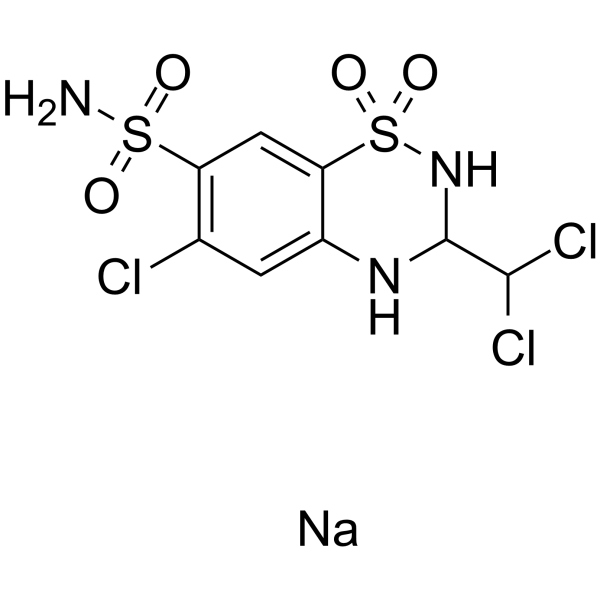
- HY-107644
-
|
|
mAChR
|
Cardiovascular Disease
|
|
AQ-RA 741 is a potent and selective M 2 antagonist. AQ-RA 741 inhibits the vagally or agonist-induced bradycardia in rats, cats and guinea-pigs. AQ-RA 741 is used in bradycardiac disorders research .
|
-

- HY-131542
-
|
|
Aldose Reductase
Apoptosis
|
Metabolic Disease
|
|
APPA is an aldose reductase inhibitor. APPA can effectively prevent apoptosis and the symptoms of Streptozotocin (HY-13753)-induced diabetes by inhibiting the polyol pathway in rats. APPA has the potential for diabetic nephropathy (DN) research .
|
-
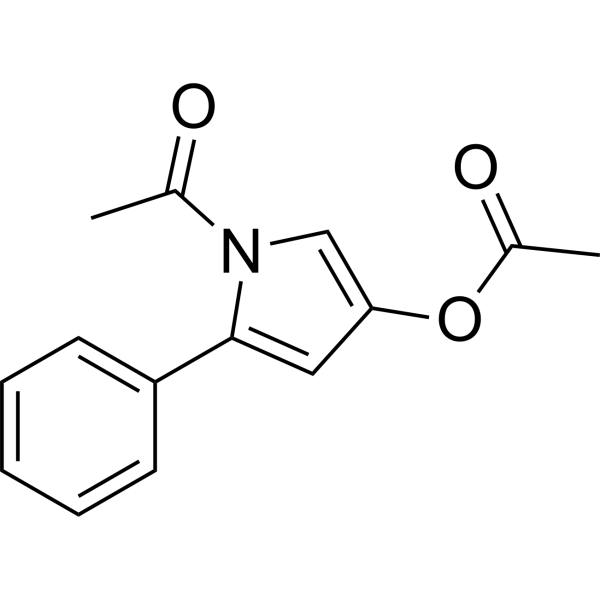
- HY-W102714
-
|
CDTA
|
Others
|
Metabolic Disease
|
|
1,2-Cyclohexylenedinitrilotetraacetic acid (CDTA) is a chelating agent. 1,2-Cyclohexylenedinitrilotetraacetic acid has an ability to remove manganese from brain and liver (in vivo) and their sub-cellular fractions (in vitro), of rats pretreated with manganese sulphate .
|
-
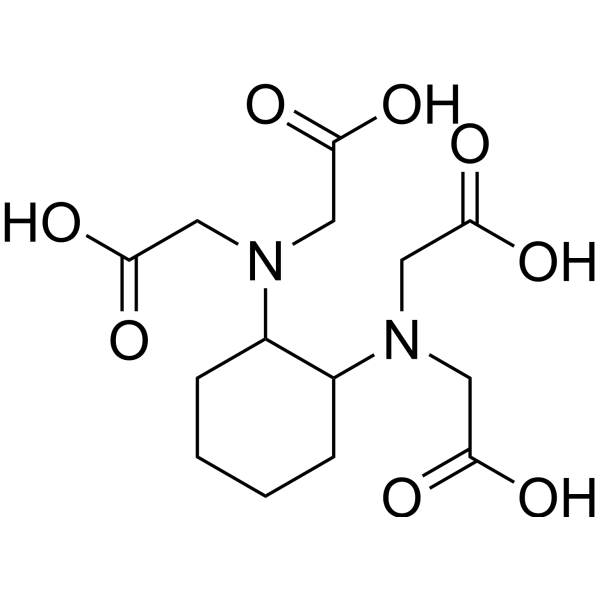
- HY-121775
-
|
|
Dopamine Receptor
|
Neurological Disease
|
|
F-00217830 is an agonist ofDopamine D2 receptor. PF-00217830 inhibits of spontaneous locomotor activity and 2,5-dimethoxy-4-iodoamphetamine-induced head twitches in rats .
|
-

- HY-127166
-
|
O10-Demethylcolchicine
|
Microtubule/Tubulin
|
Inflammation/Immunology
|
|
Colchiceine is one of several metabolites of the anti-gout medication Colchicine (HY-16569). Colchicine is a tubulin inhibitor and a microtubule disrupting agent, and may protect rats from developing liver injury and fibrosis .
|
-
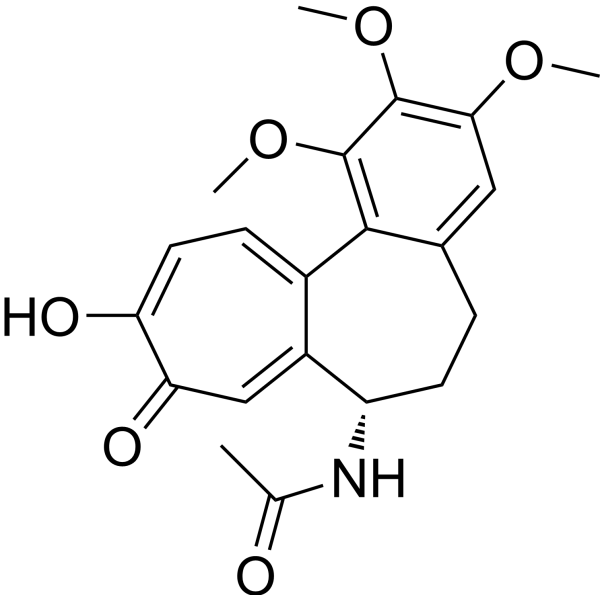
- HY-10900
-
-
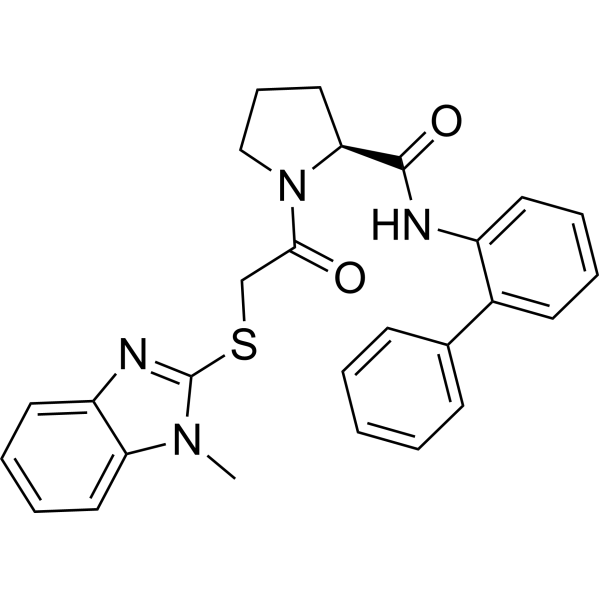
- HY-N0691
-
|
Schizandrin; Schizandrol; Schizandrol-A
|
Autophagy
|
Inflammation/Immunology
Cancer
|
|
Schisandrin (Schizandrin), a dibenzocyclooctadiene lignan, is isolated from the fruit of Schisandra chinensis Baill. Schisandrin exhibits antioxidant, hepatoprotective, anti-cancer and anti-inflammatory activities. Schisandrin also can reverses memory impairment in rats .
|
-
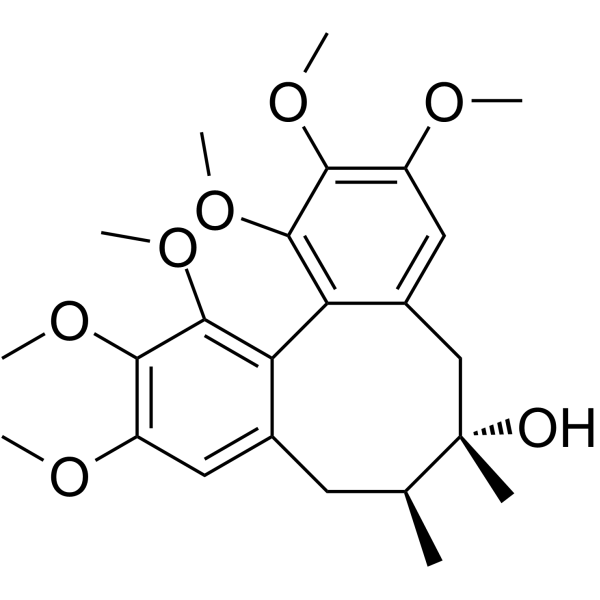
- HY-112612
-
|
|
GPR88
|
Neurological Disease
|
|
RTI-13951-33 is a potent, selective, and brain-penetrant GPR88 agonist, with an EC50 of 25 nM in GPR88 cAMP functional assay. RTI-13951-33 reduces alcohol reinforcement and intake behaviors in rats .
|
-
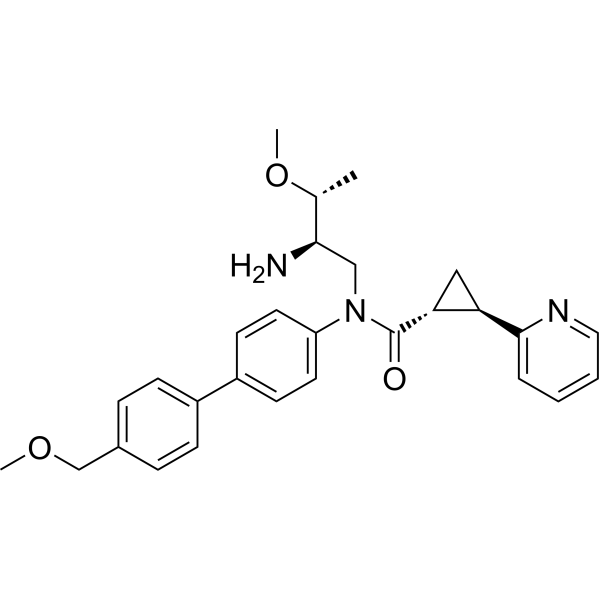
- HY-112612A
-
|
|
GPR88
|
Neurological Disease
|
|
RTI-13951-33 hydrochloride is a potent, selective, and brain-penetrant GPR88 agonist, with an EC50 of 25 nM in GPR88 cAMP functional assay. RTI-13951-33 hydrochloride reduces alcohol reinforcement and intake behaviors in rats .
|
-

- HY-N2196
-
|
|
|
|
|
Ajugasterone C is an ecdysteroid isolated from Leuzea carthamoides. Ajugasterone C shows significant inhibitory effect at 100 mg/kg dose on rat paw oedema development due to Carrageenan-induced inflammation in Sprague Dawley rats .
|
-
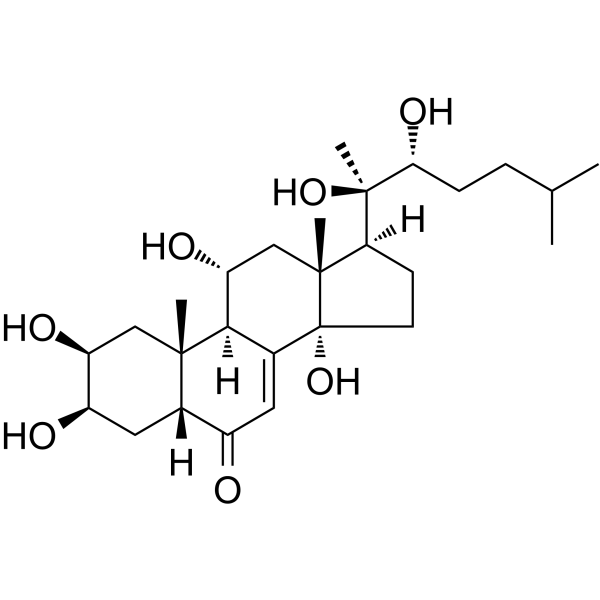
- HY-107593
-
|
|
IKK
|
Inflammation/Immunology
|
|
PS-1145 (dihydrochloride) is a potent IκB kinase-2 inhibitor with an IC50 value of 88 nM. PS-1145 (dihydrochloride) inhibits activity of NF-κB by blocking IκB kinase phosphorylation in tumor-bearing rats .
|
-
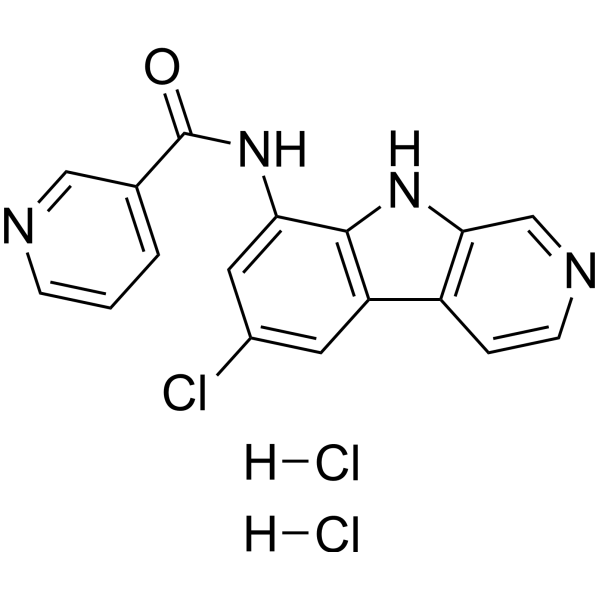
- HY-N9113
-
|
|
Others
|
Cardiovascular Disease
|
|
1,3,5,6-Tetrahydroxyxanthone is a natural xanthone that can be isolated from Garcinia achachairu Rusby (Clusiaceae) branches. 1,3,5,6-Tetrahydroxyxanthone induces diuresis and saluresis in normotensive and hypertensive rats .
|
-

- HY-148558
-
|
|
P2X Receptor
|
Neurological Disease
|
|
P2X7 receptor antagonist-3 is a potent P2X7 receptor antagonist with P2X7R IC50 values of 4.2 nM in humans and 6.8 nM in rats .
|
-
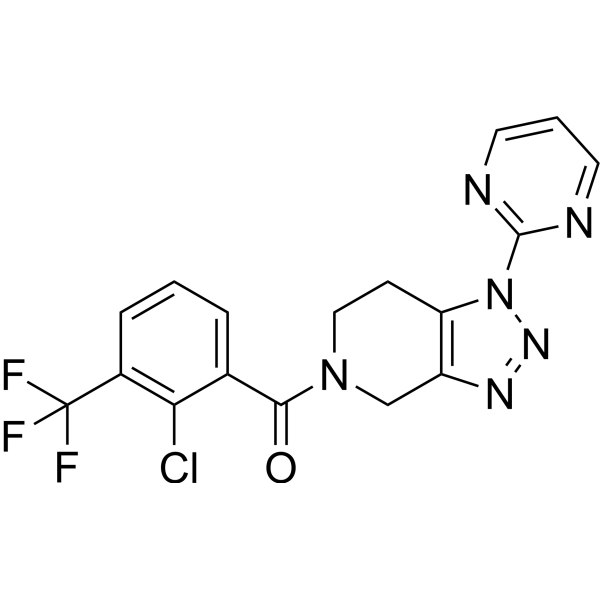
- HY-162325
-
-

- HY-163378
-
|
|
Complement System
|
Inflammation/Immunology
|
|
C5aR1 antagonist 1 (Compound 7e) is an orally active C5a receptor 1 (C5aR1) antagonist. C5aR1 antagonist 1 is active in DISCO and migration assays, with IC50 values of 38 nM and 17 nM, respectively. C5aR1 antagonist 1 can be used for the research of acute and chronic inflammatory diseases .
|
-
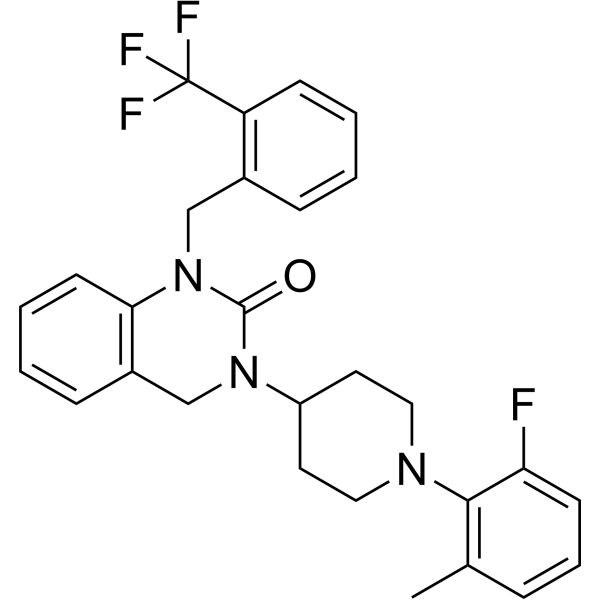
- HY-121469
-
|
|
Others
|
Neurological Disease
|
|
Dioxone is a substance possessing convulsant properties qualitatively similar to leptazol and bemegride. Dioxone is orally active .
|
-

- HY-151927
-
-
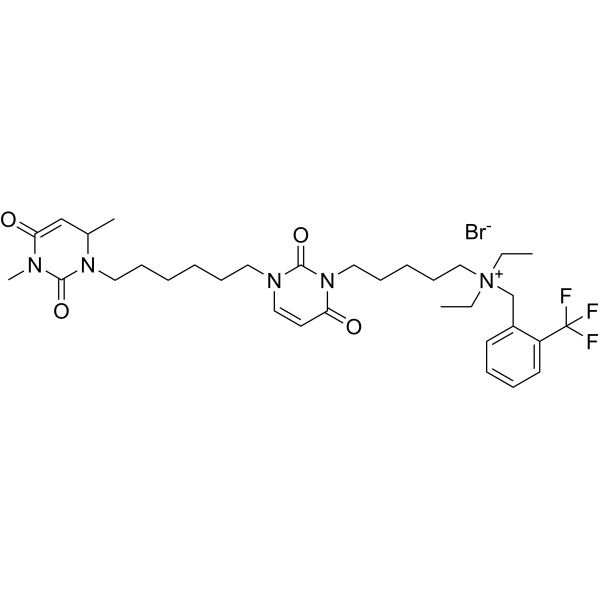
- HY-149212
-
|
|
Cholinesterase (ChE)
|
Neurological Disease
|
|
SD-6 is an orally active inhibitor of hAChE and hBChE with IC50 values of 0.907 µM and 1.579 µM, respectively. SD-6 has excellent blood-brain barrier (BBB) permeability and no neurotoxicity, which can be used for research on Alzheimer's disease .
|
-
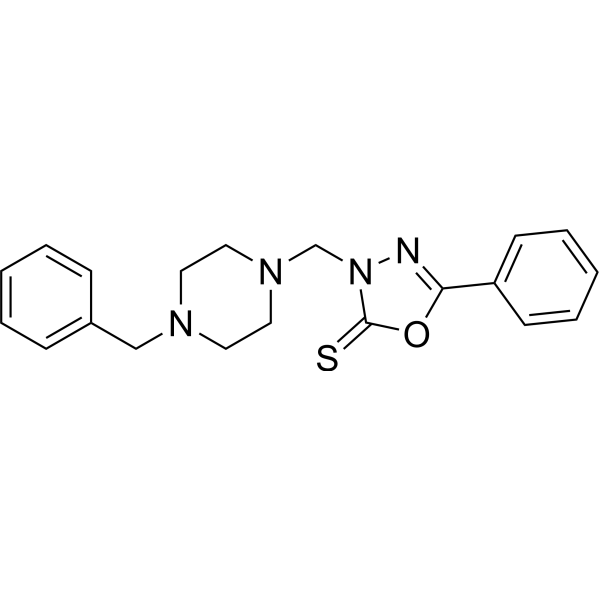
- HY-14922
-
|
|
Reverse Transcriptase
HIV
|
Infection
|
|
Fosalvudine tidoxil is an orally active nucleoside reverse transcriptase inhibitor (NRTI). Fosalvudine tidoxil is a prodrug derived from Alovudine (HY-B1516). Fosalvudine tidoxil is less toxic than Alovudine and can be used for the research of HIV-1 infection .
|
-
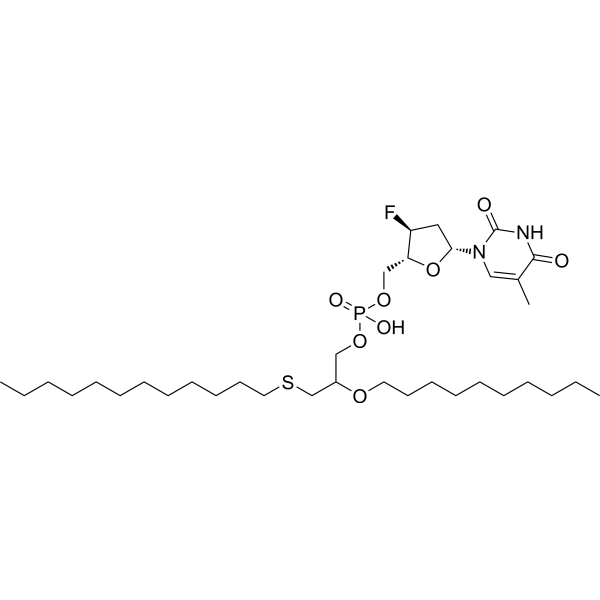
- HY-N3202
-
|
(+)-Neolitsine
|
Others
|
Cardiovascular Disease
|
|
Neolitsine ((+)-Neolitsine) is a vasodilator. Neolitsine can be isolated from the herb Cassytha filiformis. Neolitsine exhibits significant vasodilatory effects on precontracted rat aortic preparations with an IC50 of 0.29 μM .
|
-

- HY-106356
-
|
|
Others
|
Others
|
|
GV-150013 is a selective CCK-B receptor antagonist. GV-150013 has sleep aid effect .
|
-
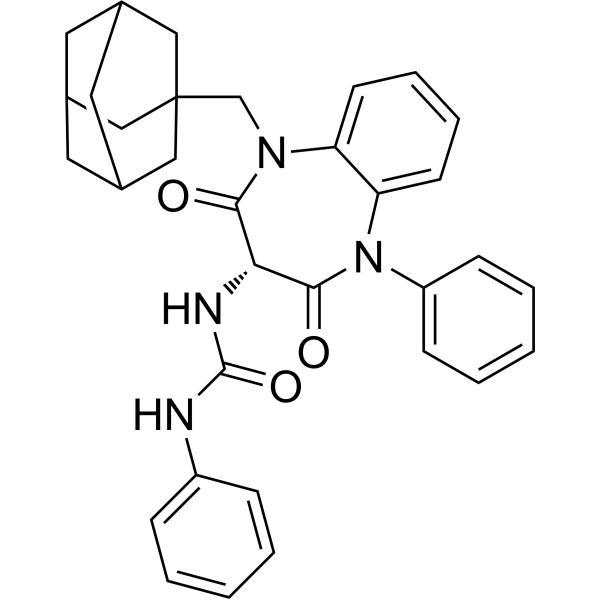
- HY-17011
-
|
|
Others
|
Metabolic Disease
|
|
Croconazole is an antifungal agent containing imidazole rings. Croconazole has a unique structural feature of aryl vinyl at the imidazole ring N-1. Croconazole can be used for the identification and quantitative study of major metabolites in rat urine and bile .
|
-
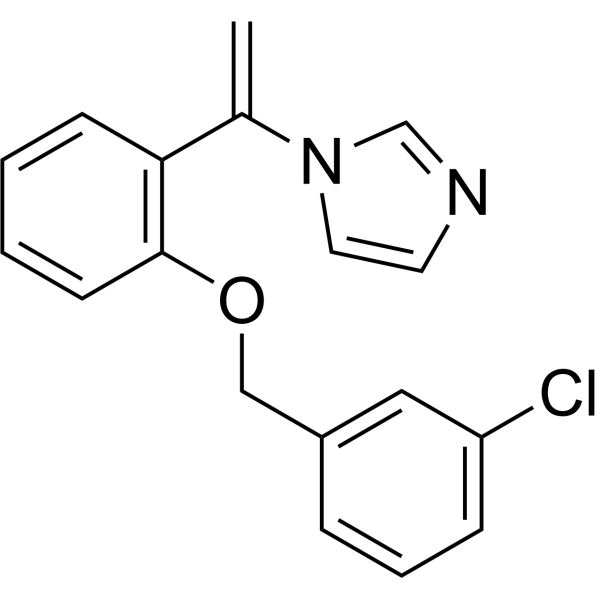
- HY-116431
-
|
|
Prostaglandin Receptor
|
Cardiovascular Disease
Neurological Disease
|
|
I-BOP is an agonist for thromboxane A2 receptor (TP) with a KD of 0.61 nM. I-BOP promotes proliferation through activation of PI3K pathway in vascular smooth muscle . I-BOP dose-dependently biphasicly affects the excitatory postsynaptic potential (e.p.s.p.) in hippocampal neurons .
|
-

- HY-B0476
-
|
Acetophenetidin
|
COX
|
Inflammation/Immunology
|
|
Phenacetin (Acetophenetidin) is a non-opioid analgesic/antipyretic agent. Phenacetin is a selective COX-3 inhibitor. Phenacetin is used as probe of cytochrome P450 enzymes CYP1A2 in human liver microsomes and in rats .
|
-
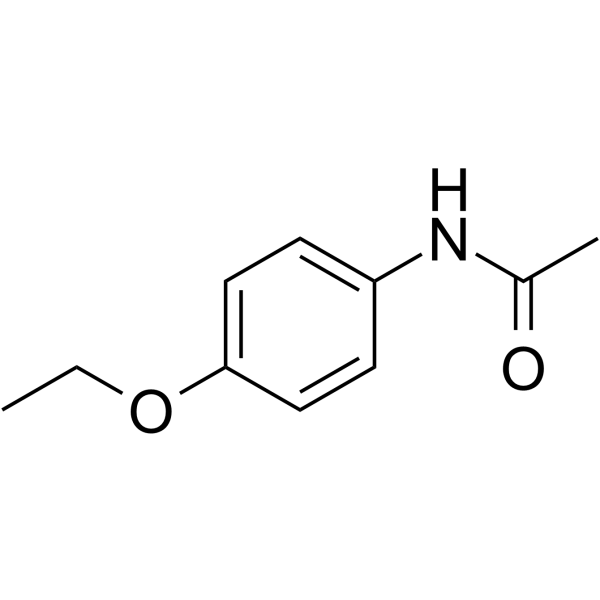
- HY-W012946
-
-
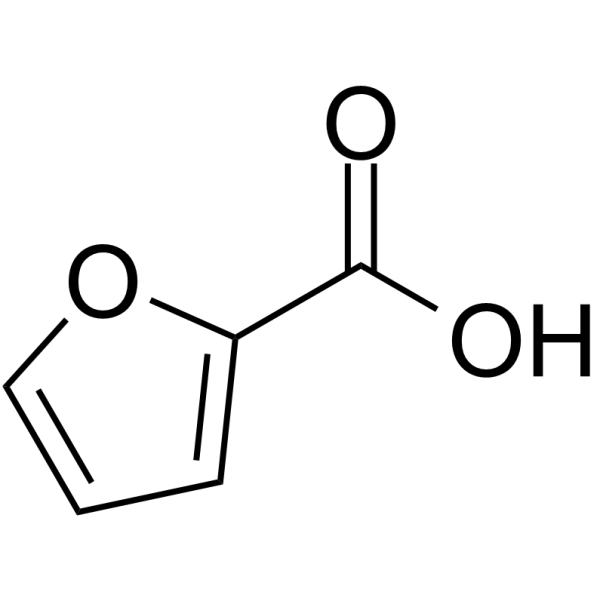
- HY-N3015
-
|
|
Others
|
Metabolic Disease
|
|
Bruceine E is a quassinoid from seeds of Brucea javanica (L.) Merr, exhibiting hypoglycemia effect . Bruceine E exhibits blood glucose lowering effect in both nondiabetic mice and Streptozotocin (STZ)-induced diabetic rats at lower dose .
|
-
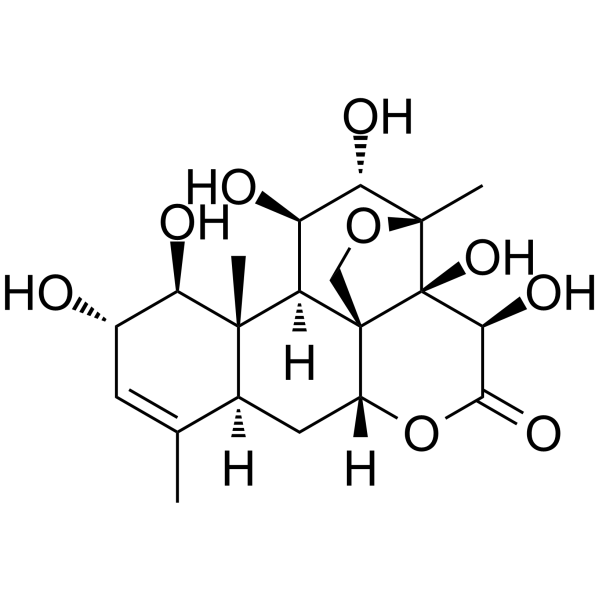
- HY-113986
-
|
(R)-Fadrozole; (R)-CGS 16949A free base; FAD286
|
Others
|
Cardiovascular Disease
|
|
Dexfadrostat ((R)-Fadrozole) is a potent nonsteroidal inhibitor . Dexfadrostat also inhibits human placental aromatase (pIC50 = 6.17) and aldosterone biosynthesis. Dexfadrostat reverses cardiac fibrosis in spontaneously hypertensive heart failure rats. .
|
-

- HY-W014941
-
|
|
Histamine Receptor
|
Neurological Disease
|
|
(R)-(-)-α-Methylhistamine dihydrochloride is a potent, selective and brain-penetrant agonist of H3 histamine receptor, with a Kd of 50.3 nM . (R)-(-)-α-Methylhistamine dihydrochloride can enhance memory retention, attenuates memory impairment in rats .
|
-
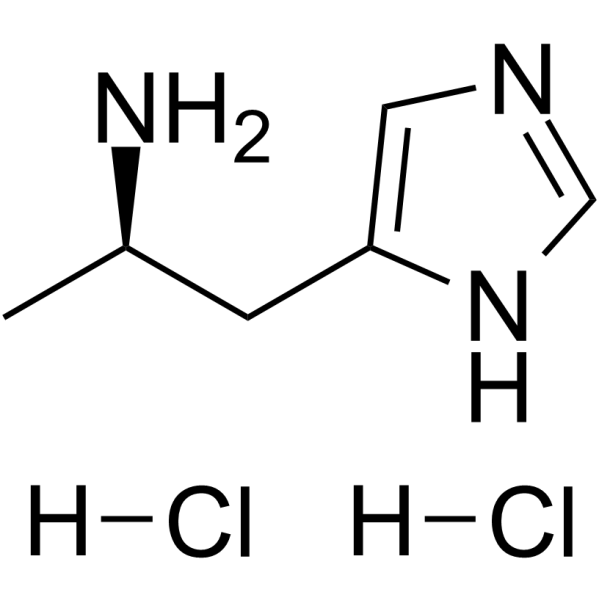
- HY-N10226
-
|
|
Prostaglandin Receptor
|
Cardiovascular Disease
Endocrinology
|
|
Thielavin B is an inhibitor of prostaglandin biosynthesis produced by Thielavia terricola. Thielavin B effectively influences the prostaglandin E2 synthesis from the endoperoxide. Thielavin B is significantly effective on carrageenan-induced oedema of rats when administered intravenously .
|
-
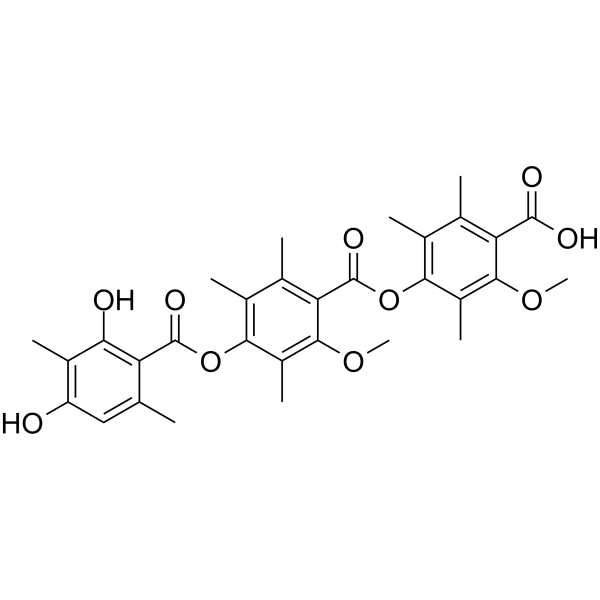
- HY-N4009
-
|
|
Others
|
Others
|
|
Iriflophenone 2-O-α-rhamnoside can be isolated from the leaves of Aquilaria sinensis. Iriflophenone 2-O-α-rhamnoside has a half-life value of 2.44 min in rats at the administration of 25 mg/kg .
|
-
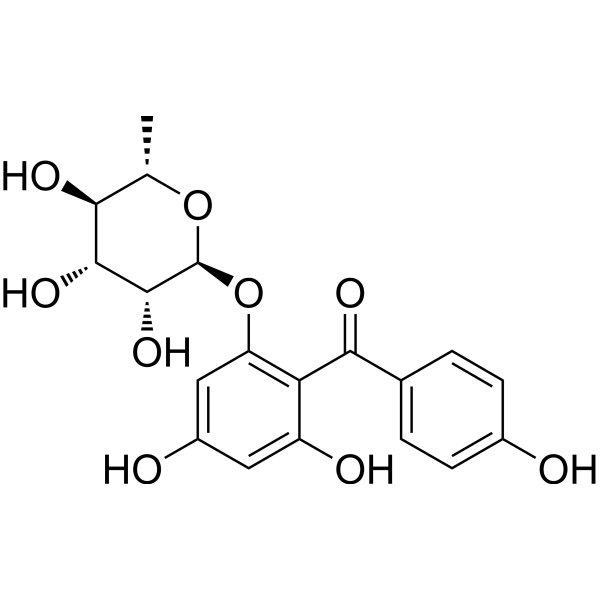
- HY-119594
-
|
Arsobal
|
Parasite
|
Infection
|
|
Melarsoprol (Arsobal), a melaminophenylarsine-type trivalent organic arsenical, is an important drug for African trypanosomiasis. Melarsoprol is also active against leukemia cell lines and plasma cells from myeloma patients. Melarsoprol increases the biliary output of GSH in rats .
|
-
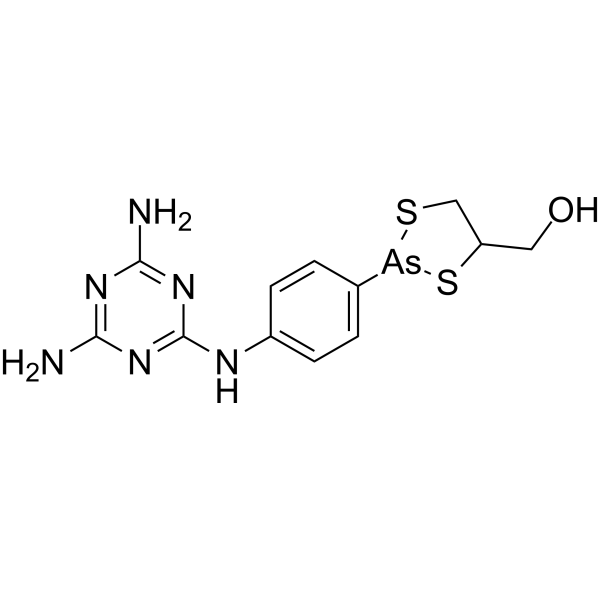
- HY-B0770
-
|
β-Arteether; (+)-Arteether; Arteether
|
Parasite
|
Infection
Cancer
|
|
Artemotil (β-Arteether) has antimalarial activity for the treatment of chloroquine-resistant Plasmodium falciparum malaria with an IC50 of 1.61 nM. Artemotil also has central nervous system (CNS) neurotoxicity and anorectic toxicity in rats, dogs and monkeys .
|
-

- HY-B0099S
-
|
MCI-186-d5
|
MMP
Apoptosis
|
Neurological Disease
|
|
Edaravone-d5 is a deuterium labeled Edaravone. Edaravone is a strong novel free radical scavenger, and inhibits MMP-9-related brain hemorrhage in rats treated with tissue plasminogen activator[1][2][3][4].
|
-
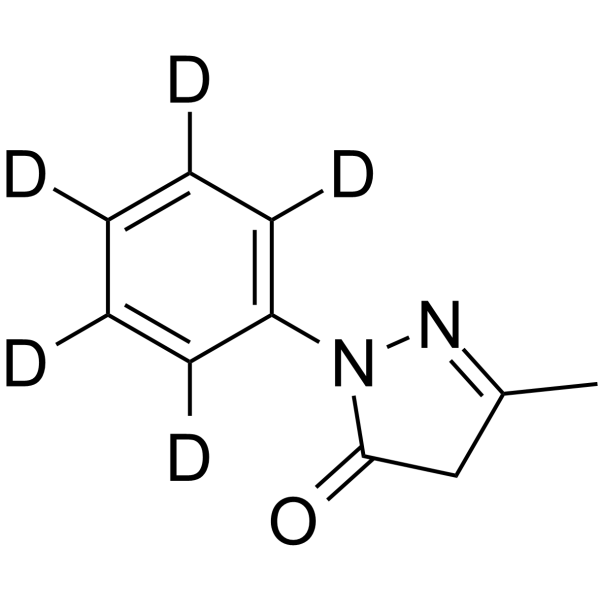
- HY-120813
-
|
URB913
|
Others
|
Inflammation/Immunology
|
|
ARN 077 is a potent and selective N-acylethanolamine acid amidase (NAAA) inhibitor with an IC50 of 7 nM for human NAAA . ARN 077 significantly increases palmitoyl ethanolamine (PEA) levels within the CNS and has broad antinociceptive activity in mice and rats .
|
-
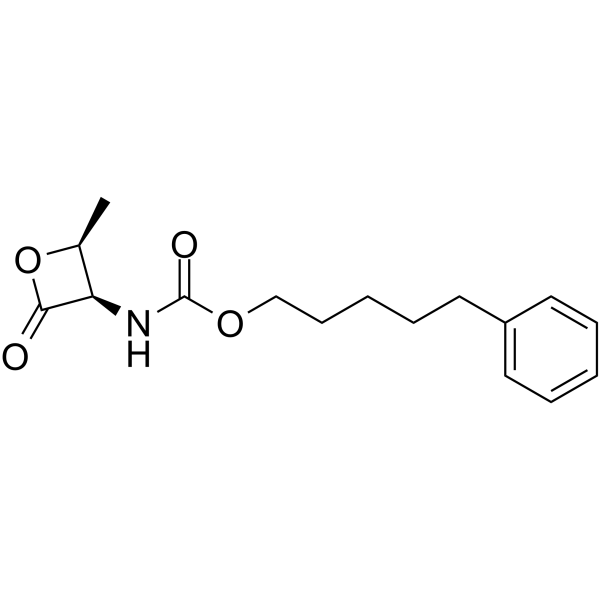
- HY-100164
-
|
MKS 492
|
Phosphodiesterase (PDE)
|
Inflammation/Immunology
|
|
SDZ-MKS 492 (MKS 492) is a selective inhibitor of cyclic GMP-inhibited phosphodiesterase (type III PDE). SDZ-MKS 492 inhibits antigen- or platelet activating factor (PAF)-induced bronchoconstriction and allergic reactions in guinea pigs and rats .
|
-

- HY-P1338
-
|
|
Opioid Receptor
|
Neurological Disease
|
|
PL-017 is a potent and selective μ opioid receptor agonist with an IC50 of 5.5 nM for 125I-FK 33,824 binding to μ site. PL-017 produces long-lasting, reversible analgesia in rats .
|
-
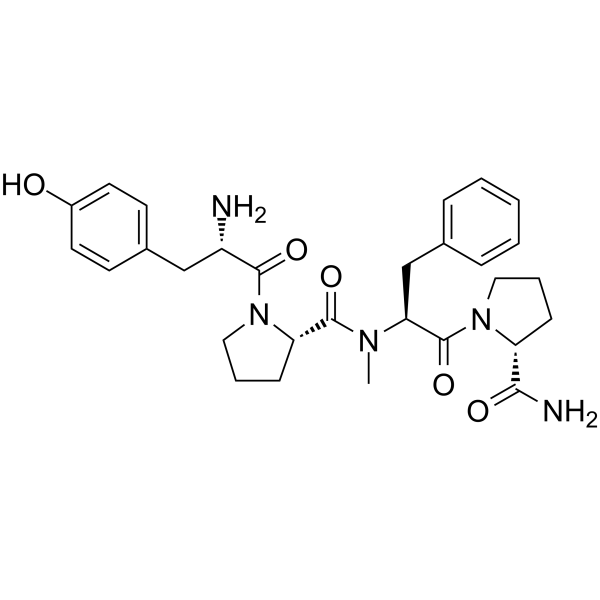
- HY-120380
-
|
|
Autophagy
|
Inflammation/Immunology
|
|
FeTMPyP is an orally active peroxynitrite (ONOO ?) scavenger. FeTMPyP reduces nitrative stress and increases autophagy. FeTMPyP reduces PARP over-activation and neuroinflammation in chronic constriction injury (CCI)-induced rats, and ameliorates functional, behavioral and biochemical deficits .
|
-
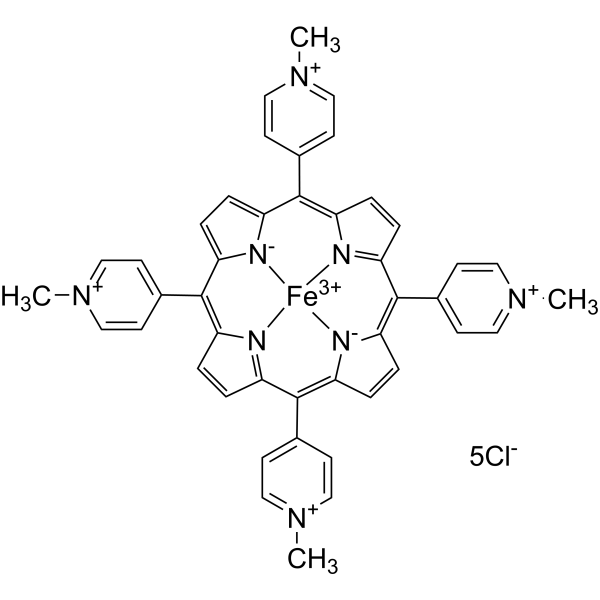
- HY-135319
-
|
|
Others
|
Infection
|
|
Strictinin is a phenolic compound isolated from Pu'er teas. Strictinin has potential antiviral, antibacterial and laxative activities. Strictinin occurs by accelerating intestinal transit rather than enhancing gastric emptying, increasing food intake, or inducing diarrhea in rats.
|
-
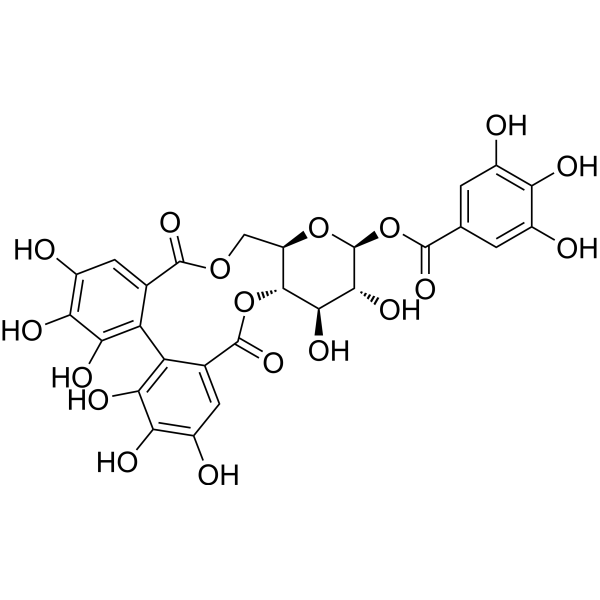
- HY-121025
-
|
|
TGF-β Receptor
|
Others
|
|
BUR1 is a BMP upregulator (EC50: 98 nM) and activates BMPRII signalling. BUR1 induces BMP2 and PTGS2 expression. BUR1 reversed pulmonary arterial pressure in Monocrotaline (HY-N0750) induced rats .
|
-
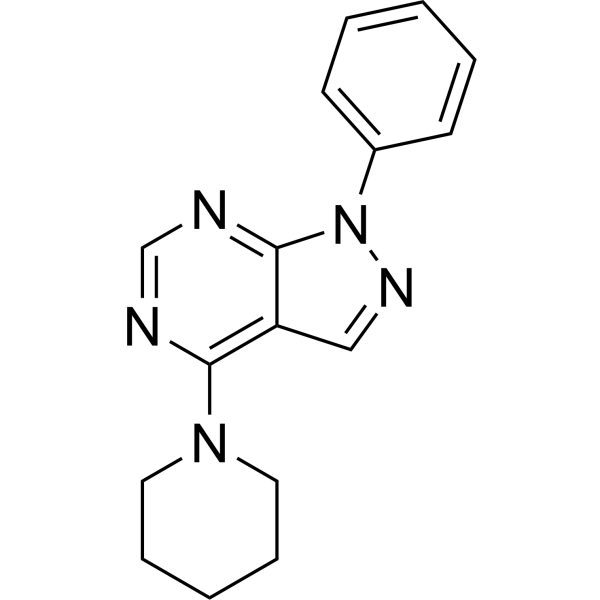
- HY-10655
-
|
ACT-058362
|
Urotensin Receptor
|
Cardiovascular Disease
|
|
Palosuran (ACT-058362) is a potent, selective, and orally active antagonist of urotensin II receptor, with an IC50 of 3.6 nM for CHO cell membranes expressing human recombinant receptors. Palosuran can improves pancreatic and renal function in diabetic rats .
|
-

- HY-N1131
-
|
2,2,6,6-Tetramethyl-4-piperidone
|
Biochemical Assay Reagents
|
Metabolic Disease
|
|
Triacetonamine (2,2,6,6-Tetramethyl-4-piperidone) is used as an intermediate for the synthesis of pharmaceutical products, pesticides and photostabilizers for polymers. Triacetonamine has oral activity and can induce acute liver failure (ALF) in rats .
|
-
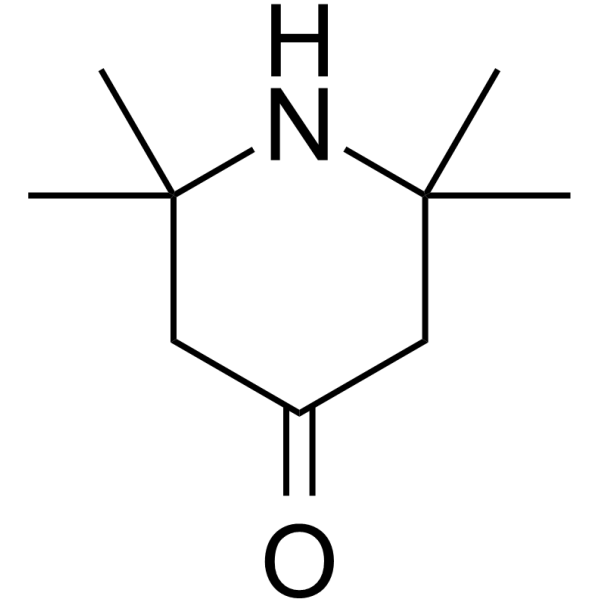
- HY-76006
-
|
M-Hydroxybenzaldehyde
|
Aldehyde Dehydrogenase (ALDH)
|
Cardiovascular Disease
|
|
3-Hydroxybenzaldehyde is a precursor compound for phenolic compounds, such as Protocatechualdehyde (HY-N0295). 3-Hydroxybenzaldehyde is a substrate of aldehyde dehydrogenase (ALDH) in rats and humans (ALDH2). 3-Hydroxybenzaldehyde has vasculoprotective effects in vitro and in vivo .
|
-

- HY-100999
-
|
|
|
|
|
(R)-(-)-α-Methylhistamine dihydrobromide is a potent, selective and brain-penetrant agonist of H3 histamine receptor, with a Kd of 50.3 nM . (R)-(-)-α-Methylhistamine dihydrobromide can enhance memory retention, attenuates memory impairment in rats .
|
-

- HY-10655A
-
|
ACT-058362 hydrochloride
|
Urotensin Receptor
|
Cardiovascular Disease
|
|
Palosuran hydrochloride (ACT-058362 hydrochloride) is a potent, selective, and orally active antagonist of urotensin II receptor, with an IC50 of 3.6 nM for CHO cell membranes expressing human recombinant receptors. Palosuran hydrochloride can improves pancreatic and renal function in diabetic rats .
|
-
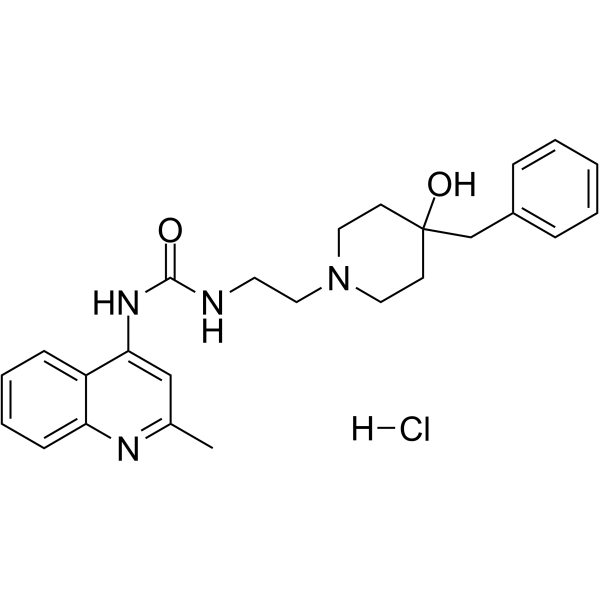
- HY-N1131B
-
|
2,2,6,6-Tetramethyl-4-piperidone monohydrate
|
Biochemical Assay Reagents
|
Metabolic Disease
|
|
Triacetonamine (2,2,6,6-Tetramethyl-4-piperidone) monohydrate is used as an intermediate for the synthesis of pharmaceutical products, pesticides and photostabilizers for polymers. Triacetonamine hydrochloride has oral activity and can induce acute liver failure (ALF) in rats .
|
-
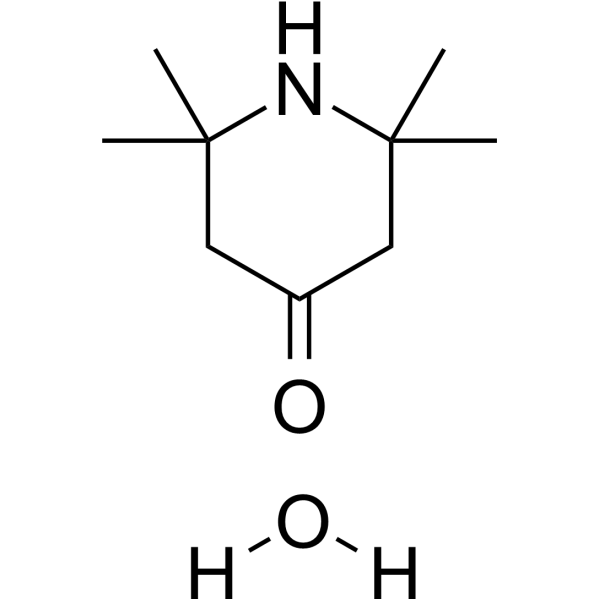
- HY-114538
-
|
|
Others
|
Cardiovascular Disease
Inflammation/Immunology
|
|
Asobamast is a potent, orally active antiallergic agent that inhibits ige mediated passive pulmonary allergic responses in rats (ED50=4.7 mg/kg) and inhibits antigen-induced mediator release from sensitized guinea pig lung fragments .
|
-
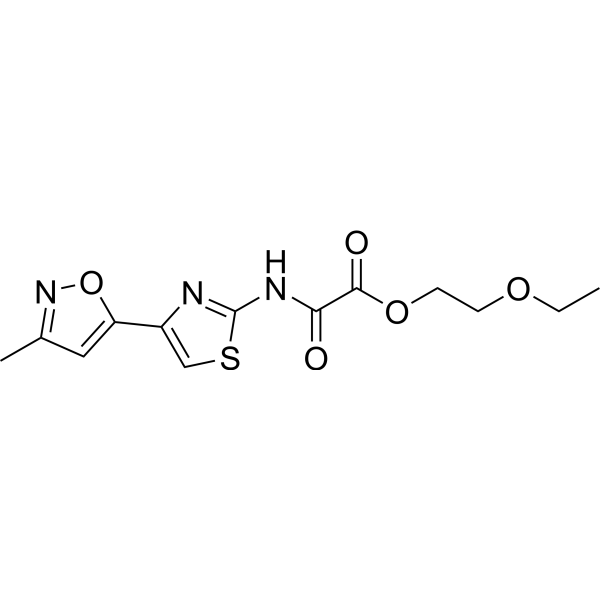
- HY-115447
-
|
|
Histamine Receptor
|
Neurological Disease
|
|
Clobenpropit is a potent histamine H3-receptor antagonist. Clobenpropit decreases dopamine release and increases histamine levels in the hypothalamus. Clobenpropit shows antipsychotic-like activities. Clobenpropit causes a resuscitating effect in rats subjected to the hemorrhagic shock .
|
-

- HY-N1131A
-
|
2,2,6,6-Tetramethyl-4-piperidone hydrochloride
|
|
|
|
Triacetonamine (2,2,6,6-Tetramethyl-4-piperidone) hydrochloride is used as an intermediate for the synthesis of pharmaceutical products, pesticides and photostabilizers for polymers. Triacetonamine hydrochloride has oral activity and can induce acute liver failure (ALF) in rats .
|
-
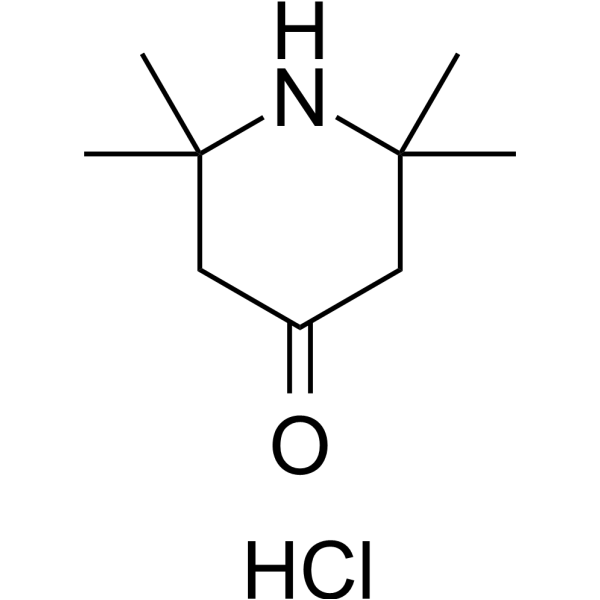
- HY-B1448
-
|
KW-3049
|
Calcium Channel
Apoptosis
|
Cardiovascular Disease
|
|
Benidipine hydrochloride is an orally active calcium channel antagonist. Benidipine hydrochloride can inhibit cell proliferation and apoptosis. Benidipine hydrochloride has antioxidant activity and can increase nitric oxide synthase activity and improve coronary circulation in hypertensive rats .
|
-
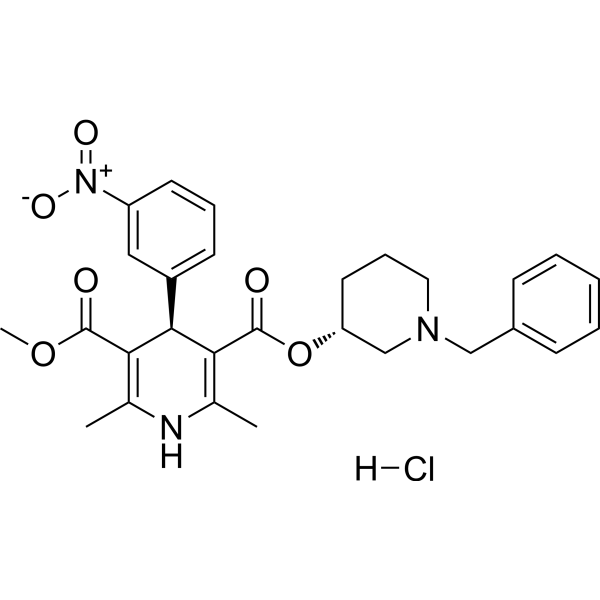
- HY-P1338A
-
|
|
Opioid Receptor
|
Neurological Disease
|
|
PL-017 TFA is a potent and selective μ opioid receptor agonist with an IC50 of 5.5 nM for 125I-FK 33,824 binding to μ site. PL-017 TFA produces long-lasting, reversible analgesia in rats .
|
-

- HY-B1448A
-
|
KW-3049 free base
|
Apoptosis
Calcium Channel
|
Cardiovascular Disease
|
|
Benidipine is a potent and orally active calcium channel antagonist . Benidipine shows anti-apoptosis effects in ischaemic/reperfused myocardial cells . Benidipine increases the activity of endothelial cell-type nitric oxide synthase and improves coronary circulation in hypertensive rats .
|
-
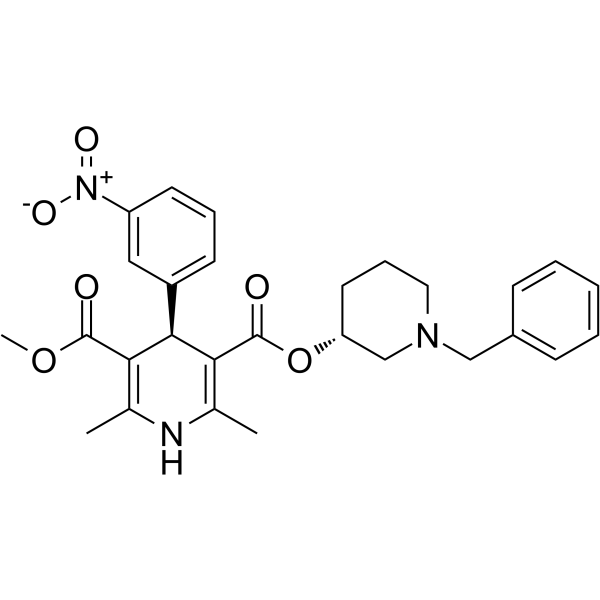
- HY-106364
-
|
Bleomycin PEP; Pepleomycin
|
Antibiotic
|
Cancer
|
|
Peplomycin (Bleomycin PEP; Pepleomycin) is an antibiotic analogue of Bleomycin (HY-108345), with high antitumor effect and less pulmonary toxicity. Peplomycin induce apoptosis in oral squamous carcinoma cell line SSCKN cells and pulmonary fibrosis in rats .
|
-
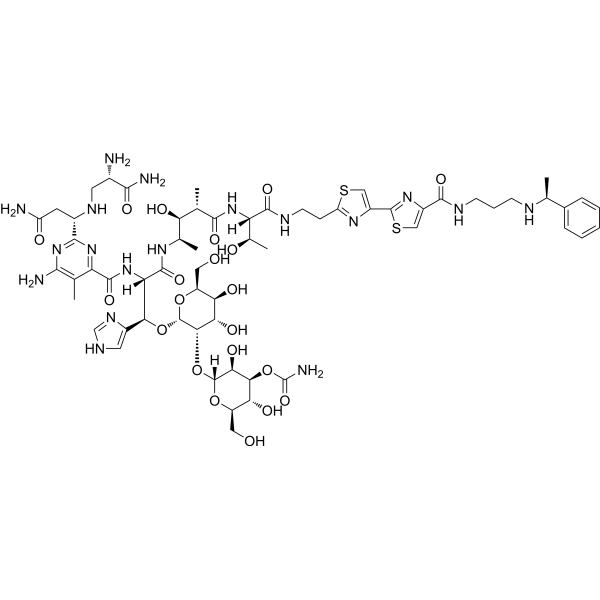
- HY-148565
-
|
|
Serotonin Transporter
|
Neurological Disease
|
|
SERT-IN-2 is a potent SERT inhibitor (IC50=0.58 nM) with promising anti-depression efficacy. SERT-IN-2 shows good bioavailability of 83.28% in rats. SERT-IN-2 can cross the blood-brain barrier .
|
-
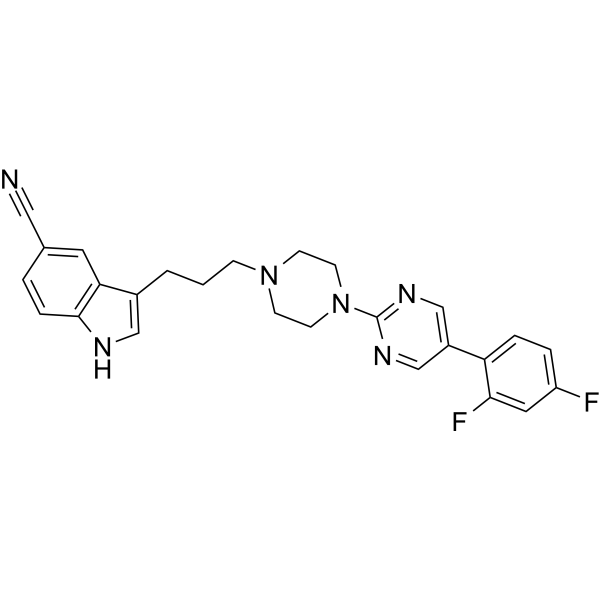
- HY-149316
-
|
|
E1/E2/E3 Enzyme
|
Cardiovascular Disease
|
|
Smurf1-IN-1 is an orally active and selective inhibitor of specific E3 ubiquitin protein ligase 1 (SMURF1) with an IC50 of 92 nM. Smurf1-IN-1 has significant efficacy in rats model of pulmonary hypertension .
|
-
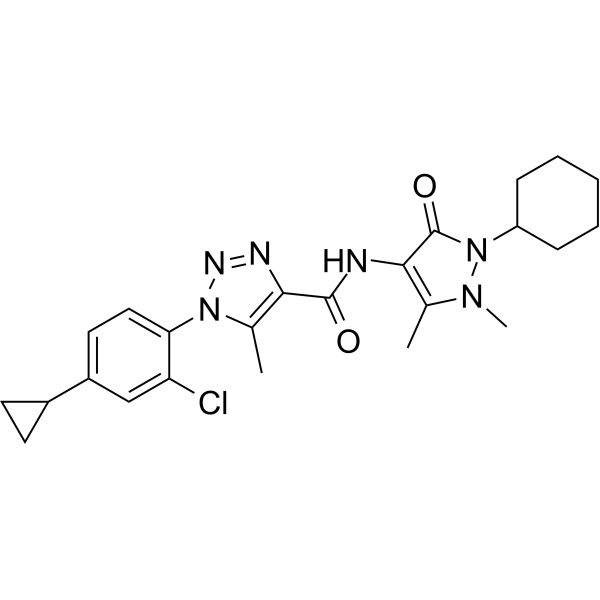
- HY-107565
-
|
|
Others
|
Inflammation/Immunology
|
|
2-Pyridylethylamine is a histamine-1 (H1R) receptor agonist. 2-Pyridylethylamine can reduce the joint injury induced by formalin in rats. 2-Pyridylethylamine can be used to study the spinal cord release of neuropeptide (NPY) .
|
-
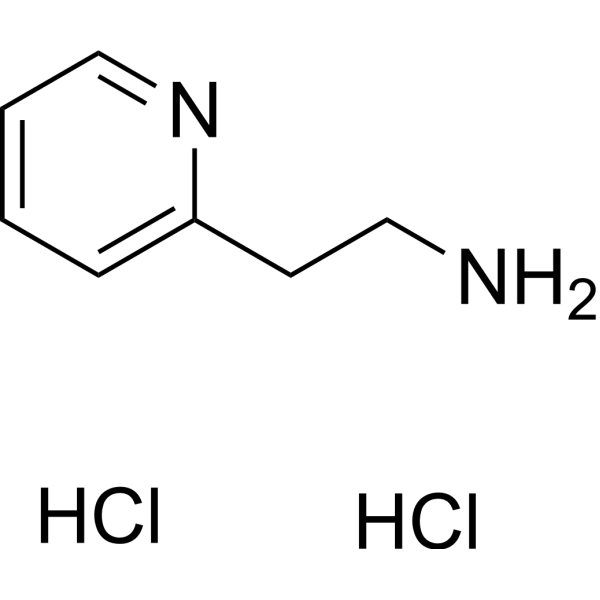
- HY-112528
-
|
GP-NPEA
|
Others
|
Metabolic Disease
|
|
Glycerophospho-N-palmitoyl ethanolamine (GP-NPEA) is a metabolic precursor of palmitoyl ethanolamide PEA (HY-157829). Glycerophospho-N-palmitoyl ethanolamine decreases in the cortex of CUMS rats, which may be related to a disorder in the endocannabinoid system arising after the onset of depression .
|
-

- HY-15066
-
|
FG9065
|
iGluR
|
Neurological Disease
|
|
CNQX (FG9065) is a potent and competitive AMPA/kainate receptor antagonist with IC50s of 0.3 μM and 1.5 μM, respectively. CNQX is a competitive non-NMDA receptor antagonist . CNQX blocks the expression of fear-potentiated startle in rats .
|
-
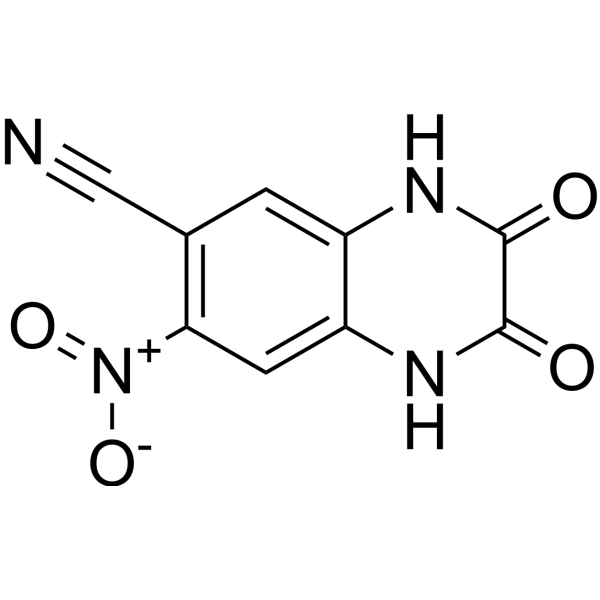
- HY-111583
-
|
|
RXFP Receptor
|
Metabolic Disease
|
|
RXFP3/4 agonist 1 is an agonist of relaxin family peptide 3/4 receptor (RXFP3/4), with EC50s of 82/2 nM, respectivley. RXFP3/4 agonist 1 increases food intake in rats .
|
-

- HY-N0495
-
|
Aloenin A
|
Beta-secretase
|
Neurological Disease
|
|
Aloenin (Aloenin A) is a kind of natural product, has effective clearing and free radical activity, and has moderate inhibitory activity on β-secretion (BACE) (IC50=14.95 μg/mL). Aloenin suppresses peritoneal hypertrophy in large rats and suppresses its release.
|
-
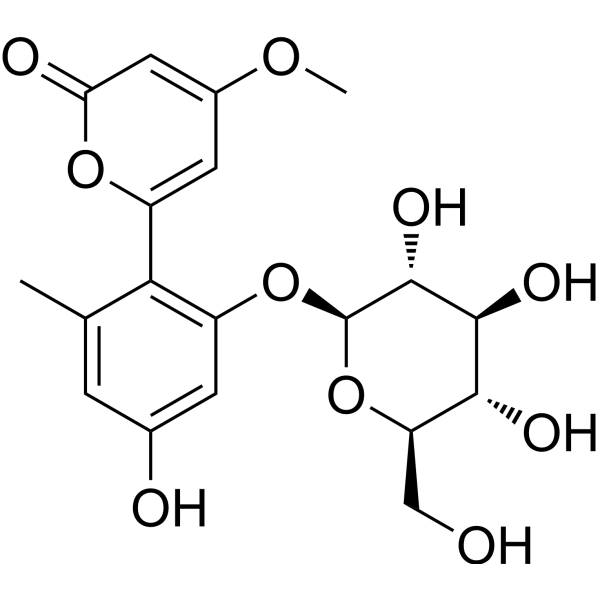
- HY-108295
-
|
CXB-722
|
GABA Receptor
|
Neurological Disease
|
|
Pivagabine (CXB 722) is a hydrophobic 4-aminobutyric acid derivative with neuromodulatory activity. Pivagabine penetrates the blood-brain barrier in rats. Pivagabine antagonizes the effects of foot shock on both GABAA receptor function and corticotropin-releasing factor (CRF) concentrations in rat brain .
|
-
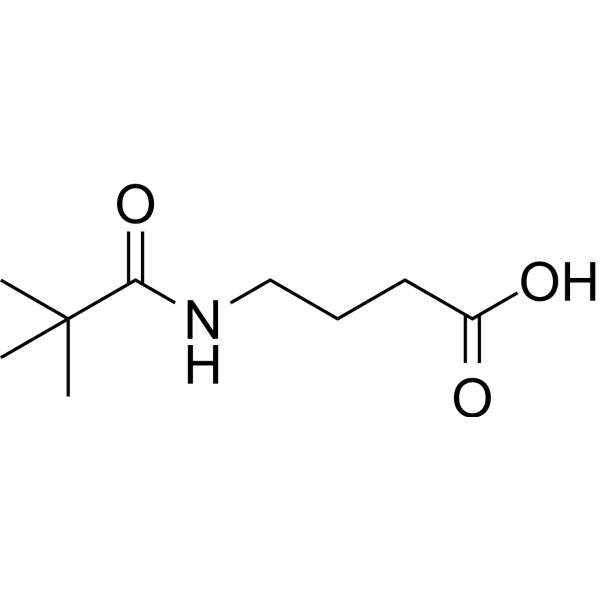
- HY-121149
-
|
3-Hydroxytamoxifen
|
Estrogen Receptor/ERR
Apoptosis
|
Cancer
|
|
Droloxifene, a Tamoxifen derivative, is an orally active and selective estrogen receptor modulator. Droloxifene shows antiestrogenic and anti-implantation effects. Droloxifene induces p53 expression and apoptosis in MCF-7 cells. Droloxifene prevents bone loss in ovariectomized rats .
|
-
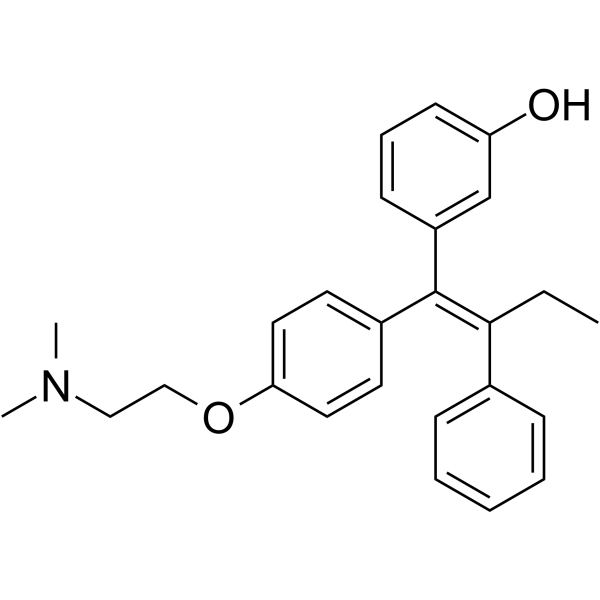
- HY-131034
-
|
|
Wnt
|
Others
|
|
LP-922056 is an orally active, highly potent Notum Pectinacetylesterase inhibitor with EC50s of 21 nM, 55 nM in human and mouse cellular assay, respectively. LP-922056 significantly increases midshaft femur cortical bone thickness in mice and rats .
|
-
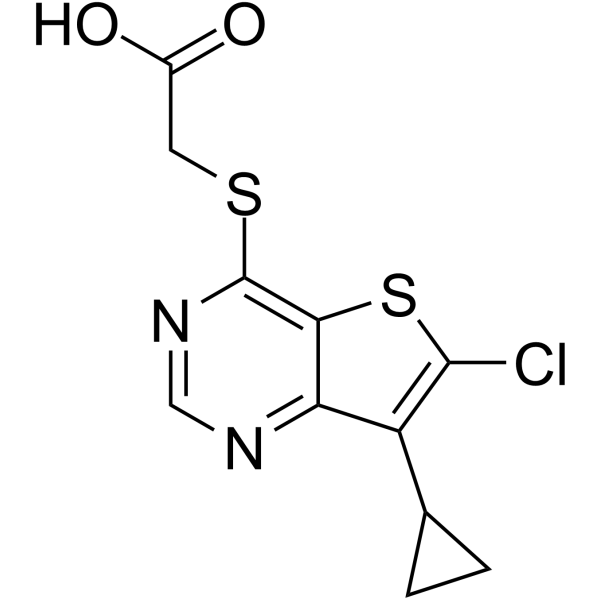
- HY-145633
-
|
OPT 302; VGX-300
|
VEGFR
|
Cardiovascular Disease
|
|
Sozinibercept (OPT 302; VGX-300) is a soluble form of VEGFR-3, potently inhibits the activity of VEGF-C/D, which are the proangiogenic factors, inhibiting angiogenesis and vascular leakage. Sozinibercept also inhibits diabetic retinal edema in rats .
|
-

- HY-N1131S
-
-
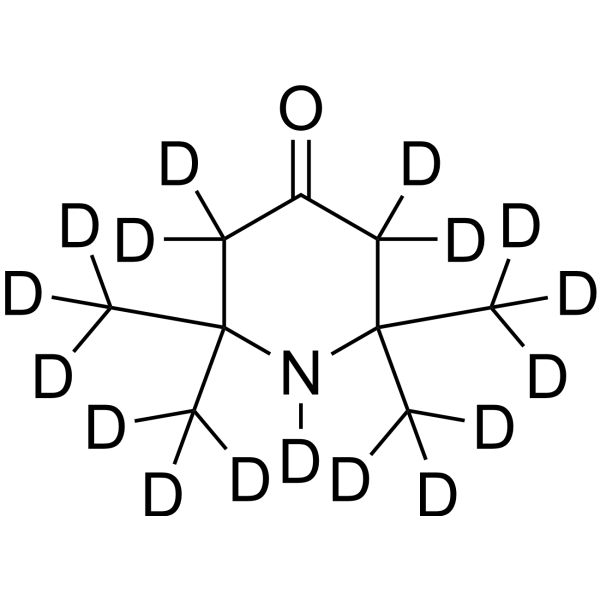
- HY-107055
-
|
|
Dopamine Transporter
|
Neurological Disease
|
|
RTI 336 is a phenyltropane analog, as well as a potent and selective dopamine transporter (DAT) inhibitor. RTI 336 inhibits addictive agent induced locomotor activity and self-administration in Lewis rats. RTI 336 exhibits inhibitory effects depending on inherent NAc DAT levels .
|
-
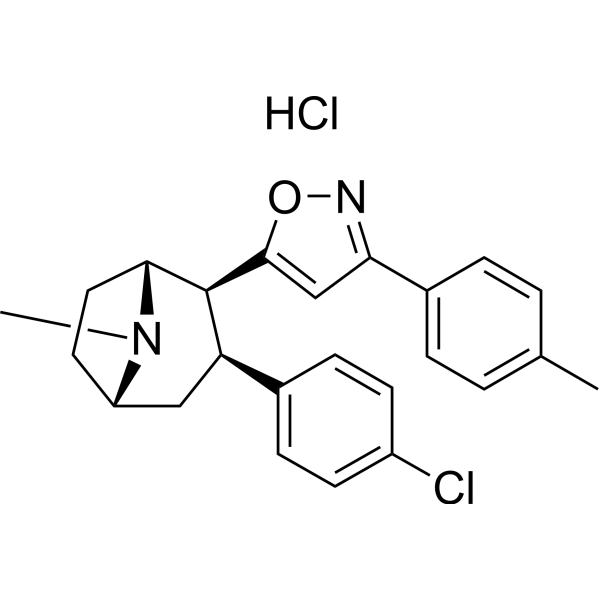
- HY-110116
-
|
|
MMP
|
Cardiovascular Disease
Inflammation/Immunology
Cancer
|
|
SD-2590 hydrochloride is a potent MMP inhibitor with IC50 values of ﹤0.1, ﹤0.1, 0.18, and 1.7 nM for MMP2, MMP13, MMP9, and MMP8, respectively. SD-2590 hydrochloride inhibits dilation of the left ventricle in rats .
|
-
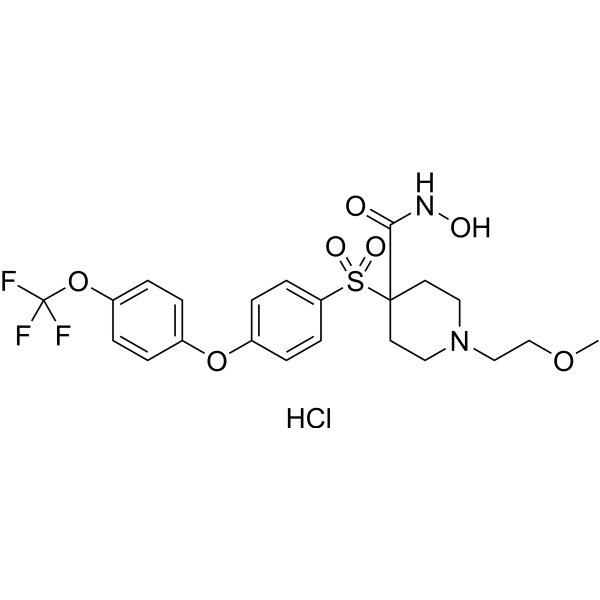
- HY-W010655
-
|
TAK-875 hemihydrate
|
Free Fatty Acid Receptor
|
Metabolic Disease
|
|
Fasiglifam (TAK-875) hemihydrate is a potent, selective and orally active GPR40 agonist with EC50 of 72 nM. Fasiglifam enhances glucose-dependent insulin secretion and improves hyperglycemia in type 2 diabetic rats. Fasiglifam can induce liver injury .
|
-
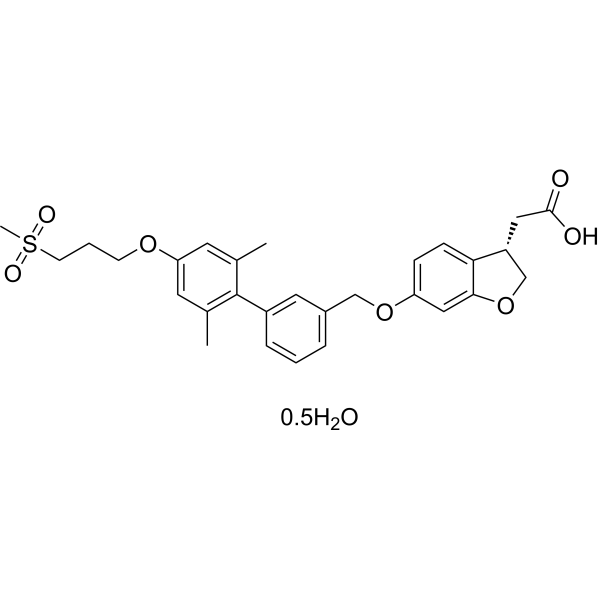
- HY-P10148
-
|
Ac-[Leu28,31]-NPY (24-36)
|
Neuropeptide Y Receptor
|
Neurological Disease
|
|
N-Acetyl [Leu28, Leu31] neuropeptide Y (24–36) is a selective agonist of neuropeptide Y Y2 receptor. N-Acetyl [Leu28, Leu31] neuropeptide Y (24–36) attenuates cardiac vagal action in anaesthetised rats .
|
-
![N-Acetyl [Leu28, Leu31] neuropeptide Y (24–36)](//file.medchemexpress.com/product_pic/hy-p10148.gif)
- HY-101679
-
|
|
mAChR
|
Neurological Disease
|
|
YM-58790 is a potent antagonist of mAChR. YM-58790 binds M1, M2, M3 with Ki values of 28 nM, 260 nM, and 15 nM. YM-58790 exhibits potent inhibitory activity on bladder pressuer in reflexly-evoked rhythmic contraction in rats .
|
-
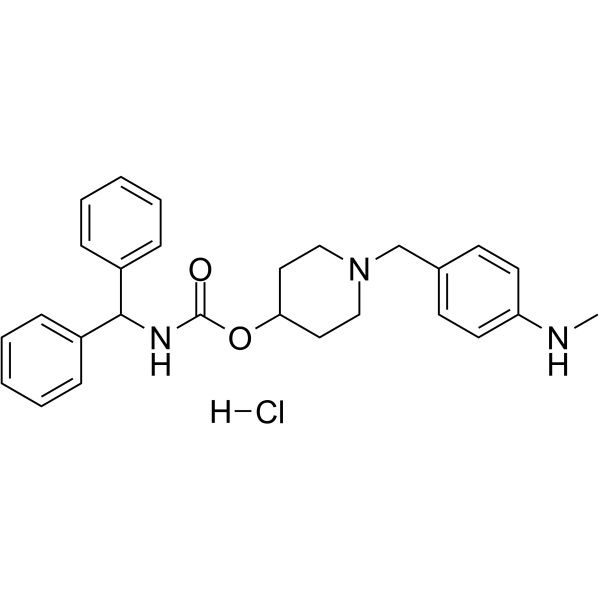
- HY-100287
-
|
|
Prostaglandin Receptor
Phospholipase
|
Endocrinology
|
|
2-(E-2-decenoylamino)ethyl 2-(cyclohexylethyl) sulfide is a compound that inhibits stress-induced ulcer and low toxicity, and can maintain the content of phospholipase A2 and prostaglandin E2 in ulcerated rats induced by water immersed restrained stress.
|
-
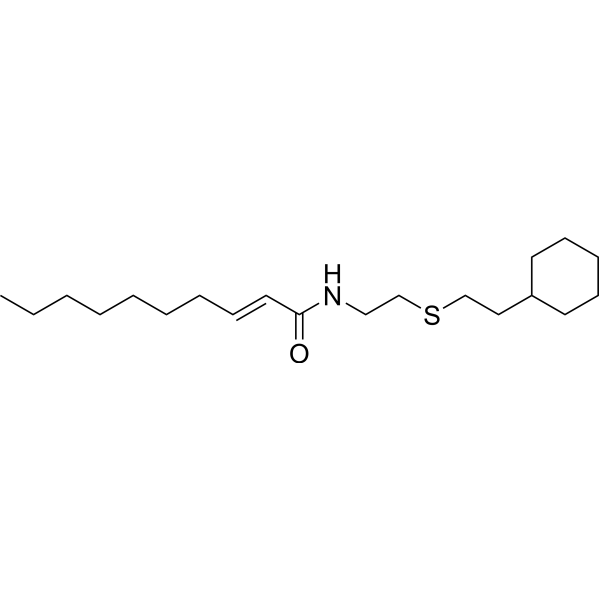
- HY-103023
-
CLP290
1 Publications Verification
|
Potassium Channel
|
Neurological Disease
|
|
CLP290 is an orally available activator of the neuron-specific K +-Cl − cotransporter KCC2, displays potential for treatment of a wide range of neurological and psychiatric indications. CLP290 can significantly lower blood arginine-vasopressin (AVP) and glucose levels in STZ rats .
|
-
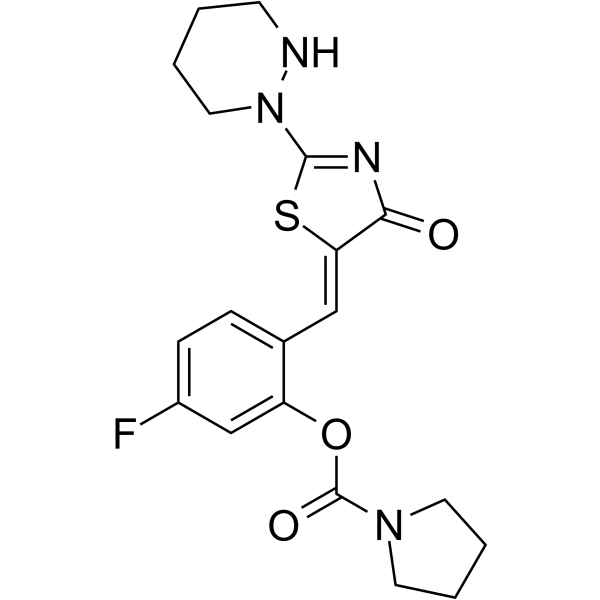
- HY-109897
-
-

- HY-116522
-
|
|
Free Fatty Acid Receptor
|
Others
|
|
AR420626 is a selective agonist of free fatty acid receptor 3 (FFAR3, GPR41) with IC50 of 117 nM. AR420626 inhibits nicotine and serotonin-induced changes in motility of isolated muscle strips from rat colon and suppresses serotonin-induced fecal output in rats .
|
-
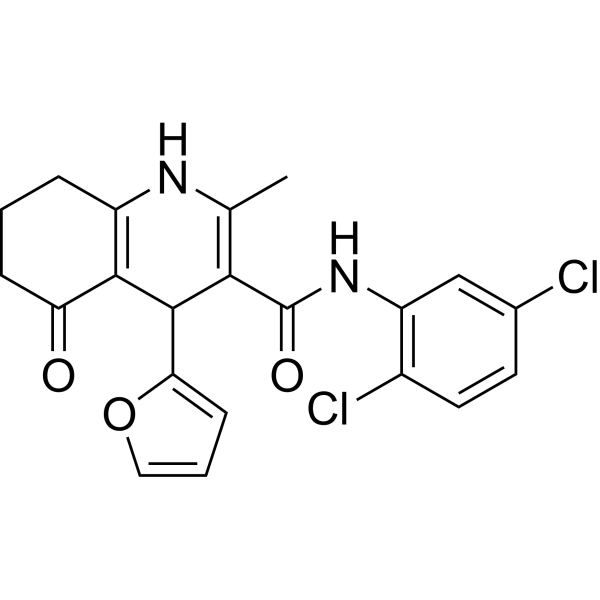
- HY-147152
-
|
|
Others
|
Others
|
|
1-Myristoyl-3-chloropropanediol is a 3-monochloropropanediol (3-MCPD) fatty acid ester. 3-MPCD causes nephropathy and tubular hyperplasia and adenomas by chronic oral administration; also reduces fertility, or provokes infertility in rats and suppresses the immune function .
|
-
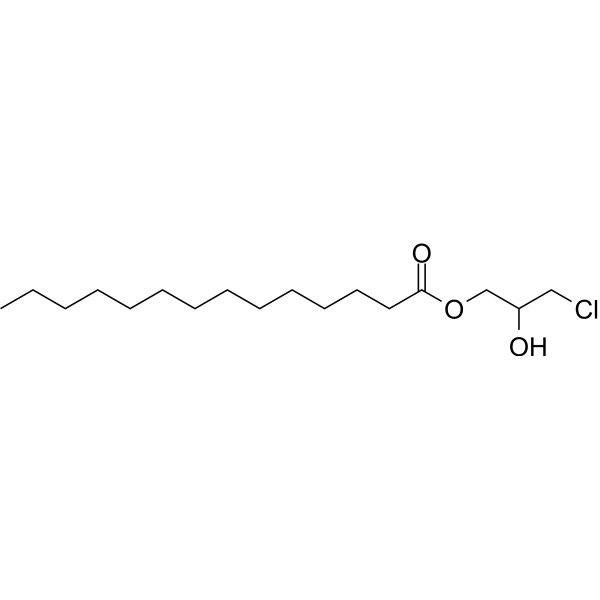
- HY-157495
-
|
|
Prostaglandin Receptor
|
Endocrinology
|
|
EP3 antagonist 6 (compound 5) is a potent, orally and selective EP3 receptor antagonist, with an IC50 of 1.9 nM. EP3 antagonist 6 can inhibits PGE2-induced (HY-101952) uterine contraction in pregnant rats .
|
-
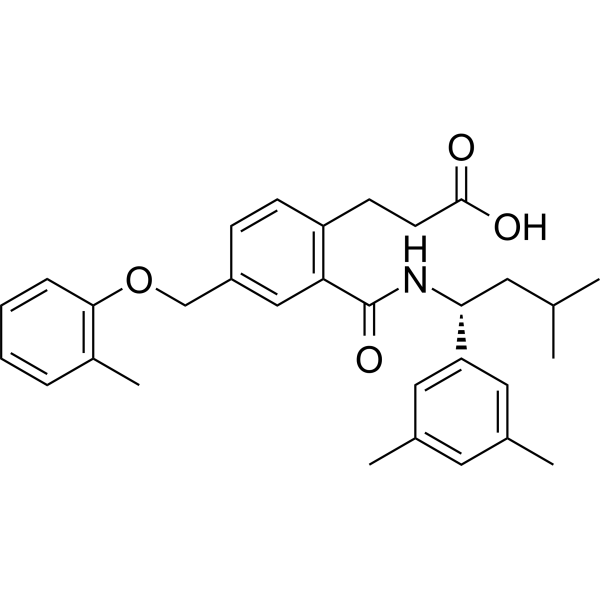
- HY-14542A
-
|
CP-88059 hydrochloride
|
5-HT Receptor
Dopamine Receptor
|
Neurological Disease
|
|
Ziprasidone (CP-88059) hydrochloride is an orally active combined 5-HT and dopamine receptor antagonist . Ziprasidone hydrochloride has affinities for Rat D2 (Ki=4.8 nM), 5-HT2A (Ki=0.42 nM) and 5-HT1A (Ki=3.4 nM) .
|
-
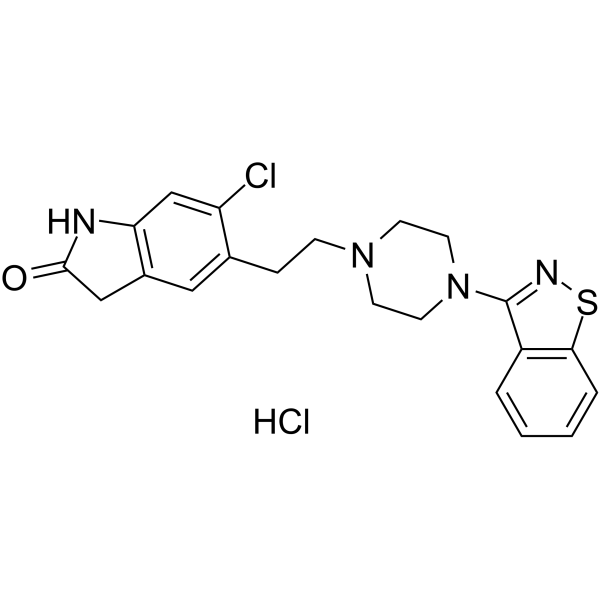
- HY-12402
-
|
|
Ser/Thr Protease
|
Cardiovascular Disease
|
|
SBC-115076 is a potent proprotein convertase subtilisin/kexin type 9 (PCSK9) inhibitor. PCSK9 is a proprotein convertase, which plays a crucial role in LDL receptor metabolism .
|
-
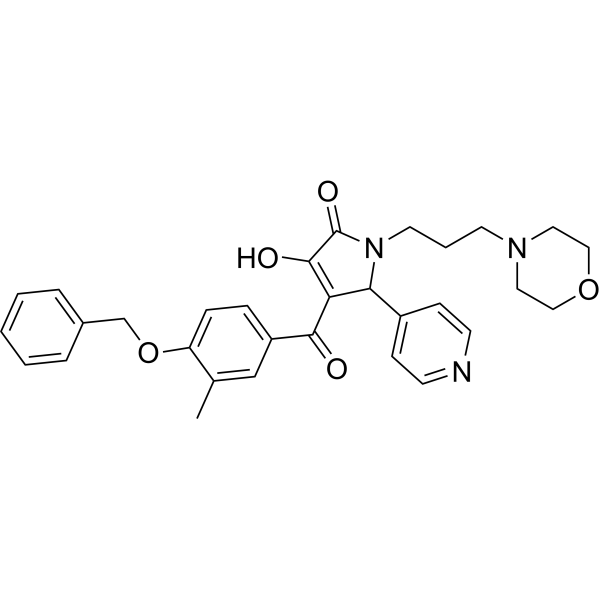
- HY-P1025
-
-
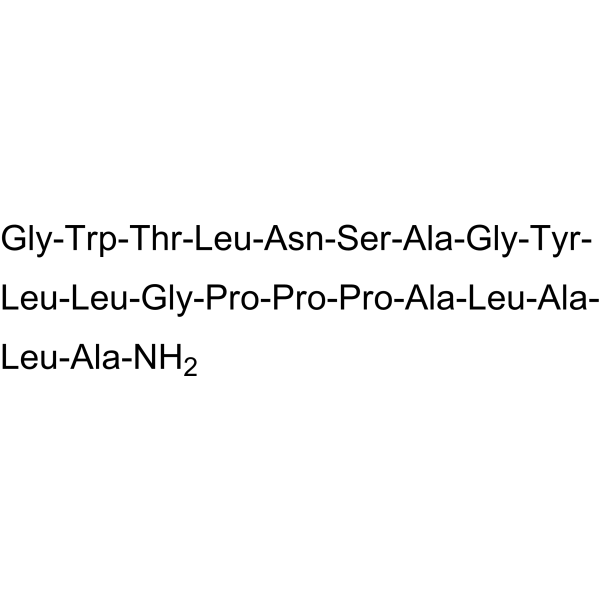
- HY-N8196
-
|
Isorhamnetin-3,7-diglucoside; Isorhamnetin diglucoside
|
Others
|
Metabolic Disease
|
|
Isorhamnetin 3,7-di-O-β-D-glucopyranoside, a major flavonoid compound, is metabolized in vivo by intestinal bacteria to isorhamnetin and that isorhamnetin plays an important role as an antioxidant .
|
-
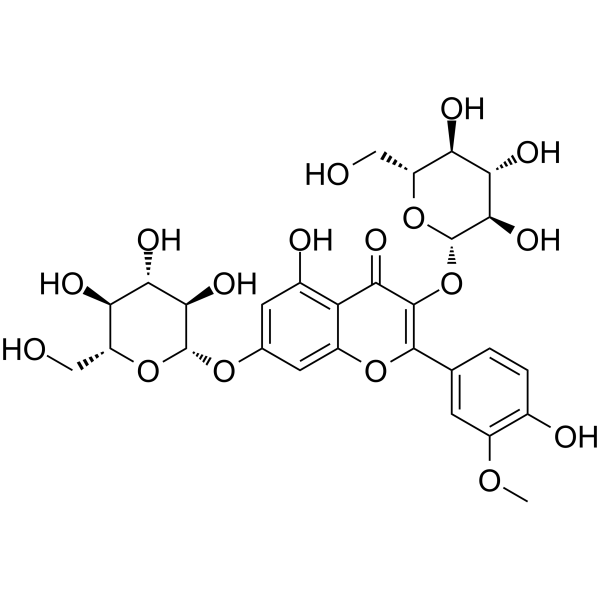
- HY-19431
-
|
|
Endothelin Receptor
|
Cardiovascular Disease
|
|
Ro 46-8443 is the first non-peptide endothelin ETB receptor selective antagonist. Ro 46-8443 displays an at least 100-fold selectivity for ETB (IC50: 34-69 nM) over ETA receptors (IC50: 6800 nM) .
|
-
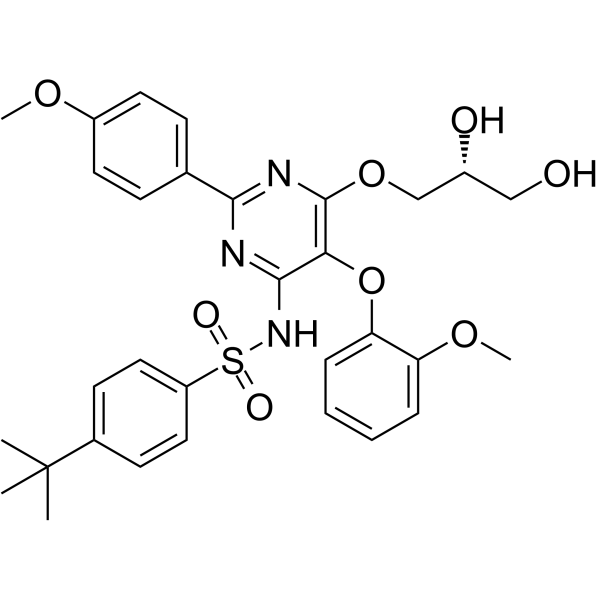
- HY-P3064
-
|
Leiurotoxin I
|
Potassium Channel
|
Neurological Disease
|
|
Scyllatoxin (Leiurotoxin I) is a peptide toxin, it can be isolated from the venom of the scorpion (Leiurus quinquestriatus hebraeus). Scyllatoxin is a blocker of small-conductance KCa (SK) channel. Scyllatoxin enhances both norepinephrine (NE) and epinephrine (Epi) release in vivo .
|
-
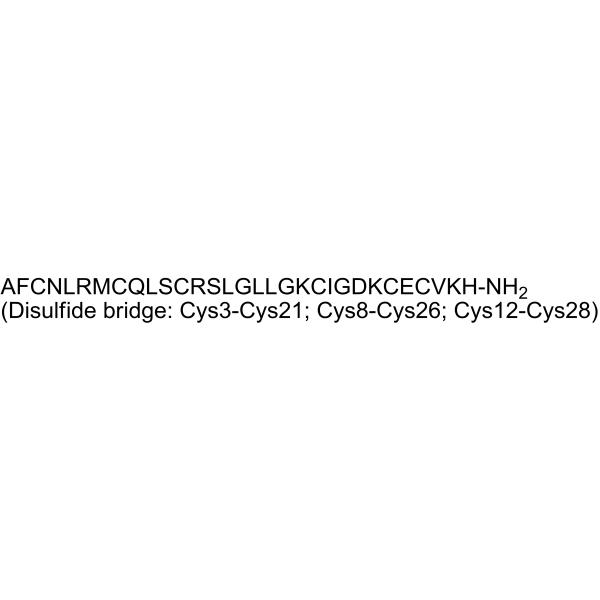
- HY-107398
-
|
|
Others
|
Cardiovascular Disease
|
|
1-(2,3-Dichlorophenyl)ethanamine hydrochloride is a phenylethanolamine N-methyltransferase (PNMT) inhibitor. 1-(2,3-Dichlorophenyl)ethanamine hydrochloride effectively reduces blood pressure of spontaneously hypertensive. 1-(2,3-Dichlorophenyl)ethanamine hydrochloride can be used for the research of blood pressure .
|
-
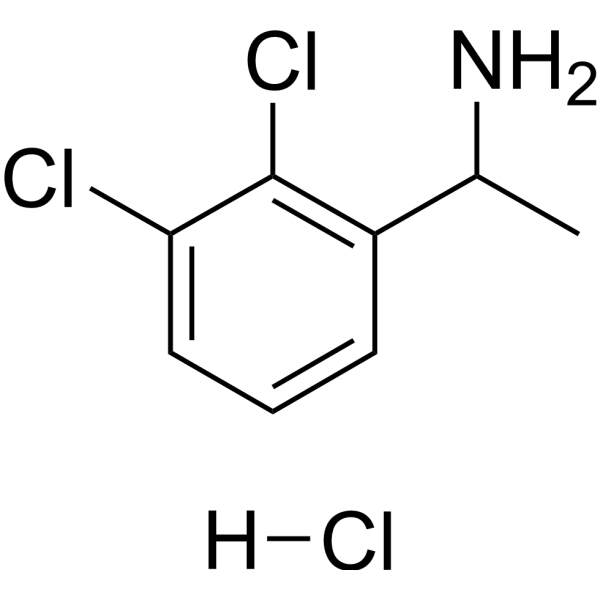
- HY-106816
-
-

- HY-153192A
-
|
BI 1015550 dihydrate
|
Phosphodiesterase (PDE)
|
Inflammation/Immunology
|
|
Nerandomilast (BI 1015550) dihydrate is an orally active inhibitor of PDE4B with an IC50 value of 7.2 nM. Nerandomilast (dihydrate) has good safety and potential applications in inflammation, allergic diseases, pulmonary fibrosis, and chronic obstructive pulmonary disease (COPD) .
|
-
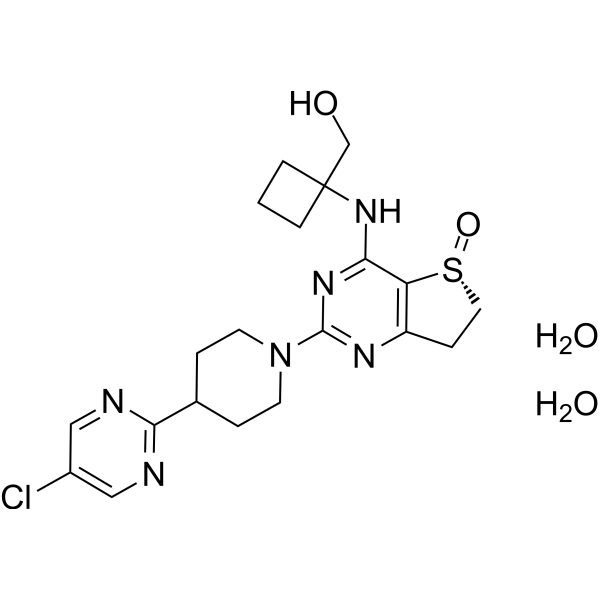
- HY-153192
-
|
BI 1015550
|
Phosphodiesterase (PDE)
|
Inflammation/Immunology
|
|
Nerandomilast (BI 1015550) is an orally active inhibitor of PDE4B with an IC50 value of 7.2 nM. Nerandomilast has good safety and potential applications in inflammation, allergic diseases, pulmonary fibrosis, and chronic obstructive pulmonary disease (COPD) .
|
-
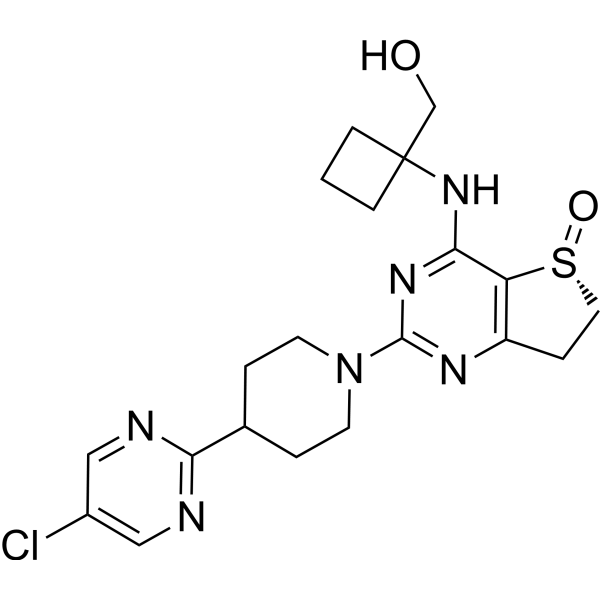
- HY-100356
-
|
CNS 1102 free base
|
iGluR
|
Neurological Disease
|
|
Aptiganel (CNS 1102 (free base)), peptide, is a noncompetitive NMDA antagonist with cerebroprotective effects. Aptiganel can be used for the research of stroke .
|
-

- HY-122076
-
|
|
Antibiotic
Bacterial
Fungal
|
Infection
|
|
A-26771B is an antibiotic can be obtained from Penicillium turbatum. A-26771B exhibits moderate antimicrobial activity against Gram-positive bacteria, mycoplasma, and fungi. A-26771B also inhibits potassium-dependent ATPase in rat liver mitochondria .
|
-
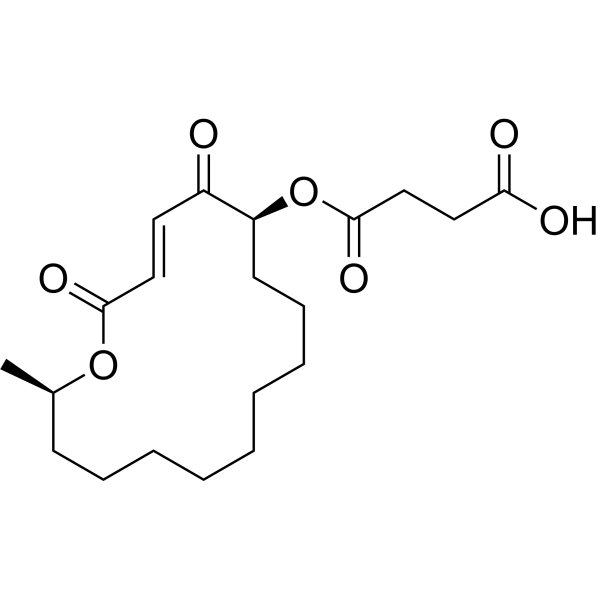
- HY-131696
-
|
11-deoxy PGF1α
|
Others
|
Cardiovascular Disease
Others
|
|
11-deoxy Prostaglandin F1α (11-deoxy PGF1α) is an analog of prostaglandin F1α, exhibits side effects on intestines and causes the uterine contraction. 11-deoxy Prostaglandin F1α exhibits activity as vasopressor and bronchoconstrictor .
|
-

- HY-P1025A
-
-
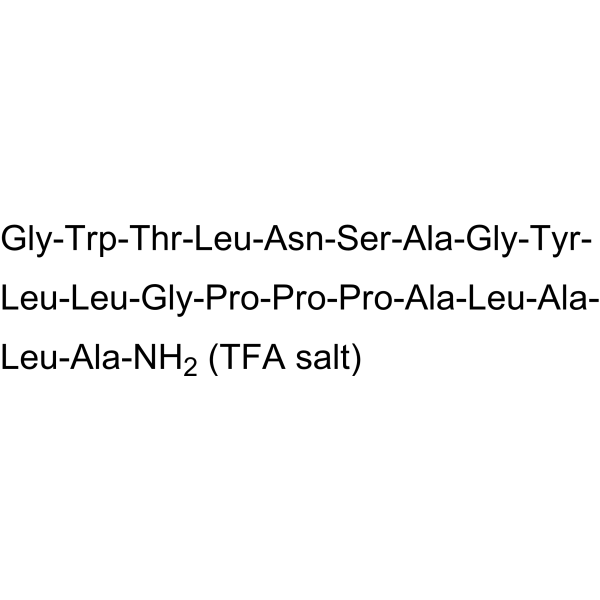
- HY-109058
-
|
QGC001; RB150
|
Aminopeptidase
|
Cardiovascular Disease
|
|
Firibastat (QGC001), an orally active brain penetrating proagent of EC33, is a first-in-class brain aminopeptidase A (APA) inhibitor (Ki=200 nM). Firibastat selectively and specifically inhibits conversion of brain angiotensin-II into angiotensin-III and decreases blood pressure in hypertensive rats .
|
-
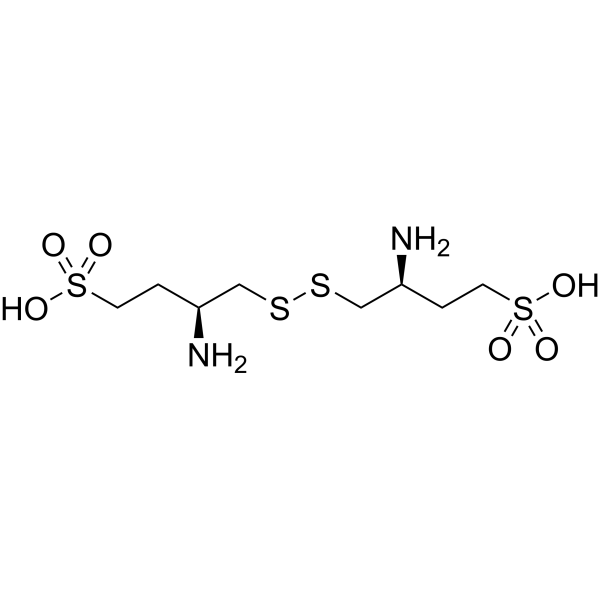
- HY-111475
-
|
|
Mitochondrial Metabolism
|
Cardiovascular Disease
|
|
Mitochondrial fusion promoter M1 is a mitochondrial dynamic modulator. Mitochondrial fusion promoter M1 preserves the mitochondrial function and promotes cellular respiration. Mitochondrial fusion promoter M1 alleviates cardiac and brain damage in rats with cardiac ischemia/reperfusion injury .
|
-

- HY-13964A
-
|
|
GHSR
|
Metabolic Disease
|
|
YIL781 hydrochloride is a potent and orally active ghrelin receptor (GHSR) antagonist. YIL781 hydrochloride produces a greater improvement in glucose homeostasis in rats. YIL781 hydrochloride inhibits the calcium response induced by ghrelin with pIC50 values of 7.90 and 8.27, respectively .
|
-
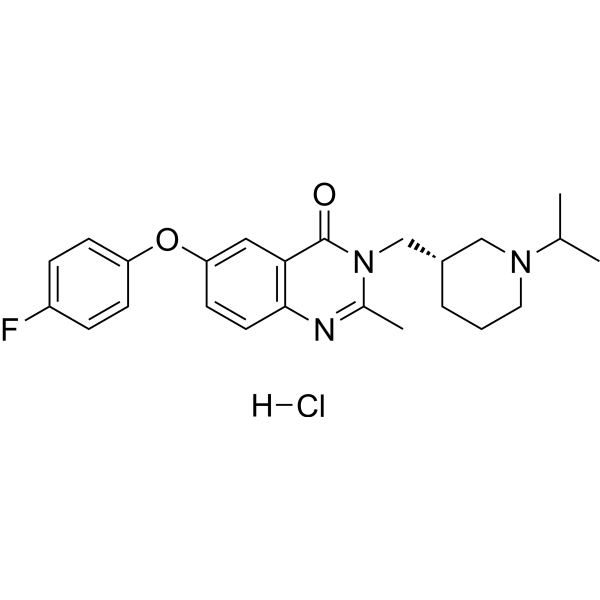
- HY-154829A
-
|
|
Others
|
Inflammation/Immunology
|
|
AC-099 hydrochloride (compound 3) is a selective NPFF2R full agonist (EC50=1189 nM) and NPFF1R partial agonist (EC50=2370 nM). AC-099 hydrochloride attenuates spinal nerve ligation-induced hypersensitivity in rats .
|
-
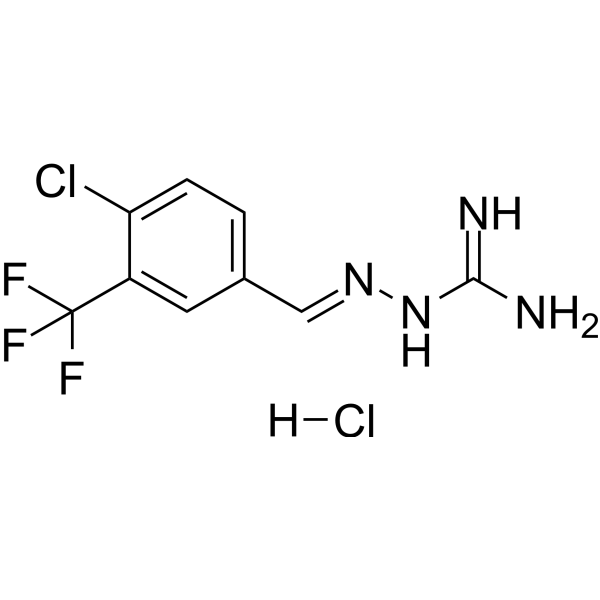
- HY-13964
-
|
|
GHSR
|
Metabolic Disease
|
|
YIL781 is a potent and orally active ghrelin receptor (GHSR) antagonist. YIL781 produces a greater improvement in glucose homeostasis in rats. YIL781 inhibits the calcium response induced by ghrelin with pIC50 values of 7.90 and 8.27, respectively .
|
-
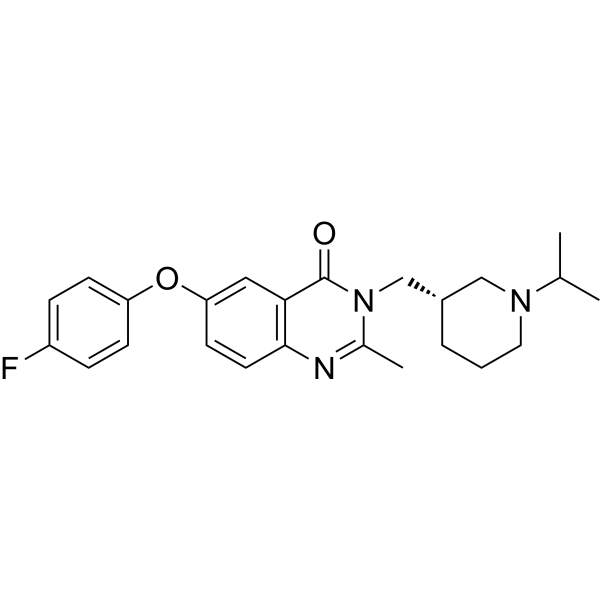
- HY-154829
-
|
|
Others
|
Inflammation/Immunology
|
|
AC-099 (compound 3) is a selective NPFF2R full agonist (EC50=1189 nM) and NPFF1R partial agonist (EC50=2370 nM). AC-099 attenuates spinal nerve ligation-induced hypersensitivity in rats .
|
-
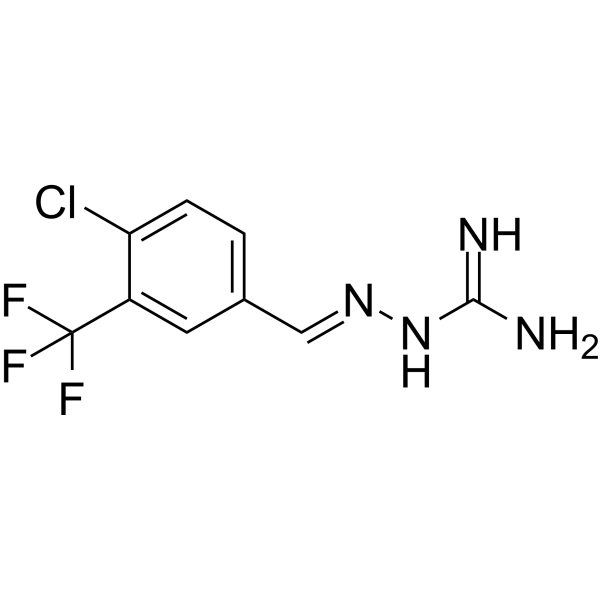
- HY-116625
-
|
|
GHSR
|
Neurological Disease
|
|
PF-04628935 (compound 10n) is a potent ghrelin receptor inverse agonist, with an IC50 of 4.6 nM. PF-04628935 exhibits oral bioavailability of 43% in rats and shows reasonable penetration into the brain. PF-04628935 can be used for stress and anxiety research .
|
-
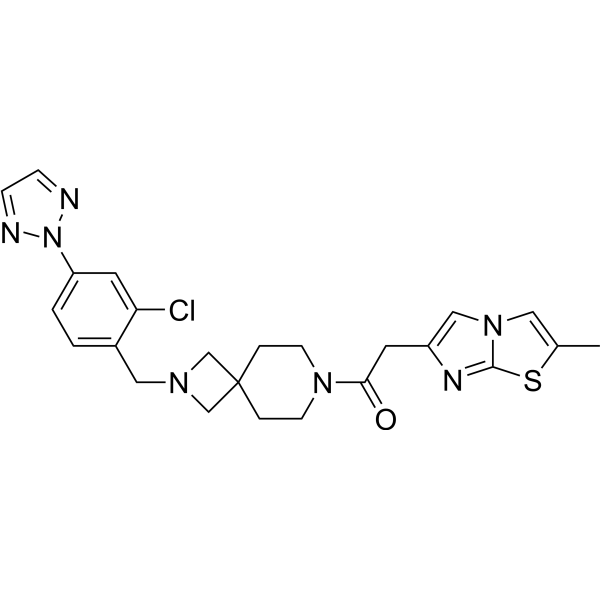
- HY-P2046
-
|
|
Opioid Receptor
|
Neurological Disease
|
|
β-Endorphin (rat) is an endogenous opioid neuropeptide and peptide hormone. β-Endorphin (rat) has analgesic activity and also contributes to food intake in satiated rats. β-Endorphin (rat) can be used in the research of neurological diseases such as analgesia and drug addiction .
|
-

- HY-100986
-
|
|
NO Synthase
|
Cardiovascular Disease
|
|
L-NIO dihydrochloride is a potent, non-selective and NADPH-dependent nitric oxide synthase (NOS) inhibitor, with Kis of 1.7, 3.9, 3.9 μM for neuronal (nNOS), endothelial (eNOS), and inducible (iNOS), respectively . L-NIO dihydrochloride induces a consistentfocal ischemic infarctin rats .
|
-
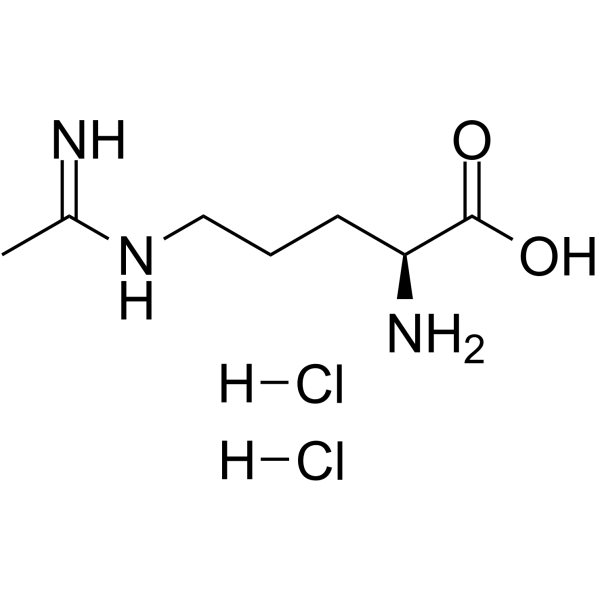
- HY-18332C
-
|
|
Serotonin Transporter
Dopamine Transporter
|
Neurological Disease
|
|
DOV-216,303 (Free Base) is a potent triple serotonin, norepinephrine, and dopamine reuptake inhibitor, with IC50 values of 14 nM, 20 nM and 78 nM for hSERT, hNET and hDAT, respectively . Has antidepressant-like effects and increases monoamine release in the prefrontal cortex of olfactory bulbectomized (OBX) rats .
|
-

- HY-14858
-
|
SLV 320
|
Adenosine Receptor
|
Cardiovascular Disease
|
|
Derenofylline (SLV 320) is a potent, selective and orally active adenosine A1 receptor antagonist, with Ki values of 1 nM, 200 nM and 398 nM for human A1, A3 and A2A receptors respectively. Derenofylline suppresses cardiac fibrosis and attenuates albuminuria without affecting blood pressure in rats .
|
-
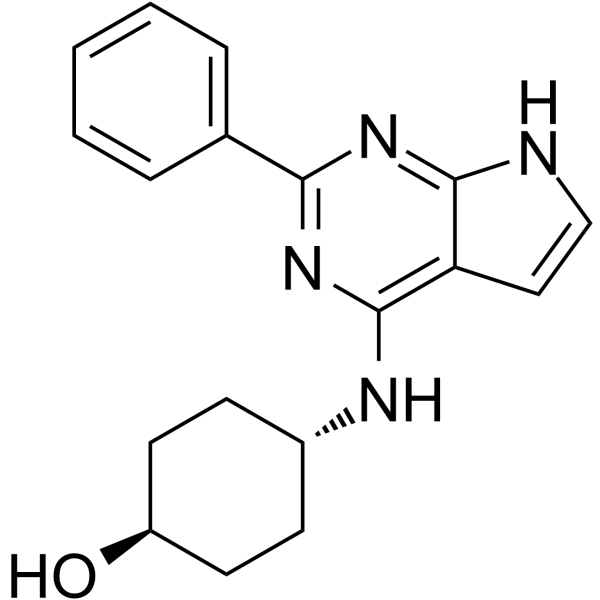
- HY-103460
-
|
|
Endothelin Receptor
|
Cardiovascular Disease
|
|
IRL 2500 is a potent Endothelin receptor antagonist. IRL 2500 shows IC50 values of 1.3 and 94 nM for ETB and ETA receptors, respectively. IRL 2500 inhibits ETB receptor-mediated blood pressure increase and renal vascular resistance in rats in vivo .
|
-
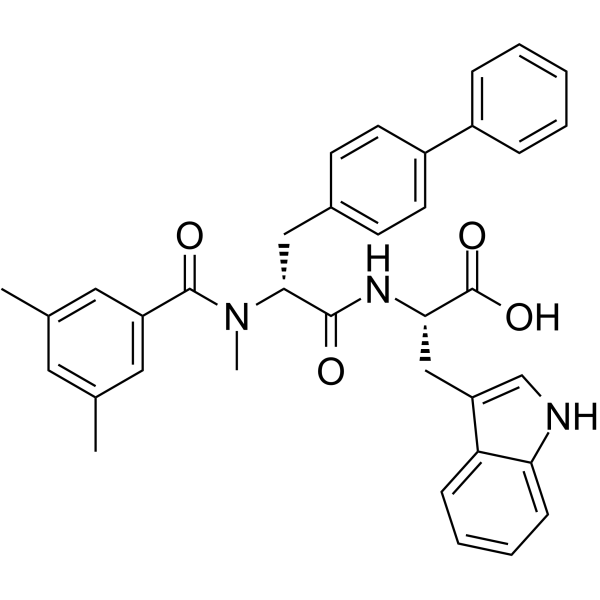
- HY-122666
-
|
|
GlyT
|
Metabolic Disease
|
|
Org 25935 is a potent and selective glycine transporter 1 protein (GlyT1) inhibitor with an IC50 value of 100 nM. Org 25935 can decrease ethanol (EtOH) intake and EtOH preference in rats, whereas water intake is unaffected. Org 25935 can be used for researching alcohol dependence or abuse .
|
-
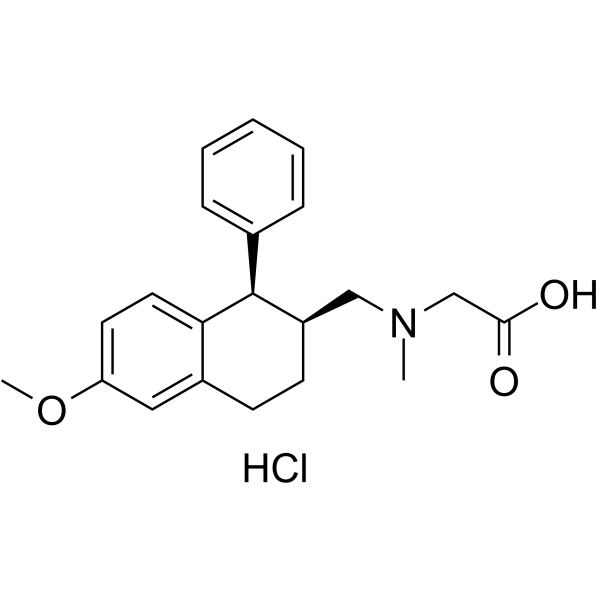
- HY-P3429
-
|
|
PKC
|
Cardiovascular Disease
|
|
SAMβA is conjugated to the cell permeable peptide TAT47-57. SAMβA, a rationally designed selective antagonist of Mfn1-βIIPKC association. SAMβA is a selective inhibitor of mitofusin 1-βIIPKC association improves heart failure outcome in rats .
|
-

- HY-150214
-
|
|
Others
|
Cancer
|
|
ODN MT01 was designed based on human mitochondrial DNA sequences, which is an inhibitory ODN that promotes osteocyte differentiation. ODN MT01 could promote osteoblast maturation and activation in rats, reduce rat alveolar bone absorption caused by periodontitis, regulate the expression levels of osteogenesis-related factors.
|
-
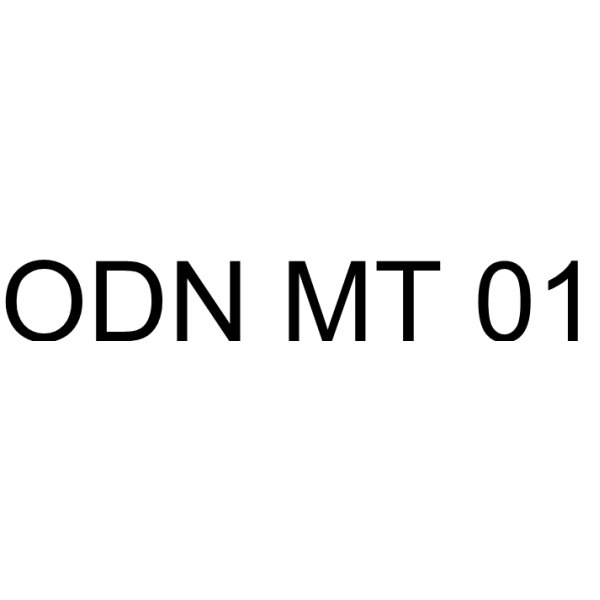
- HY-100986B
-
|
|
NO Synthase
|
Cardiovascular Disease
|
|
L-NIO is a potent, non-selective and NADPH-dependent nitric oxide synthase (NOS) inhibitor, with Kis of 1.7, 3.9, 3.9 μM for neuronal (nNOS), endothelial (eNOS), and inducible (iNOS), respectively . L-NIO induces a consistentfocal ischemic infarctin rats .
|
-
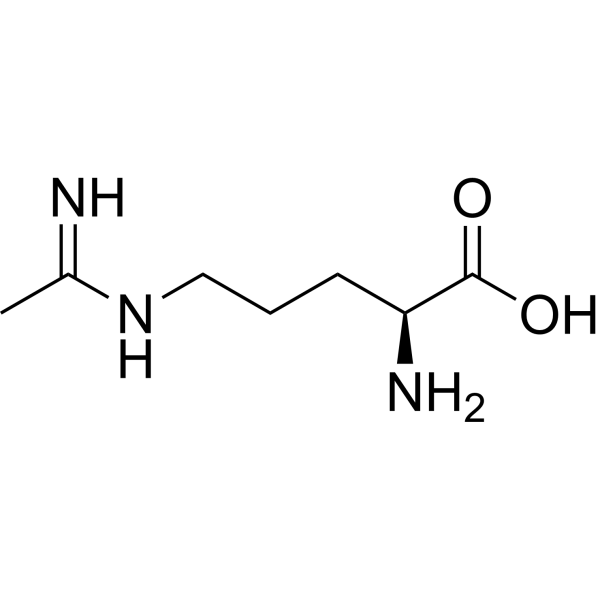
- HY-P10039
-
|
|
Amyloid-β
|
Neurological Disease
|
|
β-Amyloid (1-16) rat is a β-amyloid peptide (Abeta), a metal-binding domain fragment of amyloid. Three amino acid substitutions in β-Amyloid (1-16) rat that differ from humans render rats and mice less susceptible to AD-like neurodegeneration .
|
-

- HY-150214A
-
|
|
Others
|
Cancer
|
|
ODN MT01 sodium was designed based on human mitochondrial DNA sequences, which is an inhibitory ODN that promotes osteocyte differentiation. ODN MT01 sodium could promote osteoblast maturation and activation in rats, reduce rat alveolar bone absorption caused by periodontitis, regulate the expression levels of osteogenesis-related factors.
|
-
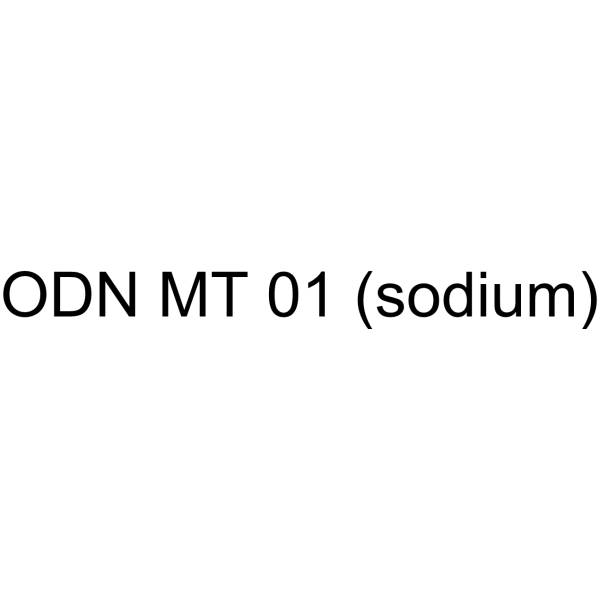
- HY-D1005A16
-
|
PEG-PPG-PEG, 4600 (Averag)
|
Biochemical Assay Reagents
|
Others
|
|
Poloxamer 235 P85 is block polymer of polyoxyethylene and polyoxypropylene with average molecular mass of 4600. Poloxamer 235 P85 exhibits acute and subchronic toxicity in albino rats with an oral LD50 of >34.6 g/kg. Poloxamer 235 P85 induces ocular irritation in rabbits .
|
-

- HY-113854
-
|
|
Glucocorticoid Receptor
|
Cardiovascular Disease
Endocrinology
|
|
AZD2906 is a selective glucocorticoid receptor (GR) agonist, increases micronucleated immature erythrocytes in the bone marrow of rats. AZD2906 shows IC50s of 2.2, 0.3, 41.6 and 7.5 nM at GR in human, rat PBMC and human, rat whole blood, respectively .
|
-
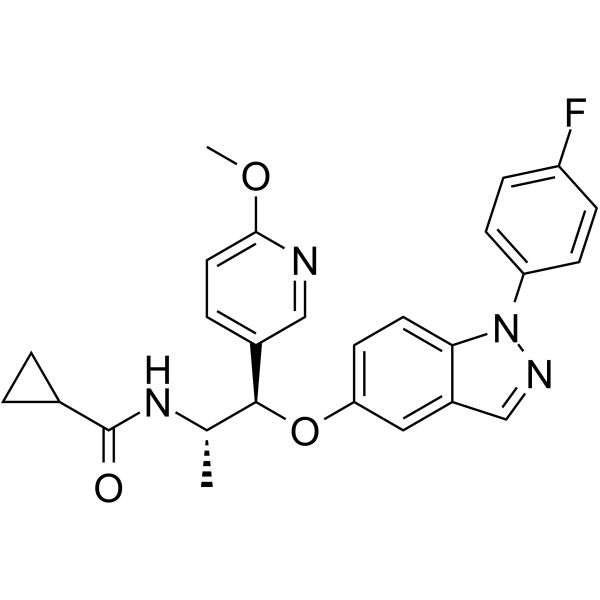
- HY-15066A
-
|
FG9065 disodium
|
|
|
|
CNQX disodium (FG9065 disodium) is a potent and competitive AMPA/kainate receptor antagonist with IC50s of 0.3 μM and 1.5 μM, respectively. CNQX disodium is a competitive non-NMDA receptor antagonist . CNQX disodium blocks the expression of fear-potentiated startle in rats .
|
-
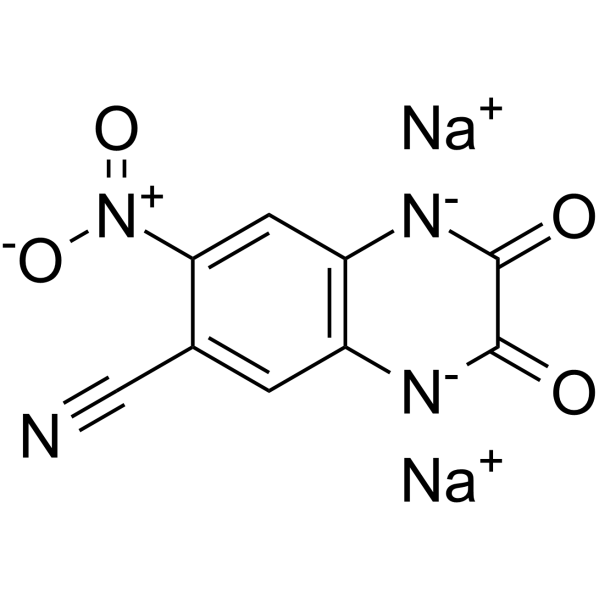
- HY-19037
-
|
|
|
|
|
SM-2470 is a potent α1-adrenoceptor antagonist, has sympathetic nerve activity in anesthetized rats . SM-2470 is an antihypertensive agent. SM-2470 exhibits hypocholesterolaemic effect by the inhibition of cholesterol absorption related to the reduction of cholesterol solubilization .
|
-
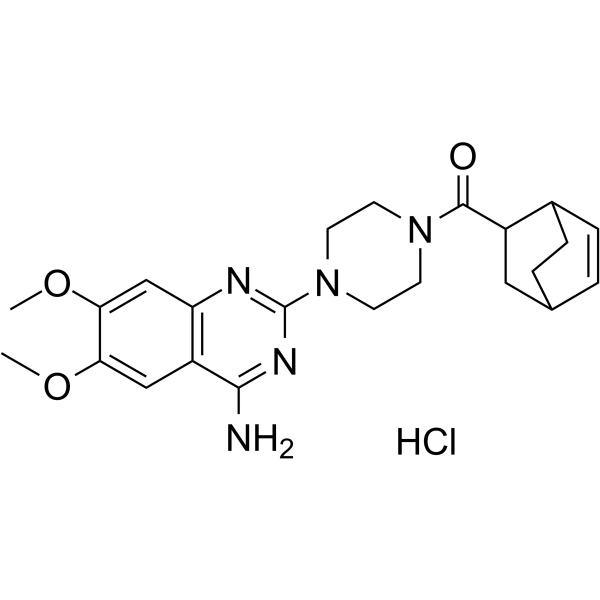
- HY-137976
-
|
Penequinine hydrochloride
|
mAChR
NF-κB
|
Inflammation/Immunology
|
|
Penehyclidine (Penequinine) hydrochloride, a anticholinergic agent, is a selective antagonist of M1 and M3 receptors. Penehyclidine hydrochloride activates NF-kβ in lung tissue and inhibits the release of inflammatory factors. Penehyclidine hydrochloride can alleviate the pulmonary inflammatory response in rats with chronic obstructive pulmonary disease (COPD) undergoing mechanical ventilation .
|
-
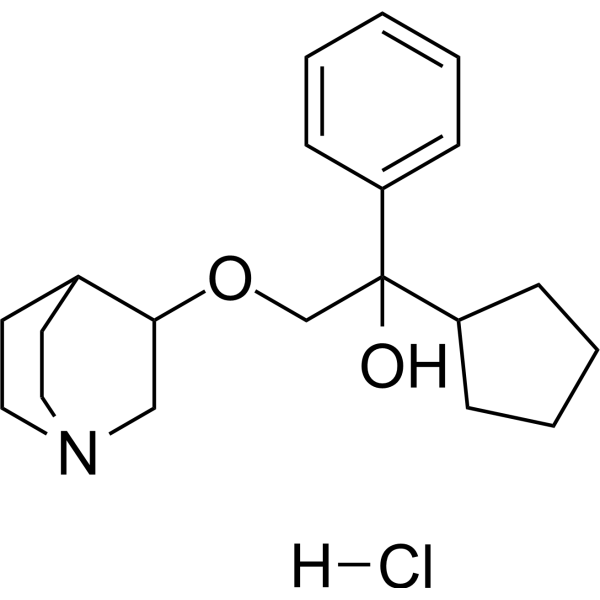
- HY-144303
-
|
|
Xanthine Oxidase
|
Metabolic Disease
|
|
Xanthine oxidase-IN-4 (compound 19a) is an orally active and potent xanthine oxidase (XO) inhibitor, with an IC50 of 0.039 μM. Xanthine oxidase-IN-4 exhibits hypouricemic potency in potassium oxonate induced hyperuricemia rats. Xanthine oxidase-IN-4 can be used for hyperuricemia and gout research .
|
-
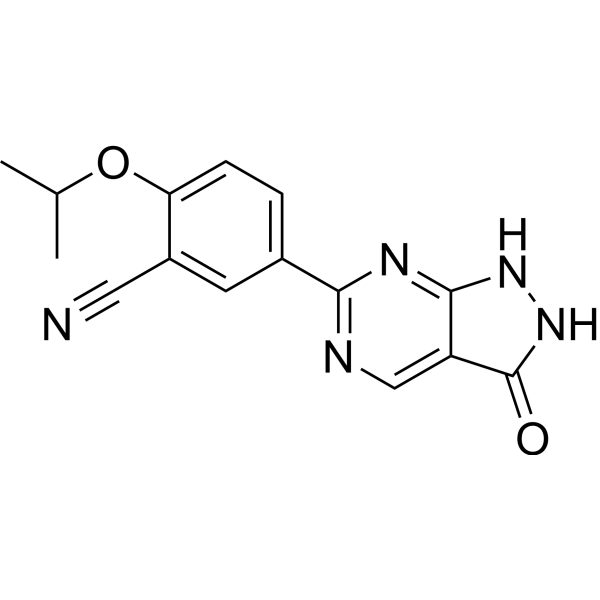
- HY-142119
-
|
|
mAChR
NF-κB
|
Inflammation/Immunology
|
|
Penehyclidine, a anticholinergic agent, is a selective antagonist of M1 and M3 receptors. Penehyclidine activates NF-kβ in lung tissue and inhibits the release of inflammatory factors. Penehyclidine can alleviate the pulmonary inflammatory response in rats with chronic obstructive pulmonary disease (COPD) undergoing mechanical ventilation .
|
-
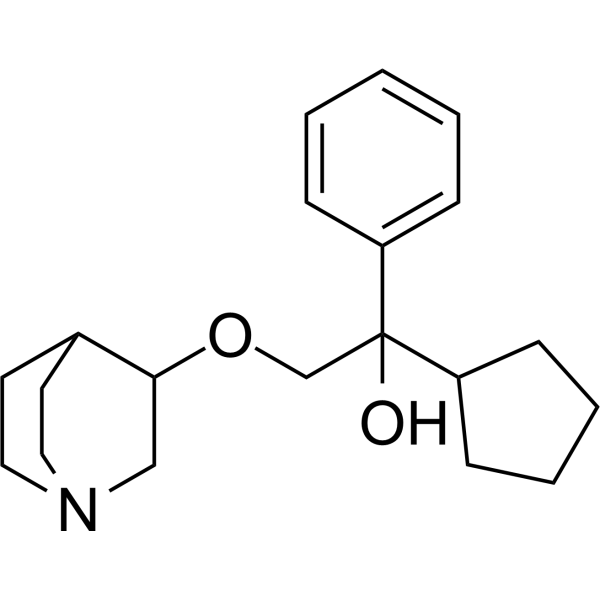
- HY-100812
-
|
|
|
|
|
2-Hydroxysaclofen is a potent γ-amino-butyric-acid-B (GABAB) receptor antagonist. 2-Hydroxysaclofen can abolish nicotine-induced hypolocomotor effects and increases the antinociceptive effects. 2-Hydroxysaclofen can stimulate luteinizing hormone (LH) secretion in female rats .
|
-

- HY-152927
-
|
|
Biochemical Assay Reagents
|
Others
|
|
Hydroxypropylmethyl cellulose acetate succinate (Mw: 20-100k Da) is a cosolvent for preparing SDDs of low-solubility agents. Hydroxypropylmethyl cellulose acetate succinate (Mw: 20-100k Da) exhibits no acute/subchronic/chronic toxicity in rats, with oral activity and LD50 >2.5 g/kg .
|
-

- HY-118497
-
|
|
Endothelin Receptor
|
Cardiovascular Disease
Metabolic Disease
|
|
BMS 182874 is an orallyactive, highly selective endothelin receptor (ETA receptor) antagonist, with IC50 value of 0.150 μM, Ki of 0.055 μM. BMS 182874 reduces the arterial pressure of Deoxycorticosterone acetate (HY-B1472) induced hypertension model in rats, and can be used for cardiovascular disease research .
|
-
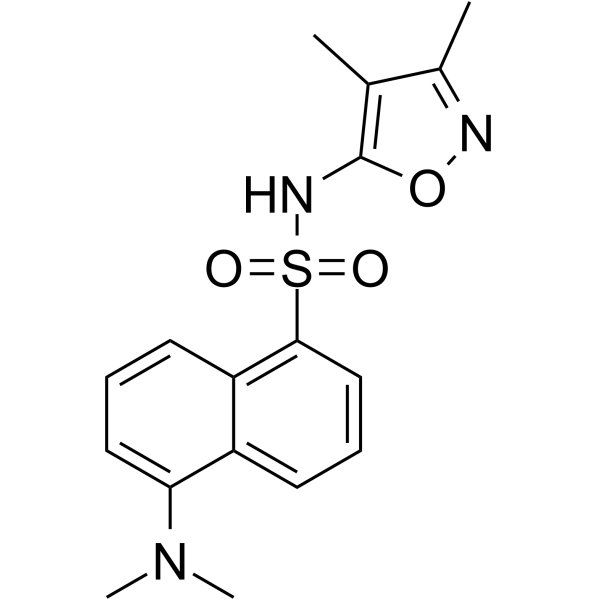
- HY-155553
-
|
|
GPR119
|
Metabolic Disease
|
|
GPR119 agonist 2 (compound 43) is an orally active GPR119 agonist. GPR119 agonist 2 shows good pharmacokinetic characteristics in rodents and can effectively improve glucose tolerance in mice and rats. GPR119 agonist 2 has the potential to study type 2 diabetes .
|
-
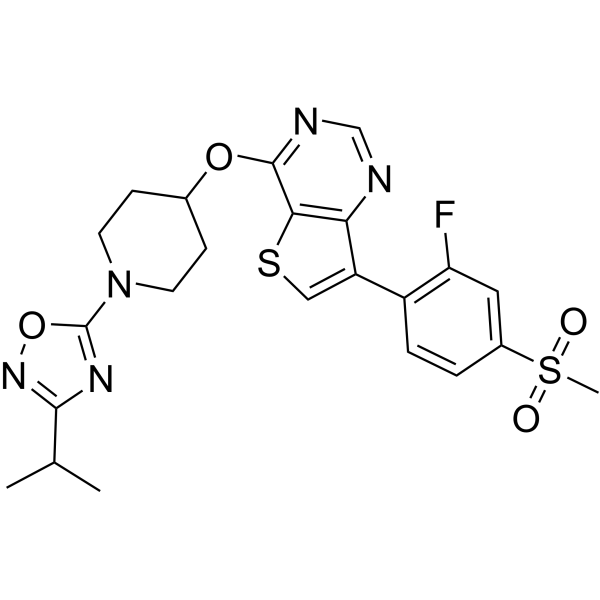
- HY-B0235R
-
|
|
Others
|
Metabolic Disease
|
|
Trichlormethiazide (Standard) is the analytical standard of Trichlormethiazide. This product is intended for research and analytical applications. Trichlormethiazide is an orally active thiazide diuretic, with antihypertensive effect. Trichlormethiazide increases urine volume (UV), Na and K excretion and tends to improve the depressed creatinine clearance (CCRE) in acute renal failure rats model .
|
-
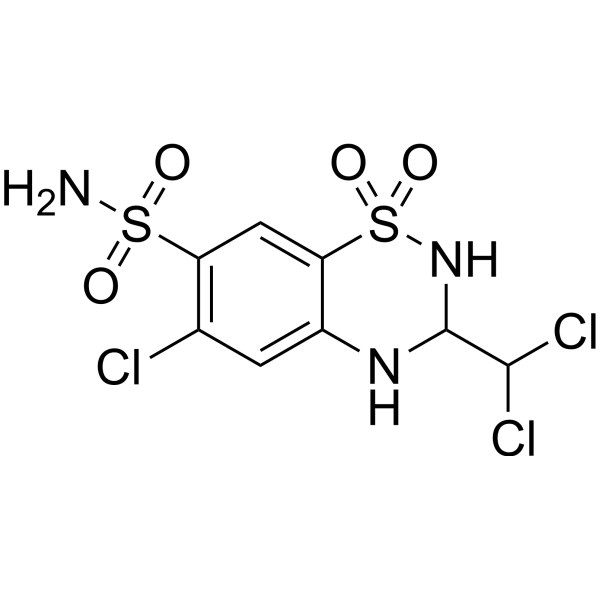
- HY-100968
-
|
|
Dopamine Receptor
|
Neurological Disease
|
|
GBR 12783 dihydrochloride is a specific, potent and selective dopamine uptake inhibitor that inhibits the [ 3H]dopamine uptake by rat and mice striatal synaptosomes with IC50s of 1.8 nM and 1.2 nM, respectively. GBR 12783 dihydrochloride can improve memory performance and increase hippocampal acetylcholine release in rats .
|
-

- HY-W008610
-
|
|
Dopamine Receptor
|
Neurological Disease
|
|
GBR 12783 is a specific, potent and selective dopamine uptake inhibitor that inhibits the [ 3H]dopamine uptake by rat and mice striatal synaptosomes with IC50s of 1.8 nM and 1.2 nM, respectively. GBR 12783 can improve memory performance and increase hippocampal acetylcholine release in rats .
|
-

- HY-16100
-
|
|
Fatty Acid Synthase (FASN)
|
Metabolic Disease
Cancer
|
|
BI 99179 is a potent and selective type I fatty acid synthase (FAS) inhibitor with an IC50 of 79 nM. BI 99179 is a tool compound suitable for the in vivo validation of FAS as a target for lipid metabolism related diseases. BI 99179 exhibits significant exposure (both peripheral and central) upon oral administration in rats .
|
-
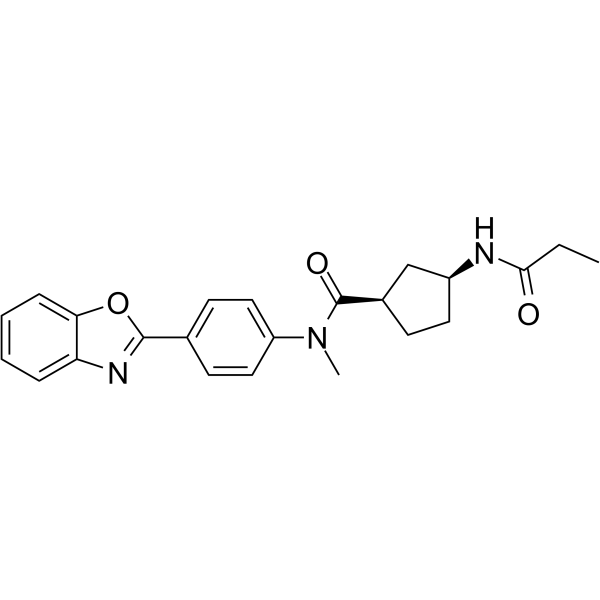
- HY-110184
-
|
|
Potassium Channel
|
Neurological Disease
|
|
PK-THPP is a potent TWIK-related acid-sensitive K(+) ion channel (TASK-3 ion channel) blocker (IC50s are 35 nM and 300 nM for TASK-3 and TASK-1, respectively) . PK-THPP increases breathing rate and induces respiratory alkalosis in rats .
|
-
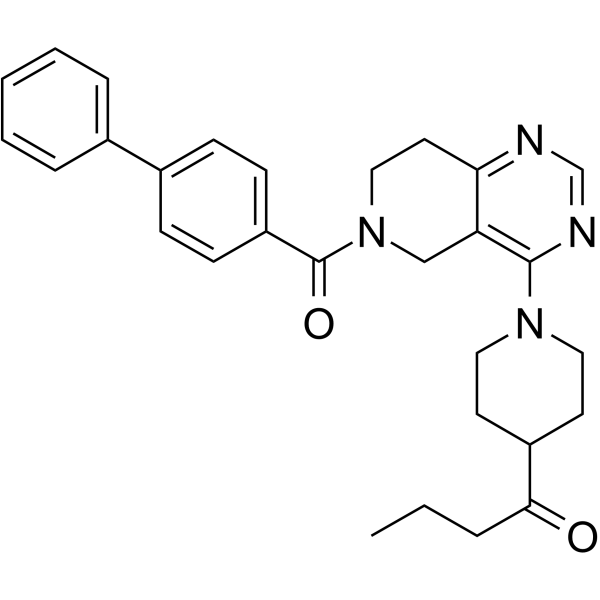
- HY-116211
-
|
WIN-25978
|
Biochemical Assay Reagents
|
Neurological Disease
|
|
Amfonelic acid (WIN-25978) is a highly selective dopamine reuptake inhibitor. Amfonelic acid interferes with the in vitro neuronal uptake of norepinephrine in the iris of rats, but does not alter the concentrations of norepinephrine or dopamine in the whole mouse brain. Amfonelic acid can be used as a pharmacological tool to study the brain reward system, dopamine pathway and dopamine transporter .
|
-
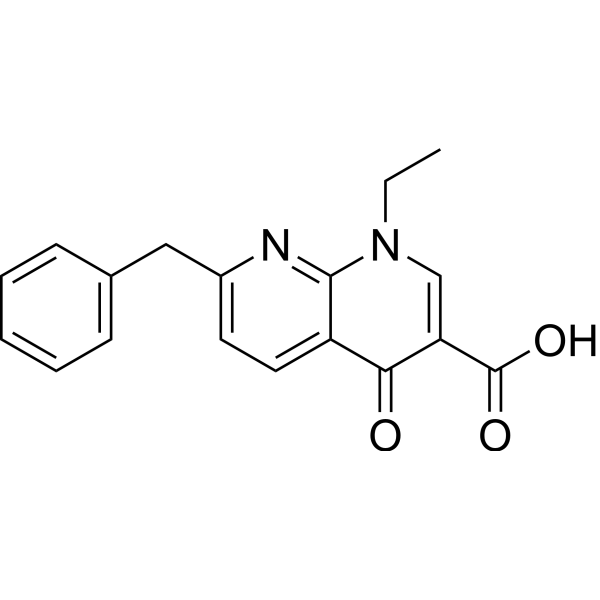
- HY-157931
-
|
|
Histamine Receptor
|
Neurological Disease
|
|
Anticancer agent 192 (compound XXI) is a steroid-based histamine H3 receptor antagonist with no affinity for muscarinics and hERG. Anticancer agent 192 is quite stable in human and rat liver microsomes. Anticancer agent 192 can improve the cognitive level and reduce the degree of addiction in rats in the in vivo addiction test .
|
-
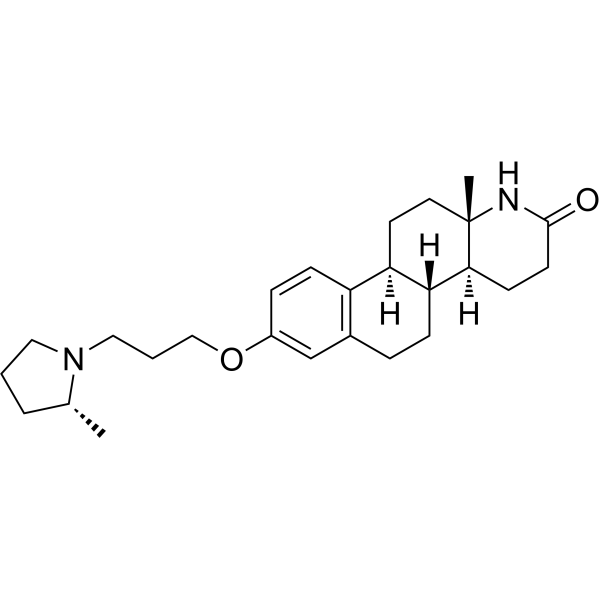
- HY-14466
-
|
|
Prostaglandin Receptor
|
Endocrinology
|
|
GW 848687X is a selective, orally active prostaglandin EP1 receptor antagonist for the inhibition of inflammatory pain. The oral bioavailability of GW 848687X was 54% in rats and 53% in dogs. GW 848687X has a half-life of 2 hours and has inhibitory potential for both acute and chronic pain .
|
-
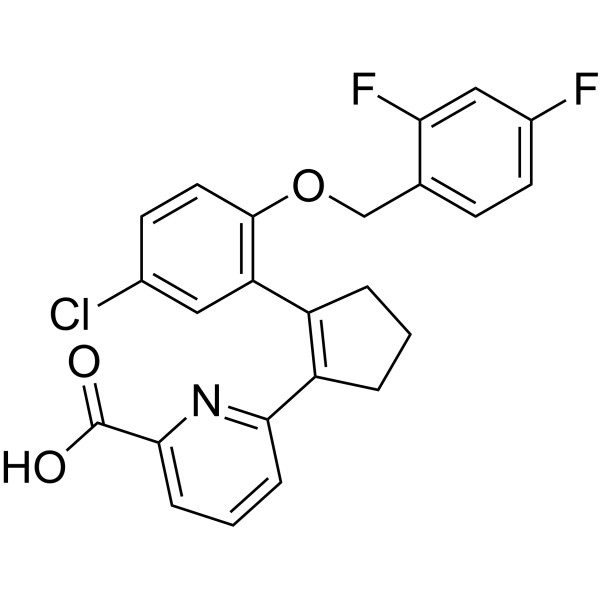
- HY-N0157
-
|
6-Carboxyuracil; Vitamin B13
|
Nucleoside Antimetabolite/Analog
Endogenous Metabolite
|
Metabolic Disease
|
|
Orotic acid (6-Carboxyuracil), a precursor in biosynthesis of pyrimidine nucleotides and RNA, is released from the mitochondrial dihydroorotate dehydrogenase (DHODH) for conversion to UMP by the cytoplasmic UMP synthase enzyme. Orotic acid is a marker for measurement in routine newborn screening for urea cycle disorders. Orotic acid can induce hepatic steatosis and hepatomegaly in rats .
|
-
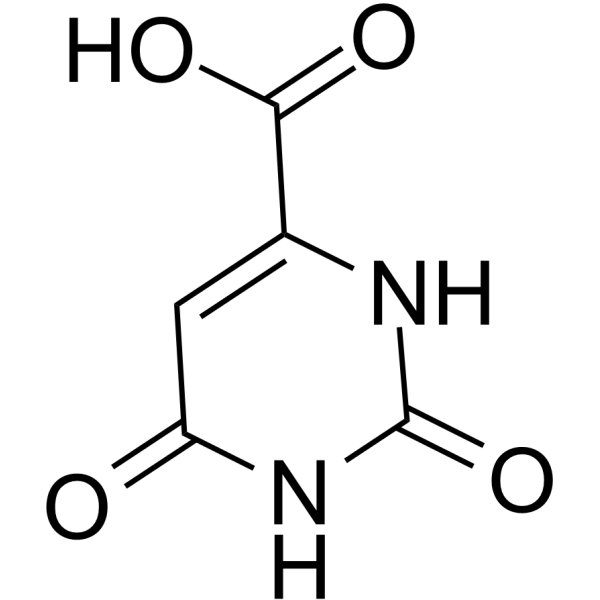
- HY-N2026
-
|
Propyl parahydroxybenzoate; Propyl 4-hydroxybenzoate
|
|
|
|
Propylparaben (Propyl parahydroxybenzoate) is an antibacterial preservative that can be produced by plants and bacteria. Propylparaben is commonly used in cosmetics, pharmaceuticals and foods. Propylparaben disrupts follicular growth and steroidogenic function by altering cell cycle, apoptosis and steroidogenic pathways. Propylparaben also reduced sperm count and motility in rats .
|
-
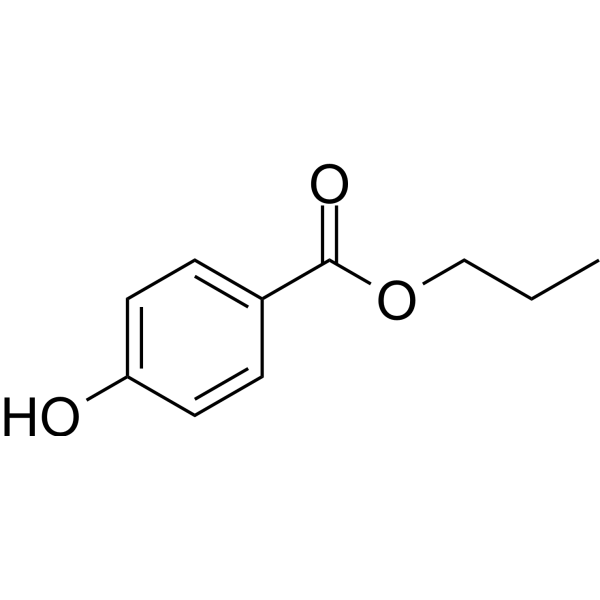
- HY-N0157A
-
|
|
Nucleoside Antimetabolite/Analog
Endogenous Metabolite
|
Metabolic Disease
|
|
Orotic acid (zinc), a precursor in biosynthesis of pyrimidine nucleotides and RNA, is released from the mitochondrial dihydroorotate dehydrogenase (DHODH) for conversion to UMP by the cytoplasmic UMP synthase enzyme. Orotic acid (zinc) is a marker for measurement in routine newborn screening for urea cycle disorders. Orotic acid (zinc) can induce hepatic steatosis and hepatomegaly in rats .
|
-
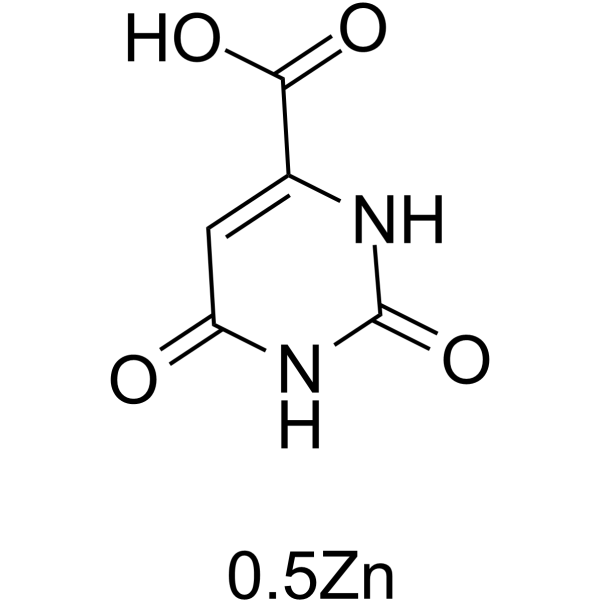
- HY-111615
-
|
|
Somatostatin Receptor
|
Neurological Disease
|
|
J-2156 is a high potent, selective somatostatin receptor type 4 (SST4 receptor) agonist with IC50s of 0.05 nM and 0.07 nM for human and rat SST4 receptors, respectively. J-2156 is used for the relief of mechanical allodynia and mechanical hyperalgesia in the ipsilateral hindpaws in rats .
|
-
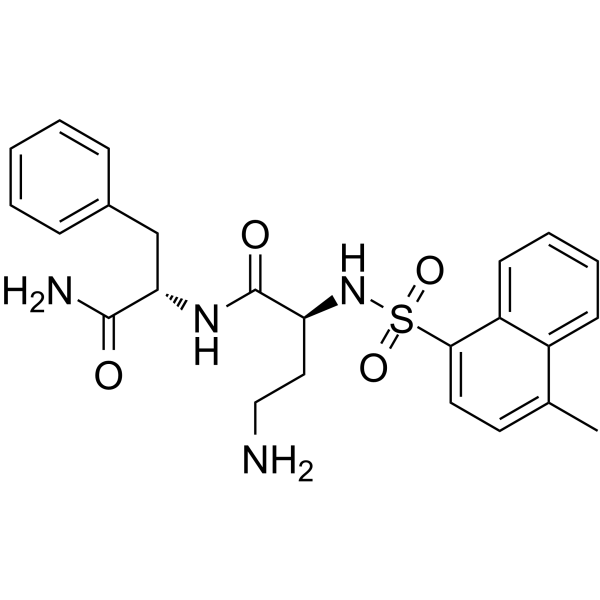
- HY-130208
-
|
TDG
|
Galectin
|
Metabolic Disease
Inflammation/Immunology
Cancer
|
|
Thiodigalactoside (TDG) is an orally active and potent galectin (GAL) inhibitor with Kd values of 24 μM, 49 μM for GAL1 and GAL3, respectively . Thiodigalactoside, a non-metabolizable disaccharide, has anti-inflammatory and anti-cancer activity. Thiodigalactoside dramatically reduces body weight gain in diet-induced obese rats .
|
-
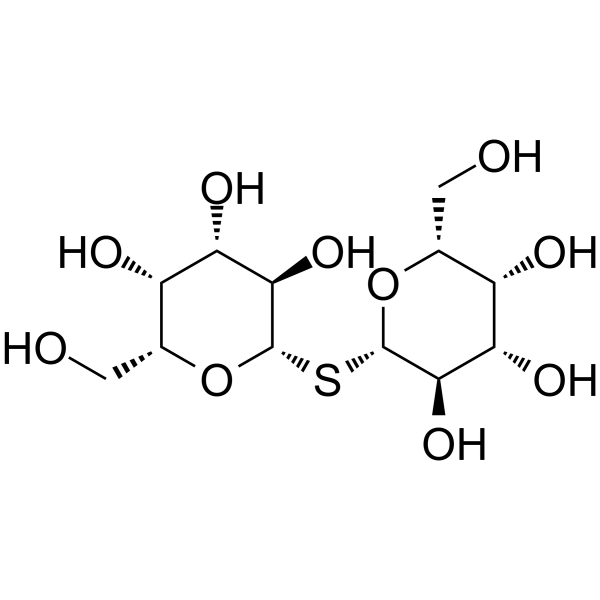
- HY-12598
-
|
|
mGluR
|
Neurological Disease
|
|
(S)-3,5-DHPG is a weak, but selective group I metabotropic glutamate receptors (mGluRs) agonist with Ki values of 0.9 µM and 3.9 µM for mGluR1a and mGluR5a, respectively . (S)-3,5-DHPG exhibits anxiolytic activity in rats subjected to hypoxia .
|
-

- HY-B0816
-
|
|
|
|
|
Etofenprox is an orally active non-ester pyrethroid insecticide. Etofenprox induces toxicity against many pest insects, including Diptera rather than mammalian and fish. Etofenprox has a liver tumor-promoting activity in rats accompanied with microsomal ROS production increase. Etofenprox can be used in agricultural pest control and malaria research .
|
-
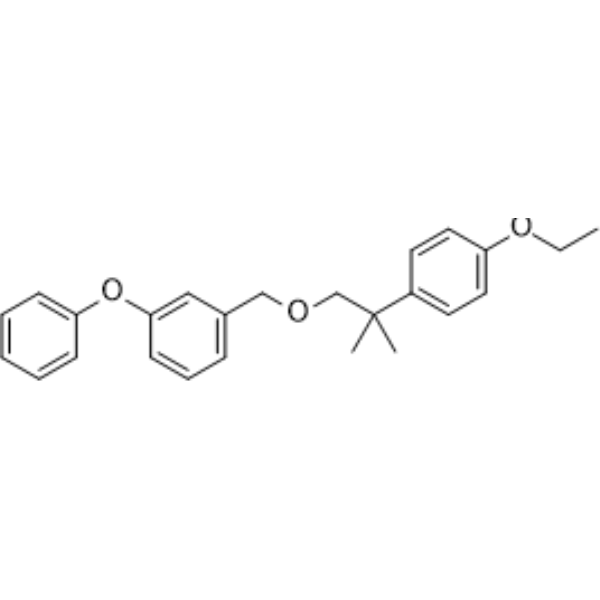
- HY-P1216A
-
|
|
Melanocortin Receptor
|
Neurological Disease
|
|
HS014 TFA is a potent and selective melanocortin-4 (MC4) receptor antagonist, with Kis of 3.16, 108, 54.4 and 694 nM for human MC4, MC1, MC3 and MC5 receptors respectively. HS014 TFA increases food intake in free-feeding rats .
|
-
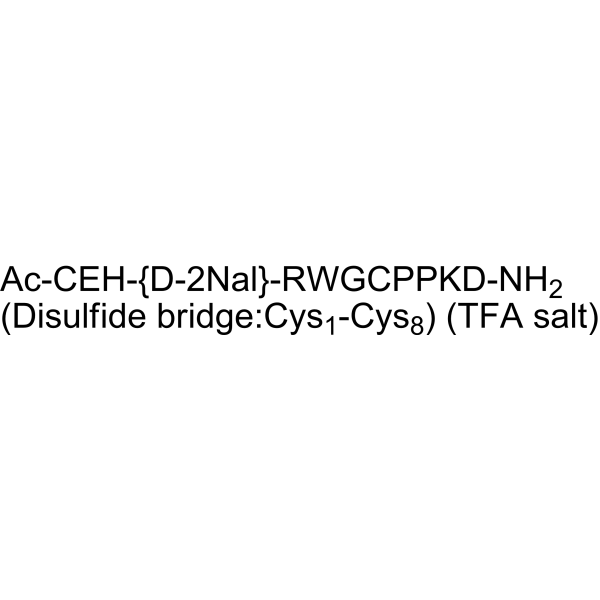
- HY-N2026A
-
|
Propyl parahydroxybenzoate sodium; Propyl 4-hydroxybenzoate sodium
|
Endogenous Metabolite
Bacterial
Apoptosis
|
Infection
|
|
Propylparaben sodium (Propyl parahydroxybenzoate) is an antimicrobial preservative which can be produced naturally by plants and bacteria. Propylparaben sodium is prevalently used in cosmetics, pharmaceuticals, and foods. Propylparaben sodium disrupts antral follicle growth and steroidogenic function by altering the cell-cycle, apoptosis, and steroidogenesis pathways. Propylparaben sodium also decreases sperm number and motile activity in rats .
|
-
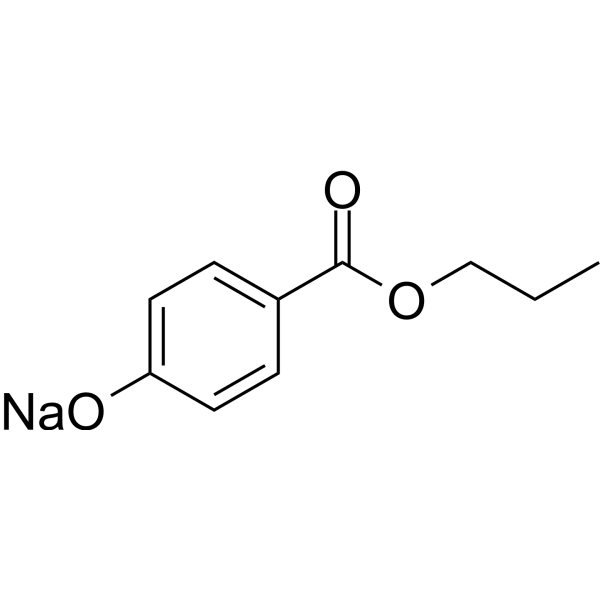
- HY-112257
-
S-23
1 Publications Verification
|
Androgen Receptor
|
Metabolic Disease
|
|
S-23 is an orally active selective androgen receptor modulator (SARM) with a Ki of 1.7 nM. S-23 induces androgen receptor (AR)-mediated transcriptional activation in CV-1 cells. S-23 increases prostate, seminal vesicle, and levator ani muscle weights in castrated rats .
|
-

- HY-118543
-
|
|
HIF/HIF Prolyl-Hydroxylase
|
Cardiovascular Disease
|
|
TM6089 is a unique Prolyl Hydroxylase (PHD) inhibitor which stimulates HIF activity without iron chelation and induces angiogenesis and exerts organ protection against ischemia. Local administration of TM6089 enhances angiogenesis, and oral administration stimulates HIF activity in transgenic rats expressing a hypoxia-responsive reporter vector .
|
-
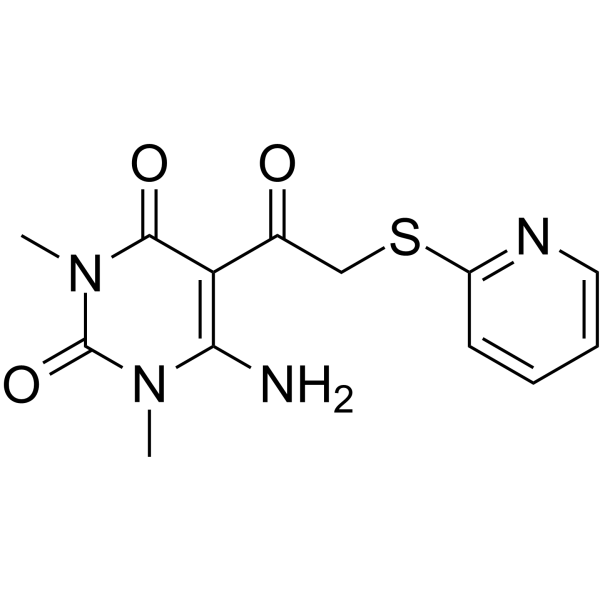
- HY-103327
-
|
|
Cannabinoid Receptor
|
Metabolic Disease
|
|
MJ15 is a potent and selective CB1 receptor antagonist with a Ki of 27.2 pM and an IC50 of 118.9 pM for rat CB1 receptors. MJ15 exhibits potency in obesity and hyperlipidemia models. MJ15 inhibits food intake and increases in body weight in diet-induced obese rats and mice .
|
-

- HY-100851A
-
|
|
|
|
|
LY-272015 hydrochloride is an orally active, specific 5-HT2B receptor antagonist. LY-272015 hydrochloride completely inhibits the phosphorylation of ERK2 induced by 5-HT or BW723C86. LY-272015 hydrochloride is antihypertensive in Deoxycorticosterone Acetate (DOCA)-salt-hypertensive rats .
|
-
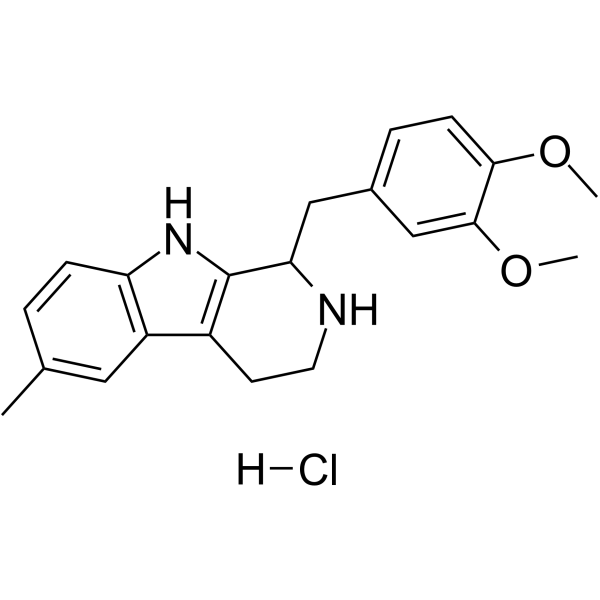
- HY-P3429A
-
|
|
PKC
|
Cardiovascular Disease
|
|
SAMβA TFA is conjugated to the cell permeable peptide TAT47-57. SAMβA TFA, a rationally designed selective antagonist of Mfn1-βIIPKC association. SAMβA TFA is a selective inhibitor of mitofusin 1-βIIPKC association improves heart failure outcome in rats .
|
-

- HY-144110
-
|
|
HCV
|
Infection
|
|
HCV-IN-37 (Compound 3d) is a potent inhibitor of HCV. HCV-IN-37 is orally available and long-lasting in rat plasma after oral administration to rats by a single dose of 15 mg/kg. The high potency of active derivative HCV-IN-37 is primarily driven by the inhibitory effect on the virus entry stage .
|
-

- HY-150555
-
|
|
Potassium Channel
|
Others
|
|
P-CAB agent 1 (compound B19) is a highly potent potassium-competitive acid blocker agent with an IC50 value of 60.50 nM for H +/K +-ATPase. P-CAB agent 1 has acceptable oral absorption in rats. P-CAB agent 1 can be used for researching acid-related disorders (ARDs) .
|
-
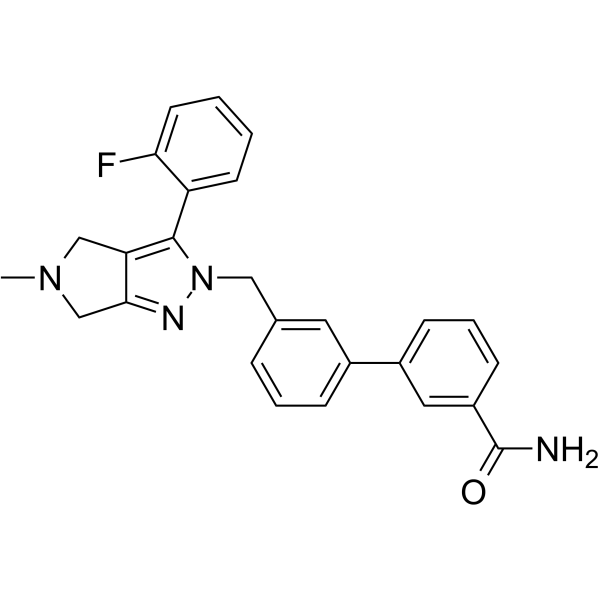
- HY-151360
-
|
|
Sodium Channel
|
Metabolic Disease
|
|
NHE3-IN-3 (Compound 1) is a Na +/H + exchanger isoform 3 (NHE3) inhibitor with pIC50 of 6.2 and 6.6 against human and rat NHE3, respectively. NHE3-IN-3 shows high (98%) oral bioavailability in Sprague–Dawley rats .
|
-
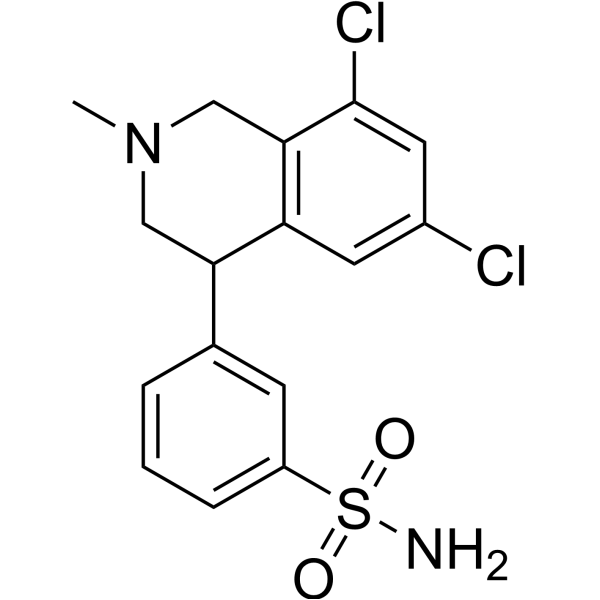
- HY-101679A
-
|
|
mAChR
|
Neurological Disease
|
|
YM-58790 free base is a potent antagonist of mAChR. YM-58790 free base binds M1, M2, M3 with Ki values of 28 nM, 260 nM, and 15 nM. YM-58790 free base exhibits potent inhibitory activity on bladder pressuer in reflexly-evoked rhythmic contraction in rats .
|
-

- HY-B0476R
-
|
Acetophenetidin (Standard)
|
COX
|
Inflammation/Immunology
|
|
Phenacetin (Standard) is the analytical standard of Phenacetin. This product is intended for research and analytical applications. Phenacetin (Acetophenetidin) is a non-opioid analgesic/antipyretic agent. Phenacetin is a selective COX-3 inhibitor. Phenacetin is used as probe of cytochrome P450 enzymes CYP1A2 in human liver microsomes and in rats .
|
-
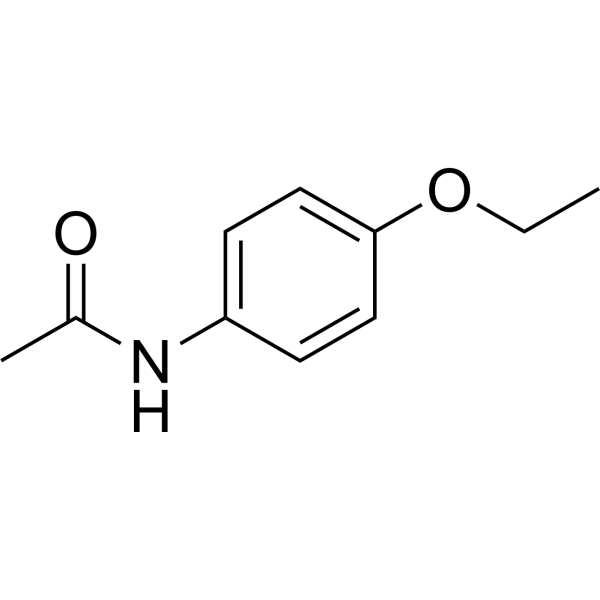
- HY-100617
-
|
(S)-4-Carboxyphenylglycine
|
mGluR
|
Neurological Disease
|
|
(S)-4CPG ((S)-4-Carboxyphenylglycine) is a potent mGluR2 agonist. (S)-4CPG reduces hyperalgesia and allodynia associated with sciatic nerve contraction injury in rats. (S)-4CPG can be used in research on neurological diseases .
|
-

- HY-P10046
-
|
|
Vasopressin Receptor
|
Metabolic Disease
|
|
[Deamino-Pen1,Val4,D-Arg8]-vasopressin (AVP-A) is an arginine-vasopressin (AVP) antagonist. AVP-A can significantly lower plasma aldosterone concentration in rats. AVP-A can be used for the research of the growth and steroidogenic capacity of rat adrenal zona glomerulosa .
|
-
![[Deamino-Pen1,Val4,D-Arg8]-vasopressin](//file.medchemexpress.com/product_pic/hy-p10046.gif)
- HY-D1005A22
-
|
PEG-PPG-PEG, 14600 (Averag)
|
Biochemical Assay Reagents
|
Others
|
|
Poloxamer 338 F108 is block polymer of polyoxyethylene and polyoxypropylene with average molecular mass of 14600. Poloxamer 338 F108 reduces the aggregation of red blood cells, inhibits proliferation of human lymphocyte cell IIBR1. Poloxamer 338 F108 exhibits short-term and subchronic toxicity in rats .
|
-

- HY-N6952
-
-
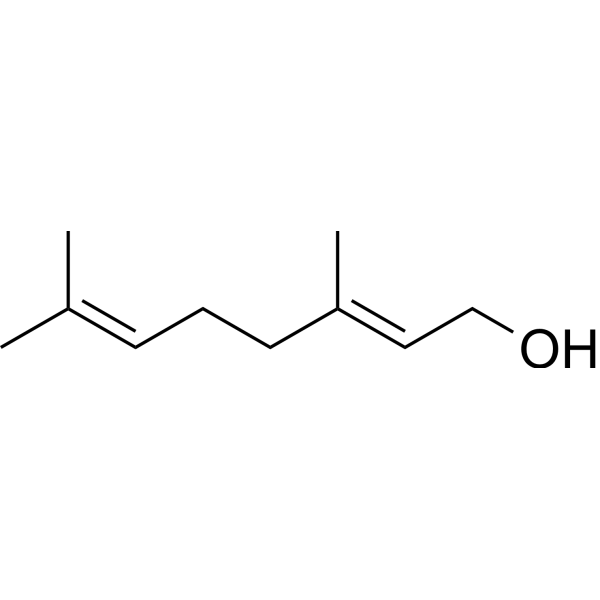
- HY-13738
-
|
Keoxifene; LY156758 free base; LY139481
|
Estrogen Receptor/ERR
|
Cancer
|
|
Raloxifene (Keoxifene) is a benzothiophene-derived selective estrogen receptor modulator (SERM). Raloxifene has estrogen-agonistic effects on bone and lipids and estrogen-antagonistic effects on the breast and uterus. Raloxifene is used for breast cancer and osteoporosis research .
|
-

- HY-106093
-
|
|
COX
|
Inflammation/Immunology
|
|
Eltenac, a non-steroidal anti-inflammatory drug (NSAID), is a COX inhibitor. Eltenac shows IC50 of 0.03 μM for both COX-1 and COX-2 in isolated human whole blood .
|
-

- HY-115864
-
|
TAK-653
|
iGluR
Lipoxygenase
|
Neurological Disease
|
|
Osavampator (TAK-653) is a AMPA receptor positive allosteric modulator. Osavampator selectively binds to AMPA-R in a glutamate-dependent manner and induces Ca 2+ influx in hGluA1i CHO cells (EC50 = 3.3 μM). Osavampator improves learning and memory in many models. Osavampator is can be used for the research of depressive disorders .
|
-
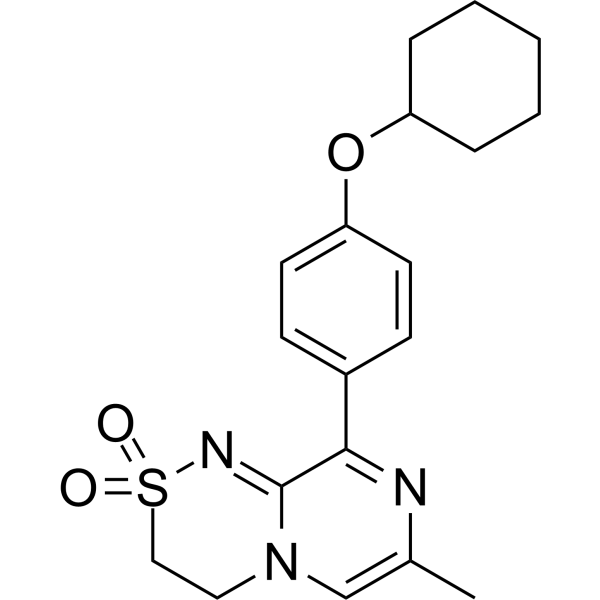
- HY-108656
-
|
|
P2Y Receptor
Arrestin
|
Cardiovascular Disease
|
|
MRS2365 is a potent and selective P2Y1 receptor (EC50=0.4 nM) /[ 35S]GTPγS binding/β-arrestin 2 recruitment agonist with an EC50 of 0.4 nM. MRS2365 relieves mechanical allodynia and increases mechanical sensitivity. MRS2365 shows little agonist or antagonist activity at the P2Y12 or P2Y13 receptors .
|
-
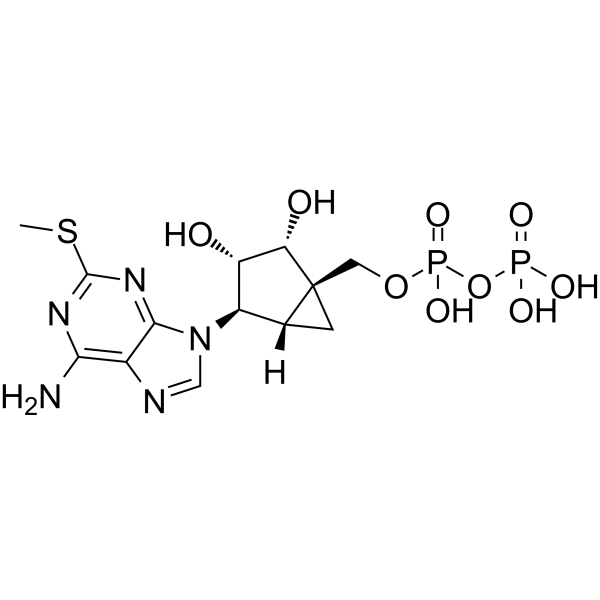
- HY-145906
-
|
|
Dopamine Receptor
|
Neurological Disease
|
|
D4R antagonist-2 is a potent and selective D4R antagonist with an IC50 of 6.52 µM. D4R antagonist-2 displays very favorable in vitro PK parameters and has good brain penetration. D4R antagonist-2 has the potential for the research of Parkinson’s disease .
|
-
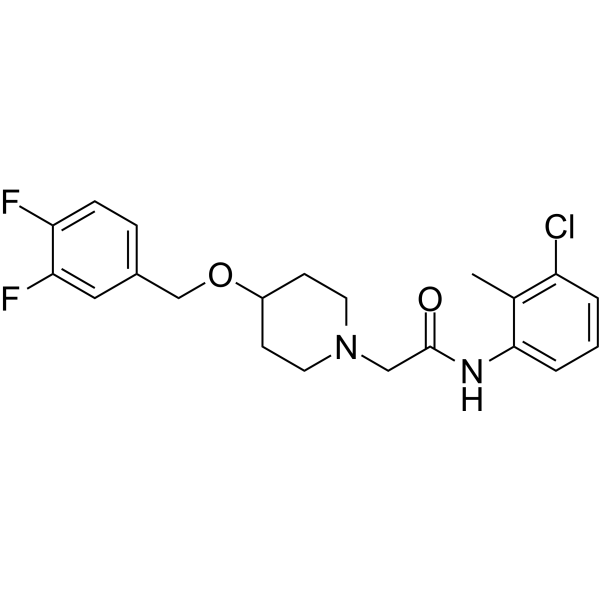
- HY-107751
-
-

- HY-150550
-
|
|
COX
|
Inflammation/Immunology
|
|
COX-2-IN-26 is a potent, selective and orally active COX-2 inhibitor with IC50 values of 10.61, 0.067, 1.96 µM for COX-1, COX-2, 15-LOX, respectively. COX-2-IN-26 shows anti-inflammatory activity. COX-2-IN-26 shows gastrointestinal safety profile .
|
-

- HY-108656A
-
|
|
P2Y Receptor
Arrestin
|
Cardiovascular Disease
|
|
MRS2365 trisodium is a potent and selective P2Y1 receptor (EC50=0.4 nM)/[ 35S]GTPγS binding/β-arrestin 2 recruitment agonist. MRS2365 trisodium relieves mechanical allodynia and increases mechanical sensitivity .
|
-
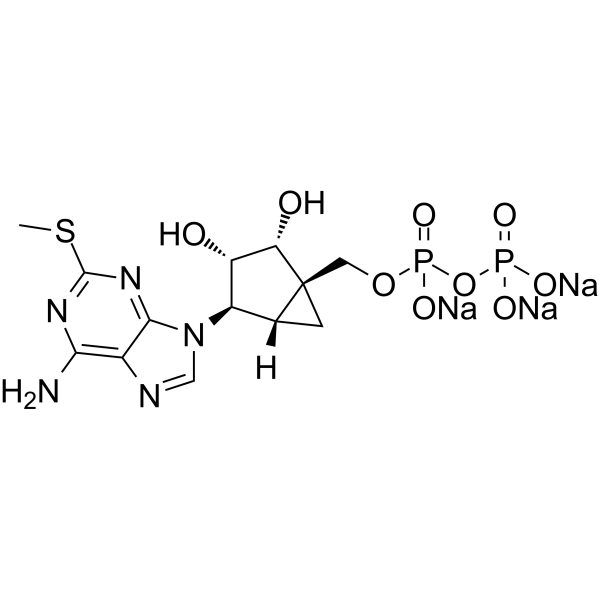
- HY-W012977
-
-
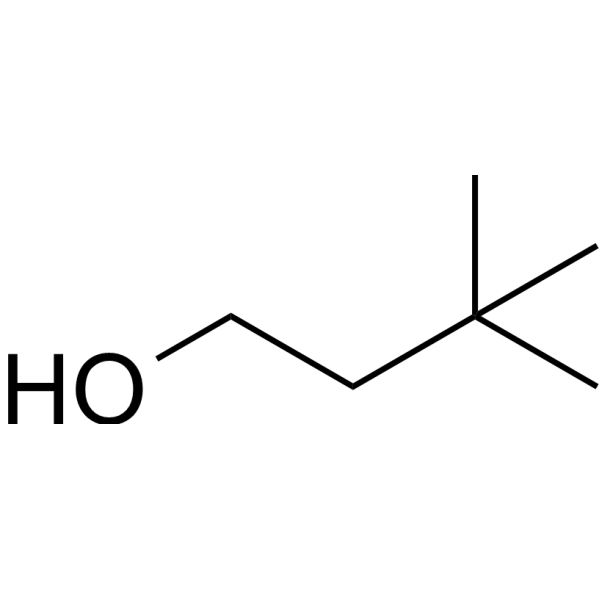
- HY-101422
-
|
|
Potassium Channel
|
Inflammation/Immunology
|
|
GAL-021 is a potent BKCa-channel blocker. GAL-021 inhibits KCa1.1 in GH3 cells. GAL-021 is a novel breathing control modulator that is based on selective modification of the almitrine pharmacophore. GAL-021 increases minute ventilation in rats and non-human primates .
|
-
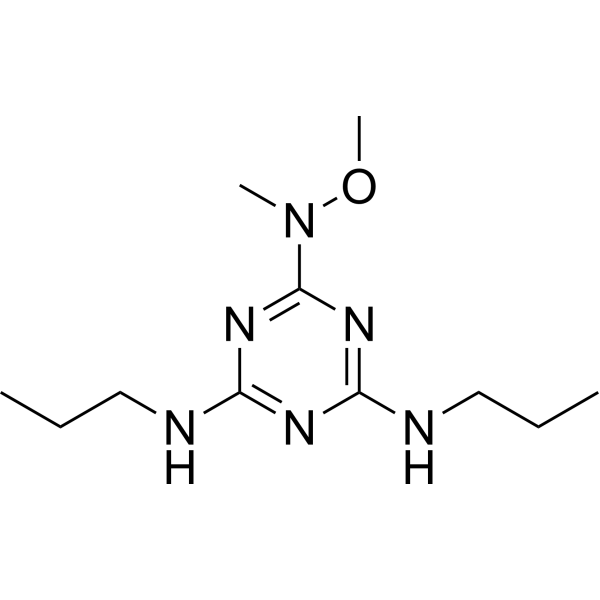
- HY-P1520
-
|
|
GnRH Receptor
|
Neurological Disease
|
|
Prolactin Releasing Peptide (1-31), human is a high affinity GPR10 ligand that cause the release of the prolactin. Prolactin Releasing Peptide (1-31) binds to GPR10 for human and rats with Ki values of 1.03 nM and 0.33 nM, respectively. Prolactin Releasing Peptide (1-31) can be used for the research of the hypothalamo-pituitary axis .
|
-

- HY-N0264
-
|
Chuanxiongzine; Tetramethylpyrazine
|
Apoptosis
|
Cardiovascular Disease
Neurological Disease
Metabolic Disease
Inflammation/Immunology
Cancer
|
|
Ligustrazine (Chuanxiongzine), an alkylpyrazine isolated from Ligusticum chuanxiong Hort. (Chuan Xiong) , is present in french fries, bread, cooked meats, tea, cocoa, coffee, beer, spirits, peanuts, filberts, dairy products and soy products as fragrance and flavouring ingredienexhibits. Ligustrazine also has potential nootropic and anti-inflammatory activities in rats .
|
-
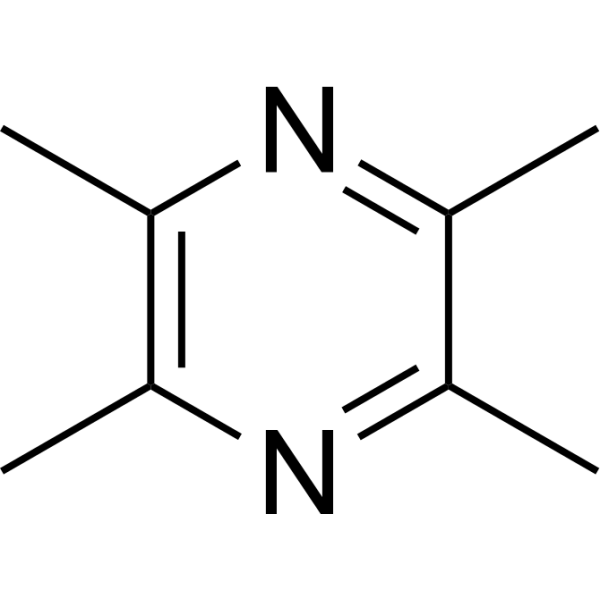
- HY-P1428A
-
|
|
Neuropeptide Y Receptor
|
|
|
RFRP-1(human) TFA is a potent endogenous NPFF receptor agonist (EC50 values are 0.0011 and 29 nM for NPFF2 and NPFF1, respectively). Attenuates contractile function of isolated rat and rabbit cardiac myocytes. Reduces heart rate, stroke volume, ejection fraction and cardiac output, and increases plasma prolactin levels in rats.
|
-
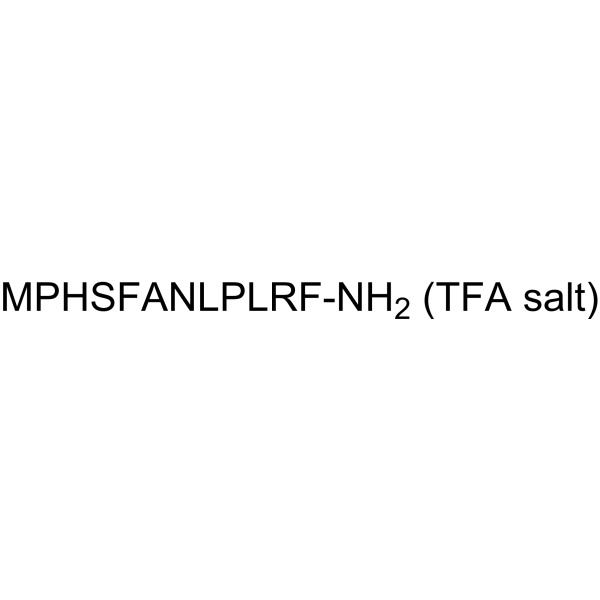
- HY-115877
-
|
|
TRP Channel
|
Others
|
|
GDC-0334 is a selective TRPA1 antagonist. GDC-0334 inhibits TRPA1 function on airway smooth muscle and sensory neurons by decreasing cough and allergic airway inflammation in rats and guinea pigs. GDC-0334 can be used for TRPA1-mediated diseases research, such as pain or asthma .
|
-
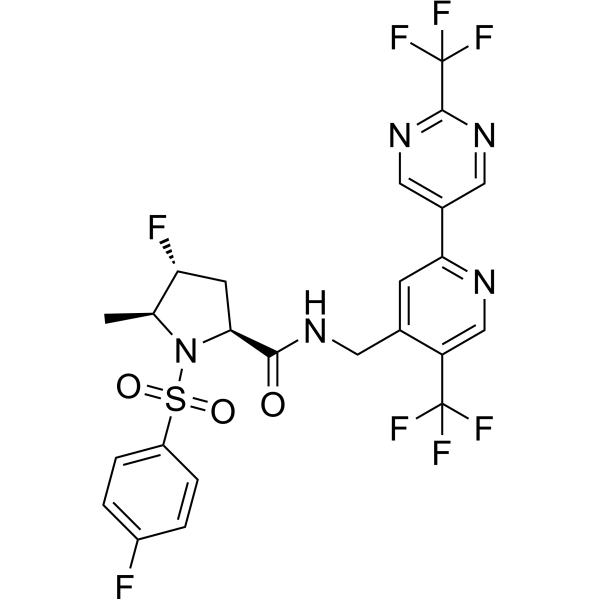
- HY-102065
-
|
|
Prostaglandin Receptor
|
Others
|
|
SC-19220 is a competitive prostaglandinn E2 receptor antagonist. SC-19220 increases the bladder capacity and reduced the voiding efficiency of micturition (elicited by slow transvesical filling) of urethane-anesthetized rats. SC-19220 can restores the balance in bone marrow granulocyte and monocyte production after burn sepsis .
|
-
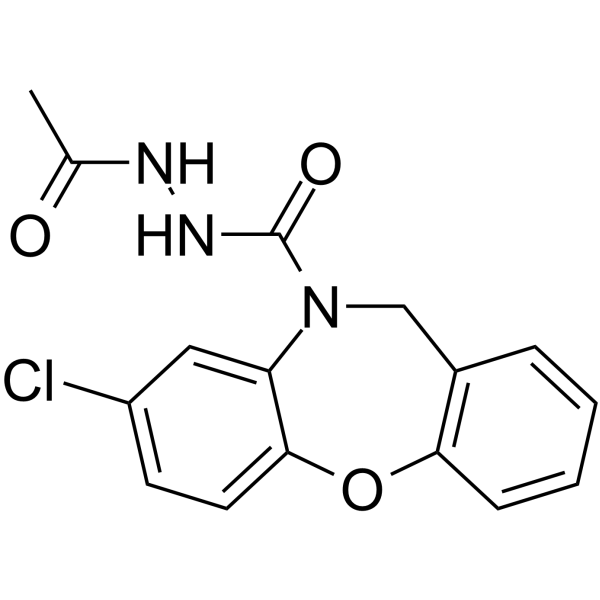
- HY-15522
-
|
|
Oxytocin Receptor
|
Neurological Disease
|
|
WAY-267464 is a non-peptide oxytocin receptor (OTR) agonist. WAY-267464 can impair social recognition memory in rats through a vasopressin 1A receptor antagonist action. WAY-267464 can be used for the research of psychiatric disorders, such disorders include autism spectrum disorder, schizophrenia, and social anxiety disorder .
|
-

- HY-P1520A
-
|
|
GnRH Receptor
|
Neurological Disease
|
|
Prolactin Releasing Peptide (1-31), human (acetate) is a high affinity GPR10 ligand that causes the release of the prolactin. Prolactin Releasing Peptide (1-31) binds to GPR10 for human and rats with Ki values of 1.03 nM and 0.33 nM, respectively. Prolactin Releasing Peptide (1-31) can be used for the research of the hypothalamo-pituitary axis .
|
-

- HY-W017457
-
|
(±)-Penicillamine
|
Others
|
Others
|
|
DL-Penicillamine [(±)-Penicillamine] is a copper chelating agent. DL-Penicillamine has antidotal effects in thallotoxicosis rats when co-treated with Prussian blue (HY-106594A). DL-Penicillamine can cause pyridoxine deficiency and then induce optic axial neuritis. DL-Penicillamine can also depress primary immune response .
|
-

- HY-15112
-
|
|
Prolyl Endopeptidase (PREP)
|
|
|
JTP-4819 is a potent and specific inhibitor of prolyl endopeptidase (PREP) with IC50s of 0.83 nM (in rat brain supernatant) and 5.43 nM (in Flavobacterium meningosepticum). JTP-4819 has blood-brain penetration, also improves the retention time of amnesia rats induced by Scopolamine (HY-N2096) .
|
-
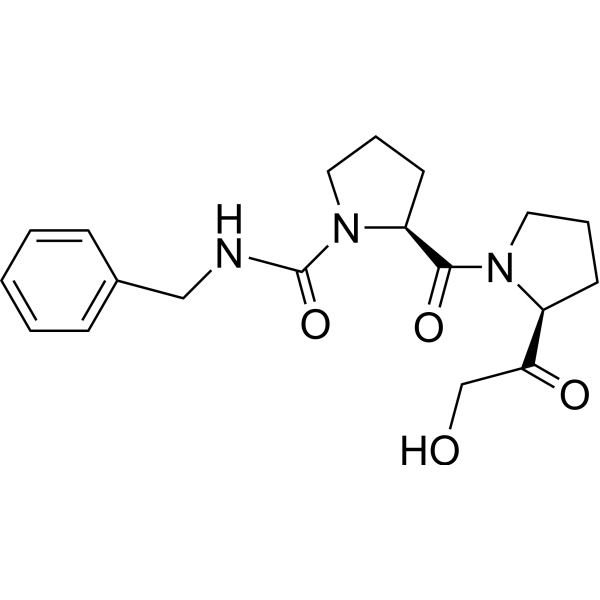
- HY-106054
-
|
|
Prostaglandin Receptor
|
Metabolic Disease
Inflammation/Immunology
|
|
Nocloprost, a prostaglandin E2 (PGE2) analog, is an orally active EP1- and EP3-receptor agonist. Nocloprost inhibits evoked [ 3H]ACh release. Nocloprost has gastroprotective and ulcer-healing properties. Nocloprost accelerates the healing of chronic gastric ulcerations and enhances mucosal growth in rats .
|
-
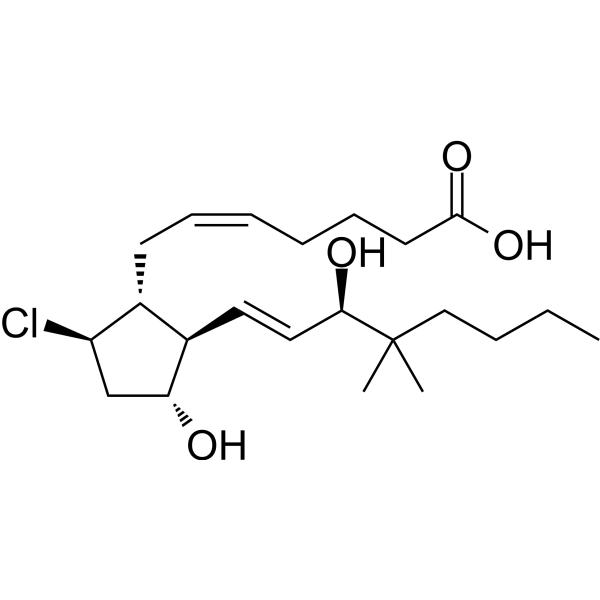
- HY-105022
-
|
R 58735
|
Tau Protein
|
Neurological Disease
|
|
Sabeluzole (R 58735), a benzothiazol derivative, has antiischemic, antiepileptic, and cognitive-enhancing properties. Sabeluzole protects rat hippocampal neurons against NMDA- and glutamate-induced neurotoxicity via preventing tau expression. Sabeluzole enhances memory in rats, and prevents the amnesic effect of Chlordiazepoxide. Sabeluzole can be used fro research of Alzheimer's disease .
|
-
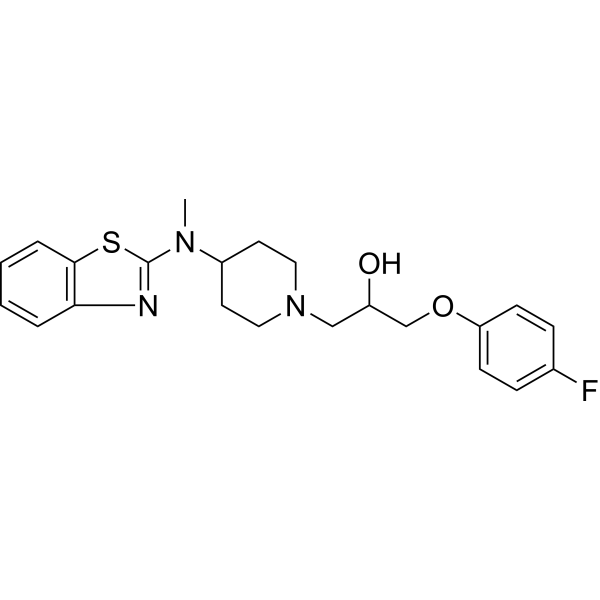
- HY-155823
-
|
|
Cholinesterase (ChE)
|
Neurological Disease
|
|
TZ4M is a 2,4-thiazolidinedione (TZD)-based anti-ADV agent with neuroprotective effects. TZ4M exhibits AChE inhibition in human plasma. TZ4M improves memory and cognitive impairment in adult rats in a scopolamine (HY-N0296)-induced Alzheimer-type model .
|
-
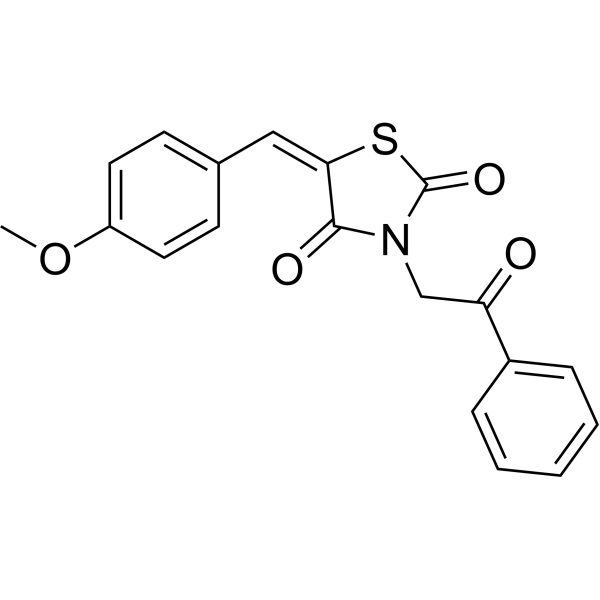
- HY-155822
-
|
|
Cholinesterase (ChE)
|
Neurological Disease
|
|
TZ3O (compound TZ30) is an anticholinergic agent with neuroprotective effects. TZ3O (2 mg/kg, 4 mg/kg) can improve memory impairment and cognitive decline in rats in the Scopolamine (HY-N0296)-induced Alzheimer-type model. TZ3O could be used in Alzheimer’s research .
|
-
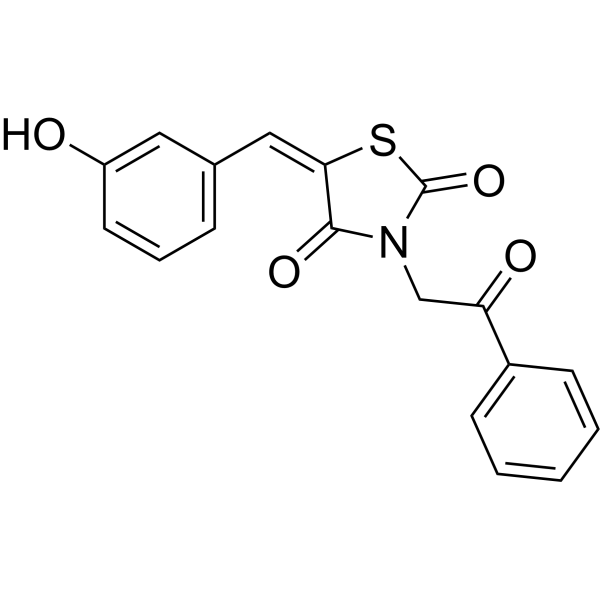
- HY-19101
-
|
|
Ser/Thr Protease
|
Cardiovascular Disease
|
|
ONO-3307 is a protease inhibitor that competitively inhibits a variety of proteases including trypsin, thrombin, plasma kallikrein, plasmin, pancreatic kallikrein, and chymotrypsin. ONO-3307 alleviates endotoxin-induced experimental disseminated intravascular coagulation (DIC) in rats. ONO-3307 can be used in the study of thrombosis and protease-mediated diseases .
|
-
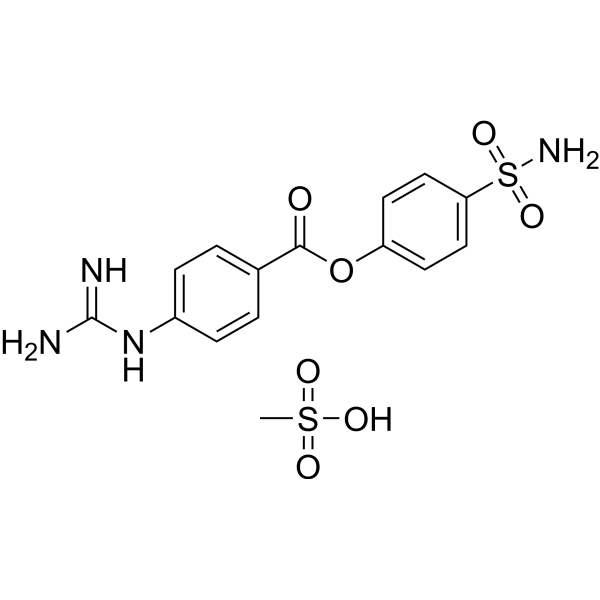
- HY-108679
-
|
|
Oxytocin Receptor
|
Neurological Disease
|
|
WAY-267464 hydrochloride is a non-peptide oxytocin receptor (OTR) agonist. WAY-267464 hydrochloride can impair social recognition memory in rats through a vasopressin 1A receptor antagonist action. WAY-267464 hydrochloride can be used for the research of psychiatric disorders, such disorders include autism spectrum disorder, schizophrenia, and social anxiety disorder .
|
-

- HY-158183
-
|
|
Chloride Channel
|
Others
|
|
NMD670 is an orally active partial inhibitor of the skeletal muscle-specific chloride channel ClC-1. NMD670 increases muscle excitability in response to movement commands, enhances neuromuscular transmission, restores muscle function and improves muscle mobility. NMD670 has a favorable safety profile and improves muscle function in rats in a MG rat model .
|
-
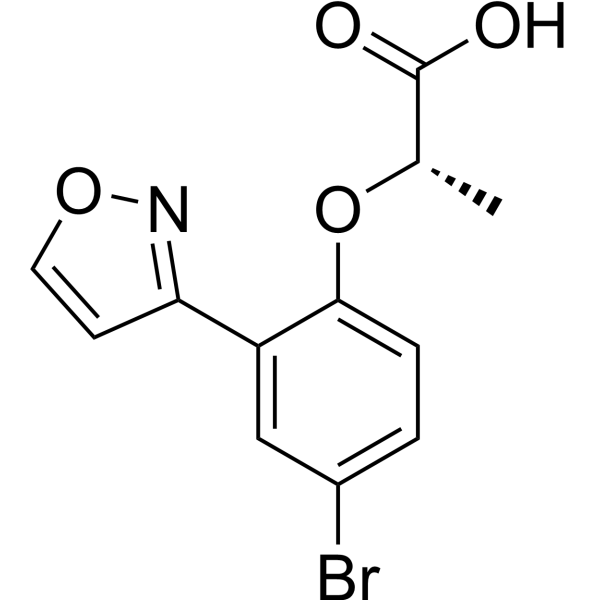
- HY-13340
-
|
VU152100
|
mAChR
|
Neurological Disease
|
|
VU0152100 (VU152100) is a highly selective mAChR positive allosteric modulator (permeable to the blood-brain barrier). VU0152100 reverses Amphetamine-induced hypermotility in rats and increased levels of extracellular dopamine in nucleus accumbens and caudate-putamen. VU0152100 has good research potential in psychosis and cognitive impairment associated with mental disorders such as schizophrenia .
|
-
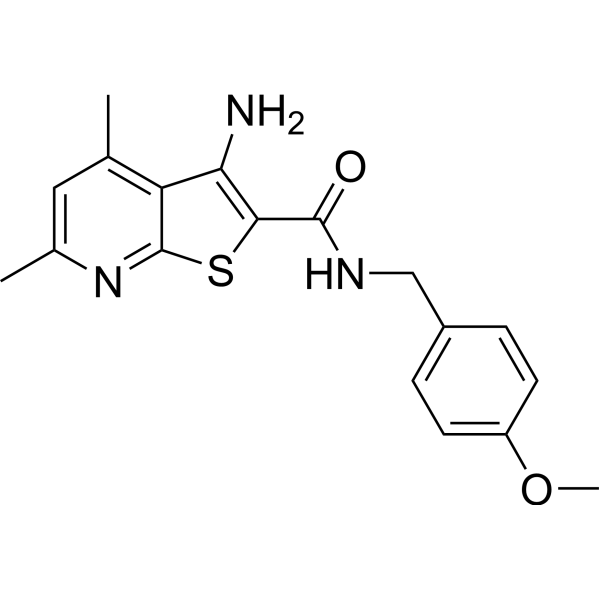
- HY-116175
-
|
|
Others
|
Metabolic Disease
|
|
BIBB 515 is a potent, selective and orally active 2,3-oxidosqualene cyclase (OSC) inhibitor with ED50 values of 0.2-0.5 mg/kg and 0.36-33.3 mg/kg in rats and mice (1-5 hours), respectively. BIBB 515 exerts lipid-lowering effect mainly by inhibiting the production of low-density lipoprotein (LDL) .
|
-
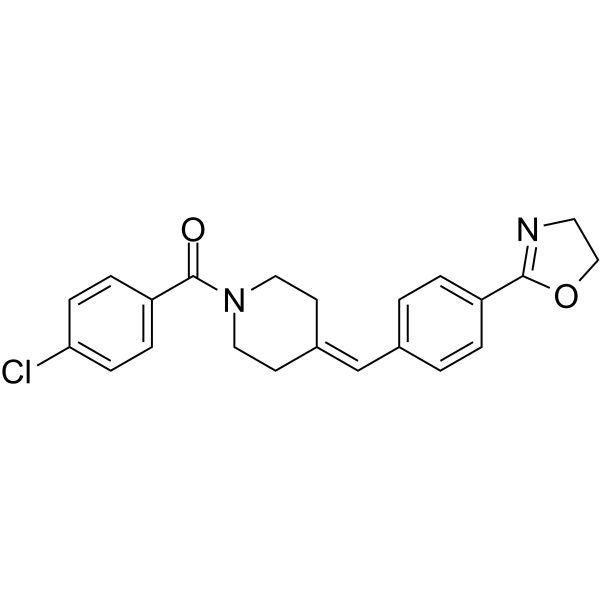
- HY-19801
-
|
|
|
|
|
CVT-10216 is a highly selective, reversible aldehyde dehydrogenase-2 (ALDH-2) inhibitor with an IC50 of 29 nM. CVT-10216 also has inhibitory effect of ALDH-1 with an IC50 of 1.3 μM. CVT-10216 can reduce excessive alcohol drinking in alcohol-preferring rats and exhibit anxiolytic effects .
|
-
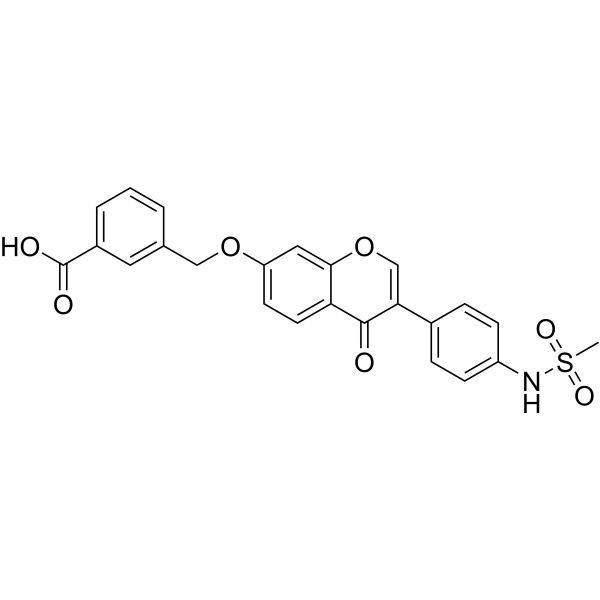
- HY-W008574
-
|
|
PROTAC Linkers
|
Inflammation/Immunology
Cancer
|
|
TGN-020 is a selective Aquaporin 4 (AQP4) inhibitor with an IC50 of 3.1 μM . TGN-020 is an alkyl chain-based PROTAC linker that can be used in the synthesis of PROTACs .TGN-020 alleviates edema and inhibits glial scar formation after spinal cord compression injury in rats .
|
-
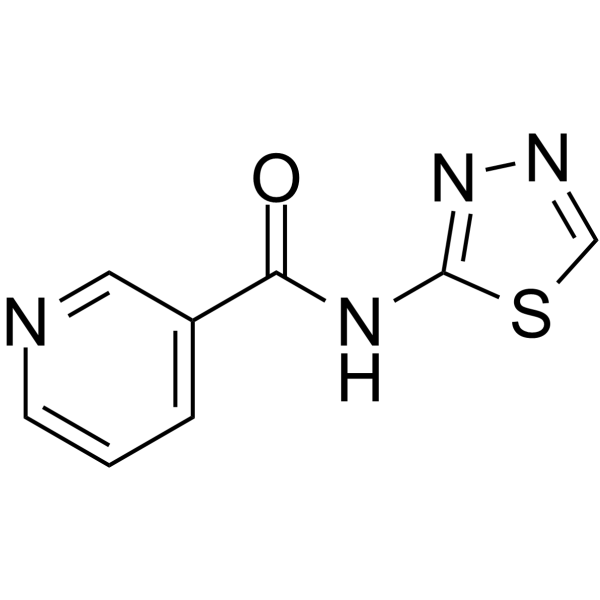
- HY-P1131
-
|
|
Neuropeptide Y Receptor
|
Cardiovascular Disease
|
|
M617 is a selective galanin receptor 1 (GAL1) agonist, with Kis of 0.23 and 5.71 nM for GAL1 and GAL2, respectively. M617, acting through its central GAL1, can promote GLUT4 expression and enhance GLUT4 content in the cardiac muscle of type 2 diabetic rats .
|
-

- HY-105084
-
|
|
Others
|
Neurological Disease
|
|
Lubeluzole is a neuroprotective anti-ischemic compound. Lubeluzole, but not its (-)-R-isomer, protects against sensorimotor deficits provoked by photochemical stroke in rats. Lubeluzole inhibited glutamate-stimulated guanosine 3',5'-cyclic monophosphate production with an IC50 of 37 nM. Lubeluzole also has the potential for developing a novel class of antibacterial adjuvants endowed with spasmolytic activity .
|
-

- HY-101369
-
|
|
5-HT Receptor
|
Neurological Disease
|
|
BW-723C86 is a potent and a selective 5-HT2B receptor agonist. BW-723C86 exhibits anxiolytic-like actions. BW-723C86 also causes hyperphagia and reduced grooming in rats .
|
-
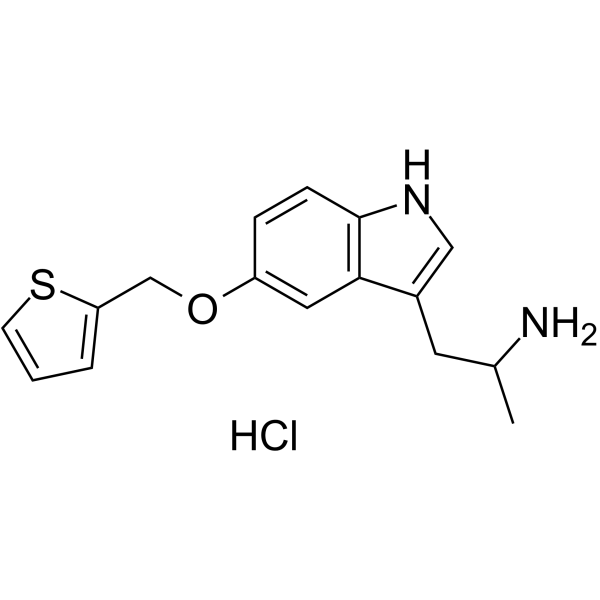
- HY-115914
-
|
|
Others
|
Others
|
|
Lipid-lowering agent-1 is a potent lipid-lowering agent. Lipid-lowering agent-1 has significant pharmacological effects on the inhibition of low-density lipoprotein cholesterol (LDLC) and promotion of high-density lipoprotein cholesterol (HDLC) production. Lipid-lowering agent-1 shows potent hypolipidemic effect in high-fat diet rats .
|
-
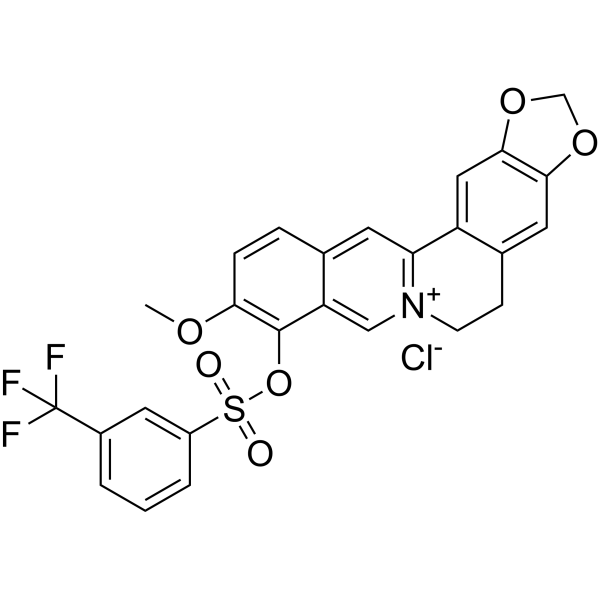
- HY-A0039
-
|
UK-116044
|
5-HT Receptor
|
Neurological Disease
Inflammation/Immunology
|
|
Eletriptan (UK-116044) is a highly selective and orally active serotonin 5-HT1B and 5-HT1D receptor agonist, with pKi values of 8.0 and 8.9, respectively. Eletriptan has inhibitory effects on markers of neurogenic inflammation in rats. Eletriptan can be used for researching migraine .
|
-
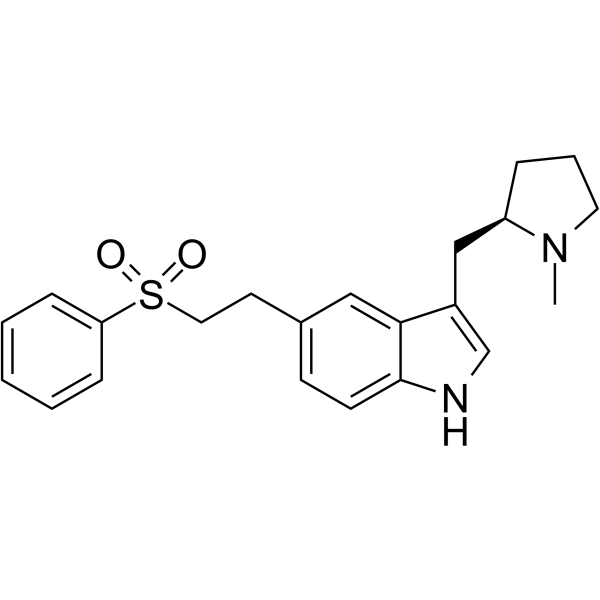
- HY-100446
-
|
|
|
|
|
NTU281 is a potent transglutaminase-2 inhibitor. NTU281 can reduce the increases in serum creatinine and albuminuria in diabetic rats. NTU281 can also reduce glomerular collagen I accumulation, Hic-5 and α-SMA expression, and apoptosis. NTU281 can be used for researching glomerulosclerosis caused by diabetes .
|
-

- HY-147384
-
|
|
Calcium Channel
|
Cardiovascular Disease
|
|
CXL-1020 is a hydroxylamine-based nitroxyl (HNO) donor. CXL-1020 improves cardiac inotropy/lusitropy and Ca 2+ cycling in rats with abnormal relaxation. CXL-1020 induces vasorelaxation and improves cardiac function in canine models. CXL-1020 has been used to research systolic heart failure and stable heart failure .
|
-
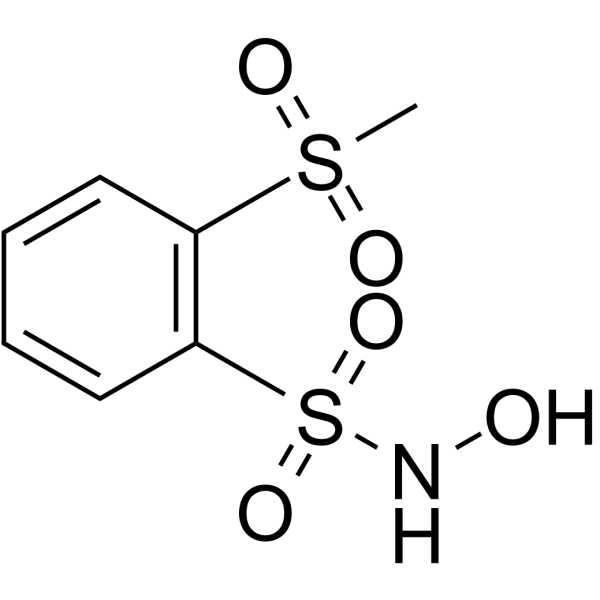
- HY-P3676
-
|
|
Neuropeptide Y Receptor
|
Neurological Disease
|
|
Neuropeptide Y (3-36) (porcine) is an agonist of neuropeptide Y (NPY) receptor subtype Y2, and stimulates feeding in rats. Neuropeptide Y (3-36) (porcine) is a highly Y2 selective ligand compared with nselective Y1/Y2 receptor ligand, Neuropeptide Y 1-36 .
|
-

- HY-W008574A
-
|
|
PROTAC Linkers
|
Inflammation/Immunology
Cancer
|
|
TGN-020 sodium is a selective Aquaporin 4 (AQP4) inhibitor with an IC50 of 3.1 μM . TGN-020 sodium is an alkyl chain-based PROTAC linker that can be used in the synthesis of PROTACs . TGN-020 sodium alleviates edema and inhibits glial scar formation after spinal cord compression injury in rats .
|
-

- HY-148530
-
|
|
PROTACs
CDK
|
Cancer
|
|
YX-2-107 is a PROTAC (IC50= 4.4 nM) that selectively degrades CDK6. YX-2-107 effectively inhibits RB phosphorylation and FOXM1 expression in vitro and inhibits the development of Ph + ALL in rats. YX-2-107 can be used in the study of Ph chromosome-positive (Ph +) acute lymphoblastic leukemia (ALL) .
|
-
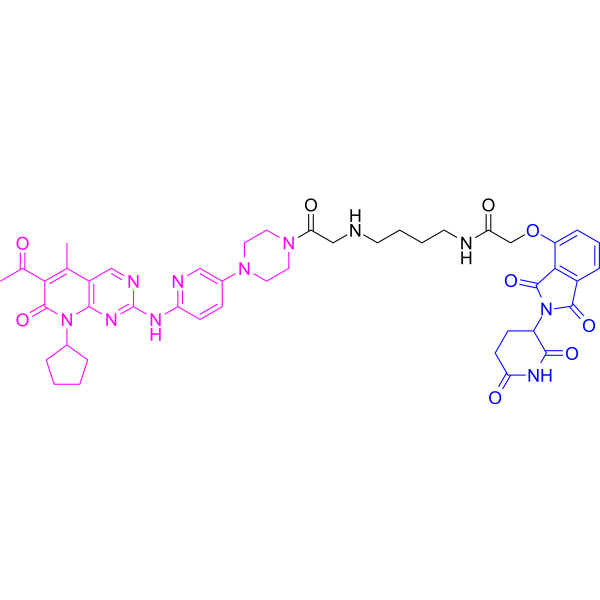
- HY-107518
-
|
(R,S)-3,4-DCPG
|
iGluR
|
Neurological Disease
|
|
(R,S)-3,4-Dicarboxyphenylglycine ((RS)-3,4-DCPG) is an AMPA receptor antagonist. (R,S)-3,4-Dicarboxyphenylglycine antagonizes AMPA-mediated depolarization of motor neurons in neonatal rats. (R,S)-3,4-Dicarboxyphenylglycine can be used in the study of neurological diseases .
|
-
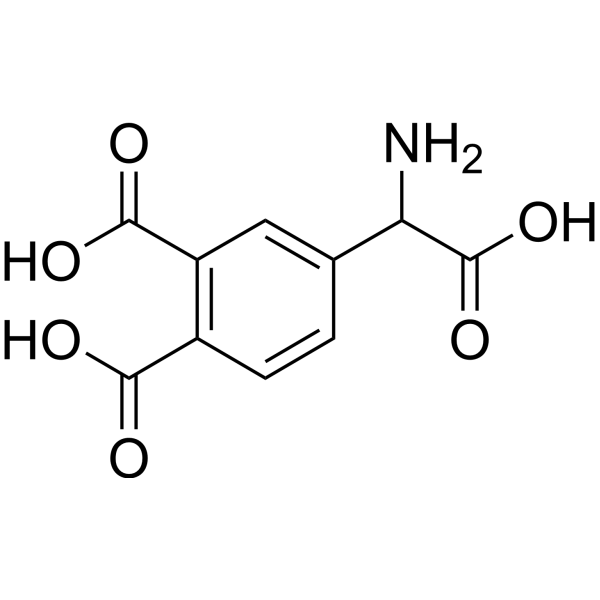
- HY-W061043
-
|
|
Serotonin Transporter
Dopamine Transporter
|
Neurological Disease
|
|
DOV-216,303 is an antidepressant compound. DOV-216,303 inhibits the reuptake of norepinephrine (NE), serotonin (5‐HT), and dopamine (DA), with IC50 values of 14 nM, 20 nM and 78 nM for hSERT, hNET and hDAT, respectively. DOV-216,303 increases monoamine release in the prefrontal cortex of olfactory bulbectomized (OBX) rats .
|
-
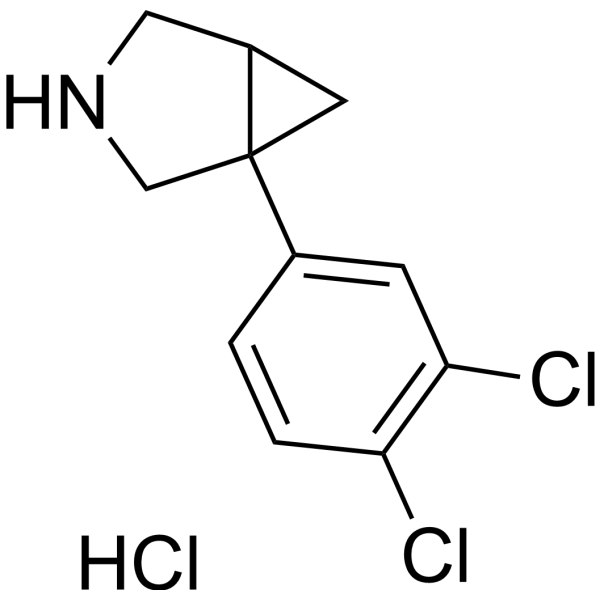
- HY-W013989R
-
|
|
Epoxide Hydrolase
|
Cardiovascular Disease
|
|
1,3-Dicyclohexylurea (Standard) is the analytical standard of 1,3-Dicyclohexylurea. This product is intended for research and analytical applications. 1,3-Dicyclohexylurea (DCU) is an orally active and potent sEH (soluble epoxide hydrolase) inhibitor. Oral Delivery of 1,3-Dicyclohexylurea nanosuspension enhances exposure and lowers blood pressure in hypertensive Rats .
|
-
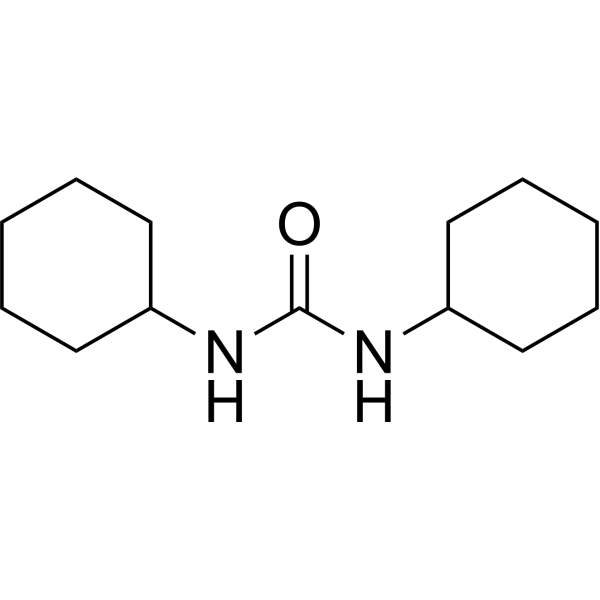
- HY-76569
-
|
PNU-200577; 5-Hydroxymethyl Tolterodine
|
mAChR
|
Neurological Disease
|
|
Desfesoterodine (PNU-200577) is a potent and selective muscarinic receptor (mAChR) antagonist with a KB and a pA2 of 0.84 nM and 9.14, respectively . Desfesoterodine is a major pharmacologically active metabolite of Tolterodine (PNU-200583; HY-A0024) and Fesoterodine (HY-70053) . Desfesoterodine improves cerebral infarction induced detrusor overactivity in rats .
|
-
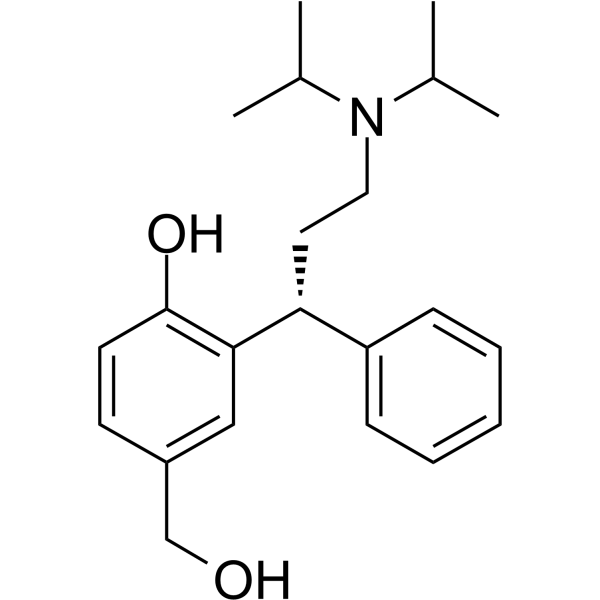
- HY-124754
-
|
BTRX-335140; CYM-53093
|
Opioid Receptor
|
Neurological Disease
Metabolic Disease
|
|
Navacaprant (BTRX-335140) is a selective and orally active κ opioid receptor (KOR) antagonist, has antagonist activity for κOR, μOR and δOR with IC50 values of 0.8 nM, 110 nM, and 6500 nM, respectively.
Navacaprant endows with favorable in vitro ADMET and in vivo pharmacokinetic profiles and medication-like duration of action in rats. Navacaprant distributes well into the CNS and can be used for the research of neuropathy .
|
-
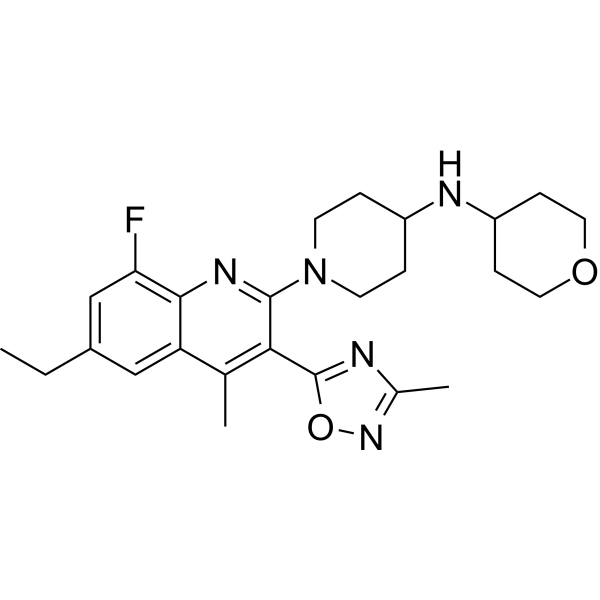
- HY-P1131A
-
|
|
Neuropeptide Y Receptor
|
Cardiovascular Disease
|
|
M617 TFA is a selective galanin receptor 1 (GAL1) agonist, with Kis of 0.23 and 5.71 nM for GAL1 and GAL2, respectively. M617 TFA, acting through its central GAL1, can promote GLUT4 expression and enhance GLUT4 content in the cardiac muscle of type 2 diabetic rats .
|
-

- HY-P1216
-
|
|
Melanocortin Receptor
|
Neurological Disease
|
|
HS014 is a potent and selective melanocortin-4 (MC4) receptor antagonist, with Kis of 3.16, 108, 54.4 and 694 nM for human MC4, MC1, MC3 and MC5 receptors, respectively. HS014 modulates the behavioral effects of morphine in mice. HS014 increases food intake in free-feeding rats .
|
-

- HY-111615A
-
|
|
Somatostatin Receptor
|
Neurological Disease
Inflammation/Immunology
|
|
J-2156 TFA is a high potent, selective somatostatin receptor type 4 (SST4 receptor) agonist with IC50s of 0.05 nM and 0.07 nM for human and rat SST4 receptors, respectively. J-2156 TFA has anti-inflammatory activity and it is used for the relief of mechanical allodynia and mechanical hyperalgesia in the ipsilateral hindpaws in rats .
|
-

- HY-W027951
-
|
DMTU
|
Reactive Oxygen Species
|
Inflammation/Immunology
|
|
N,N'-Dimethylthiourea (DMTU), isolated from Allium sativum, is an orally active scavenger of hydroxyl radical (•OH) and blocks •OH production by activated neutrophils in vitro. N,N'-Dimethylthiourea protects against water-immersion restraint stress (WIRS)-induced gastric mucosal lesions in rats by exerting its antioxidant action including •OH scavenging and anti-inflammatory action .
|
-
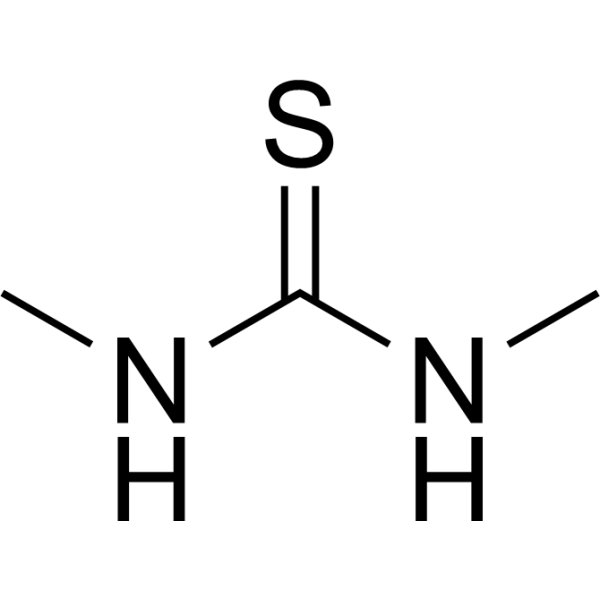
- HY-110125
-
|
CID 1261822
|
GPR55
|
Neurological Disease
|
|
ML-193 (CID 1261822) is a potent and selective antagonist of GPR55, with an IC50 of 221 nM. ML-193 shows more than 27-fold selectivity for GPR55 over GPR35, CB1 and CB2. ML-193 can improve the motor and the sensorimotor deficits of Parkinson’s disease (PD) rats .
|
-
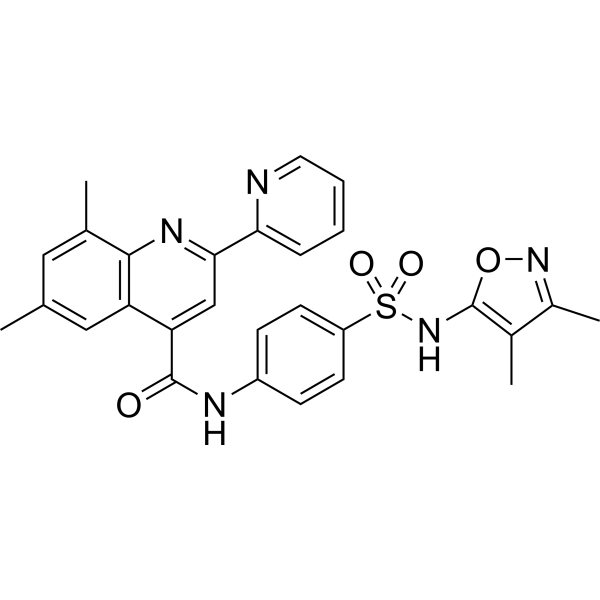
- HY-101422A
-
|
|
Potassium Channel
|
Inflammation/Immunology
|
|
GAL-021 sulfate is a potent BKCa-channel blocker. GAL-021 sulfate inhibits KCa1.1 in GH3 cells. GAL-021 sulfate is a novel breathing control modulator that is based on selective modification of the almitrine pharmacophore. GAL-021 sulfate increases minute ventilation in rats and non-human primates .
|
-

- HY-143330
-
|
|
Monoamine Oxidase
|
Neurological Disease
|
|
MAO-B-IN-4 (Compound 26) is an orally active and reversible MAO-B inhibitor with an IC50 of 9 nM. MAO-B-IN-4 has good metabolic stability, safety profile and brain permeability. MAO-B-IN-4 shows antidepressant activity in rats and mice. MAO-B-IN-4 can be used in studies related to Alzheimer's disease .
|
-
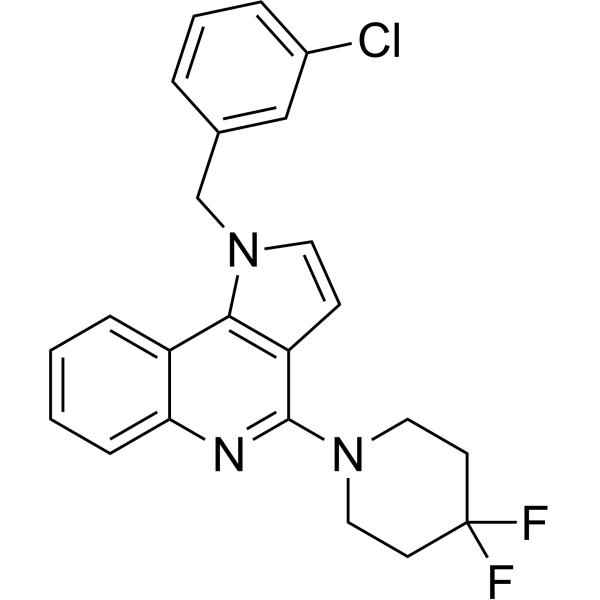
- HY-P1368
-
|
Cyclo(31-34)[DPhe12,Nle21,38,Glu31,Lys34]Ac-hCRF(4-41)
|
CRFR
|
Endocrinology
|
|
Stressin I (Cyclo(31-34)[DPhe12,Nle21,38,Glu31,Lys34]Ac-hCRF(4-41)) is a potent CRF1 receptor-selective agonist with a Ki of 1.7 nM. Stressin I induces increases in adrenocorticotropic hormone (ACTH) levels in rats .
|
-

- HY-P990093
-
|
CM310
|
Interleukin Related
|
Inflammation/Immunology
|
|
Stapokibart (CM310) is a humanised monoclonal antibody targeting IL-4Rα and efficiently blocks the interaction of cytokines IL-4 and IL-13 with their co-receptor subunit IL-4Rα. Stapokibart has the capacity to interact with IL-4Rα in humans, cynomolgus monkeys, and rats .
|
-

- HY-105034
-
|
BMY 13859-1 free base
|
5-HT Receptor
|
Neurological Disease
|
|
Tiospirone is a 5-HT2 receptor antagonist with affinity for D2, 5-HT1a, and 5-HT7, and sigma receptors. Tiospirone decreases consumption of ethanol while increasing food intake of rats. Tiospirone can also reduce the reinforcing properties of Cocaine exhibited in the conditioned place preference paradigm .
|
-
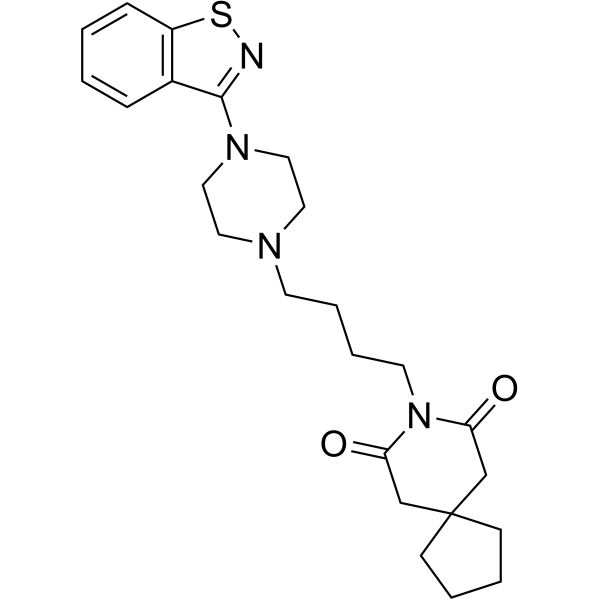
- HY-18100A
-
|
|
Sigma Receptor
Akt
NO Synthase
|
Cardiovascular Disease
Neurological Disease
|
|
PRE-084 hydrochloride is a highly selective σ1 receptor (S1R) agonist, with an IC50 of 44 nM. PRE-084 hydrochloride exhibits good neuroprotective effects, can improve motor function and motor neuron survival in mice. PRE-084 hydrochloride also can ameliorate myocardial ischemia-reperfusion injury in rats by activating the Akt-eNOS pathway .
|
-

- HY-137231B
-
|
|
nAChR
|
Neurological Disease
|
|
(S)-UFR2709 (hydrochloride) is a competitive nAChR antagonist and displays higher affinity for α4β2 nAChRs than for α7 nAChRs. (S)-UFR2709 (hydrochloride) decreases anxiety and reduces ethanol consumption and ethanol preference in alcohol-preferring rats. (S)-UFR2709 (hydrochloride) acts as an anxiolytic agent and can be used for the study of nicotine addiction .
|
-
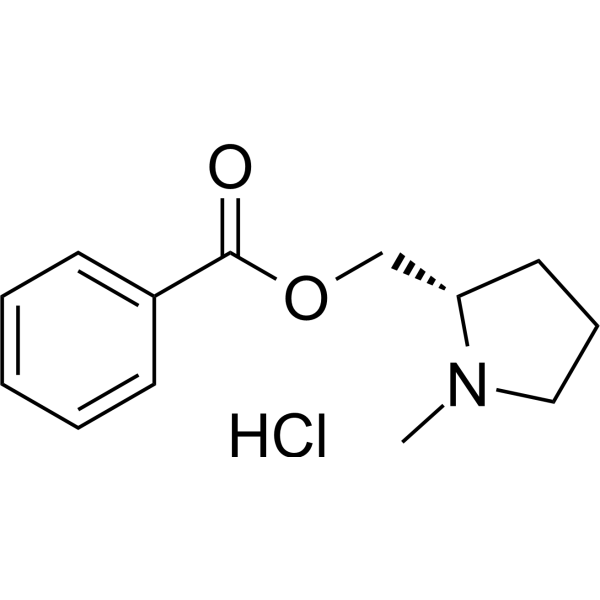
- HY-137231A
-
|
|
nAChR
|
Neurological Disease
|
|
(S)-UFR2709 is a competitive nAChR antagonist and displays higher affinity for α4β2 nAChRs than for α7 nAChRs. (S)-UFR2709 decreases anxiety and reduces ethanol consumption and ethanol preference in alcohol-preferring rats. (S)-UFR2709 acts as an anxiolytic agent and can be used for the study of nicotine addiction .
|
-
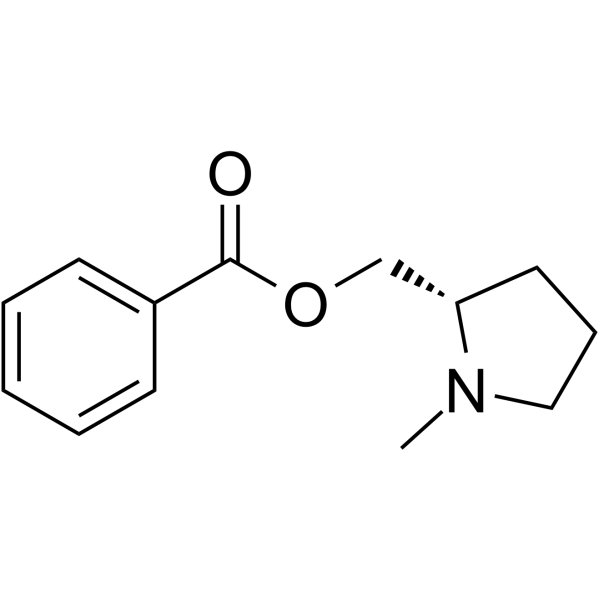
- HY-116807
-
|
DHLA
|
Reactive Oxygen Species
|
Neurological Disease
Inflammation/Immunology
|
|
Dihydrolipoic Acid (DHLA) is an excellent antioxidant capable of scavenging almost any oxygen-centered radical . Dihydrolipoic acid exhibits anti-inflammatory properties in various diseases. Dihydrolipoic Acid exerts a preventive effect via ERK/Nrf2/HO-1/ROS/NLRP3 pathway in LPS-induced sickness behavior rats. Dihydrolipoic Acid can be used for the reaserch of depression .
|
-
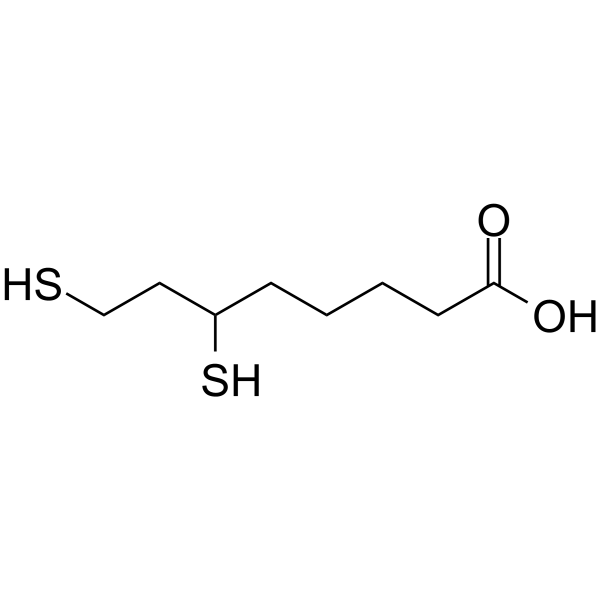
- HY-108493
-
|
|
LPL Receptor
|
Inflammation/Immunology
|
|
CS-2100 (Compound 10b) is a potent, selective, orally active and S1P3-sparing S1P1 agonist with an EC50 of 4.0 nM for human S1P1. CS-2100 shows in vivo immunosuppressive efficacy in rats with an ID50 (infective dose) of 0.407 mg/kg for HvGR .
|
-
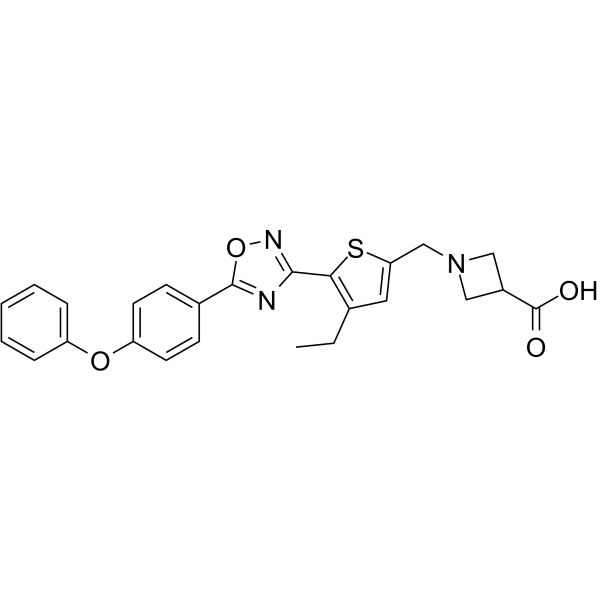
- HY-146421
-
|
|
NO Synthase
NF-κB
Reactive Oxygen Species
|
Inflammation/Immunology
|
|
Anti-inflammatory agent 21 (compound 9o) is an orally active and low cytotoxic anti-inflammatory agent, with an IC50 value of 0.76 μM for NO. Anti-inflammatory agent 21 acts via accumulation ROS and blocks the NF-κB/MAPK signaling pathway. Anti-inflammatory agent 21 can ameliorate cartilage destruction and inflammatory cell infiltration in arthritis rats model .
|
-
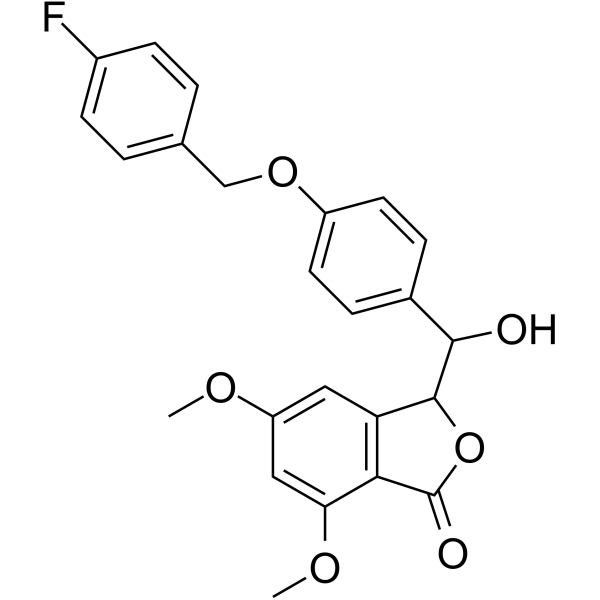
- HY-15008
-
|
|
Oxytocin Receptor
|
Endocrinology
|
|
L-368,899 is an orally active and selective OT (oxytocin ) receptor antagonist, with IC50s of 8.9 and 26 nM for uterus of rat and human, respectively. L-368,899 can cross the blood-brain barrier (BBB). L-368,899 inhibits oxytocin-stimulated uterine contractions in rats and can be used in study of preterm labor .
|
-
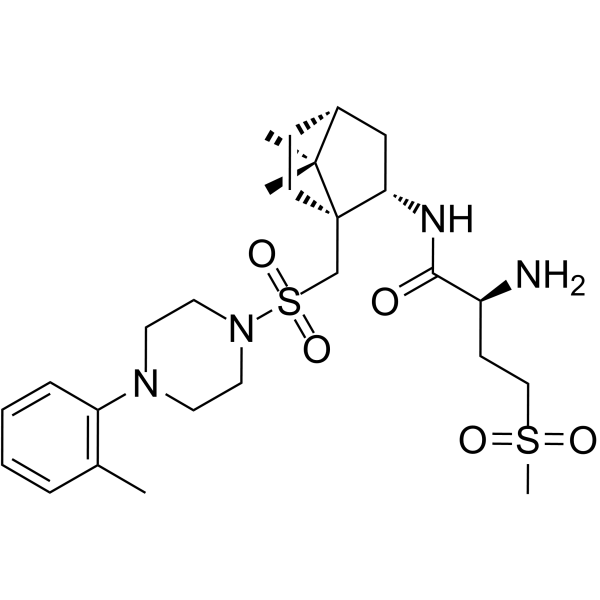
- HY-P3567
-
|
|
Melanocortin Receptor
|
Neurological Disease
|
|
(p-Iodo-Phe7)-ACTH (4-10) is a adrenocorticotrophic hormone (ACTH) derivative, which is produced and secreted by the anterior pituitary gland. (p-Iodo-Phe7)-ACTH (4-10) serves as a melanocortin (MC) receptor antagonist and inhibits α-melanocyte-stimulating hormone (α-MSH)-induced excessive grooming behavior in rats .
|
-

- HY-W152604
-
|
Cyclo(leu-gly)
|
Dopamine Receptor
|
Neurological Disease
|
|
Cyclo(glycyl-L-leucyl) (Cyclo(leu-gly)), a neuropeptide, down-regulates dopamine (DA) receptors and attenuates dopaminergic supersensitivity. Cyclo(glycyl-L-leucyl) inhibits the development of Morphine induced pain relief as well as dopamine receptor supersensitivity in rats. Cyclo(glycyl-L-leucyl) has the potential for the prevention of tardive and/or L-DOPA (HY-N0304)-induced dyskinesias .
|
-

- HY-18100
-
|
|
Sigma Receptor
Akt
NO Synthase
|
Cardiovascular Disease
Neurological Disease
|
|
PRE-084 is a highly selective σ1 receptor (S1R) agonist, with an IC50 of 44 nM. PRE-084 exhibits good neuroprotective effects, can improve motor function and motor neuron survival in mice. PRE-084 also can ameliorate myocardial ischemia-reperfusion injury in rats by activating the Akt-eNOS pathway .
|
-

- HY-P1368A
-
|
Cyclo(31-34)[DPhe12,Nle21,38,Glu31,Lys34]Ac-hCRF(4-41) TFA
|
CRFR
|
Endocrinology
|
|
Stressin I (Cyclo(31-34)[DPhe12,Nle21,38,Glu31,Lys34]Ac-hCRF(4-41)) TFA is a potent CRF1 receptor selective agonist, Ki is 1.7 nM. Stressin I induces an increase in adrenocorticotropic hormone (ACTH) levels in rats .
|
-

- HY-B0226
-
|
Nitrofural
|
Bacterial
Antibiotic
|
Infection
|
|
Nitrofurazone (Nitrofural) is a broad spectrum antibiotic that has oral activity. Nitrofurazone is a nitro-aromatic drug. Nitrofurazone is active against both Gram-positive and Gram-negative bacteria .
|
-

- HY-15707
-
|
|
Potassium Channel
|
Inflammation/Immunology
|
|
NS6180 is a new orally active KCa3.1 channel inhibitor. NS6180 inhibits cloned human KCa3.1 channels with an IC50value of 9 nM. NS6180 can be used for the research of inflammatory bowel disease (IBD) .
|
-

- HY-15591A
-
|
|
HCV
|
Infection
|
|
TMC647055 (Choline salt) is a potent nonnucleoside NS5B polymerase inhibitor of HCV replication. TMC647055 Choline salt has potent HCV combine activity with an IC50 value of 82 nM. TMC647055 Choline salt can be used for the research of Hepatitis C virus (HCV) .
|
-
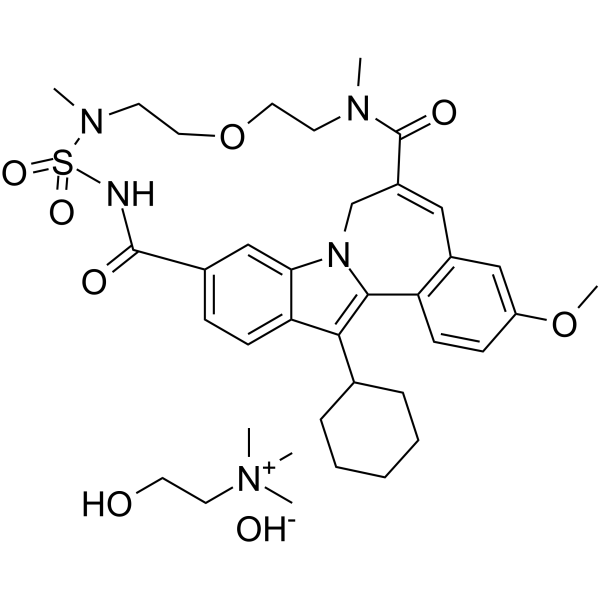
- HY-100454
-
|
|
Dopamine Receptor
|
Neurological Disease
|
|
CGP 25454A is a selective presynaptic dopamine autoreceptor antagonist which induces the increase of dopamine and acetyl choline. CGP 25454A can be used for major depression research .
|
-
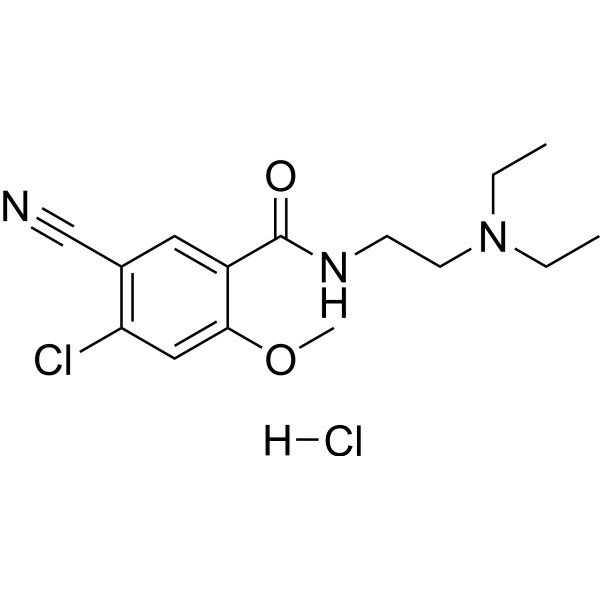
- HY-125588
-
|
Chromium (III) picolinate; Cr(Pic)3
|
Apoptosis
p38 MAPK
|
Metabolic Disease
|
|
Chromium picolinate (Chromium (III) picolinate) is a compound that has oral activity. Chromium picolinate induces apoptosis. Chromium picolinate is the activator of p38 MAPK. Chromium picolinate has antioxidant activity. Chromium picolinate can be used in research on type 2 diabetes .
|
-
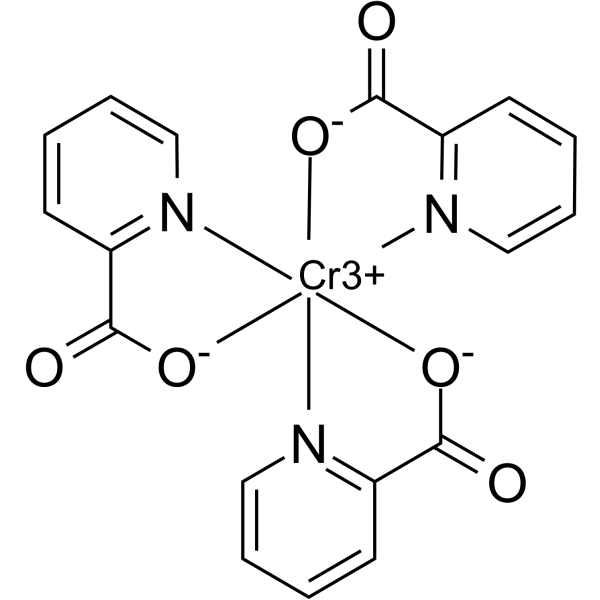
- HY-106968
-
|
|
iGluR
|
Neurological Disease
|
|
ZD-9379 is a potent, orally active, and brain penetrant full antagonist at the glycine site of the NMDA receptor. ZD-9379 has neuroprotective effect .
|
-
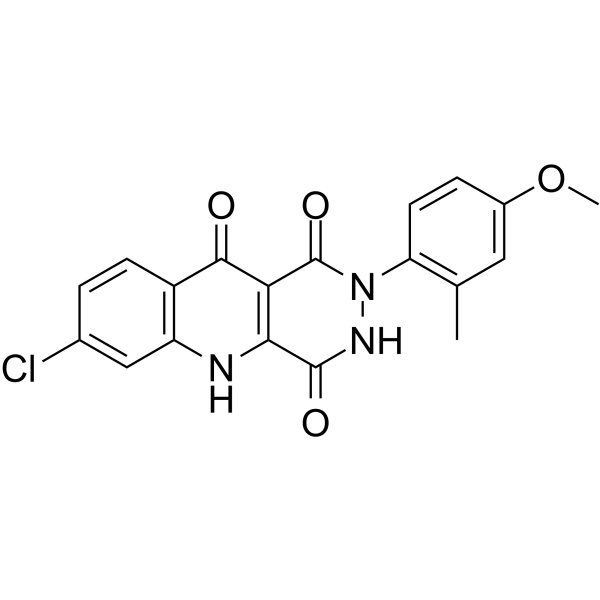
- HY-116228
-
|
Caderofloxacin; CS-940
|
Bacterial
|
Infection
|
|
Cadrofloxacin (Caderofloxacin; CS-940), a orally active fluoroquinolone, is effective against aerobic/anaerobic Gram-positive and Gram-negative bacteria. Cadrofloxacin can be used for the research of infectious diseases .
|
-
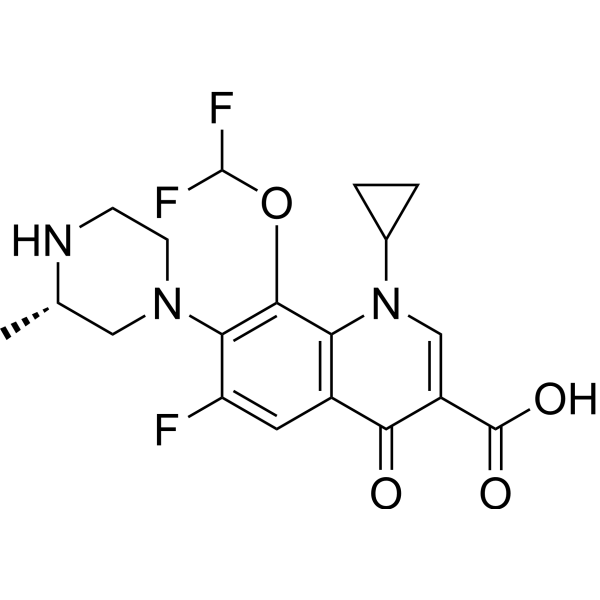
- HY-115913
-
|
|
Phosphodiesterase (PDE)
|
Inflammation/Immunology
|
|
PDE4-IN-6 is a potent, safe and moderately selective PDE4 inhibitor with IC50s of 0.125 and 0.43 µM for PDE4B and PDE4D, respectively. PDE4-IN-6 can downregulate the expression level of TNF-α and IL-6. PDE4-IN-6 has potent immunomodulatory activity thereby its potential against rheumatoid arthritis. Anti-inflammatory and anti-arthritic effects .
|
-

- HY-17610
-
|
TS-091
|
Histamine Receptor
|
Neurological Disease
|
|
Enerisant is a potent, highly selective, competitive and orally active histamine H3 receptor antagonist/inverse agonist with IC50s of 2.89 nM and 14.5 nM against human and rat histamine H3 receptors, respectively .
|
-
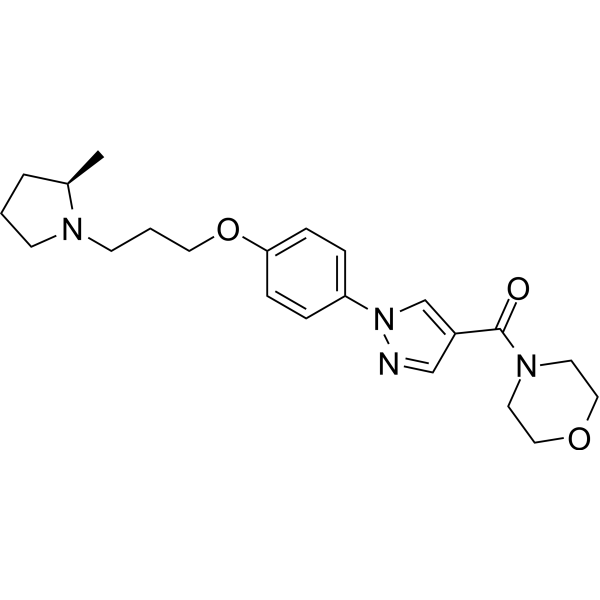
- HY-154979
-
|
|
Others
|
Inflammation/Immunology
|
|
Anti-hepatic fibrosis agent 2 (Compound 6k) is an orally active COL1A1 inhibitor. Anti-hepatic fibrosis agent 2 is an anti-fibrogenic agent targeting ewing sarcoma breakpoint region 1 (EWSR1) .
|
-
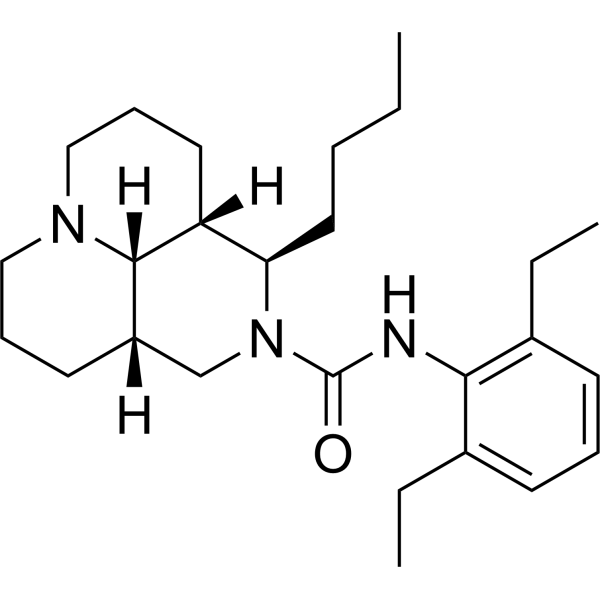
- HY-15591
-
|
|
HCV
|
Infection
|
|
TMC647055 is a potent nonnucleoside NS5B polymerase inhibitor of HCV replication. TMC647055 has potent HCV combine activity with an IC50 value of 82 nM. TMC647055 can be used for the research of Hepatitis C virus (HCV) .
|
-
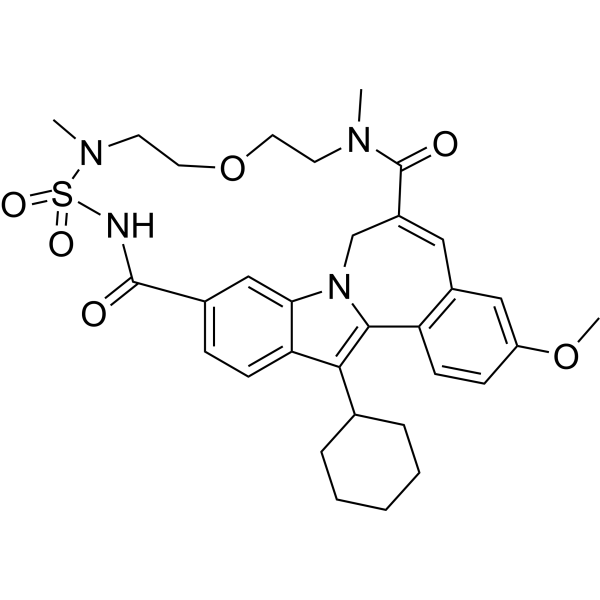
- HY-17610A
-
|
TS-091 hydrochloride
|
Histamine Receptor
|
Neurological Disease
|
|
Enerisant (TS-091) hydrochloride is a potent, highly selective, competitive and orally active histamine H3 receptor antagonist/inverse agonist with IC50s of 2.89 nM and 14.5 nM against human and rat histamine H3 receptors, respectively .
|
-
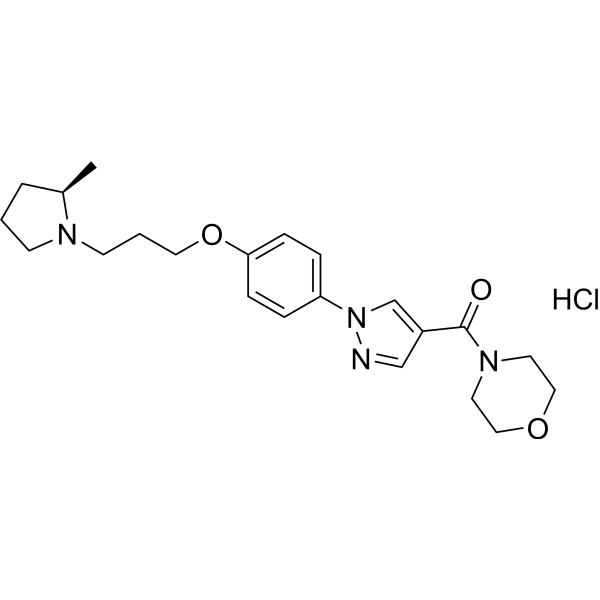
- HY-105266
-
-
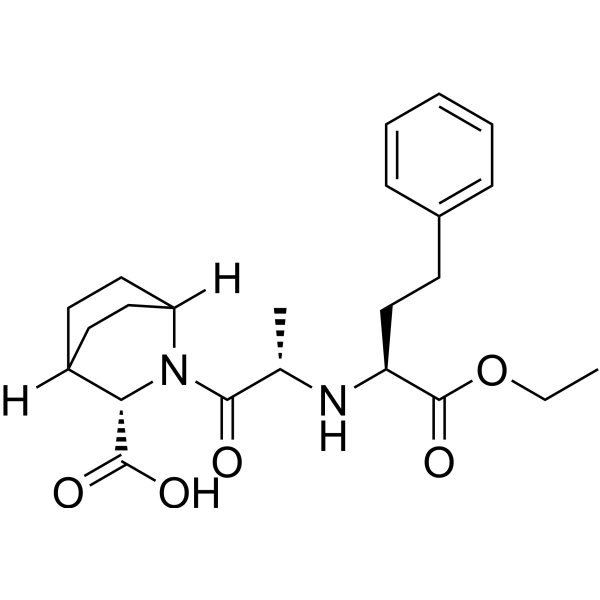
- HY-107384
-
|
EMD-61753
|
Opioid Receptor
|
Neurological Disease
Metabolic Disease
Inflammation/Immunology
|
|
Asimadoline (EMD-61753) is an orally active, selective and peripherally active κ-opioid agonist with IC50s of 5.6 nM (guinea pig) and 1.2 nM (human recombinant). Asimadoline has low permeability across the blood brain barrier and has peripheral anti-inflammatory actions. Asimadoline ameliorates allodynia in diabetic rats and has the potential for irritable bowel syndrome (IBS) .
|
-
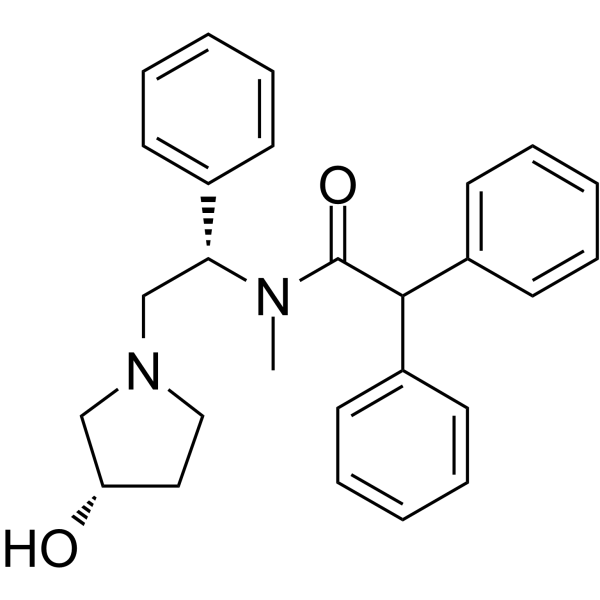
- HY-P1322
-
|
|
Neuropeptide Y Receptor
|
Neurological Disease
|
|
[D-Trp34]-Neuropeptide Y is a potent and selective neuropeptide Y (NPY) Y5 receptor agonist. [D-Trp34]-Neuropeptide Y is a significantly less potent agonist at the NPY Y1, Y2, Y4, and y6 receptors. [D-Trp34]-Neuropeptide Y markedly increases food intake in rats .
|
-
![[D-Trp34]-Neuropeptide Y](//file.medchemexpress.com/product_pic/hy-p1322.gif)
- HY-107384A
-
|
EMD-61753 hydrochloride
|
Opioid Receptor
|
Neurological Disease
Metabolic Disease
Inflammation/Immunology
|
|
Asimadoline (EMD-61753) hydrochloride is an orally active, selective and peripherally active κ-opioid agonist with IC50s of 5.6 nM (guinea pig) and 1.2 nM (human recombinant). Asimadoline hydrochloride has low permeability across the blood brain barrier and has peripheral anti-inflammatory actions. Asimadoline hydrochloride ameliorates allodynia in diabetic rats and has the potential for irritable bowel syndrome (IBS) .
|
-
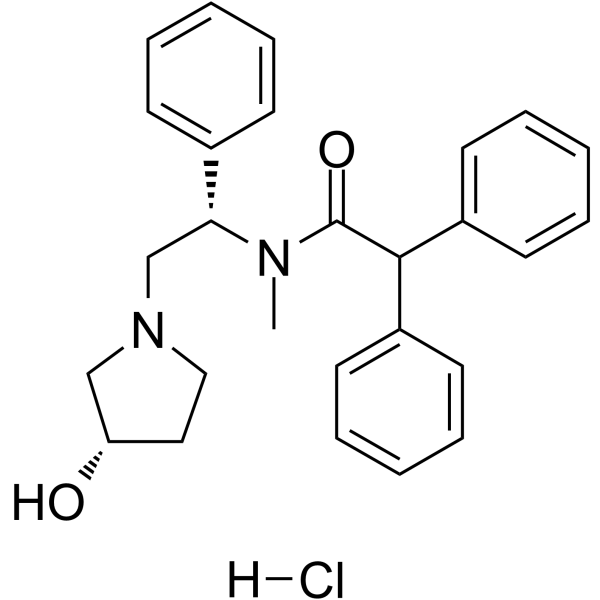
- HY-124304
-
|
LOE-908
|
TRP Channel
SARS-CoV
|
Neurological Disease
|
|
Pinokalant is a broad-spectrum and non-selectivecation channel inhibitor. Pinokalant significantly reduces cortical infarct volume. Pinokalant o improves the metabolic and electrophysiologic status of the ischemic penumbra. Pinokalant reduces lesion size on magnetic resonance images in the acute phase following middle cerebral artery occlusion in rats. Pinokalant has the potential for the research of stroke. Pinokalant also shows anti-SARS-CoV-2 activity .
|
-
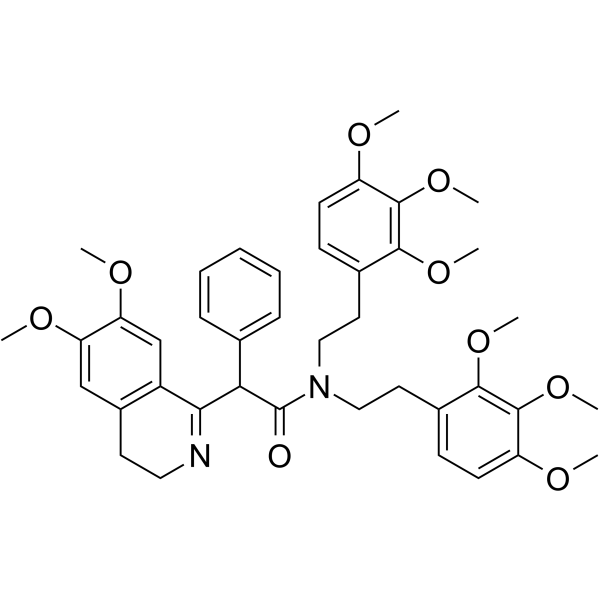
- HY-150732
-
|
|
IRAK
|
Inflammation/Immunology
|
|
IRAK4-IN-18 is a potent interleukin-1 receptor-associated kinase 4 (IRAK4) inhibitor with an IC50 value of 15 nM. IRAK4-IN-18 can inhibit LPS-induced IL23 production in THP and DC cells, and stop arthritis development in arthritis rats. IRAK4-IN-18 can be used for researching arthritis disease .
|
-
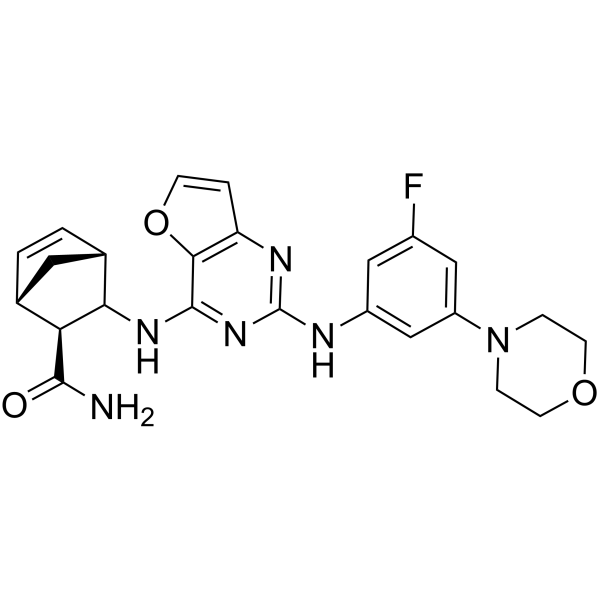
- HY-150733
-
|
|
IRAK
|
Inflammation/Immunology
|
|
IRAK4-IN-19 is a potent interleukin-1 receptor-associated kinase 4 (IRAK4) inhibitor with an IC50 value of 4.3 nM. IRAK4-IN-19 can inhibit LPS-induced IL23 production in THP and DC cells, and stop arthritis development in arthritis rats. IRAK4-IN-19 can be used for researching arthritis disease .
|
-

- HY-122229
-
|
|
HIV
|
Infection
|
|
GS-9822 is a potent antivira agent with nanomolar activity against wild-type HIV-1 viruses. GS-9822 potently inhibits the LEDGF/p75-integrase interaction with an IC50 of 0.07 μM. GS-9822 has high in vitro metabolic stability and favorable oral pharmacokinetic profiles with low systemic clearance in rats, dogs, and monkeys .
|
-
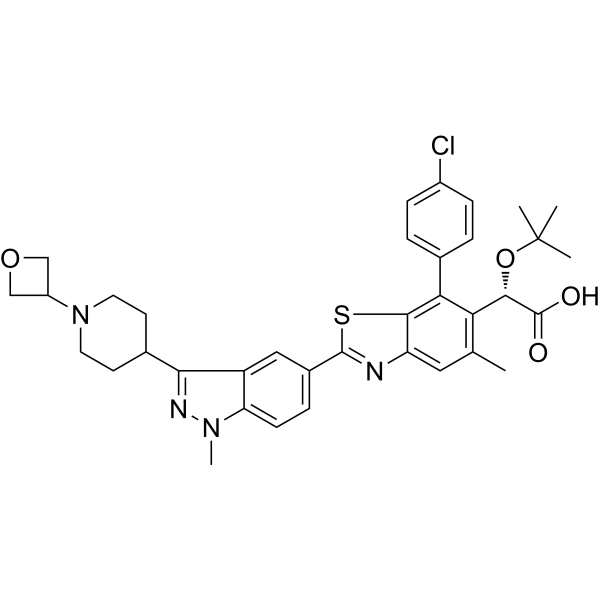
- HY-N0157R
-
|
6-Carboxyuracil (Standard); Vitamin B13 (Standard)
|
Nucleoside Antimetabolite/Analog
Endogenous Metabolite
|
Metabolic Disease
|
|
Orotic acid (Standard) is the analytical standard of Orotic acid. This product is intended for research and analytical applications. Orotic acid (6-Carboxyuracil), a precursor in biosynthesis of pyrimidine nucleotides and RNA, is released from the mitochondrial dihydroorotate dehydrogenase (DHODH) for conversion to UMP by the cytoplasmic UMP synthase enzyme. Orotic acid is a marker for measurement in routine newborn screening for urea cycle disorders. Orotic acid can induce hepatic steatosis and hepatomegaly in rats .
|
-
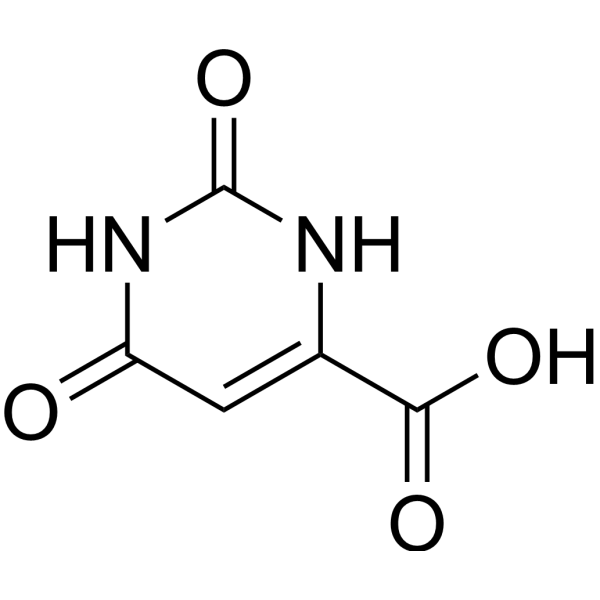
- HY-18596
-
|
|
5-HT Receptor
|
Neurological Disease
|
|
SB-215505 is a potent and subtype-selective 5-HT2B receptor antagonist with pKi values of 8.3, 6.77, 7.66 for 5-HT2B, 5-HT2A, 5-HT2C, respectively . SB-215505 increases wakefulness and motor activity in rats .
|
-
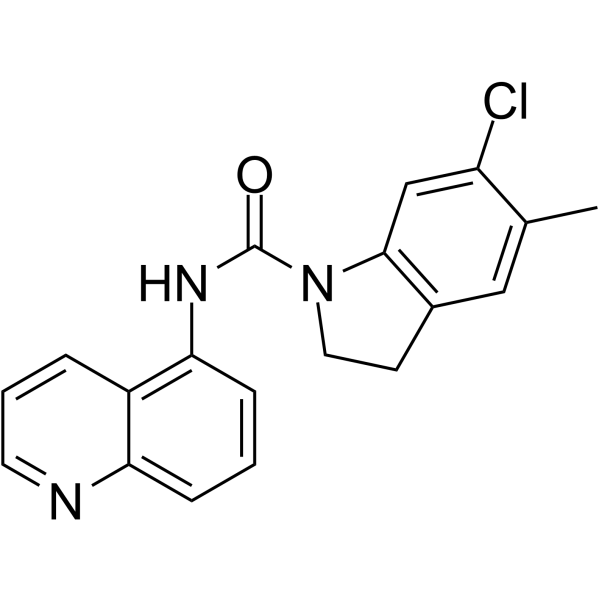
- HY-139467
-
|
|
SHP2
PKC
|
Metabolic Disease
|
|
PF-04577806 is a potent, selective and ATP competitive PKC inhibitor. PF-04577806 shows potent inhibitory activity towards PKCα, PKCβI, PKCβII, PKCγ, and PKCθ with IC50s of 2.4 nM, 8.1 nM, 6.9 nM, 45.9 nM, and 29.5 nM, respectively. PF-04577806 can reverse retinal vascular leakage in diabetic rats .
|
-
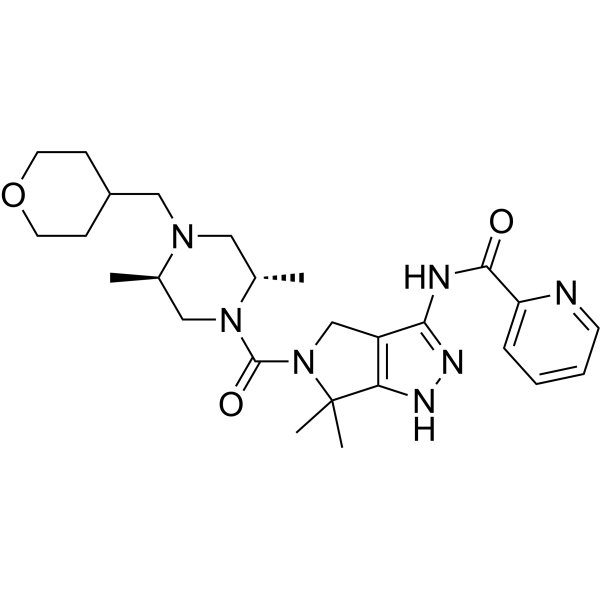
- HY-145196
-
|
|
Cannabinoid Receptor
|
Neurological Disease
|
|
RTICBM-189 is a potent, brain-penetrant allosteric modulator of the cannabinoid type-1 (CB1) receptor with a pIC50 of 7.54 in Ca 2+ mobilization assay. RTICBM-189 has pIC50s of 5.29 and 6.25 for hCB1 and mCB1, respectively. RTICBM-189 significantly and selectively attenuates the reinstatement of the addictive agent-seeking behavior in rats .
|
-

- HY-146112
-
|
|
IRAK
|
Cancer
|
|
IRAK4-IN-14 (compound 28) is a potent, selective and orally active IRAK4 inhibitor with an IC50 of 0.003 µM. IRAK4-IN-14 shows good PK parameters in rats and mouse. IRAK4-IN-14 shows synergistic in vitro activity against MyD88/CD79 double mutant ABC-DLBCL in combination with Acalabrutinib .
|
-
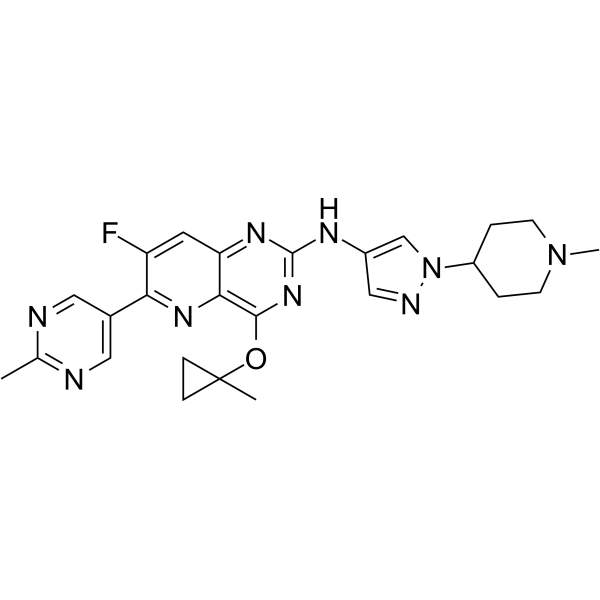
- HY-129143
-
|
Dp3‐Sam chloride
|
Others
|
Metabolic Disease
Inflammation/Immunology
|
|
Delphinidin-3-sambubioside (Dp3‐Sam) chloride is an anthocyanin that has orally active anti-inflammatory activity. Delphinidin-3-sambubioside chloride inhibits LPS-induced inflammatory factors release. Delphinidin-3-sambubioside chloride also alleviates hepatic lipid accumulation in HFD rats. Delphinidin-3-sambubioside chloride can be isolated from Hibiscus sabdariffa L. .
|
-
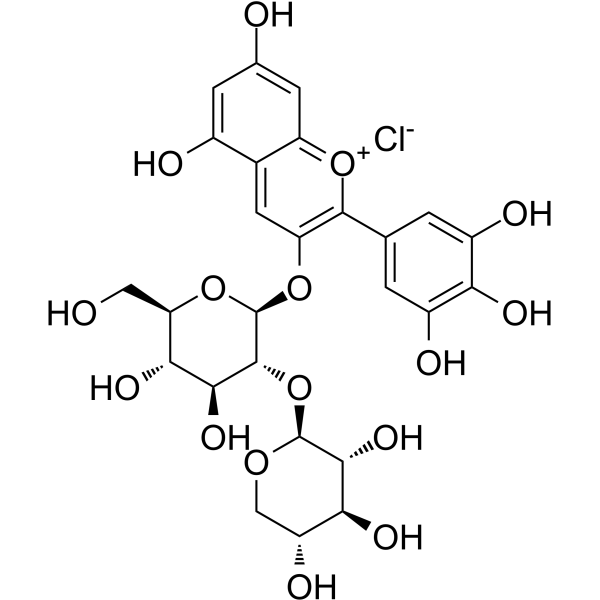
- HY-B0124
-
|
AD 810; CI 912
|
Carbonic Anhydrase
Apoptosis
|
Neurological Disease
|
|
Zonisamide (AD 810) is an orally active carbonic anhydrase inhibitor, with Kis of 35.2 and 20.6 nM for hCA II and hCA V, respectively. Zonisamide exerts neuroprotective effects through anti-apoptosis and upregulating MnSOD levels. Zonisamide also increases the expression of Hrd1, thereby improving cardiac function in AAC rats. Zonisamide can be used in studies of seizure, parkinson’s disease and cardiac hypertrophy .
|
-

- HY-B0124A
-
|
AD 810 sodium; CI 912 sodium
|
Carbonic Anhydrase
Apoptosis
|
Cardiovascular Disease
Neurological Disease
|
|
Zonisamide (AD 810) sodium is an orally active carbonic anhydrase inhibitor, with Kis of 35.2 and 20.6 nM for hCA II and hCA V, respectively. Zonisamide sodium exerts neuroprotective effects through anti-apoptosis and upregulating MnSOD levels. Zonisamide sodium also increases the expression of Hrd1, thereby improving cardiac function in AAC rats. Zonisamide sodium can be used in studies of seizure, parkinson’s disease and cardiac hypertrophy .
|
-

- HY-17444
-
|
|
PPAR
|
Metabolic Disease
Cancer
|
|
Tesaglitazar is a dual peroxisome proliferator-activated receptor (PPAR) alpha/gamma agonist that is more potent on PPARγ than on PPARα, with EC50s of 13.4 μM and 3.6 μM for rat PPARα and human PPARα, respectively, and approximately 0.2 μM for both rat and human PPARγ. Tesaglitazar induces interstitial mesenchymal cell DNA synthesis and fibrosarcomas in subcutaneous tissues in rats .
|
-
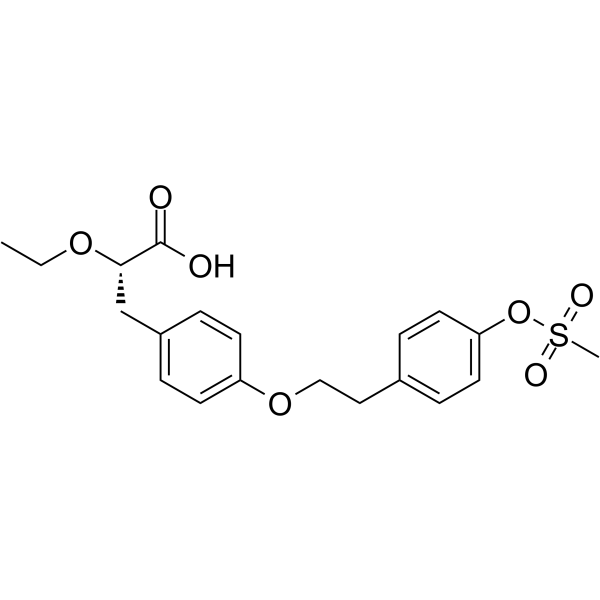
- HY-112671
-
|
RTA dh404
|
Keap1-Nrf2
NF-κB
|
Inflammation/Immunology
|
|
CDDO-dhTFEA (RTA dh404) is a synthetic oleanane triterpenoid compound which potently activates Nrf2 and inhibits the pro-inflammatory transcription factor NF-κB . CDDO-dhTFEA restores hypertension (MAP), increases Nrf2 and expression of its target genes, attenuates activation of NF-κB and transforming growth factor-β pathways, and reduces glomerulosclerosis, interstitial fibrosis and inflammation in the chronic kidney disease (CKD) rats .
|
-
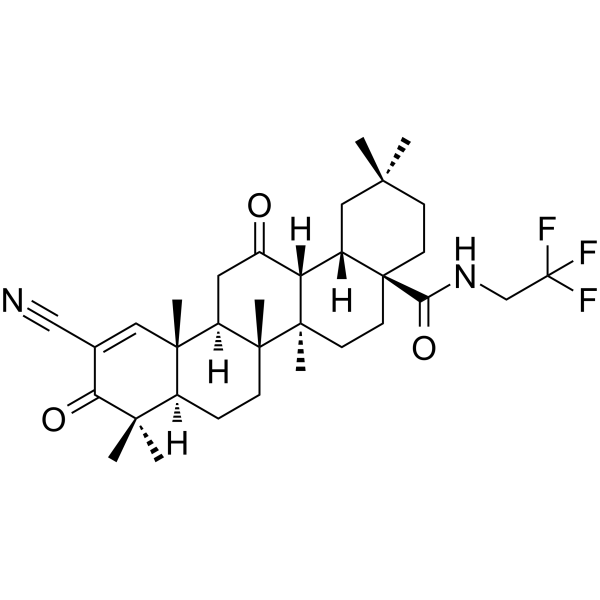
- HY-15671
-
|
|
Glucokinase
|
Metabolic Disease
|
|
GKA50 is a potent glucokinase activator (EC50=33 nM at 5 mM glucose). GKA50 stimulates insulin release from mouse islets of Langerhans. GKA50 is a glucose-like activator of beta-cell metabolism in rodent and human islets and a Ca 2+-dependent modulator of insulin secretion. GKA50 shows significant glucose lowering in high fat fed female rats .
|
-
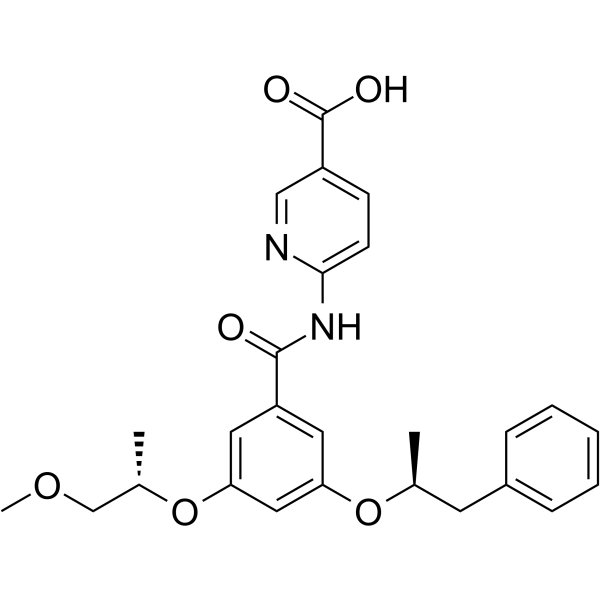
- HY-110143
-
|
|
Potassium Channel
|
Neurological Disease
|
|
CLP257 is a selective K +-Cl − cotransporter KCC2 activator with an EC50 of 616 nM. CLP257 is inactive against NKCC1, GABAA receptors, KCC1, KCC3 or KCC4. CLP257 restores impaired Cl − transport in neurons with diminished KCC2 activity. CLP257 alleviates hypersensitivity in rats with neuropathic pain. CLP257 modulates plasmalemmal KCC2 protein turnover post-translationally .
|
-
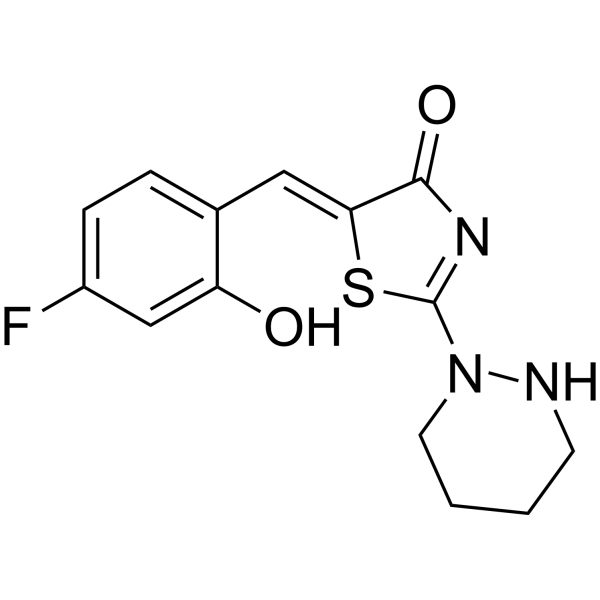
- HY-P1322A
-
|
|
Neuropeptide Y Receptor
|
Neurological Disease
|
|
[D-Trp34]-Neuropeptide Y TFA is a potent and selective neuropeptide Y (NPY) Y5 receptor agonist. [D-Trp34]-Neuropeptide Y TFA is a significantly less potent agonist at the NPY Y1, Y2, Y4, and y6 receptors. [D-Trp34]-Neuropeptide Y TFA markedly increases food intake in rats .
|
-
![[D-Trp34]-Neuropeptide Y TFA](//file.medchemexpress.com/product_pic/hy-p1322a.gif)
- HY-135483A
-
|
|
nAChR
|
Neurological Disease
|
|
AR-R17779 hydrochloride is a potent and selective full agonist of nAChR, with Kis of 92 and 16000 nM for α7 and α4β2 subtype, respectively. AR-R17779 hydrochloride can improve learning and memory in rats. AR-R17779 hydrochloride also has anxiolytic activity. AR-R17779 hydrochloride can reduce inflammation by activating antiinflammatory cholinergic (vagal) pathways .
|
-
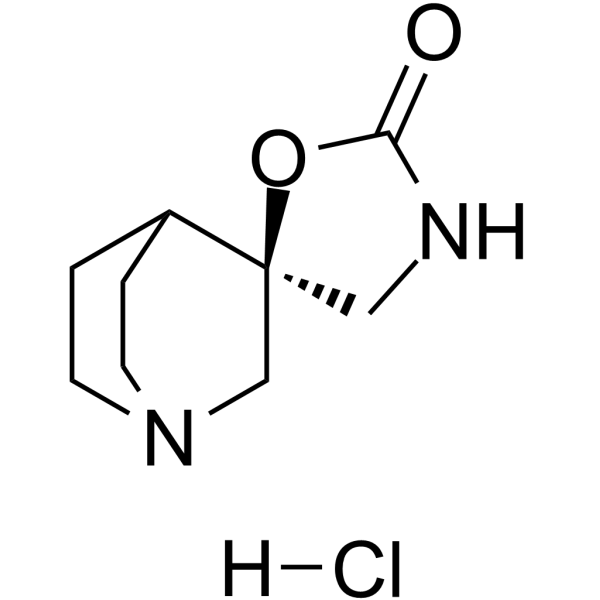
- HY-15671A
-
|
|
Glucokinase
|
Metabolic Disease
|
|
GKA50 quarterhydrate is a potent glucokinase activator (EC50=33 nM at 5 mM glucose) and stimulates insulin release from mouse islets of Langerhans. GKA50 quarterhydrate is a glucose-like activator of beta-cell metabolism in rodent and human islets and a Ca 2+-dependent modulator of insulin secretion. GKA50 quarterhydrate shows significant glucose lowering in high fat fed female rats .
|
-
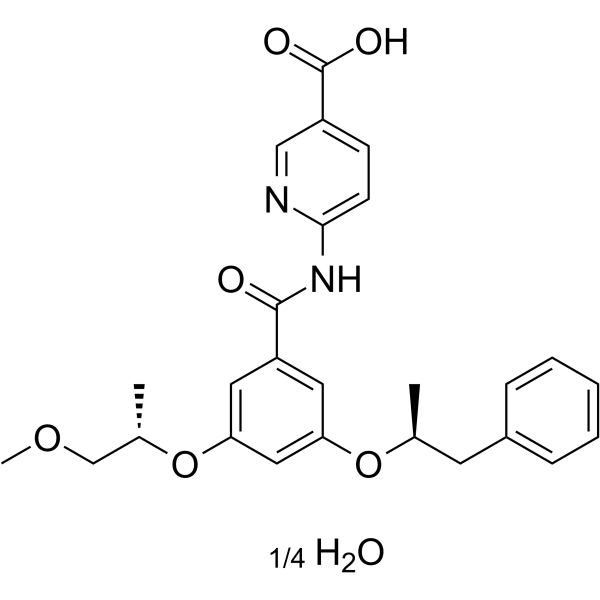
- HY-A0039S1
-
|
|
5-HT Receptor
|
|
|
Eletriptan-d5 is the deuterium labeled Eletriptan[1]. Eletriptan (UK-116044) is a highly selective and orally active serotonin 5-HT1B and 5-HT1D receptor agonist, with pKi values of 8.0 and 8.9, respectively. Eletriptan has inhibitory effects on markers of neurogenic inflammation in rats. Eletriptan can be used for researching migraine[2].
|
-
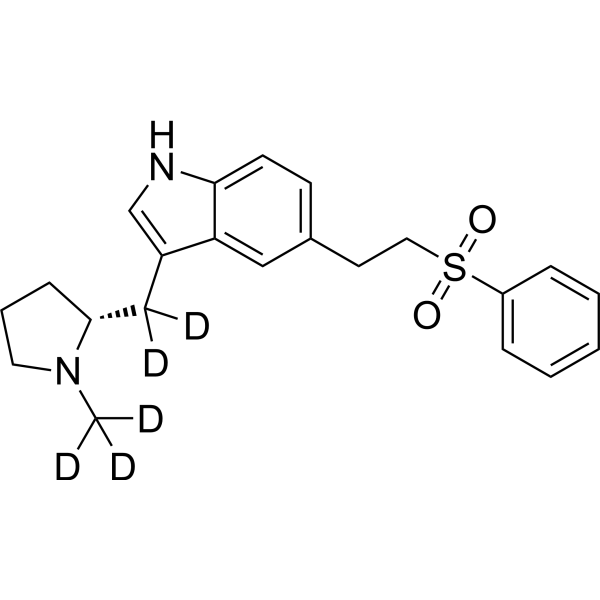
- HY-155992
-
|
|
Sigma Receptor
|
Neurological Disease
|
|
WLB-89462 (Compound 20c) is a selective σ2 receptor ligand (Ki: 13 nM). WLB-89462 has neuroprotective activity. WLB-89462 improves short-term memory impairment induced by Aβ peptide in rats. WLB-89462 has good ADMET profile (good solubility, no CYP inhibition, good metabolic stability, high permeability, brain penetration, and high oral exposure in rodents) .
|
-

- HY-163005
-
|
|
Glucosidase
|
Metabolic Disease
|
|
α-Glucosidase-IN-43 (compound AS14) is an α-glucosidase inhibitor (IC50: 4.32 μM) with acute hypoglycemic activity. α-Glucosidase-IN-43 exhibits safety and in vivo efficacy, is nontoxic to normal mouse fibroblasts, and is able to rescue streptozotocin (HY-13753)-induced diabetic rats. α-Glucosidase-IN-43 can be used to study postprandial hyperglycemia in diabetic patients .
|
-
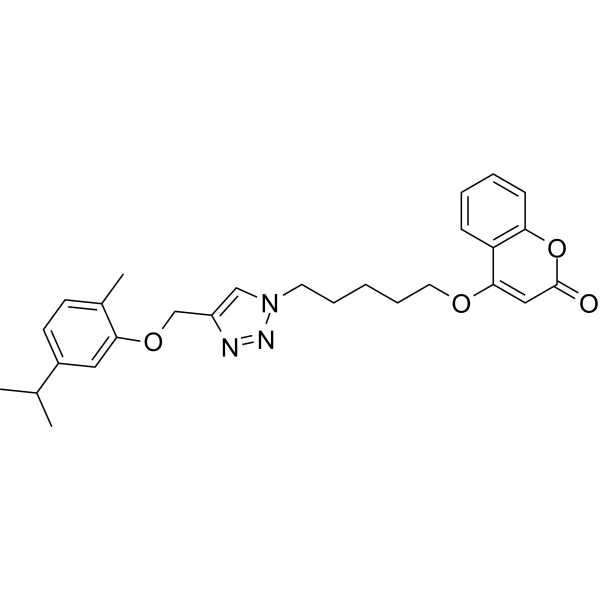
- HY-125626
-
|
8-iso-15-keto PGF2α
|
Prostaglandin Receptor
|
Cardiovascular Disease
|
|
8-iso-15-keto Prostaglandin F2α (8-iso-15-keto PGF2α) is a partial agonist for Thromboxane receptor (TP), which exhibits a vasoconstrictor efficacy with a pD2 of 5.8. 8-iso-15-keto Prostaglandin F2α mediates a weak relaxation of rats aorta rings at high concentration .
|
-
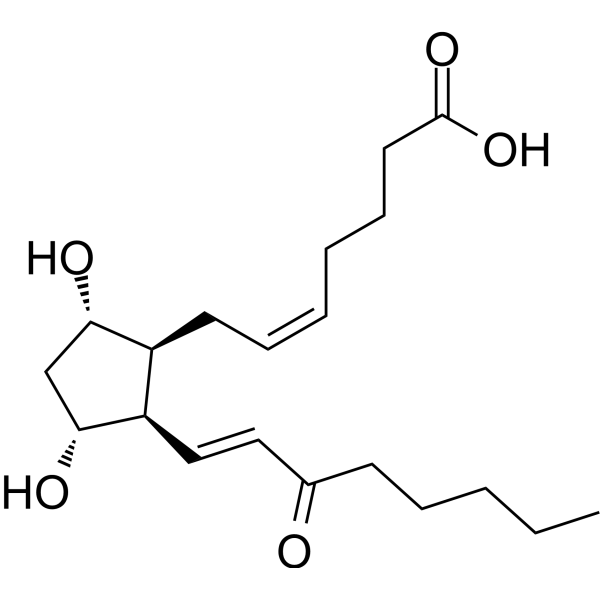
- HY-B1038
-
|
|
Others
|
Inflammation/Immunology
|
|
L-Cysteine methyl ester hydrochloride is an antitussive, phlegmolytic agent used to relieve breathing difficulties caused by large amounts of phlegm. L-Cysteine methyl ester hydrochloride is a copper corrosion inhibitor used in various industrial studies .
|
-
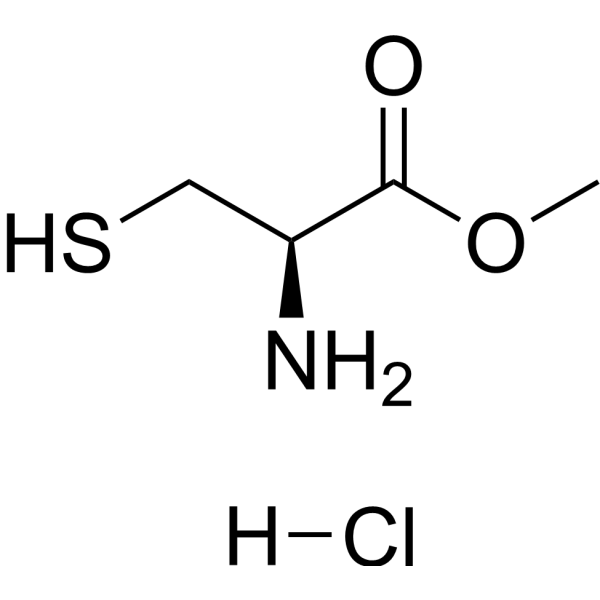
- HY-N7697F
-
|
|
Others
|
Others
|
|
Chitobiose, a chitosan oligosaccharide, is a dimer of β-1,4-linked glucosamine units . Chitobiose has orally activity and high antioxidant activity .
|
-
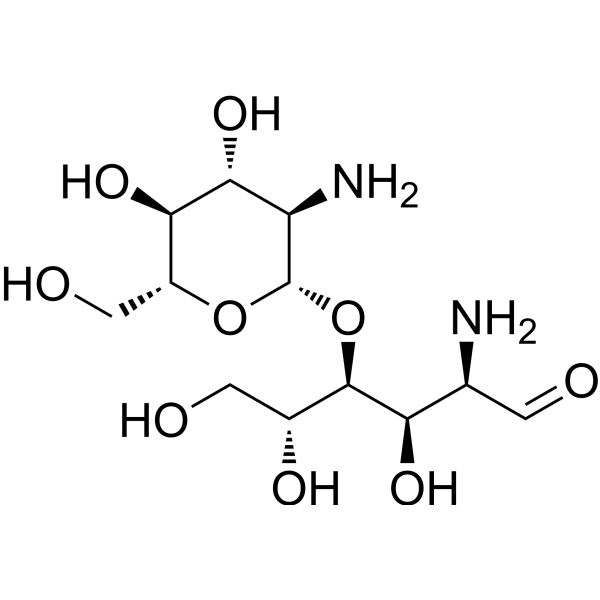
- HY-113608
-
|
|
Adenosine Receptor
|
Neurological Disease
|
|
VCP171 is a potent adenosine A1 receptor (A1R) positive allosteric modulator (PAM). VCP171 is effective at decreasing excitatory synaptic currents in Lamina II of neuropathic pain model. VCP171 can be used for researching neuropathic pain .
|
-
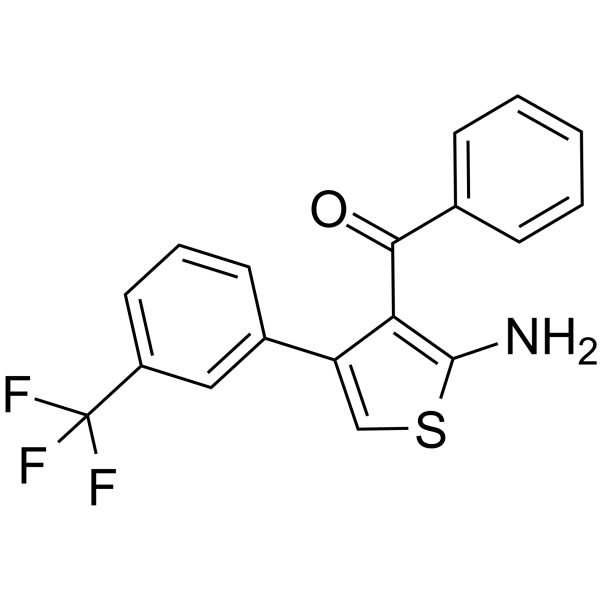
- HY-150080
-
|
BMS-986180
|
HIV
HIV Integrase
|
Infection
|
|
GSK3739936 (BMS-986180) is a potent HIV-1 allosteric integrase inhibitor with an IC50 value of 11.1 nM and an EC50 value of 1.7 nM. GSK3739936 is also a weak CYP inhibitor (IC50>24.3 μM). GSK3739936 shows favorable pharmacokinetic property in preclinical species with rapid absorption, low to moderate clearance and excellent oral bioavailability .
|
-

- HY-148456
-
-

- HY-P99615
-
|
SB 209763; RSHZ19
|
RSV
|
Infection
|
|
Felvizumab (SB 209763) is a humanized IgG1κ monoclonal antibody directed to distinct neutralizing epitopes on the F glycoprotein of RSV .
|
-

- HY-N8903
-
-
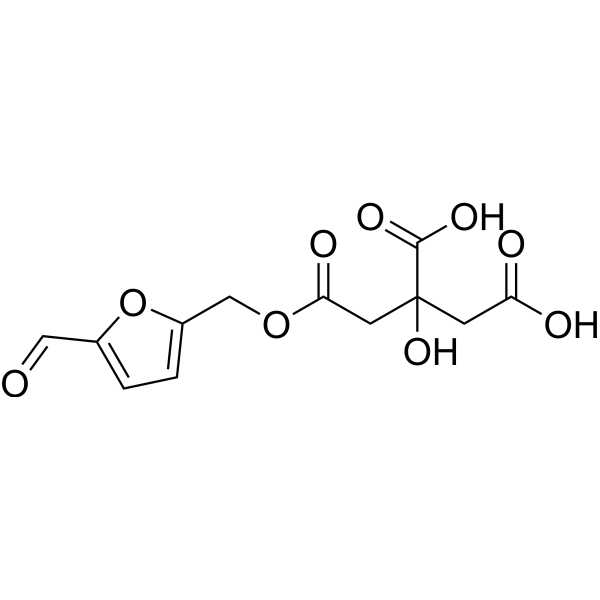
- HY-152535
-
|
|
Others
|
Infection
Inflammation/Immunology
|
|
ATV041 is an orally active Ibuprofen (HY-78131) and nucleotide analogue. ATV041 improves oral pharmacokinetic (PK) profile and tissue distribution with anti-mouse hepatitis virus (MHV) activity. ATV041 reduces viral load, tissue damage and virus-induced inflammation in a dose-dependent manner .
|
-
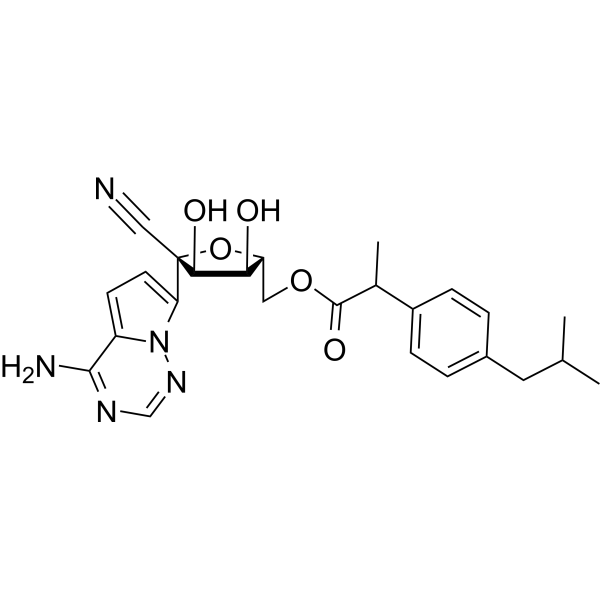
- HY-161349
-
|
|
Aminopeptidase
|
Inflammation/Immunology
|
|
LTA4H-IN-4 (compound 3) is an orally active LTA4H inhibitor. The IC50 value of LTA4H-IN-4 for hERG is 156 μM. LTA4H-IN-4 can be used in inflammation related studies .
|
-
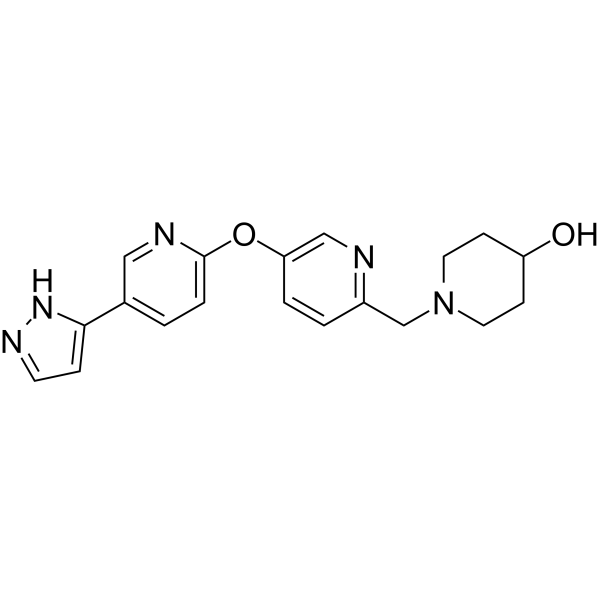
- HY-10932
-
|
Ro 13-5057
|
nAChR
iGluR
|
Neurological Disease
|
|
Aniracetam (Ro 13-5057) is an orally active neuroprotective agent, possessing nootropics effects. Aniracetam potentiates the ionotropic quisqualate (iQA) responses in the CA1 region of rat hippocampal slices. Aniracetam also potentiates the excitatory post synaptic potentials (EPSPs) in Schaffer collateral-commissural synapses. Aniracetam can prevents the CO2-induced impairment of acquisition in hypercapnia model rats. Aniracetam can be used to research cerebral dysfunctional disorders .
|
-

- HY-12119
-
|
|
NO Synthase
|
Neurological Disease
Inflammation/Immunology
|
|
GW274150 is a potent, selective, orally active and NADPH-dependent inhibitor of human inducible nitric oxide synthase (iNOS) (IC50=2.19 μM; Kd=40 nM) and rat iNOS (ED50=1.15 μM). GW274150 also displays less potency for both humans or rats endothelial NOS (eNOS) and neuronal NOS (nNOS). GW274150 exerts a protective role in an acute model of lung injury inflammation .
|
-
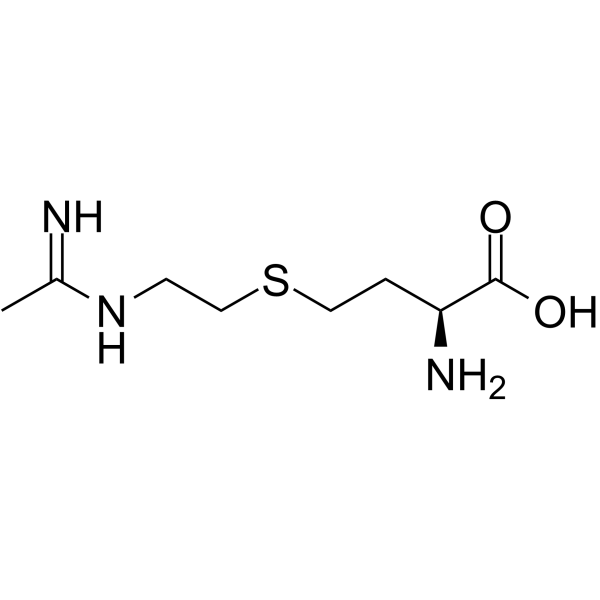
- HY-106224
-
|
Hypocretin-1 (human, rat, mouse)
|
Orexin Receptor (OX Receptor)
|
Neurological Disease
|
|
Orexin A (human, rat, mouse) (Hypocretin-1 (human, rat, mouse)), a 33 amino acid excitatory neuropeptide, orchestrates diverse central and peripheral processes. Orexin A (human, rat, mouse) is a specific, high-affinity agonist for G-protein-coupled receptor OX1R. Orexin A (human, rat, mouse) has a role in the regulation of feeding behavior. Orexin A (human, rat, mouse) is an effective anti-nociceptive and anti-hyperalgesic agent in mice and rats .
|
-

- HY-N1964
-
|
Gibberellin A3
|
|
|
|
Gibberellic Acid is named after the fungus Gibberella fujikuroi. Gibberellic Acid regulates processes in plant development and growth, including seed development and germination, stem and root growth, cell division, and flowering time. Gibberellic Acid also improves plant response to growth stress caused by various environmental stresses, such as cold stress, drought stress, heavy metal stress, etc. Gibberellic Acid also causes increased lipid peroxidation and fluctuations in the antioxidant defense system in rats .
|
-
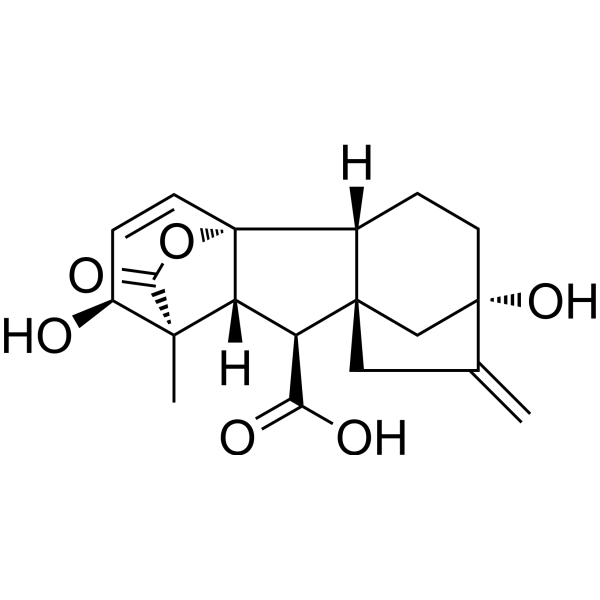
- HY-12119A
-
|
|
NO Synthase
|
Neurological Disease
Inflammation/Immunology
|
|
GW274150 phosphate is a potent, selective, orally active and NADPH-dependent inhibitor of human inducible nitric oxide synthase (iNOS) (IC50=2.19 μM; Kd=40 nM) and rat iNOS (ED50=1.15 μM). GW274150 phosphate displays less potency for both humans or rats endothelial NOS (eNOS) and neuronal NOS (nNOS). GW274150 phosphate exerts a protective role in an acute model of lung injury inflammation .
|
-

- HY-106720
-
|
YM 09538
|
Adrenergic Receptor
|
Cardiovascular Disease
|
|
Amosulalol (YM 09538) is an orally active and dual inhibitor of α1/β1-Adrenergic Receptor. Amosulalol exhibits antihypertensive activity via α1-Adrenergic Receptor inhibition. Amosulalol decreases reflexogenic increases in heart rate and plasma renin activity (PRA) via β1-Adrenergic Receptor inhibition in spontaneously hypertensive rats (SHR) .
|
-

- HY-A0039S2
-
|
|
5-HT Receptor
|
|
|
Eletriptan-d5 (hydrochloride) is the deuterium labeled Eletriptan hydrochloride[1]. Eletriptan (UK-116044) hydrochloride is a highly selective and orally active serotonin 5-HT1B and 5-HT1D receptor agonist, with pKi values of 8.0 and 8.9, respectively. Eletriptan hydrochloride has inhibitory effects on markers of neurogenic inflammation in rats. Eletriptan hydrochloride can be used for researching migraine[2].
|
-

- HY-P1409
-
|
|
Potassium Channel
|
Inflammation/Immunology
|
|
ADWX 1 is a new peptide inhibitor that is potent and selective for Kv1.3 with an IC50 value of 1.89 pM. ADWX 1 inhibits Kv1.3 channel activity specifically to inhibit both the initial calcium signaling and NF-κB activation. ADWX 1 ameliorates the disease in rats of experimental autoimmune encephalomyelitis (EAE) models. ADWX 1 can be used to study T cell-mediated autoimmune diseases .
|
-

- HY-107655
-
|
ABET
|
mAChR
|
Cardiovascular Disease
|
|
Arecaidine but-2-ynyl ester tosylate (ABET) is a selective mAChR M2 agonist that dose-dependently decreases mean arterial pressure and heart rate in rats. Arecaidine but-2-ynyl ester tosylate can be used for cardiovascular disease research . Arecaidine but-2-ynyl ester (tosylate) is a click chemistry reagent, it contains an Alkyne group and can undergo copper-catalyzed azide-alkyne cycloaddition (CuAAc) with molecules containing Azide groups.
|
-
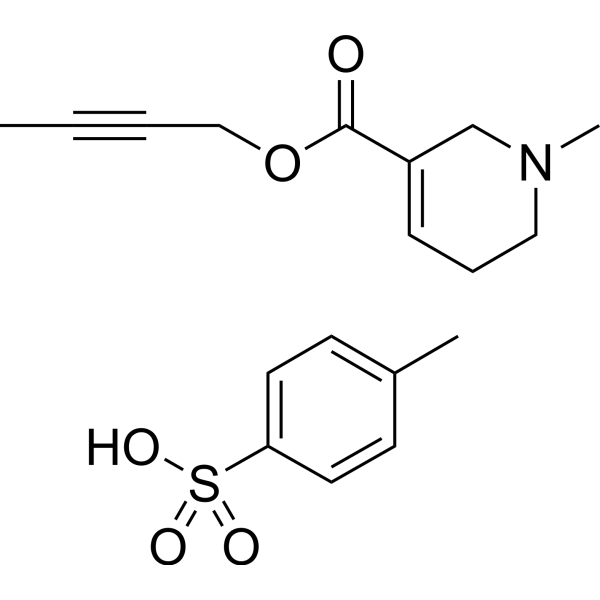
- HY-N2026S
-
|
Propyl parahydroxybenzoate-d7; Propyl 4-hydroxybenzoate-d7
|
Isotope-Labeled Compounds
|
Others
|
|
Propylparaben-d7 (Propyl parahydroxybenzoate-d7)is the deuterium labeledPropylparaben(HY-N2026) . Propylparaben (Propyl parahydroxybenzoate) is an antimicrobial preservative which can be produced naturally by plants and bacteria. Propylparaben is prevalently used in cosmetics, pharmaceuticals, and foods. Propylparaben disrupts antral follicle growth and steroidogenic function by altering the cell-cycle, apoptosis, and steroidogenesis pathways. Propylparaben also decreases sperm number and motile activity in rats .
|
-

- HY-12119B
-
|
|
NO Synthase
|
Neurological Disease
Inflammation/Immunology
|
|
GW274150 (dihydrochloride) is a potent, selective, orally active and NADPH-dependent inhibitor of human inducible nitric oxide synthase (iNOS) (IC50=2.19 μM; Kd=40 nM) and rat iNOS (ED50=1.15 μM). GW274150 (dihydrochloride) displays less potency for both humans or rats endothelial NOS (eNOS) and neuronal NOS (nNOS). GW274150 (dihydrochloride) exerts a protective role in an acute model of lung injury inflammation .
|
-
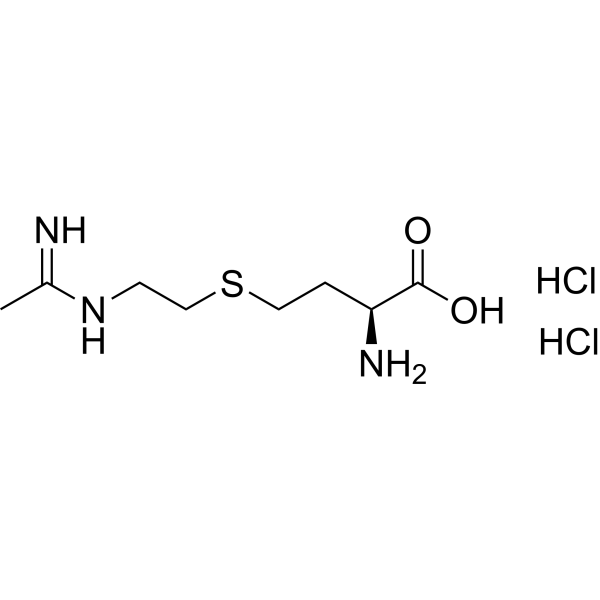
- HY-157928
-
|
|
Keap1-Nrf2
|
Inflammation/Immunology
|
|
Keap1-Nrf2-IN-18 (Compound 22) is an orally active Keap1-Nrf2 protein-protein interaction (PPI) inhibitor with good pharmacokinetics (PK) profiles and more potent in vivo activities in rats. Keap1-Nrf2-IN-18 has the strongest inhibitory activity in structure−activity relationship (SAR) study (KD = 0.0029 μM) .
|
-
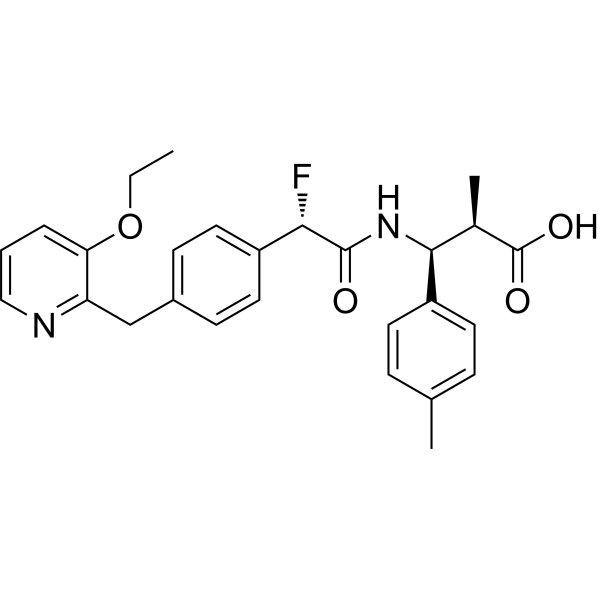
- HY-W009732
-
|
Sinapic acid
|
HDAC
Angiotensin-converting Enzyme (ACE)
Reactive Oxygen Species
Apoptosis
|
Metabolic Disease
Cancer
|
|
Sinapinic acid (Sinapic acid) is a phenolic compound isolated from Hydnophytum formicarum Jack. Rhizome, acts as an inhibitor of HDAC, with an IC50 of 2.27 mM , and also inhibits ACE-I activity . Sinapinic acid posssess potent anti-tumor activity, induces apoptosis of tumor cells . Sinapinic acid shows antioxidant and antidiabetic activities . Sinapinic acid reduces total cholesterol, triglyceride, and HOMA-IR index, and also normalizes some serum parameters of antioxidative abilities and oxidative damage in ovariectomized rats .
|
-
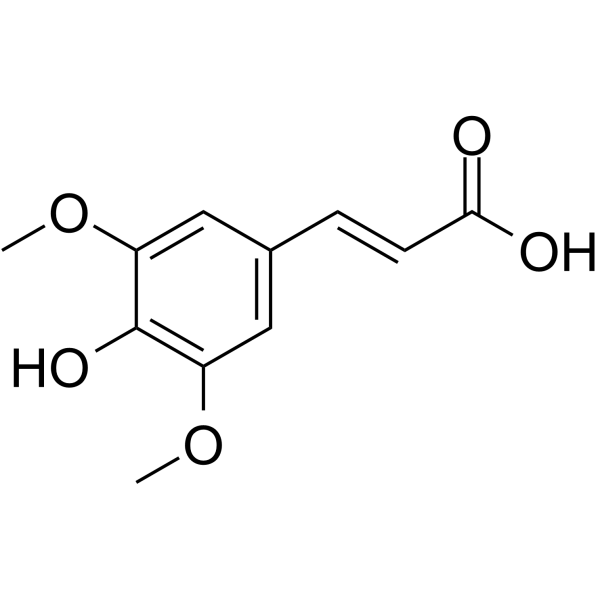
- HY-117482
-
|
|
γ-secretase
|
Neurological Disease
|
|
BPN-15606 is a highly potent, orally active γ-secretase modulator (GSM), attenuates the production of Aβ42 and Aβ40 by SHSY5Y neuroblastoma cells with IC50 values of 7 nM and 17nM, respectively. BPN-15606 lowers Aβ42 and Aβ40 levels in the central nervous system of rats and mice. BPN-15606 has acceptable PK/PD properties, including bioavailability, half-life, and clearance .
|
-
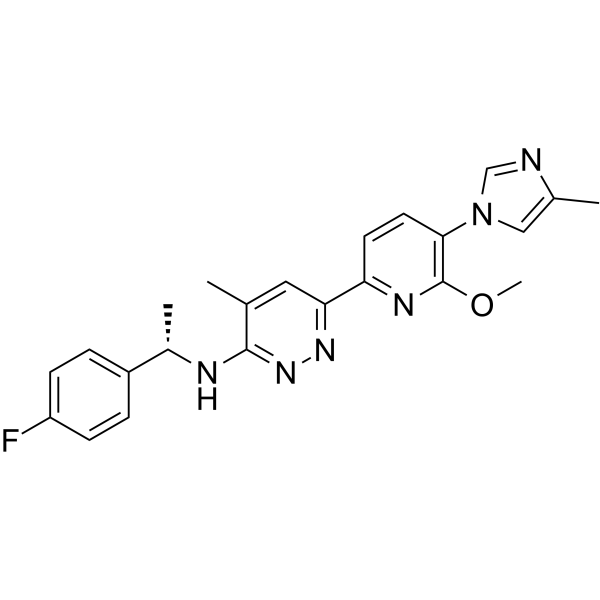
- HY-106224A
-
|
Hypocretin-1 (human, rat, mouse) (TFA)
|
Orexin Receptor (OX Receptor)
|
Neurological Disease
|
|
Orexin A (human, rat, mouse) (Hypocretin-1 (human, rat, mouse)) TFA, a 33 amino acid excitatory neuropeptide, orchestrates diverse central and peripheral processes. Orexin A (human, rat, mouse) TFA is a specific, high-affinity agonist for G-protein-coupled receptor OX1R. Orexin A (human, rat, mouse) TFA has a role in the regulation of feeding behavior. Orexin A (human, rat, mouse) TFA is an effective anti-nociceptive and anti-hyperalgesic agent in mice and rats .
|
-

- HY-120355A
-
|
|
Potassium Channel
|
Cardiovascular Disease
|
|
AP14145 hydrochloride is a potent KCa2 (SK) channel negative allosteric modulator with an IC50 of 1.1 μM for KCa2.2 (SK2) and KCa2.3 (SK3) channels. AP14145 hydrochloride inhibition strongly depends on two amino acids, S508 and A533 in the channel. AP14145 hydrochloride prolonged atrial effective refractory period (AERP) in rats and demonstrates antiarrhythmic effects in a Vernakalant-resistant porcine model of atrial fibrillation (AF) .
|
-

- HY-P1323
-
|
|
Neuropeptide Y Receptor
|
Cardiovascular Disease
Neurological Disease
|
|
[Leu31,Pro34]-Neuropeptide Y(human,rat) is a specific neuropeptide Y Y1 receptor agonist. [Leu31,Pro34]-Neuropeptide Y(human,rat) slao activates Y4, Y5. [Leu31,Pro34]-Neuropeptide Y(human,rat) can increase blood pressure in anesthetized rats and increases food intake .
|
-
![[Leu31,Pro34]-Neuropeptide Y (human,rat)](//file.medchemexpress.com/product_pic/hy-p1323.gif)
- HY-P1323A
-
|
|
Neuropeptide Y Receptor
|
Cardiovascular Disease
Neurological Disease
|
|
[Leu31,Pro34]-Neuropeptide Y(human,rat) TFA is a specific neuropeptide Y Y1 receptor agonist. [Leu31,Pro34]-Neuropeptide Y(human,rat) TFA slao activates Y4, Y5. [Leu31,Pro34]-Neuropeptide Y(human,rat) TFA can increase blood pressure in anesthetized rats and increases food intake .
|
-
![[Leu31,Pro34]-Neuropeptide Y(human,rat,mouse) TFA](//file.medchemexpress.com/product_pic/hy-p1323a.gif)
- HY-117482A
-
|
|
γ-secretase
|
Neurological Disease
|
|
BPN-15606 besylate is a highly potent, orally active γ-secretase modulator (GSM), attenuates the production of Aβ42 and Aβ40 by SHSY5Y neuroblastoma cells with IC50 values of 7 nM and 17nM, respectively. BPN-15606 besylate lowers Aβ42 and Aβ40 levels in the central nervous system of rats and mice. BPN-15606 besylate has acceptable PK/PD properties, including bioavailability, half-life, and clearance .
|
-
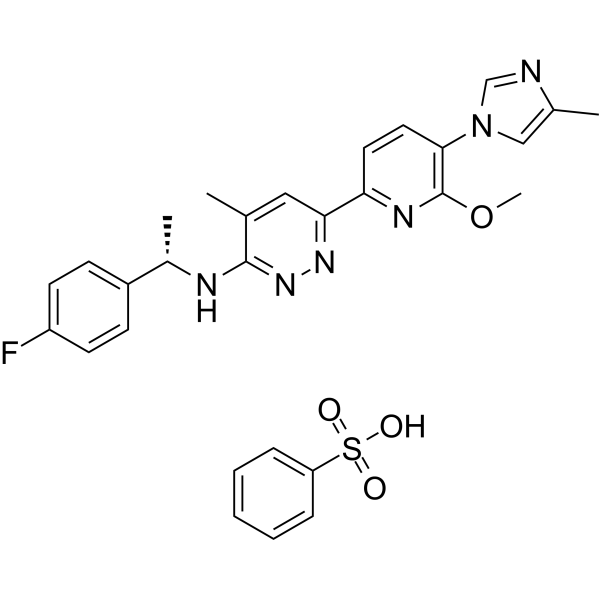
- HY-146005
-
|
|
Microtubule/Tubulin
|
Neurological Disease
Inflammation/Immunology
|
|
Tau-aggregation and neuroinflammation-IN-1 is a potent tau-aggregation and neuroinflammation inhibitor. Tau-aggregation and neuroinflammation-IN-1 exhibits remarkable inhibitory activities against AcPHF6 and full-length tau aggregation. Tau-aggregation and neuroinflammation-IN-1 has a low cytotoxicity and reduced NO release in LPS-stimulated BV2 cells. Tau-aggregation and neuroinflammation-IN-1 can reverse okadaic acid-induced memory impairment in rats .
|
-
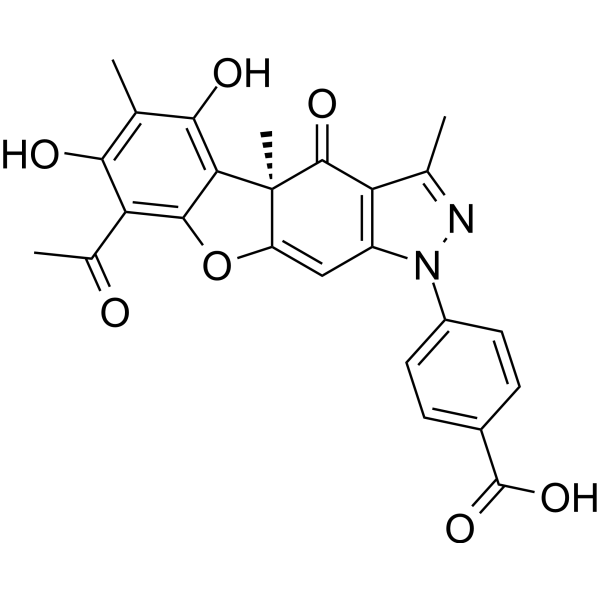
- HY-121166
-
|
(S)-Betaxolol
|
Adrenergic Receptor
|
Others
|
|
Levobetaxolol is a potent and high affinity β-adrenergic antagonist with IC50 values of 33.2, 2970, 709 nM for guinea pig atrial β1, tracheal β2 and rat colonic β3 receptors, respectively. Levobetaxolol reduces IOP (intraocular pressure). Levobetaxolol exhibits a micromolar affinity for L-type Ca21-channels. Levobetaxolol decreases the effects of ischaemia/reperfusion injury in rats. Levobetaxolol has the potential for the research of glaucoma .
|
-
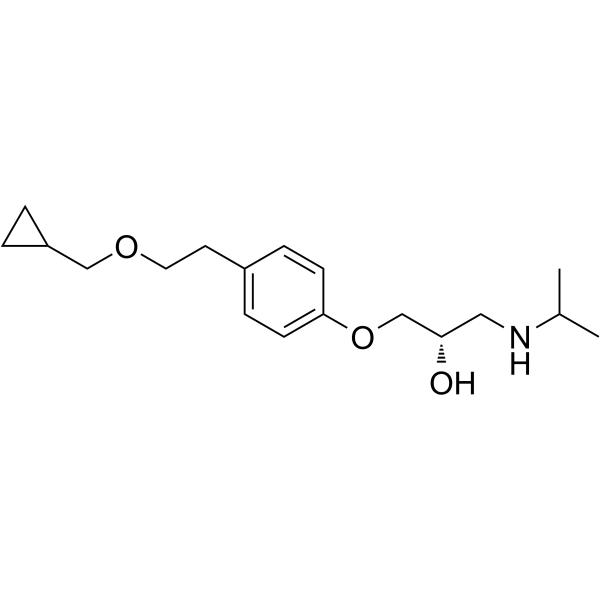
- HY-100978
-
|
DL-Hexanoylcarnitine chloride
|
Endogenous Metabolite
|
Metabolic Disease
|
|
(±)-Hexanoylcarnitine chloride is a fatty acid metabolite that breaks down fatty acids into energy that can be used by the body. (±)-Hexanoylcarnitine chloride also serves as a specific and easily detectable biomarker for rat skeletal muscle toxicity. Cerivastatin (HY-129458) and TMPD (HY-W012145) induce an increase in Hexanoylcarnitine in rats in a metabolomic analysis of the rectus femoris muscle. In type 2 diabetes, Hexanoylcarnitine is also significantly associated with and improves prediction of all-cause mortality. Hexanoylcarnitine is a biomarker for the identification of novel pathogenic pathways .
|
-

- HY-155993
-
|
|
PARP
|
Cancer
|
|
YCH1899 is an orally active PARP inhibitor, with an IC50< 0.001 nM for PARP1/2. YCH1899 exhibits distinct antiproliferation activity against Olaparib (HY-10162)-resistant and Talazoparib (HY-16106)-resistant Capan-1 cells (Capan-1/OP and Capan-1/TP cells) , with IC50 values of 0.89 and 1.13 nM, respectively. YCH1899 has acceptable pharmacokinetic properties in rats .
|
-
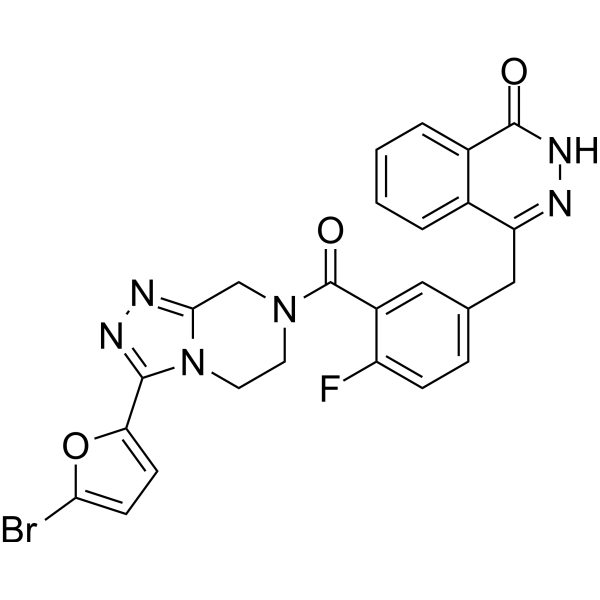
- HY-N0378
-
|
Mannitol; Mannite
|
Endogenous Metabolite
Apoptosis
Adrenergic Receptor
PGC-1α
PKA
|
Metabolic Disease
Cancer
|
|
D-Mannitol (Mannitol) is an oral, resistant sugar widely used in the food and pharmaceutical industries to promote the absorption and retention of calcium and magnesium through cecal fermentation, while acting as a osmotic diuretic to reduce tissue edema. D-Mannitol can enhance brown fat formation, improve insulin effect, reduce blood sugar levels, And through the start the β3-adrenergic receptor (β3-AR), PGC1α and PKA induced by means of white fat cells into brown fat cells .
|
-

- HY-111827
-
-
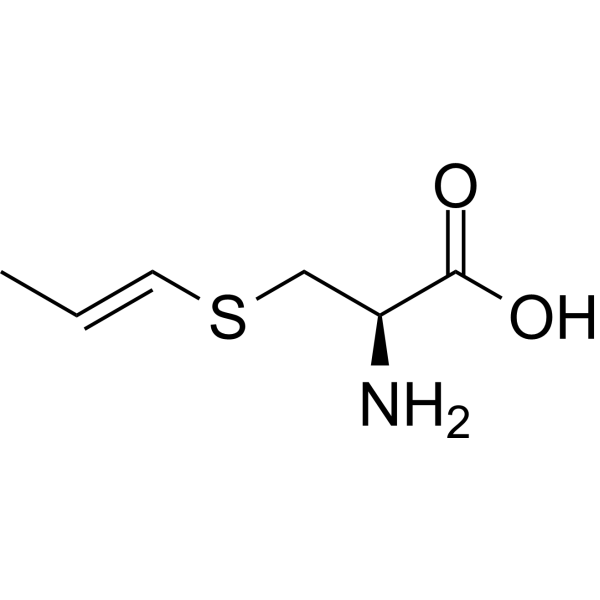
- HY-N0171B
-
|
β-Sitosterol (purity>75%); 22,23-Dihydrostigmasterol (purity>75%)
|
Apoptosis
|
Cardiovascular Disease
Inflammation/Immunology
Cancer
|
|
Beta-Sitosterol (purity>75%) is a phytosterol with oral activity. Beta-Sitosterol (purity>75%) interferes with a variety of cell signaling pathways, including the cell cycle, apoptosis and cell proliferation. Beta-Sitosterol (purity>75%) has anti-inflammatory, antioxidant, and antitumor activities .
|
-
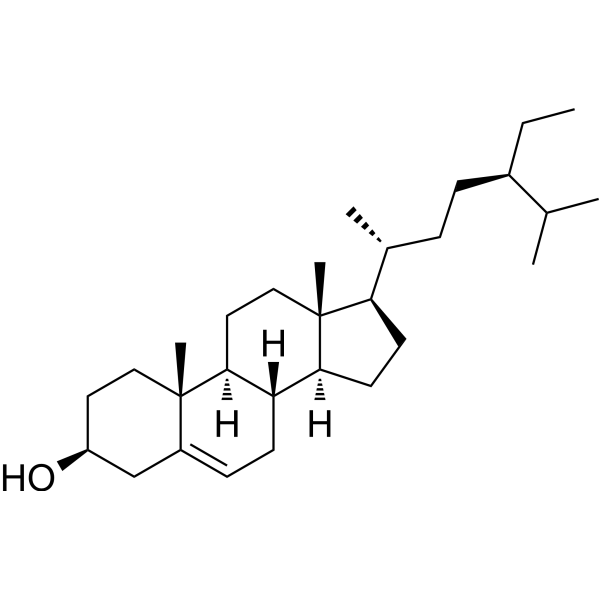
- HY-143406
-
|
|
Fungal
|
Infection
|
|
Antifungal agent 25 is a potent broad-spectrum antifungal agent. Antifungal agent 25 shows antifungal effect against Candida albicans and fluconazole-resistant strain of Candida albicans. Antifungal agent 25 stable metabolic property in vivo .
|
-
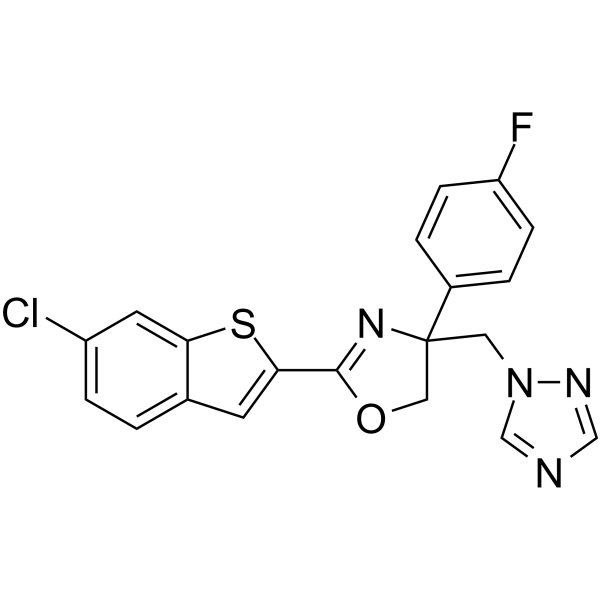
- HY-146704
-
|
|
Epoxide Hydrolase
COX
|
Cardiovascular Disease
|
|
COX-2/sEH-IN-1 (Compound 9c) is an orally active, dual COX-2 and sEH (soluble epoxide hydrolase) inhibitor with IC50 values of 1.24 µM and 0.40 nM against COX-2 and sEH, respectively. COX-2/sEH-IN-1 shows improved anti-inflammatory activity and highly reduced cardiovascular risks .
|
-
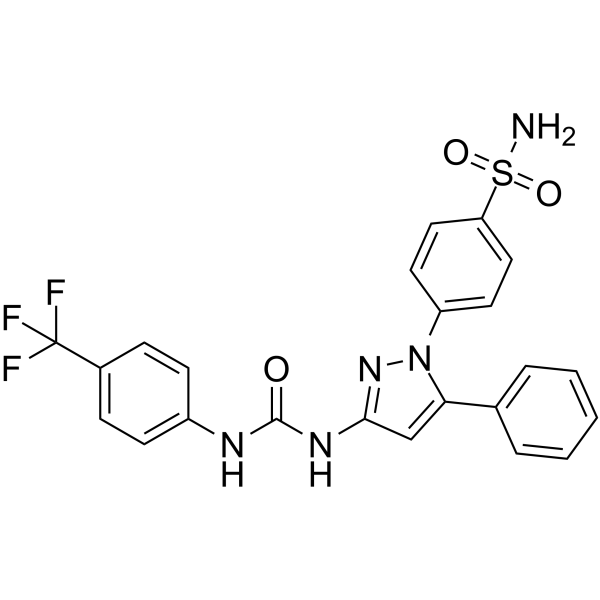
- HY-149179
-
|
|
Bacterial
Antibiotic
|
Infection
|
|
Polymyxin B is an antibiotic. Polymyxin B inhibits Gram-negative infections by binding to the LPS of the bacterial wall with high affinity. Polymyxin B neutralizes the effect of endotoxin. Polymyxin B induces bacterial death by increasing its permeability. Polymyxin B is used in endotoxemia research .
|
-

- HY-163207
-
|
|
Epoxide Hydrolase
HDAC
|
Neurological Disease
|
|
sEH/HDAC6-IN-1 (compound M9) is a selective, orally active dual inhibitor for sEH and HDAC6, with IC50s of 2 nM, 0.72 nM and 5 nM, for human sEH, murine sEH and HDAC6, respectively. sEH/HDAC6-IN-1 reveals analgesic and anti-inflammatory effects .
|
-
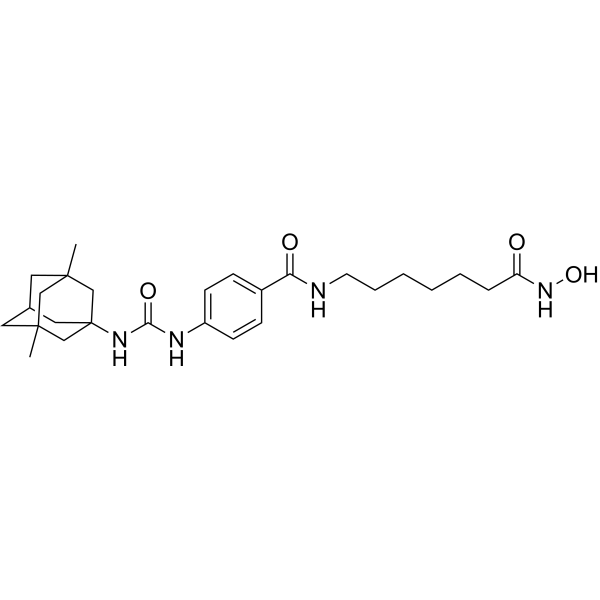
- HY-106353
-
|
|
mAChR
Endogenous Metabolite
|
Neurological Disease
|
|
Smilagenin (SMI) is a small-molecule steroidal sapogenin from Anemarrhena asphodeloides and Pelargonium hortorum widely used in traditional Chinese medicine for treating chronic neurodegeneration diseases .
Smilagenin (SMI) improves memory of aged rats by increasing the muscarinic receptor subtype 1 (M1)-receptor density .
Smilagenin (SMI) attenuates Aβ(25-35)-induced neurodegenerationvia stimulating the gene expression of brain-derived neurotrophic factor, may represents a novel therapeutic strategy for AD .
|
-
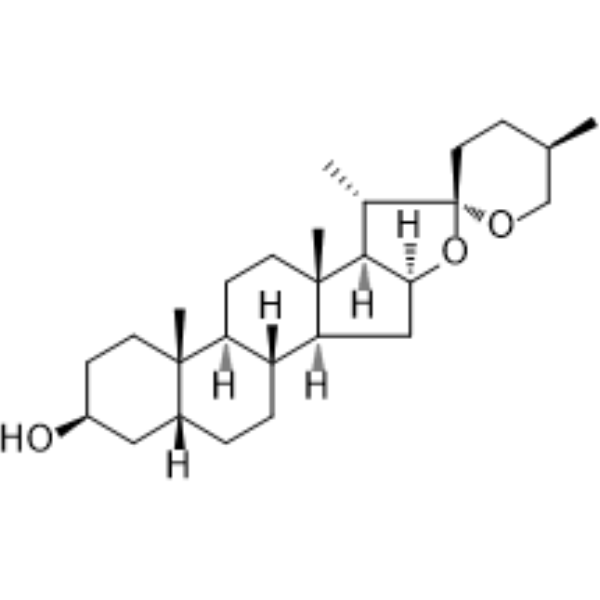
- HY-P1723A
-
|
Neuropeptide Q TFA
|
Neuropeptide Y Receptor
|
|
|
Spexin TFA is a potent galanin receptor 2/3 (GAL2/GAL3) agonist (EC50 values are 45.7 and 112.2 nM, respectively). Spexin TFA exhibits no significant activity at galanin receptor 1. Spexin TFA is an endogenous satiety-inducing peptide; Spexin TFA inhibits long chain fatty acid uptake by adipocytes and decreases food consumption in diet-induced obese mice and rats. Spexin TFA attenuates LH secretion in goldfish. Spexin TFA exhibits anxiolytic effects in vivo.
|
-

- HY-130272
-
|
|
Others
|
Cardiovascular Disease
|
|
Anti-MI/R injury agent 1 (compound 18), a Panaxatriol derivative, is an orally active, potent anti-myocardial ischemia/reperfusion (anti-MI/R) injury agent. Anti-MI/R injury agent 1 enhances oxygen-glucose deprivation and reperfusion (OGD/R)-induced cardiomyocyte injury cell viability. Anti-MI/R injury agent 1 can markedly reduce myocardial infarction size, decrease circulating cardiac troponin I (cTnI) leakage, and alleviate cardiac tissue damage in the rats .
|
-
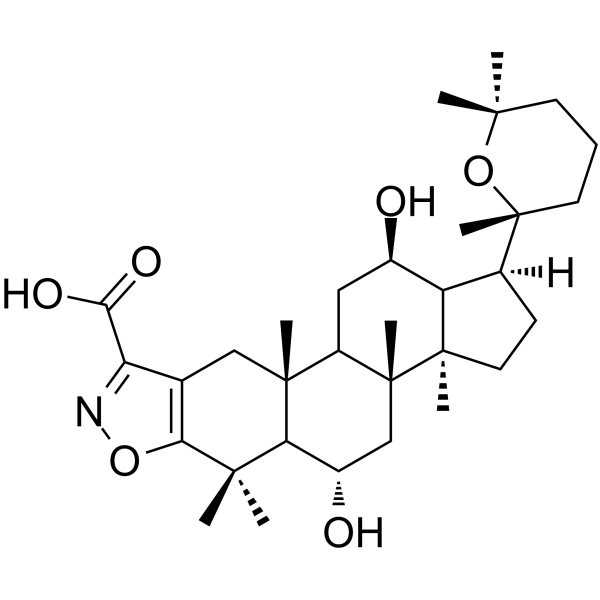
- HY-P4683
-
|
|
Vasopressin Receptor
|
Cardiovascular Disease
|
|
(Phenylac1,D-Tyr(Et)2,Lys6,Arg8,des-Gly9)-Vasopressin is a potent vasopressin V1 receptor (VP V1R) antagonist. (Phenylac1,D-Tyr(Et)2,Lys6,Arg8,des-Gly9)-Vasopressin significantly decreases the mean arterial pressure (MAP) in rats .
|
-
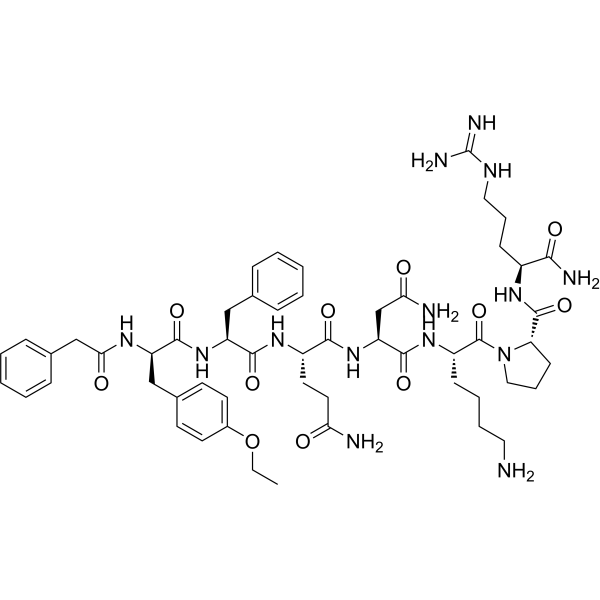
- HY-149340
-
|
|
Cholinesterase (ChE)
|
Neurological Disease
|
|
PD07 is an orally active AChE inhibitor (IC50: 0.29 μM for hAChE). PD07 also inhibits ChEs, BACE1 (IC50: 13.42 μM), and Aβ1–42 aggregation in in vitro. PD07 is an antioxidant, and shows DPPH inhibitory activity (IC50: 26.46 μM). PD07 improves memory and cognition in Scopolamine (HY-N0296)-induced amnesia rats. PD07 can be used for research of Alzheimer’s disease .
|
-
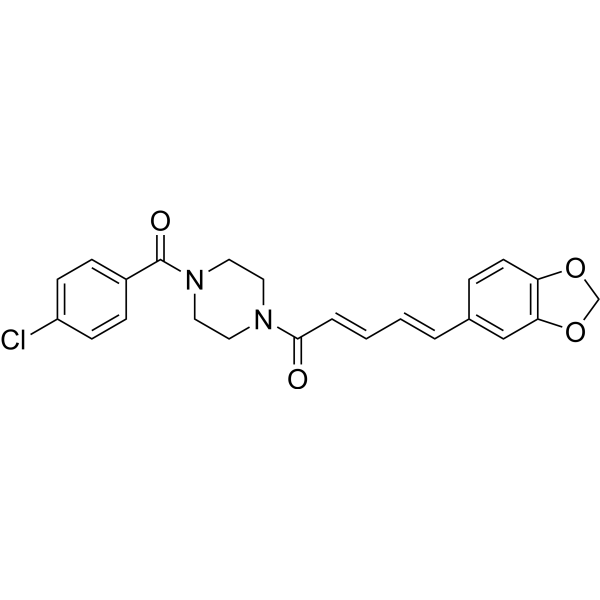
- HY-W103463
-
|
1-Phenylpyrrolidin-2-one
|
GABA Receptor
|
Neurological Disease
|
|
1-Phenyl-2-pyrrolidinone (1-Phenylpyrrolidin-2-one) is a phenyl analogue of GABA with sedative effect, decreasing the exploratory behavior of rats at 50-100 mg/kg (i.v.). 1-Phenyl-2-pyrrolidinone also has been proved to inhibit emotional reactions in dogs and cats. 1-Phenyl-2-pyrrolidinone induces decreases in the pressor reaction to emotional stress without accompanied by normalization of the function of baroreceptor reflexes .
|
-
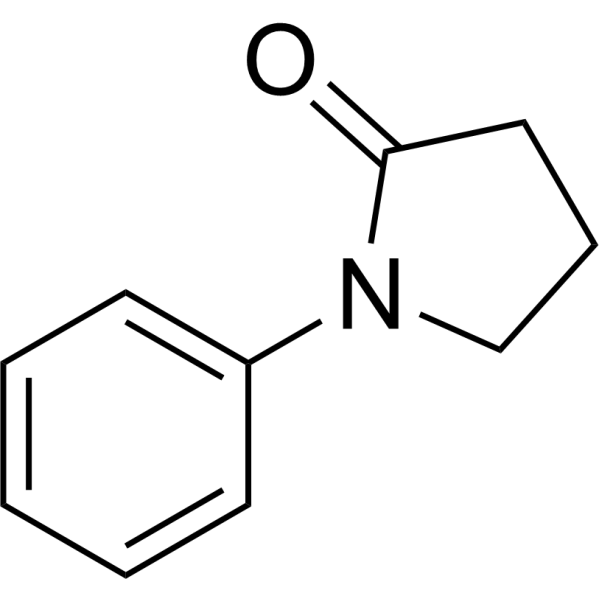
- HY-155733
-
|
|
iGluR
Cholinesterase (ChE)
Amyloid-β
|
Neurological Disease
|
|
AChE/Aβ-IN-1 (compound 32) is a potent and orally active inhibitor of acetylcholinesterase (AChE) with an IC50 of 86 nM, as well as an antagonist of NMDA receptor (GluN1-1b/GluN2B subunit combination) with IC50 of 3.876 μM. AChE/Aβ-IN-1 also inhibits Aβ aggregation and shows good blood-brain barrier permeability and neuroprotection. AChE/Aβ-IN-1 improves cognitive and spatial memory impairment in rats model .
|
-

- HY-155735
-
|
|
iGluR
Cholinesterase (ChE)
Amyloid-β
|
Neurological Disease
|
|
AChE/Aβ-IN-2 (compound 33) is a potent and orally active inhibitor of acetylcholinesterase (AChE) with IC50 of 135 nM, as well as an antagonist of NMDA receptor (GluN1-1b/GluN2B subunit combination) with IC50 of 5.054 μM. AChE/Aβ-IN-2 also inhibits Aβ aggregation and shows good blood-brain barrier permeability. AChE/Aβ-IN-2 improves cognitive and spatial memory impairment in rats model .
|
-
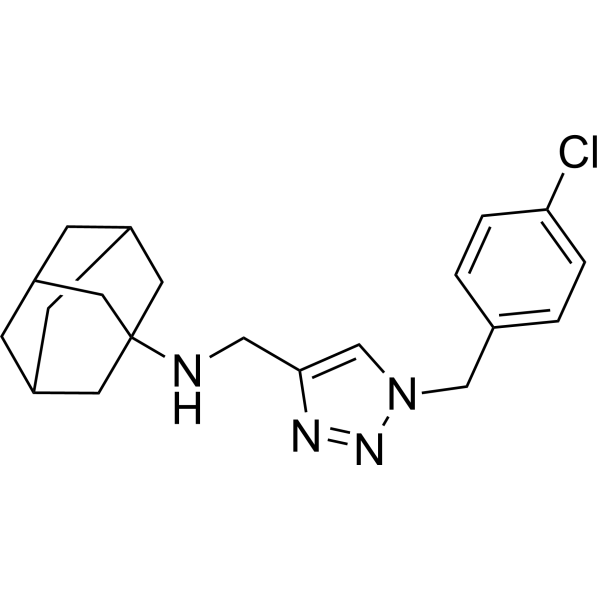
- HY-N1964R
-
|
Gibberellin A3 (Standard)
|
Others
|
Others
|
|
Gibberellic acid (Standard) is the analytical standard of Gibberellic acid. This product is intended for research and analytical applications. Gibberellic Acid is named after the fungus Gibberella fujikuroi. Gibberellic Acid regulates processes in plant development and growth, including seed development and germination, stem and root growth, cell division, and flowering time. Gibberellic Acid also improves plant response to growth stress caused by various environmental stresses, such as cold stress, drought stress, heavy metal stress, etc. Gibberellic Acid also causes increased lipid peroxidation and fluctuations in the antioxidant defense system in rats .
|
-
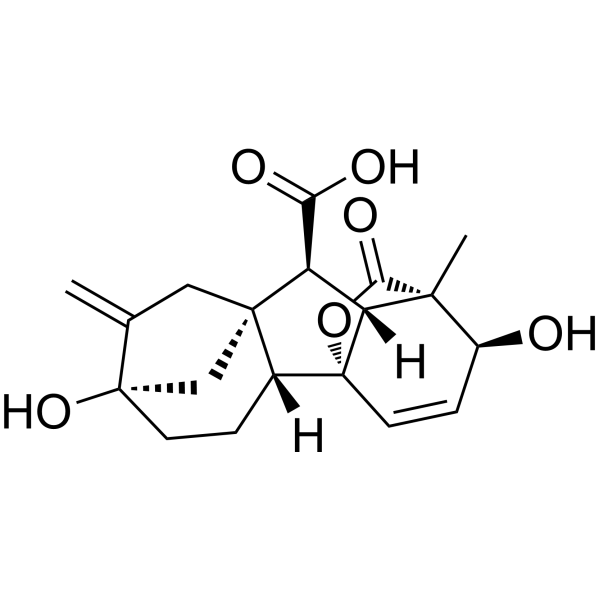
- HY-P4683A
-
|
|
Vasopressin Receptor
|
Cardiovascular Disease
|
|
(Phenylac1,D-Tyr(Et)2,Lys6,Arg8,des-Gly9)-Vasopressin is a potent vasopressin V1 receptor (VP V1R) antagonist. (Phenylac1,D-Tyr(Et)2,Lys6,Arg8,des-Gly9)-Vasopressin significantly decreases the mean arterial pressure (MAP) in rats .
|
-

- HY-B1232
-
|
Su-4885
|
Endogenous Metabolite
Cytochrome P450
Autophagy
|
Neurological Disease
Metabolic Disease
Endocrinology
Cancer
|
|
Metyrapone (Su-4885) is a potent and orally active 11β-hydroxylase inhibitor and an autophagy activator, also inhibits the production of aldosterone. Metyrapone inhibits synthesis of endogenous adrenal corticosteroid, decreases glucocorticoid levels, and also affects behavior and emotion. In addition, Metyrapone increases the efficiency of autophagic process via downregulation of mTOR pathway, and interacts with Pseudomonas putida cytochrome P-450. Metyrapone can be used for researching Cushing's syndrome and depression .
|
-

- HY-117661
-
|
|
SRPK
VEGFR
|
Cardiovascular Disease
Cancer
|
|
SPHINX31 is a potent and selective SRPK1 inhibitor, with an IC50 of 5.9 nM. SPHINX31 inhibits phosphorylation of serine/arginine-rich splicing factor 1 (SRSF1). SPHINX31 also decreases the mRNA expression of pro-angiogenic VEGF-A165a isoform. SPHINX31 can be used to research neovascular eye disease .
|
-

- HY-115989
-
|
|
HCV
|
Infection
|
|
HCV-IN-38 is a potent, selective and orally active HCV inhibitor (EC50=15 nM, SI=431). HCV-IN-38 has high anti-HCV activity and low cytotoxicity. HCV-IN-38 has a good safety and oral pharmacokinetic profile .
|
-
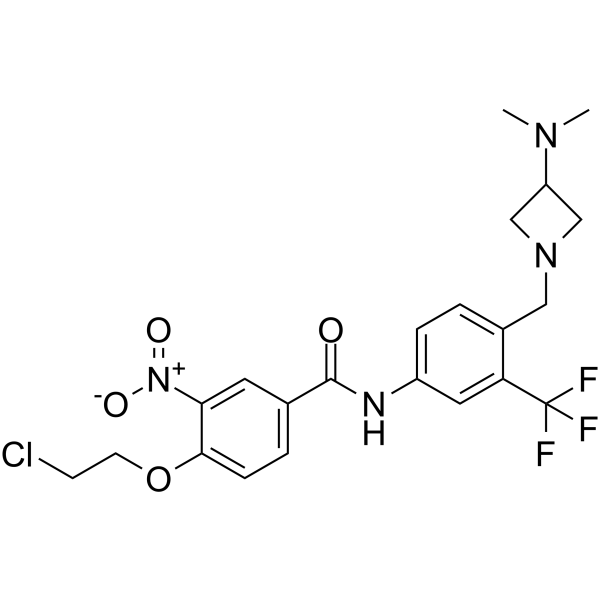
- HY-144627
-
|
|
PROTACs
TAM Receptor
|
Cancer
|
|
PROTAC Axl Degrader 2 is a potent and selective PROTAC Axl degrader with an IC50 of 1.61 µM. PROTAC Axl Degrader 2 shows anti-proliferation activity, anti-migration activity in vitro. PROTAC Axl Degrader 2 induces mehuosis .
|
-
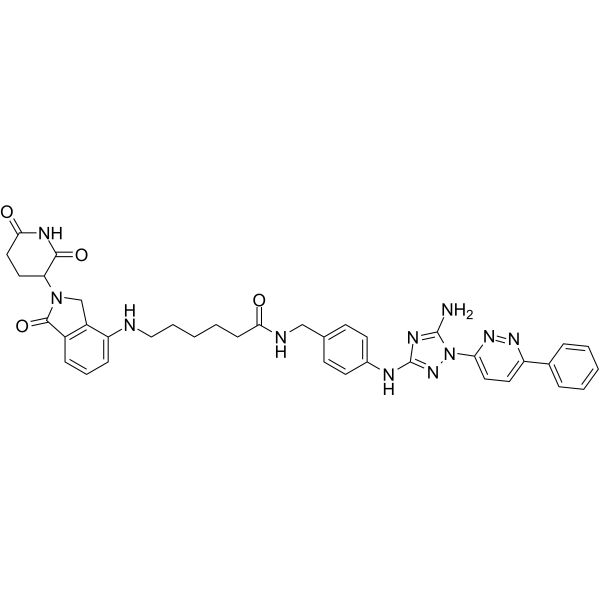
- HY-144624
-
|
|
PROTACs
TAM Receptor
|
Cancer
|
|
PROTAC Axl Degrader 1 is a potent and selective PROTAC Axl degrader with an IC50 of 0.92 µM. PROTAC Axl Degrader 1 shows anti-proliferation activity, anti-migration activity in vitro. PROTAC Axl Degrader 1 induces mehuosis .
|
-
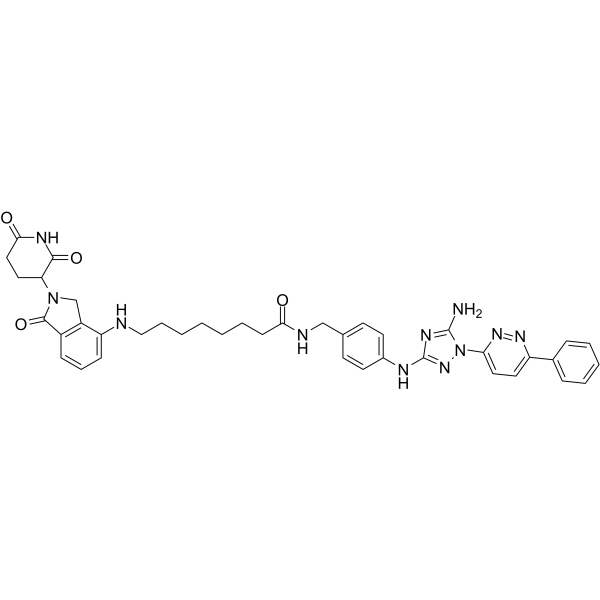
- HY-B1232A
-
|
Su-4885 Tartrate
|
Endogenous Metabolite
Cytochrome P450
Autophagy
mTOR
|
Neurological Disease
Endocrinology
|
|
Metyrapone (Su-4885) Tartrate is a potent and orally active 11β-hydroxylase inhibitor and an autophagy activator, also inhibits the production of aldosterone. Metyrapone Tartrate inhibits synthesis of endogenous adrenal corticosteroid, decreases glucocorticoid levels, and also affects behavior and emotion. In addition, Metyrapone Tartrate increases the efficiency of autophagic process via downregulation of mTOR pathway, and interacts with Pseudomonas putida cytochrome P-450. Metyrapone Tartrate can be used for researching Cushing's syndrome and depression .
|
-
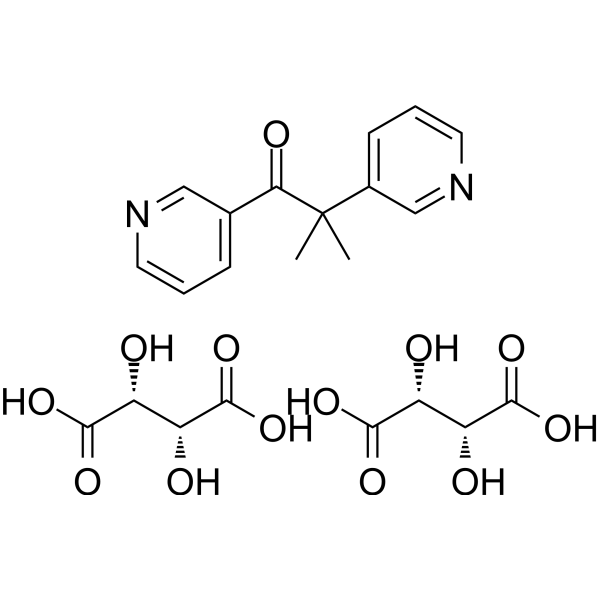
- HY-14151
-
|
|
5-HT Receptor
Apoptosis
Autophagy
|
Neurological Disease
Cancer
|
|
Prucalopride is an orally active, selective and specific 5-HT 4 receptor agonist (high affinity), with pKis of 8.6 and 8.1 for human 5-HT4a/4b receptors, respectively. Prucalopride improves intestinal motility by promoting regeneration of the intestinal nervous system in rats. Prucalopride also shows anticancer activity by blocking of the PI3K/AKT/mTor signaling pathway. Prucalopride can be used in studies of chronic constipation, pseudo-intestinal obstruction and cancer .
|
-
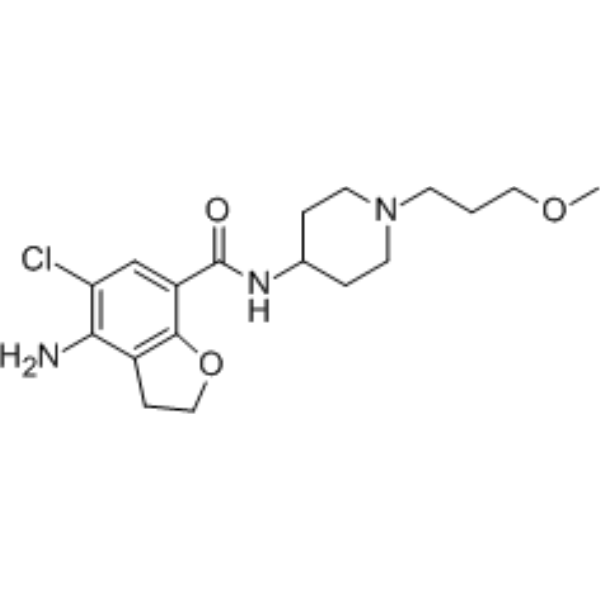
- HY-128679
-
|
|
IKK
|
Cancer
|
|
TBK1/IKKε-IN-5 (compound 1) is an orally active TBK1 and IKKε dual inhibitor, with IC50 values of 1 and 5.6 nM, respectively. TBK1/IKKε-IN-5 enhances the blockade response to PD-1 and induces immune memory in rats when combines with anti-PD-L1. TBK1/IKKε-IN-5 can be used in cancer research, especially in tumour immunity .
|
-

- HY-N0194
-
|
|
Apoptosis
Parasite
|
Inflammation/Immunology
Cancer
|
|
Asiatic acid, a pentacyclic triterpene found in Centella asiatica (Centella asiatica), has anticancer activity. Asiatic acid induces apoptosis in melanoma cells and has barrier protective effects on human aortic endothelial cells (HAEC). Asiatic acid also has anti-inflammatory activity and inhibits tumor necrosis factor (TNF)-α-induced endothelial barrier dysfunction. Asiatic acid also inhibits NLRP3 inflammasome activation and NF-κB pathway, effectively inhibits inflammation in rats, and has neuroprotective effects in rat spinal cord injury (SCI) model .
|
-

- HY-N1940
-
|
|
|
|
|
β-Anhydroicaritin is isolated from Boswellia carterii Birdware, has important biological and pharmacological effects, such as antiosteoporosis, estrogen regulation and antitumor properties . β-Anhydroicaritin ameliorates the degradation of periodontal tissue and inhibits the synthesis and secretion of TNF-α and MMP-3 in diabetic rats . β-Anhydroicaritin decreases the overproduction of NO, IL-10, TNF-α, MCP-1 and IL-6 in inperitonitis mice. β-Anhydroicaritin inhibits the elevation of intracellular Ca 2+, and markedly decreases iNOS protein expression .
|
-
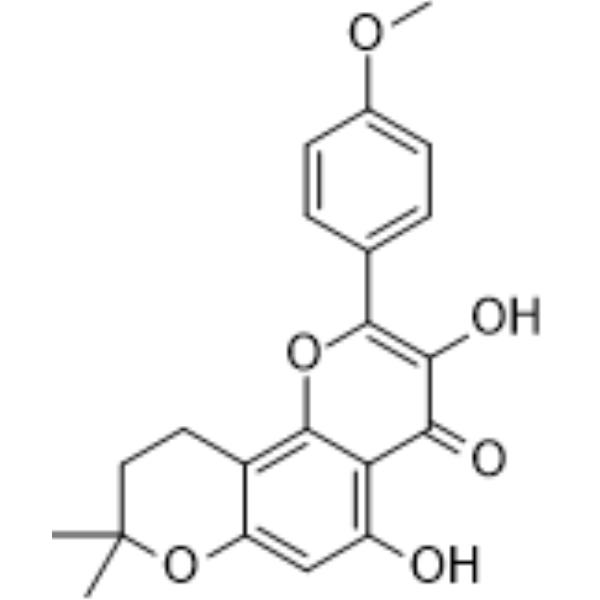
- HY-101365
-
|
|
5-HT Receptor
|
Neurological Disease
|
|
RS-102221 is a selective 5-HT2C receptor antagonist (Ki=10 nM). RS-102221 shows nearly 100-fold selectivity for the 5-HT2C receptor as compared to the 5-HT2A and 5-HT2B receptors. RS-102221 can promote the differentiation of new nerve cells. RS-102221 increases food-intake and weight-gain in rats .
|
-
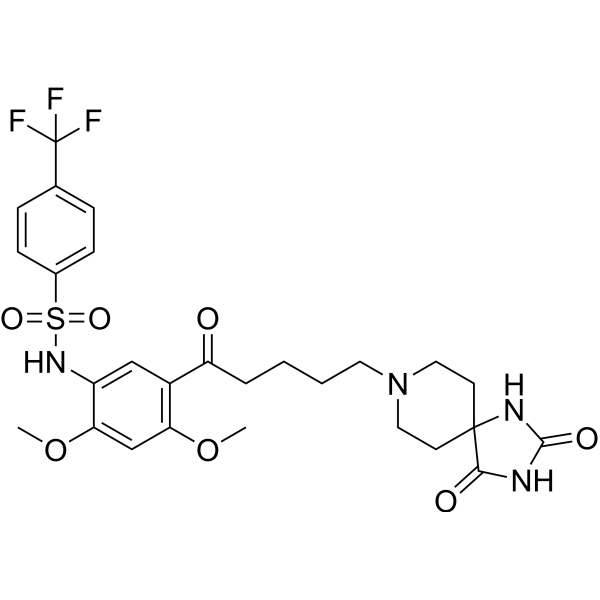
- HY-101365A
-
|
|
5-HT Receptor
|
Neurological Disease
|
|
RS-102221 hydrochloride is a selective 5-HT2C receptor antagonist (Ki=10 nM). RS-102221 hydrochloride shows nearly 100-fold selectivity for the 5-HT2C receptor as compared to the 5-HT2A and 5-HT2B receptors. RS-102221 hydrochloride can promote the differentiation of new nerve cells. RS-102221 hydrochloride increases food-intake and weight-gain in rats .
|
-
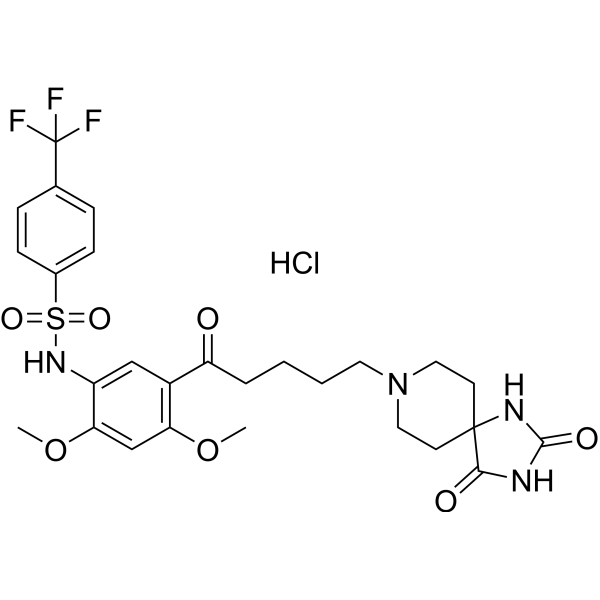
- HY-P5155
-
|
|
Potassium Channel
|
Neurological Disease
|
|
Stromatoxin 1 is an inhibitor of Potassium Channel, a peptide which can be isolated from tarantulas. Stromatoxin 1 selectively inhibits K(V)2.1, K(V)2.2, K(V)4.2, and K(V)2.1/9.3 channels. K(V)2.1 and K(V)2.2, but not K(V)4.2, channel subunits play a key role in opposing both myogenic and neurogenic urinary bladder smooth muscle (UBSM) contractions in rats .
|
-
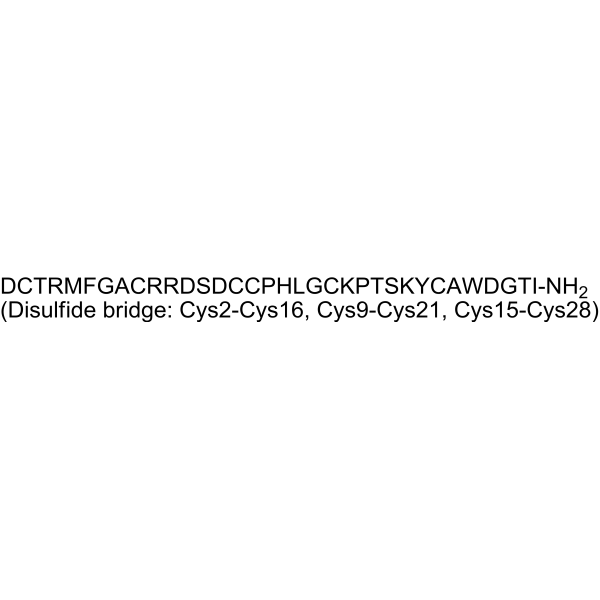
- HY-156124
-
|
|
Sigma Receptor
|
Cancer
|
|
Sigma-2 Radioligand 1 (compound 1) is a Sigma-2 selective ligand. Sigma-2 Radioligand 1 has good biodistribution in mice and good in vivo activity in rats. [18F] Modified Sigma-2 Radioligand 1 for visualization of tumors in micro-PET/CT imaging, exhibiting high tumor uptake and tumor-to-background ratio. Experiments show that Sigma-2 Radioligand 1 binds highly specifically in U87MG glioma xenografts .
|
-
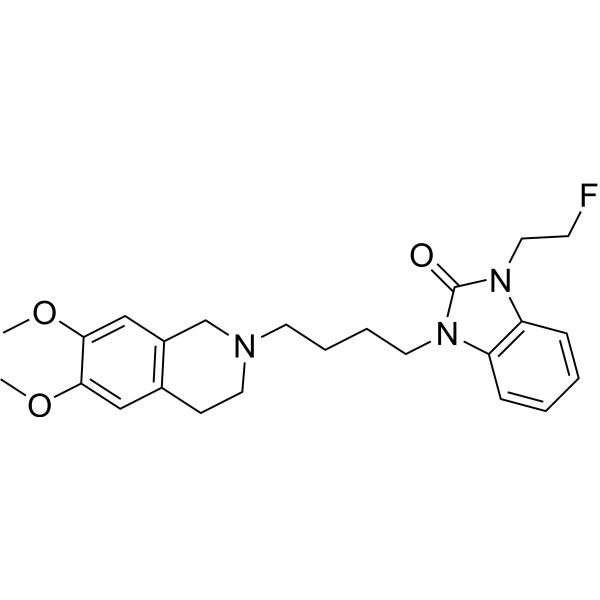
- HY-P3247
-
|
|
Insulin Receptor
|
Neurological Disease
Metabolic Disease
|
|
[D-Ala2]-GIP (human) is a GIP receptor agonist. [D-Ala2]-GIP (human) improves glucose tolerance. [D-Ala2]-GIP (human) shows neuroprotective activity in MPTP-induced Parkinson's disease model. [D-Ala2]-GIP (human) also improves cognitive function and hippocampal synaptic plasticity in obese diabetic rats. [D-Ala2]-GIP (human) can be used for research of type 2 diabetes, Parkinson's disease, etc
|
-
![[D-Ala2]-GIP (human)](//file.medchemexpress.com/product_pic/hy-p3247.gif)
- HY-19210
-
|
|
Endothelin Receptor
|
Cardiovascular Disease
|
|
SB-209670 is an extremely potent and highly specific non-peptide, subnanomolar endothelin (ET) receptor antagonist. SB 209670 selectively inhibits binding of 125I-labeled ET-1 to cloned human ET receptor subtypes ETA and ETB (Ki=0.2 and 18 nM, respectively). SB 209670 produces a dose-dependent reduction in blood pressure in hypertensive rats, protects from ischemia-induced neuronal degeneration in a gerbil stroke model, and attenuates neointima formation following rat carotid artery balloon angioplasty .
|
-
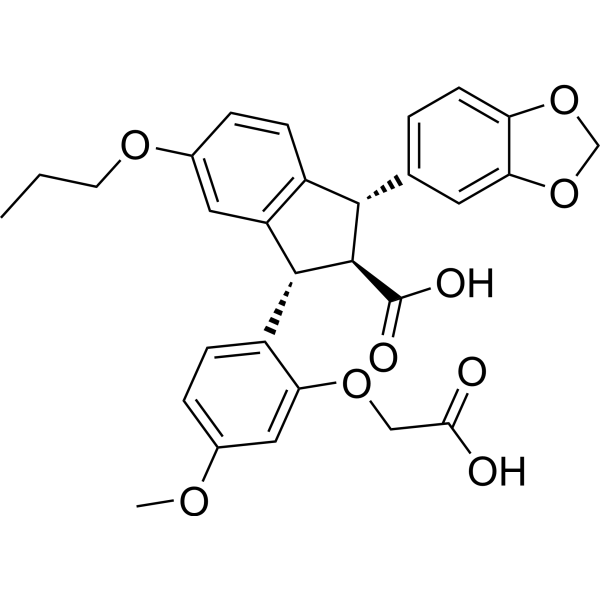
- HY-14152
-
|
|
5-HT Receptor
|
Cancer
|
|
Prucalopride hydrochloride is an orally active, selective and specific 5-HT4 receptor agonist (high affinity), with pKis of 8.6 and 8.1 for human 5-HT4a/4b receptors, respectively. Prucalopride hydrochloride improves intestinal motility by promoting regeneration of the intestinal nervous system in rats. Prucalopride hydrochloride also shows anticancer activity by blocking of the PI3K/AKT/mTor signaling pathway. Prucalopride hydrochloride can be used in studies of chronic constipation, pseudo-intestinal obstruction and cancer .
|
-
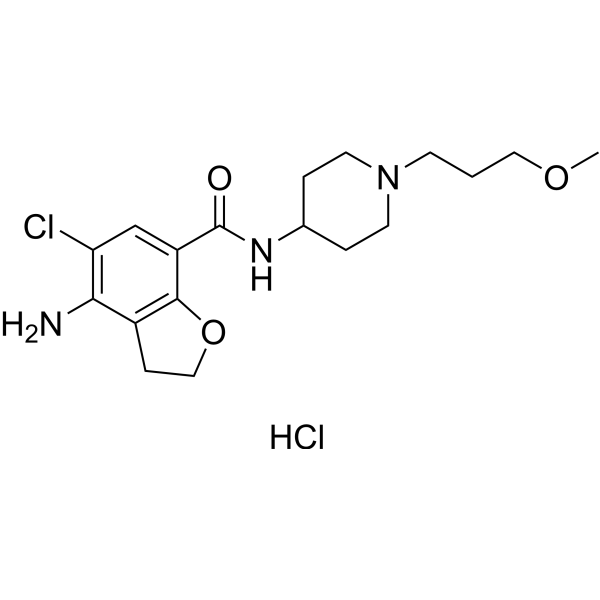
- HY-12694
-
|
R-108512
|
5-HT Receptor
Apoptosis
Autophagy
|
Metabolic Disease
Cancer
|
|
Prucalopride succinate is an orally active, selective and specific 5-HT 4 receptor agonist (high affinity), with pKis of 8.6 and 8.1 for human 5-HT4a/4b receptors, respectively. Prucalopride succinate improves intestinal motility by promoting regeneration of the intestinal nervous system in rats. Prucalopride succinate also shows anticancer activity by blocking of the PI3K/AKT/mTor signaling pathway. Prucalopride succinate can be used in studies of chronic constipation, pseudo-intestinal obstruction and cancer .
|
-

- HY-112499
-
|
Vitamin K2-7; Vitamin K2(35); Vitamin MK-7
|
Others
|
Cardiovascular Disease
|
|
Menaquinone-7 (Vitamin K2-7), belongs to a class of K2-vitamin homologs (orally active), is originally discovered as the anti-hemorrhagic factors. Menaquinone-7 inhibits osteoclast bone resorption in vitro and stimulates bone formation in femoral tissue of aged female rats. Menaquinone-7 has a well-researched potential in the prevention of aging-induced bone degeneration. Menaquinone-7 is also a pharmacological option for activating Gla matrix protein and intervening in the progression of calcific aortic stenosis (CAVS) .
|
-
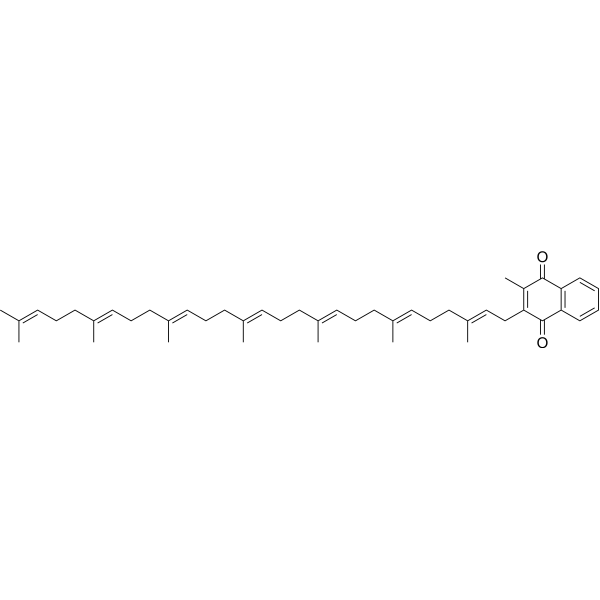
- HY-P1556
-
|
|
PKG
|
Cardiovascular Disease
|
|
Vasonatrin Peptide (VNP) is a chimera of atrial natriuretic peptide (ANP) and C-type natriuretic peptide (CNP). Vasonatrin peptide possesses the venodilating actions of CNP, the natriuretic actions of ANP, and unique arterial vasodilating actions not associated with either ANP or CNP. Vasonatrin Peptide protects the diabetic heart against ischemia-reperfusion injury by inhibiting ER stress via the cGMP-PKG signaling pathway .
|
-
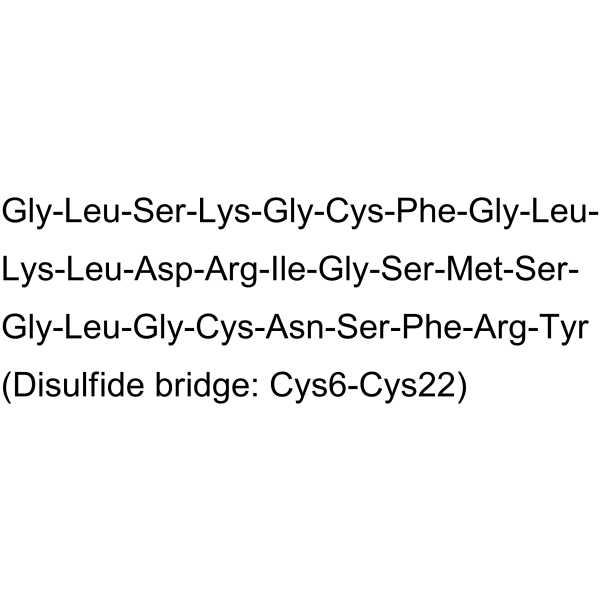
- HY-P1556A
-
|
|
PKG
|
Metabolic Disease
|
|
Vasonatrin Peptide (VNP) TFA is a chimera of atrial natriuretic peptide (ANP) and C-type natriuretic peptide (CNP). Vasonatrin peptide TFA possesses the venodilating actions of CNP, the natriuretic actions of ANP, and unique arterial vasodilating actions not associated with either ANP or CNP. Vasonatrin Peptide TFA protects the diabetic heart against ischemia-reperfusion injury by inhibiting ER stress via the cGMP-PKG signaling pathway .
|
-

- HY-115986
-
|
|
Monoamine Oxidase
|
Neurological Disease
|
|
MAO-B-IN-5 is a potent, selective and orally active MAO-B inhibitor with an IC50 of 0.204 µM. MAO-B-IN-5 has the potential for the research of Parkinson's disease (PD) .
|
-
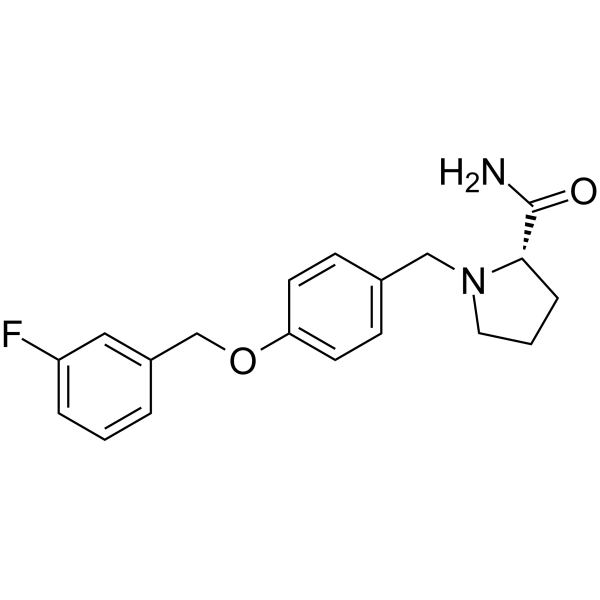
- HY-155406
-
|
|
Estrogen Receptor/ERR
Caspase
Bcl-2 Family
|
Cancer
|
|
Estrogen receptor modulator 10 (compound G-5b) is an Estrogen receptor (ER) antagonist (IC50=6.7 nM) and degrader (DC50=0.4 nM). Estrogen receptor modulator 10 can induce apoptosis. Estrogen receptor modulator 10 can block cells at the G1/G0 phase. Estrogen receptor modulator 10 can be used in cancer studies .
|
-
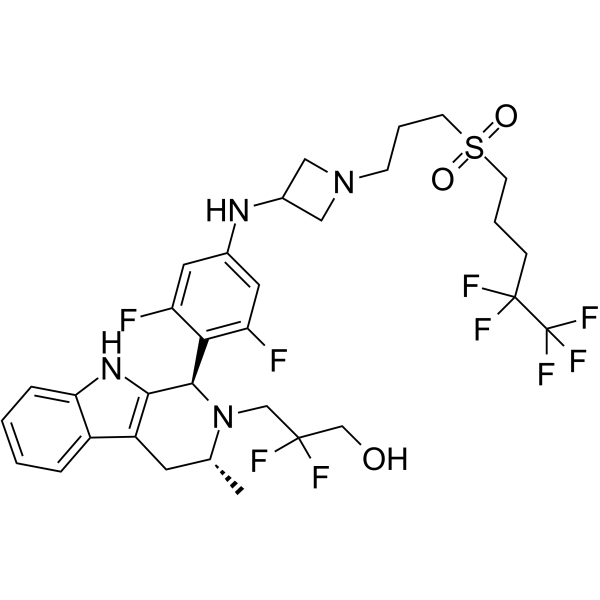
- HY-156017
-
|
|
5-HT Receptor
|
Cardiovascular Disease
Neurological Disease
|
|
5-HT6R antagonist 1 (Comopund 8) is a 5-HT6R antagonist (Ki: 5 nM). 5-HT6R antagonist 1 inhibits platelet aggregation. 5-HT6R antagonist 1 has excellent metabolic stability. 5-HT6R antagonist 1 reverses MK-801 (HY-15084B)-induced memory impairments in rats. 5-HT6R antagonist 1 can be used for Alzheimer's disease (AD) research .
|
-
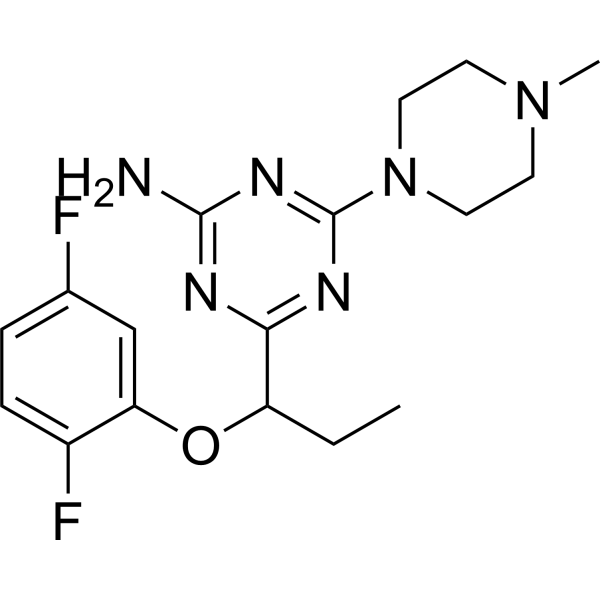
- HY-132225
-
|
|
5-HT Receptor
|
Inflammation/Immunology
|
|
SB 206553 is a 5-HT2C inverse agonist. SB 206553 can attenuate methamphetamine-seeking in rats. SB 206553 has activity for 5-HT2 receptor ligands in HEK-293 or CHO-K1 cells expressing human recombinant 5-HT2 receptors with pKi values of 5.6 nM (5-HT2A), 7.7 nM (5-HT2B) and 7.8 nM (5-HT2C), respectively. SB 206553 can be used for the research of psychostimulant abuse disorders .
|
-
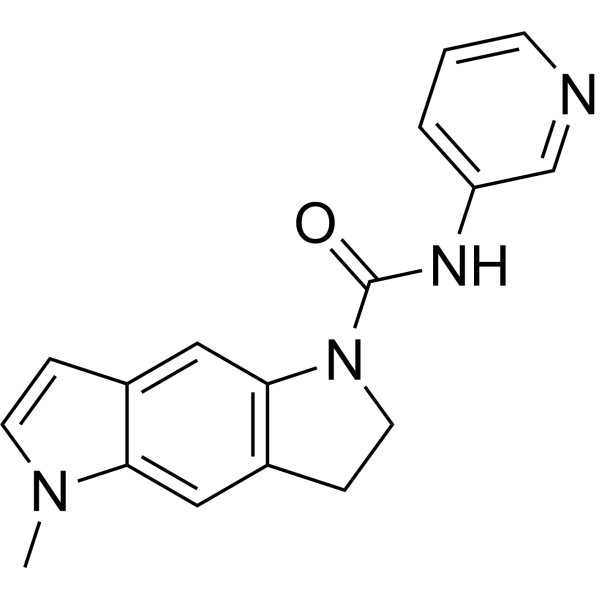
- HY-155330
-
|
|
5-HT Receptor
Monoamine Oxidase
|
Neurological Disease
|
|
PZ-1922 (Compound 16) is a BBB-penetrable 5-HT6R/5-HT3R antagonist (Ki: 17 nM, 0.45 nM for 5-HT6R/5-HT3R respectively). PZ-1922 reversibly inhibits MAO-B (pIC50: 8.93). PZ-1922 reverses Scopolamine (SCOP) (HY-N0296) induced memory deficits in the novel object recognition (NOR) test in rats. PZ-1922 prevents Aβ-induced memory decline in the T-maze test .
|
-
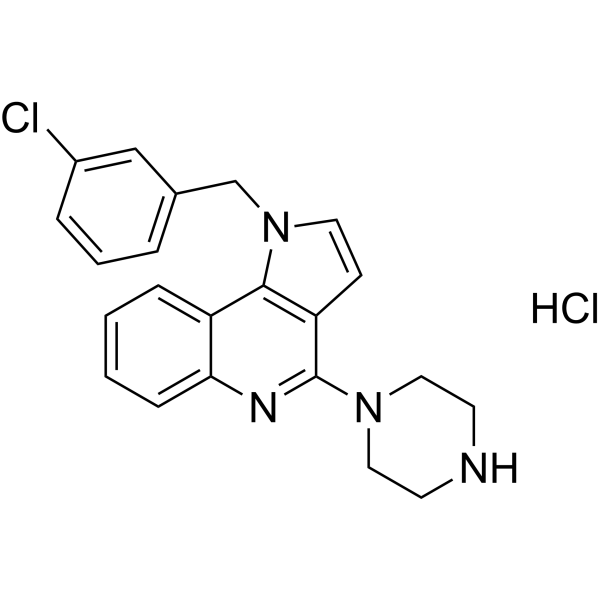
- HY-112499R
-
|
Vitamin K2-7(Standard); Vitamin K2(35)(Standard); Vitamin MK-7 (Standard)
|
Others
|
Cardiovascular Disease
|
|
Menaquinone-7 (Standard) is the analytical standard of Menaquinone-7. This product is intended for research and analytical applications. Menaquinone-7 (Vitamin K2-7), belongs to a class of K2-vitamin homologs (orally active), is originally discovered as the anti-hemorrhagic factors. Menaquinone-7 inhibits osteoclast bone resorption in vitro and stimulates bone formation in femoral tissue of aged female rats. Menaquinone-7 has a well-researched potential in the prevention of aging-induced bone degeneration. Menaquinone-7 is also a pharmacological option for activating Gla matrix protein and intervening in the progression of calcific aortic stenosis (CAVS) .
|
-
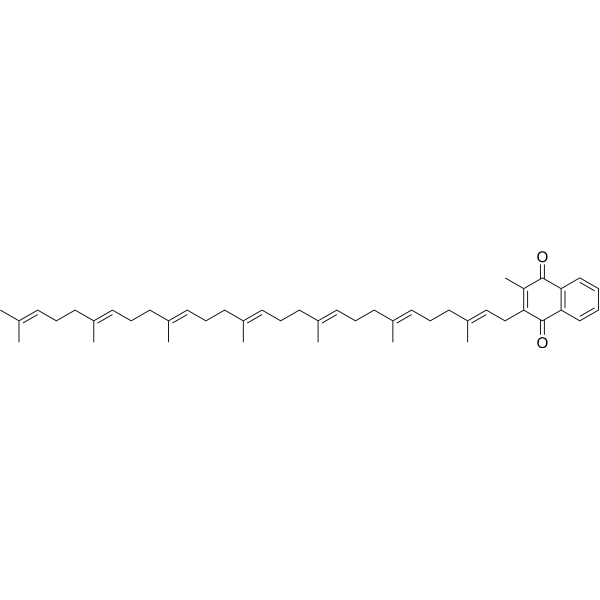
- HY-103216A
-
|
|
Adrenergic Receptor
|
Neurological Disease
|
|
RWJ-52353 hydrochloride is an orally potent, highly selective α2D adrenergic receptor agonist (Ki: 1.5 nM) with potential analgesic effects. RWJ-52353 hydrochloride demonstrated analgesic activity in abdominal tests in rats and mice, and improved agitation in mice in the hot plate test and tail flick test. RWJ-52353 hydrochloride also regulates the organic cation transporter (OCT) subtype, inhibiting rOCT1 and rOCT2 with IC50s of 100 μM and 20 μM respectively; it also activates rOCT3, affecting [3H]-1- in cells. Methyl-4-phenylpyridinium ([3H]MPP) transport .
|
-

- HY-144074
-
|
|
LRRK2
|
Neurological Disease
|
|
LRRK2-IN-4 is a potent, selective, CNS-penetran and orally active leucine-rich repeat kinase 2 (LRRK2) inhobitor with an IC50 of 2.6 nM. LRRK2-IN-4 has the potential for the research of Parkinson’s disease .
|
-

- HY-144658
-
|
|
Factor Xa
|
Cardiovascular Disease
|
|
FXIa-IN-8 is a potent and selective FXIa inhibitor with an IC50 of 14.2 nM. FXIa-IN-8 shows antithrombotic activity without increasing the bleeding risk and obvious toxicitysup>[1].
|
-
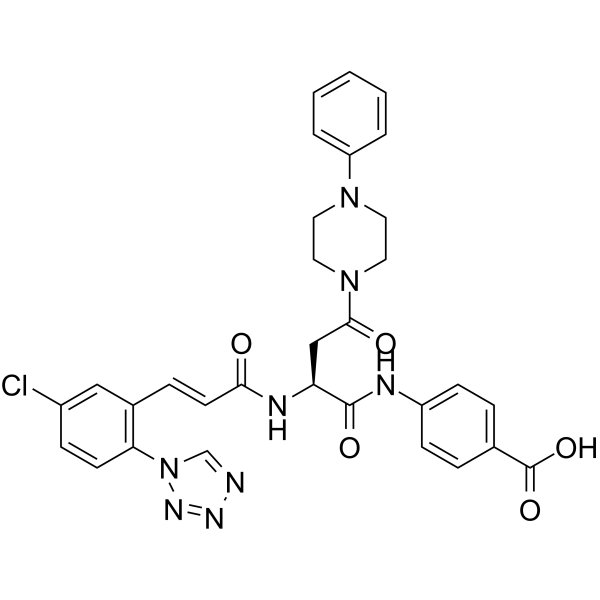
- HY-N2983
-
|
|
Tyrosinase
|
Others
|
|
Cajanin is a potent and orally active anti-melanogenic agent. Cajanin shows antiproliferative activity in MNT1 Cells. Cajanin efficiently decreases the melanin content. Cajanin down-regulates the mRNA and protein expression levels of MITF, tyrosinase, TRP-1 and Dct (TRP-2). Cajanin induces cell cycle arrest at G2/M and S phase. Cajanin stimulates osteoblast proliferation. Cajanin has the potential for the research of human hyperpigmented disorders and menopausal osteoporosis .
|
-

- HY-147376
-
-
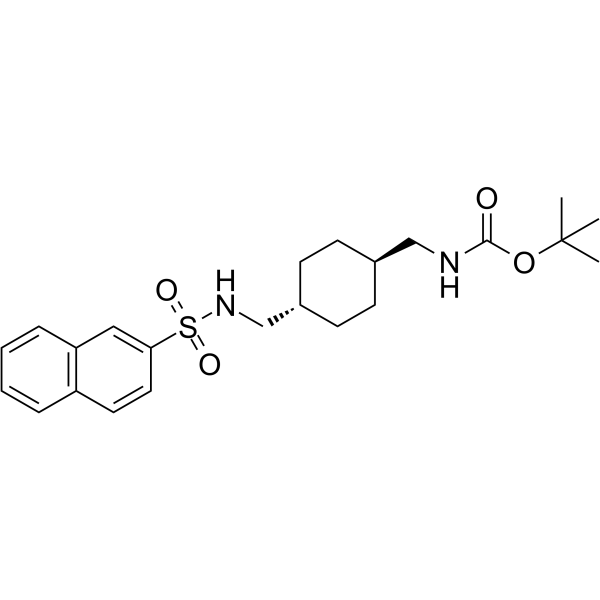
- HY-155330A
-
|
|
5-HT Receptor
Monoamine Oxidase
|
Neurological Disease
|
|
PZ-1922 free base is a BBB-penetrable 5-HT6R/5-HT3R antagonist (Ki: 17 nM, 0.45 nM for 5-HT6R/5-HT3R respectively). PZ-1922 free base reversibly inhibits MAO-B (pIC50: 8.93). PZ-1922 free base reverses Scopolamine (SCOP) (HY-N0296) induced memory deficits in the novel object recognition (NOR) test in rats. PZ-1922 free base prevents Aβ-induced memory decline in the T-maze test .
|
-
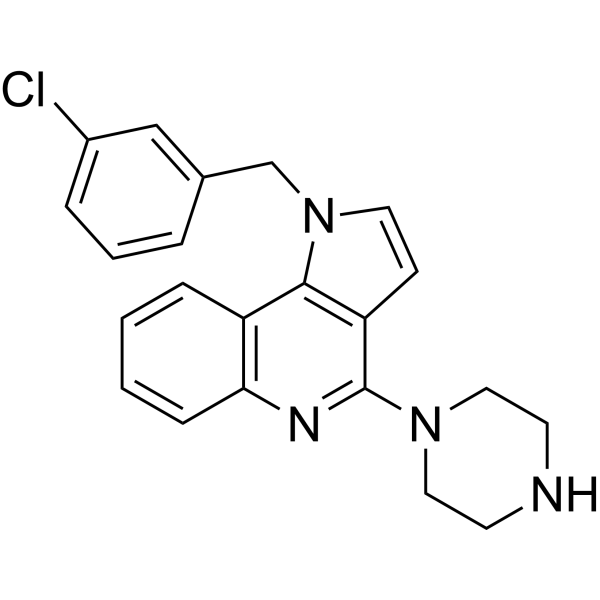
- HY-109968A
-
|
CEP-26401 hydrochloride
|
Histamine Receptor
|
Neurological Disease
|
|
Irdabisant (CEP-26401) hydrochloride is a selective, orally active and blood-brain barrier (BBB) penetrant histamine H3 receptor (H3R) inverse agonist/inverse agonist with Ki values of 7.2 nM and 2.0 nM for rat H3R and human H3R, respectively. Irdabisant hydrochloride has relatively low inhibitory activity against hERG current with an IC50 of 13.8 μM. Irdabisant hydrochloride has cognition-enhancing and wake-promoting activities in the rat social recognition model. Irdabisant hydrochloride can be used to research schizophrenia or cognitive impairment .
|
-
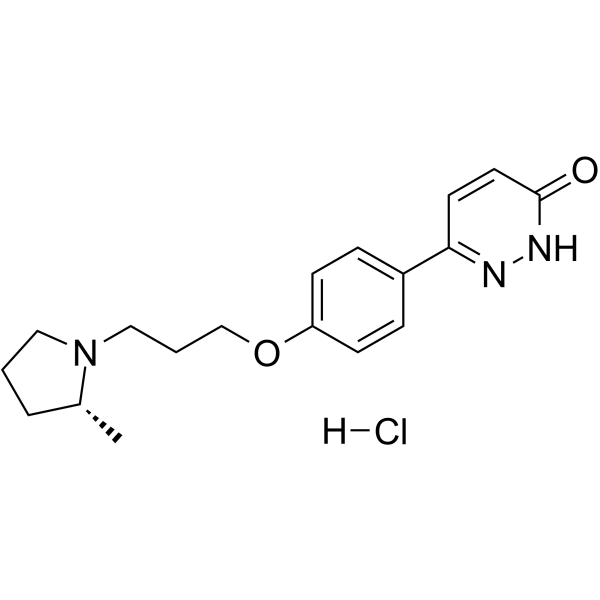
- HY-109968
-
|
CEP-26401
|
Histamine Receptor
|
Neurological Disease
|
|
Irdabisant (CEP-26401) is a selective, orally active and blood-brain barrier (BBB) penetrant histamine H3 receptor (H3R) inverse agonist/inverse agonist with Ki values of 7.2 nM and 2.0 nM for rat H3R and human H3R, respectively. Irdabisant has relatively low inhibitory activity against hERG current with an IC50 of 13.8 μM. Irdabisant has cognition-enhancing and wake-promoting activities in the rat social recognition model. Irdabisant can be used to research schizophrenia or cognitive impairment .
|
-
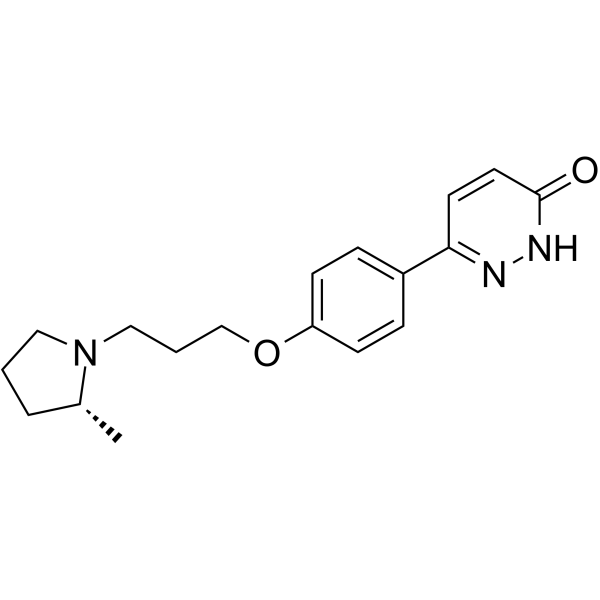
- HY-126049
-
|
(S)-(-)-Oxiracetam; (S)-ISF2522
|
Apoptosis
|
Neurological Disease
|
|
(S)-oxiracetam (S-ORC) is an inhibitor targeting apoptosis. S-ORC reduces brain infarct size and lessens neurological dysfunction in middle cerebral artery occlusion/reperfusion (MCAO/R) models. S-ORC prevents neuronal apoptosis via activating PI3K/Akt/GSK3β signaling pathway via α7 nAChR after ischemic stroke. S-ORC can prevent neuronal death after ischemic stroke .
|
-

- HY-A0093
-
|
KOE-1173 hydrochloride
|
Sodium Channel
|
Cardiovascular Disease
Neurological Disease
|
|
Mexiletine is an orally effective antiarrhythmic agent which has also been found to be effective for myotonia and neuropathic pain. Mexiletine exerts its efficacy through blocking sodium channels (IC50 : 75±8 μM for tonic block, 23.6±2.8 μM for use-dependent block), therefore can be used for cardiovascular and neurological research .
|
-

- HY-N6996
-
|
|
Autophagy
PI3K
mTOR
Akt
|
Inflammation/Immunology
Cancer
|
|
Methyl Eugenol is a bait that has oral activity against oriental fruit fly (Hendel).Methyl Eugenol has anti-cancer and anti-inflammatory activities. Methyl Eugenol can induce Autophagy in cells. Methyl Eugenol can be used in the study of intestinal ischemia/reperfusion injury .
|
-

- HY-B0328
-
-
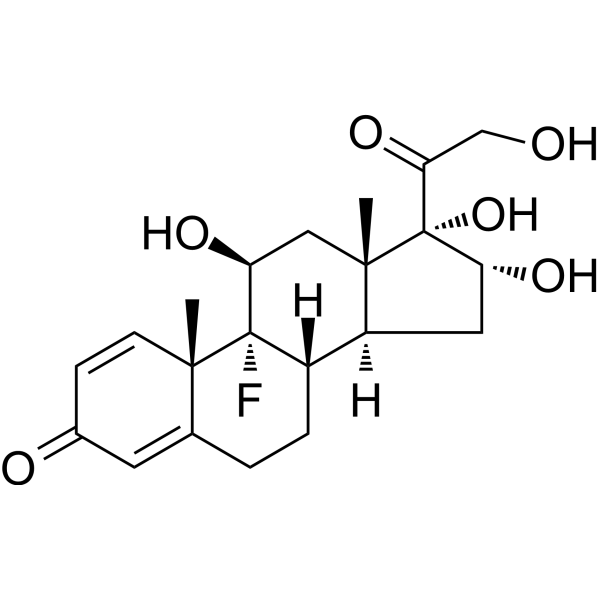
- HY-P3801
-
|
DiMe-C7
|
Neurokinin Receptor
|
Others
Neurological Disease
Metabolic Disease
|
|
[Glp5,(Me)Phe8,Sar9] Substance P (5-11) (DiMe-C7) is a Substance P (HY-P0201) analogue that has approximately the same effects as Substance P (HY-P0201) on neurokinin 1 receptor (NK1R) in rat brain, but with a much longer duration of action. [Glp5,(Me)Phe8,Sar9] Substance P (5-11) selectively activates dopamine metabolism in the mesencephalon and midbrain cortex of the rat brain. [Glp5,(Me)Phe8,Sar9] Substance P (5-11) also increases motor activity and induces recovery of addictive agent-seeking behavior in rats .
|
-
![[Glp5,(Me)Phe8,Sar9] Substance P (5-11)](//file.medchemexpress.com/product_pic/hy-p3801.gif)
- HY-W127391
-
|
(Rac)-1,2-Didodecanoylglycerol
|
Biochemical Assay Reagents
|
Others
|
|
1,2-Dilaurin is a diacylglycerol containing lauric acid at the sn-1 and sn-2 positions. It has been used as an internal standard for the quantification of diglycerides in rat desheathed sciatic nerves. [1] Monomolecular films containing 1,2-dilauroyl-rac-glycerol have been used as substrates to measure surface pressure and the effect of pancreatic procolipase and colipase on porcine pancreatic lipase activity. [2] References: [1]. Zhu, X. and Eichberg, J. 1,2-Diacylglycerol content and its arachidonyl-containing molecular species are reduced in the sciatic nerve of streptozotocin-induced diabetic rats. J. Neurochemistry. 55(3), 1087-1090 (1990).[2]. Wieloch, T., Borgstr m, B., Piéroni, G. et al. Porcine trypsinogen and its trypsin-activated form: lipid binding and lipase activation on monomolecular membranes. FEBS Express. 128(2), 217-220 (1981).
|
-
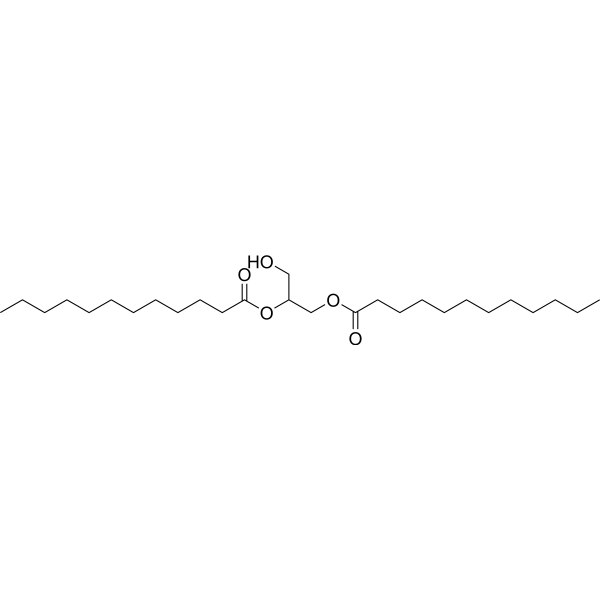
- HY-N0124
-
|
Collettiside III; CCRIS 4123
|
Autophagy
Apoptosis
|
Cancer
|
|
Dioscin (CCRIS 4123; Collettiside III) is a natural plant-derived steroidal saponin that has good anti-cancer activity against a variety of cancer cells. Dioscin causes DNA damage and induces apoptosis in HeLa and SiHa cells. Dioscin regulates ROS-mediated DNA damage and mitochondrial signaling pathways, exerting anticancer activity .
|
-

- HY-155489
-
|
|
Anaplastic lymphoma kinase (ALK)
Apoptosis
|
Cancer
|
|
DDO-2728 (compound 19) is a selective AlkB homologue 5 (ALKBH5) inhibitor with an IC50 of 2.97 μM. DDO-2728 increases the abundance of N 6 methyladenosine (m 6A) modifications, inducing cell apoptosis and cycle arrest. DDO-2728 suppresses tumor growth in the MV4−11 xenograft model with favorable safety profile, shows the potential of targeting ALKBH5 in cancer research .
|
-

- HY-N6792
-
|
T-2 Mycotoxin
|
Apoptosis
DNA/RNA Synthesis
|
Metabolic Disease
|
|
T-2 Toxin (T-2 Mycotoxin) is a toxic trichothecene mycotoxin produced by various Fusarium species in feedstuffs and cereal grains, LD50 values of T-2 Toxin in mice and rats are 5.2 and 1.5 mg/kg BW a,respectively . T-2 Toxin (T-2 Mycotoxin) can be transformed into a variety of metabolite, the typical metabolites of T-2 toxin in animals are HT-2 toxin and T-2-triol, which are hydrolysates . T-2 Toxin (T-2 Mycotoxin) is an inhibitor of protein synthesis resulting from binding peptidyltransferase, which is an integral part of the 60s ribosomal subunit. T-2 Toxin (T-2 Mycotoxin) inhibits the synthesis of DNA and RNA, interferes with the metabolism of membrane phospholipids, and increases the level of liver lipid peroxides . T-2 Toxin (T-2 Mycotoxin) induces apoptosis in the immune system, gastrointestinal tissues, and fetal tissues .
|
-

- HY-B1019
-
|
|
Dopamine Receptor
|
Neurological Disease
|
|
Sulpiride is an orally active dopamine D2/D3 receptor antagonist. Sulpiride is an atypical antipsychotic agent of the benzamide family. Sulpiride can be used in research into anxiety, depression and breast cancer .
|
-
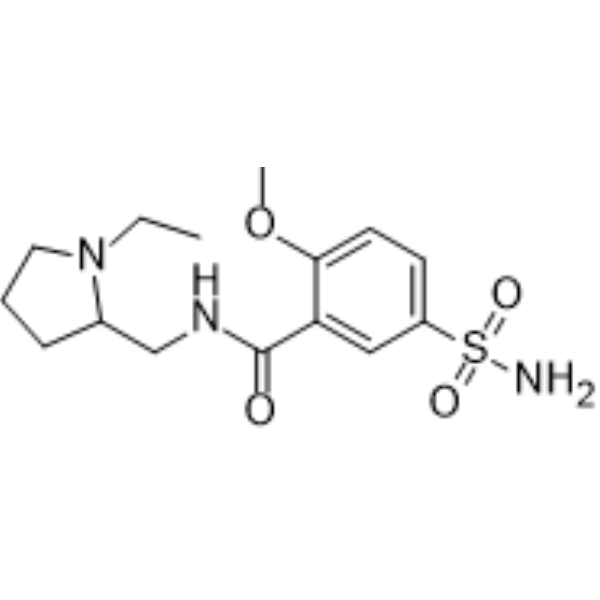
- HY-B0442C
-
|
|
Endogenous Metabolite
Phosphodiesterase (PDE)
|
Metabolic Disease
Inflammation/Immunology
Endocrinology
|
|
Vardenafil dihydrochloride is a selective and orally active inhibitor of phosphodiesterase-5 (PDE5), with an IC50 of 0.7 nM. Vardenafil dihydrochloride shows inhibitory towards PDE1, PDE6 with IC50s of 180 nM, and 11 nM respectively, while IC50s are >1000 nM for PDE3 and PDE4. Vardenafil dihydrochloride competitively inhibits cyclic guanosine monophosphate (cGMP) hydrolysis and thus increases cGMP levels. Vardenafil dihydrochloride can be used for the research of erectile dysfunction, hepatitis, diabetes - .
|
-

- HY-B0442
-
|
|
Phosphodiesterase (PDE)
Endogenous Metabolite
|
Metabolic Disease
Inflammation/Immunology
Endocrinology
|
|
Vardenafil is a selective and orally active inhibitor of phosphodiesterase-5 (PDE5), with an IC50 of 0.7 nM. Vardenafil shows inhibitory towards PDE1, PDE6 with IC50s of 180 nM, and 11 nM, while IC50s are >1000 nM for PDE3 and PDE4 . Vardenafil competitively inhibits cyclic guanosine monophosphate (cGMP) hydrolysis and thus increases cGMP levels . Vardenafil can be used for the research of erectile dysfunction, hepatitis, diabetes [1]-[6].
|
-

- HY-B0442A
-
|
|
Phosphodiesterase (PDE)
Endogenous Metabolite
|
Metabolic Disease
Inflammation/Immunology
Endocrinology
|
|
Vardenafil hydrochloride is a selective and orally active inhibitor of phosphodiesterase-5 (PDE5), with an IC50 of 0.7 nM. Vardenafil hydrochloride shows inhibitory towards PDE1, PDE6 with IC50s of 180 nM, and 11 nM, while IC50s are >1000 nM for PDE3 and PDE4 . Vardenafil hydrochloride competitively inhibits cyclic guanosine monophosphate (cGMP) hydrolysis and thus increases cGMP levels . Vardenafil hydrochloride can be used for the research of erectile dysfunction, hepatitis, diabetes [1]-[6].
|
-
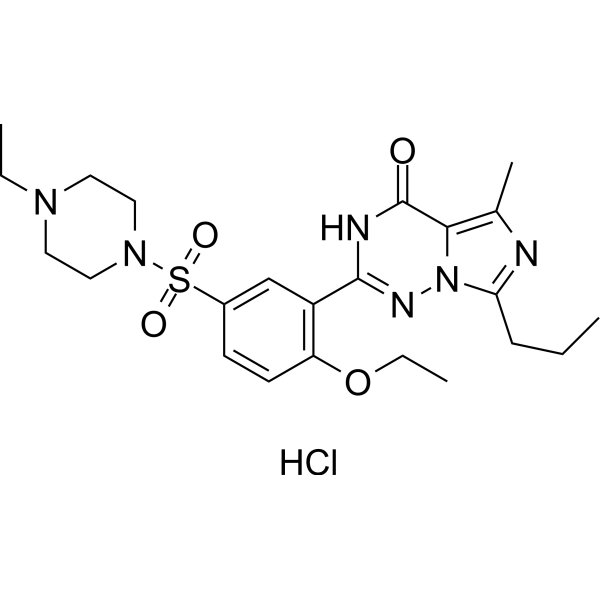
- HY-103247
-
|
|
Angiotensin Receptor
|
Cardiovascular Disease
|
|
EMD 66684 is an antagonist of Angiotensin II Type 1 (AT1) receptor. EMD 66684 shows potent binding affinities for the AT1 subtype Ang II receptor with an IC50 value of 0.7 nM. EMD 66684 also serves as an antiischemic cytoprotectant - .
|
-

- HY-Y0966
-
Glycine
4 Publications Verification
|
Endogenous Metabolite
iGluR
VEGFR
Small Interfering RNA (siRNA)
|
Neurological Disease
|
|
Glycine is an inhibitory neurotransmitter in the CNS and also acts as a co-agonist along with glutamate, facilitating an excitatory potential at the glutaminergic N-methyl-D-aspartic acid (NMDA) receptors. Glycine is orally active. Glycine can be used to study cell protection, cancer, neurological diseases, and angiogenesis .
|
-

- HY-B0592
-
|
RU44570
|
Angiotensin-converting Enzyme (ACE)
|
Cardiovascular Disease
|
|
Trandolapril (RU44570) is a nonsulfhydryl proagent that is hydrolysed to the active diacid Trandolaprilat. Trandolapril is an orally administered angiotensin converting enzyme (ACE) inhibitor that has been used in the treatment of hypertension and congestive heart failure (CHF), and after myocardial infarction (MI) .
|
-
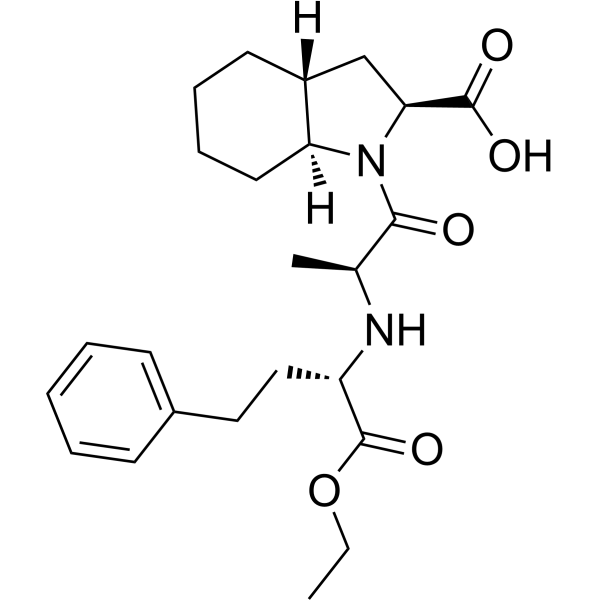
- HY-B0592A
-
|
RU44570 hydrochloride
|
Angiotensin-converting Enzyme (ACE)
|
Cardiovascular Disease
|
|
Trandolapril (RU44570) hydrochloride is a nonsulfhydryl proagent that is hydrolysed to the active diacid Trandolapril hydrochlorideat. Trandolapril hydrochloride is an orally active angiotensin converting enzyme (ACE) inhibitor that has been used in the treatment of hypertension and congestive heart failure (CHF), and after myocardial infarction (MI) .
|
-
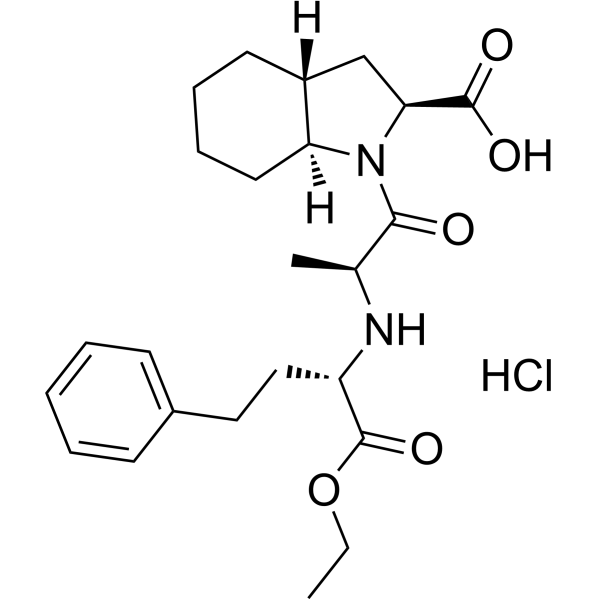
| Cat. No. |
Product Name |
Type |
-
- HY-D0256
-
|
Chlorazol Black E; Ferristatin II disodium; C.I. 30235
|
Dyes
|
|
Direct Black 38 (Chlorazol Black E) is an azo dye. Direct Black 38 induces unscheduled DNA synthesis in liver and micronucleus in bone marrow of rats in vivo .
|
| Cat. No. |
Product Name |
Type |
-
- HY-W127391
-
|
(Rac)-1,2-Didodecanoylglycerol
|
Biochemical Assay Reagents
|
|
1,2-Dilaurin is a diacylglycerol containing lauric acid at the sn-1 and sn-2 positions. It has been used as an internal standard for the quantification of diglycerides in rat desheathed sciatic nerves. [1] Monomolecular films containing 1,2-dilauroyl-rac-glycerol have been used as substrates to measure surface pressure and the effect of pancreatic procolipase and colipase on porcine pancreatic lipase activity. [2] References: [1]. Zhu, X. and Eichberg, J. 1,2-Diacylglycerol content and its arachidonyl-containing molecular species are reduced in the sciatic nerve of streptozotocin-induced diabetic rats. J. Neurochemistry. 55(3), 1087-1090 (1990).[2]. Wieloch, T., Borgstr m, B., Piéroni, G. et al. Porcine trypsinogen and its trypsin-activated form: lipid binding and lipase activation on monomolecular membranes. FEBS Express. 128(2), 217-220 (1981).
|
-
- HY-D1005A6
-
|
PEG-PPG-PEG, 2200 (Averag)
|
Co-solvents
|
|
Poloxamer 124 L44 is block polymer of polyoxyethylene and polyoxypropylene with average molecular mass of 2200. Poloxamer 124 L44 reveals toxicity with an oral LD50 of 5 g/kg in albino rats. Poloxamer 124 L44 causes ocular irritation. Poloxamer 124 L44 forms thermoreversible hydrogel, that is utilized in food additives, drug delivery carriers in cosmetics, pharmaceutical ingredients and tissue engineering .
|
-
- HY-D1005A16
-
|
PEG-PPG-PEG, 4600 (Averag)
|
Co-solvents
|
|
Poloxamer 235 P85 is block polymer of polyoxyethylene and polyoxypropylene with average molecular mass of 4600. Poloxamer 235 P85 exhibits acute and subchronic toxicity in albino rats with an oral LD50 of >34.6 g/kg. Poloxamer 235 P85 induces ocular irritation in rabbits .
|
-
- HY-D1005A22
-
|
PEG-PPG-PEG, 14600 (Averag)
|
Co-solvents
|
|
Poloxamer 338 F108 is block polymer of polyoxyethylene and polyoxypropylene with average molecular mass of 14600. Poloxamer 338 F108 reduces the aggregation of red blood cells, inhibits proliferation of human lymphocyte cell IIBR1. Poloxamer 338 F108 exhibits short-term and subchronic toxicity in rats .
|
| Cat. No. |
Product Name |
Target |
Research Area |
-
- HY-P3662
-
|
|
Tyrosinase
|
Cancer
|
|
Ac-[Nle4,D-Phe7]-α-MSH (4-10)-NH2 is a melanotropin, a melanocyte-stimulating hormone. Ac-[Nle4,D-Phe7]-α-MSH (4-10)-NH2 stimulates tyrosinase and exhibits thermoregulatory effect in rats model .
|
-
- HY-P1555
-
|
Adrenocorticotropic Hormone (1-13)
|
Peptides
|
Inflammation/Immunology
|
|
ACTH (1-13) is a 13-aa peptide, with cytoprotective effects in the model of ethanol induced gastric lesions in rats.
|
-
- HY-P5130
-
|
|
Peptides
|
Cardiovascular Disease
|
|
Big endothelin-1 (rat 1-39) is a 39-residues peptide. Big endothelin-1 (rat 1-39) induces diuretic and natriuretic response in conscious Sprague-Dawley rats. Big endothelin-1 (rat 1-39) raises blood pressure in mice .
|
-
- HY-P4296
-
|
|
Amino Acid Derivatives
|
Others
|
|
H-Gly-Sar-Sar-OH is an orally active tripeptide. H-Gly-Sar-Sar-OH is transported through PepT1 within Caco-2 cells. H-Gly Sar Sar OH has potential applications in material transportation .
|
-
- HY-P4708
-
|
|
Peptides
|
Neurological Disease
|
|
Excitin 1 is an orally active and CNS-penetrated peptide, alters behavior and brain monoamine and amino acid concentrations in rats .
|
-
- HY-P1421A
-
|
|
Peptides
|
|
|
Obestatin(human) TFA is an endogenous peptide derived from the same prepropeptide as ghrelin. Obestatin(human) suppresses food intake and reduce body weight-gain in rats.
|
-
- HY-W141774
-
|
S-Carboxyethylcysteine
|
Peptides
|
Metabolic Disease
|
|
S-(2-Carboxyethyl)-L-cysteine (S-Carboxyethylcysteine) is a non-protein (modified) sulfur amino acid. S-(2-Carboxyethyl)-L-cysteine is present in Acacia seed. S-(2-Carboxyethyl)-L-cysteine can affect the seed’s protein use in rats. S-(2-Carboxyethyl)-L-cysteine suppresses the methionine-induced growth rate, and has a negative effect on the plasma amino acid levels in rats .
|
-
- HY-P1742
-
|
|
Opioid Receptor
|
Metabolic Disease
|
|
Gluten Exorphin B5 is an exogenous opioid peptides derived from wheat gluten, acts on opioid receptor, increases postprandial plasma insulin level in rats .
|
-
- HY-110183
-
|
|
Peptides
|
Cardiovascular Disease
|
|
Angiotensin A is a renin–angiotensin system (RAS) peptide that causes a vasoconstrictive effect dependent on AT1 receptors. Angiotensin A elicits pressor and renal vasoconstrictor responses in normotensive and hypertensive rats .
|
-
- HY-P4201
-
|
|
Vasopressin Receptor
|
Cardiovascular Disease
|
|
JKC 301 is a selective Endothelin A receptor antagonist. JKC 301 attenuates the pressor effects of nicotine in rats. JKC 301 can be used to study cardiovascular disease caused by smoking .
|
-
- HY-P1236
-
|
Atrial natriuretic factor (1-28) (rat)
|
Endothelin Receptor
|
Cardiovascular Disease
Endocrinology
|
|
Atrial Natriuretic Peptide (ANP) (1-28), rat is a major circulating form of ANP in rats, potently inhibits Angiotensin II (Ang II)-stimulated endothelin-1 secretion in a concentration-dependent manner.
|
-
- HY-P2497
-
|
|
GCGR
|
Neurological Disease
|
|
Exendin (5-39) is a potent glucagon-like peptide 1 (GLP-1) receptor antagonist. Exendin (5-39) improves memory impairment in β-amyloid protein-treated rats .
|
-
- HY-P3819
-
|
DSIP-P
|
Peptides
|
Neurological Disease
|
|
Delta (Phospho) Sleep Inducing Peptide (DSIP-P) is a long-lasting sleep-promoting peptide. Delta (Phospho) Sleep Inducing Peptide induces changes in the circadian locomotor behavior in rats .
|
-
- HY-P1236A
-
|
Atrial natriuretic factor (1-28) (rat) TFA
|
Endothelin Receptor
|
Cardiovascular Disease
Endocrinology
|
|
Atrial Natriuretic Peptide (ANP) (1-28), rat (TFA) is a major circulating form of ANP in rats, potently inhibits Angiotensin II (Ang II)-stimulated endothelin-1 secretion in a concentration-dependent manner.
|
-
- HY-P1193
-
|
|
Peptides
|
Neurological Disease
|
|
GR 82334 is a potent and specific reversible tachykinin NK1 receptor antagonist . GR 82334 inhibits substance P-induced sensitization by blocking SP NK1 receptors in naked mole-rats .
|
-
- HY-P4405
-
|
|
Peptides
|
Endocrinology
|
|
(D-Ala2)-GRF (1-29) amide (human) is a superagonist of GRF, exhibiting extremely high GH-releasing activity about 50 times that of GRF (1-29) in both pigs and rats .
|
-
- HY-W019878
-
|
β-Lipotropin 61-91
|
Peptides
|
Cardiovascular Disease
Neurological Disease
|
|
β-Endorphin, rat (β-Lipotropin 61-91), a neuropeptide, is involved in cardiovascular regulation. β-Endorphin, rat induces marked, prolonged muscular rigidity and immobility similar to a catatonic state in rats .
|
-
- HY-12523
-
|
|
Peptides
|
Others
|
|
Peptide M is a synthetic amino acid (18 amino acids in length which correspond to the amino acid positions 303-322 of bovine S-antigen: DTNLASSTIIKEGIDKTV), is capable of inducing experimental autoimmune uveitis in monkeys and Hartley guinea pigs as well as Lewis rats .
|
-
- HY-P1338
-
|
|
Opioid Receptor
|
Neurological Disease
|
|
PL-017 is a potent and selective μ opioid receptor agonist with an IC50 of 5.5 nM for 125I-FK 33,824 binding to μ site. PL-017 produces long-lasting, reversible analgesia in rats .
|
-
- HY-P1338A
-
|
|
Opioid Receptor
|
Neurological Disease
|
|
PL-017 TFA is a potent and selective μ opioid receptor agonist with an IC50 of 5.5 nM for 125I-FK 33,824 binding to μ site. PL-017 TFA produces long-lasting, reversible analgesia in rats .
|
-
- HY-P10148
-
|
Ac-[Leu28,31]-NPY (24-36)
|
Neuropeptide Y Receptor
|
Neurological Disease
|
|
N-Acetyl [Leu28, Leu31] neuropeptide Y (24–36) is a selective agonist of neuropeptide Y Y2 receptor. N-Acetyl [Leu28, Leu31] neuropeptide Y (24–36) attenuates cardiac vagal action in anaesthetised rats .
|
-
- HY-P4689
-
|
|
Peptides
|
Metabolic Disease
|
|
Prolactin-Releasing Peptide (1-31) (rat) is a UHR-1/GRP10 receptor ligand. Prolactin-Releasing Peptide (1-31) (rat) reduces fasting-induced food intake, increases plasma levels of LH, FSH, and testosterone in rats .
|
-
- HY-P1025
-
-
- HY-118534
-
|
BRN-2209058
|
Peptides
|
Endocrinology
|
|
Cyclobutyrol is a potent choleretic agent. Cyclobutyrol also inhibits biliary lipid secretion. Cyclobutyrol induces choleretic is unrelated to bile acids. Cyclobutyrol and bile acids do not compete for the hepatobiliar transport mechanisms[1]
|
-
- HY-P3064
-
|
Leiurotoxin I
|
Potassium Channel
|
Neurological Disease
|
|
Scyllatoxin (Leiurotoxin I) is a peptide toxin, it can be isolated from the venom of the scorpion (Leiurus quinquestriatus hebraeus). Scyllatoxin is a blocker of small-conductance KCa (SK) channel. Scyllatoxin enhances both norepinephrine (NE) and epinephrine (Epi) release in vivo .
|
-
- HY-P1025A
-
-
- HY-P2046
-
|
|
Opioid Receptor
|
Neurological Disease
|
|
β-Endorphin (rat) is an endogenous opioid neuropeptide and peptide hormone. β-Endorphin (rat) has analgesic activity and also contributes to food intake in satiated rats. β-Endorphin (rat) can be used in the research of neurological diseases such as analgesia and drug addiction .
|
-
- HY-P3429
-
|
|
PKC
|
Cardiovascular Disease
|
|
SAMβA is conjugated to the cell permeable peptide TAT47-57. SAMβA, a rationally designed selective antagonist of Mfn1-βIIPKC association. SAMβA is a selective inhibitor of mitofusin 1-βIIPKC association improves heart failure outcome in rats .
|
-
- HY-P10039
-
|
|
Amyloid-β
|
Neurological Disease
|
|
β-Amyloid (1-16) rat is a β-amyloid peptide (Abeta), a metal-binding domain fragment of amyloid. Three amino acid substitutions in β-Amyloid (1-16) rat that differ from humans render rats and mice less susceptible to AD-like neurodegeneration .
|
-
- HY-P2298
-
|
|
Peptides
|
Neurological Disease
|
|
TAT-P4-(DATC5)2 is a high-affinity peptide inhibitor of the PICK1 (protein interacting with C kinase-1) PDZ domain, with a Ki of 1.7 nM. TAT-P4-(DATC5)2 can inhibit addiction in rats .
|
-
- HY-P2479
-
|
|
Peptides
|
Inflammation/Immunology
|
|
Peripheral Myelin Protein P2 (53-78), bovine is derived from bovine peripheral myelin P2 protein amino acid residues 53-78. Peripheral Myelin Protein P2 (53-78), bovine is a T cell epitope for the induction of experimental autoimmune neuritis (EAN) in Lewis rats .
|
-
- HY-P2298A
-
|
|
Peptides
|
Neurological Disease
|
|
TAT-P4-(DATC5)2 TFA is a high-affinity peptide inhibitor of the PICK1 (protein interacting with C kinase-1) PDZ domain, with a Ki of 1.7 nM. TAT-P4-(DATC5)2 TFA can inhibit addiction in rats .
|
-
- HY-P1216A
-
|
|
Melanocortin Receptor
|
Neurological Disease
|
|
HS014 TFA is a potent and selective melanocortin-4 (MC4) receptor antagonist, with Kis of 3.16, 108, 54.4 and 694 nM for human MC4, MC1, MC3 and MC5 receptors respectively. HS014 TFA increases food intake in free-feeding rats .
|
-
- HY-P3429A
-
|
|
PKC
|
Cardiovascular Disease
|
|
SAMβA TFA is conjugated to the cell permeable peptide TAT47-57. SAMβA TFA, a rationally designed selective antagonist of Mfn1-βIIPKC association. SAMβA TFA is a selective inhibitor of mitofusin 1-βIIPKC association improves heart failure outcome in rats .
|
-
- HY-P5495
-
|
|
Peptides
|
Others
|
|
Uroguanylin-15 (Rat) is a biological active peptide. (Uroguanylin is a natriuretic peptide, a hormone that regulates sodium excretion by the kidney when excess NaCl is consumed. Uroguanylin and guanylin are related peptides that activate common guanylate cyclase signaling molecules in the intestine and kidney. Uroguanylin was isolated from urine and duodenum but was not detected in extracts from the colon of rats.)
|
-
- HY-P10046
-
|
|
Vasopressin Receptor
|
Metabolic Disease
|
|
[Deamino-Pen1,Val4,D-Arg8]-vasopressin (AVP-A) is an arginine-vasopressin (AVP) antagonist. AVP-A can significantly lower plasma aldosterone concentration in rats. AVP-A can be used for the research of the growth and steroidogenic capacity of rat adrenal zona glomerulosa .
|
-
- HY-P1520
-
|
|
GnRH Receptor
|
Neurological Disease
|
|
Prolactin Releasing Peptide (1-31), human is a high affinity GPR10 ligand that cause the release of the prolactin. Prolactin Releasing Peptide (1-31) binds to GPR10 for human and rats with Ki values of 1.03 nM and 0.33 nM, respectively. Prolactin Releasing Peptide (1-31) can be used for the research of the hypothalamo-pituitary axis .
|
-
- HY-P1428A
-
|
|
Neuropeptide Y Receptor
|
|
|
RFRP-1(human) TFA is a potent endogenous NPFF receptor agonist (EC50 values are 0.0011 and 29 nM for NPFF2 and NPFF1, respectively). Attenuates contractile function of isolated rat and rabbit cardiac myocytes. Reduces heart rate, stroke volume, ejection fraction and cardiac output, and increases plasma prolactin levels in rats.
|
-
- HY-P1520A
-
|
|
GnRH Receptor
|
Neurological Disease
|
|
Prolactin Releasing Peptide (1-31), human (acetate) is a high affinity GPR10 ligand that causes the release of the prolactin. Prolactin Releasing Peptide (1-31) binds to GPR10 for human and rats with Ki values of 1.03 nM and 0.33 nM, respectively. Prolactin Releasing Peptide (1-31) can be used for the research of the hypothalamo-pituitary axis .
|
-
- HY-P3206
-
|
Thymulin; Thymic factor
|
Peptides
|
Inflammation/Immunology
|
|
Serum thymic factor (Thymulin) is a zinc-dependent immunomodulatory peptide. Serum thymic factor induces hyperalgesia. Serum thymic factor protects rats from Cephaloridine (HY-B2072)-induced nephrotoxicity by inhibiting ERK activation. Serum thymic factor has anti-diabetic, analgesic and anti-inflammatory effects .
|
-
- HY-P3676
-
|
|
Neuropeptide Y Receptor
|
Neurological Disease
|
|
Neuropeptide Y (3-36) (porcine) is an agonist of neuropeptide Y (NPY) receptor subtype Y2, and stimulates feeding in rats. Neuropeptide Y (3-36) (porcine) is a highly Y2 selective ligand compared with nselective Y1/Y2 receptor ligand, Neuropeptide Y 1-36 .
|
-
- HY-P1131A
-
|
|
Neuropeptide Y Receptor
|
Cardiovascular Disease
|
|
M617 TFA is a selective galanin receptor 1 (GAL1) agonist, with Kis of 0.23 and 5.71 nM for GAL1 and GAL2, respectively. M617 TFA, acting through its central GAL1, can promote GLUT4 expression and enhance GLUT4 content in the cardiac muscle of type 2 diabetic rats .
|
-
- HY-P1216
-
|
|
Melanocortin Receptor
|
Neurological Disease
|
|
HS014 is a potent and selective melanocortin-4 (MC4) receptor antagonist, with Kis of 3.16, 108, 54.4 and 694 nM for human MC4, MC1, MC3 and MC5 receptors, respectively. HS014 modulates the behavioral effects of morphine in mice. HS014 increases food intake in free-feeding rats .
|
-
- HY-111615A
-
|
|
Somatostatin Receptor
|
Neurological Disease
Inflammation/Immunology
|
|
J-2156 TFA is a high potent, selective somatostatin receptor type 4 (SST4 receptor) agonist with IC50s of 0.05 nM and 0.07 nM for human and rat SST4 receptors, respectively. J-2156 TFA has anti-inflammatory activity and it is used for the relief of mechanical allodynia and mechanical hyperalgesia in the ipsilateral hindpaws in rats .
|
-
- HY-P1368
-
|
Cyclo(31-34)[DPhe12,Nle21,38,Glu31,Lys34]Ac-hCRF(4-41)
|
CRFR
|
Endocrinology
|
|
Stressin I (Cyclo(31-34)[DPhe12,Nle21,38,Glu31,Lys34]Ac-hCRF(4-41)) is a potent CRF1 receptor-selective agonist with a Ki of 1.7 nM. Stressin I induces increases in adrenocorticotropic hormone (ACTH) levels in rats .
|
-
- HY-P3567
-
|
|
Melanocortin Receptor
|
Neurological Disease
|
|
(p-Iodo-Phe7)-ACTH (4-10) is a adrenocorticotrophic hormone (ACTH) derivative, which is produced and secreted by the anterior pituitary gland. (p-Iodo-Phe7)-ACTH (4-10) serves as a melanocortin (MC) receptor antagonist and inhibits α-melanocyte-stimulating hormone (α-MSH)-induced excessive grooming behavior in rats .
|
-
- HY-W152604
-
|
Cyclo(leu-gly)
|
Dopamine Receptor
|
Neurological Disease
|
|
Cyclo(glycyl-L-leucyl) (Cyclo(leu-gly)), a neuropeptide, down-regulates dopamine (DA) receptors and attenuates dopaminergic supersensitivity. Cyclo(glycyl-L-leucyl) inhibits the development of Morphine induced pain relief as well as dopamine receptor supersensitivity in rats. Cyclo(glycyl-L-leucyl) has the potential for the prevention of tardive and/or L-DOPA (HY-N0304)-induced dyskinesias .
|
-
- HY-P1368A
-
|
Cyclo(31-34)[DPhe12,Nle21,38,Glu31,Lys34]Ac-hCRF(4-41) TFA
|
CRFR
|
Endocrinology
|
|
Stressin I (Cyclo(31-34)[DPhe12,Nle21,38,Glu31,Lys34]Ac-hCRF(4-41)) TFA is a potent CRF1 receptor selective agonist, Ki is 1.7 nM. Stressin I induces an increase in adrenocorticotropic hormone (ACTH) levels in rats .
|
-
- HY-P1322
-
|
|
Neuropeptide Y Receptor
|
Neurological Disease
|
|
[D-Trp34]-Neuropeptide Y is a potent and selective neuropeptide Y (NPY) Y5 receptor agonist. [D-Trp34]-Neuropeptide Y is a significantly less potent agonist at the NPY Y1, Y2, Y4, and y6 receptors. [D-Trp34]-Neuropeptide Y markedly increases food intake in rats .
|
-
- HY-P5490
-
|
NPQ 53-70
|
Peptides
|
Others
|
|
Spexin-2 (53-70), human,mouse,rat (NPQ 53-70) is a biological active peptide. (This is Spexin-2 (53-70), non-amidated version of the novel peptide hormone that is derived from prohormone proNPQ and is conserved amongst mammalian species. It is a central modulator of cardiovascular and renal function. Spexin-2, when administered to rats, decreases heart rate and increases urine flow rate)
|
- HY-P1322A
-
|
|
Neuropeptide Y Receptor
|
Neurological Disease
|
|
[D-Trp34]-Neuropeptide Y TFA is a potent and selective neuropeptide Y (NPY) Y5 receptor agonist. [D-Trp34]-Neuropeptide Y TFA is a significantly less potent agonist at the NPY Y1, Y2, Y4, and y6 receptors. [D-Trp34]-Neuropeptide Y TFA markedly increases food intake in rats .
|
- HY-P3803
-
|
|
Peptides
|
Neurological Disease
|
|
[D-Pro4,D-Trp7,9] Substance P (4-11) is a potent antagonist of Substance P (HY-P0201). [D-Pro4,D-Trp7,9] Substance P (4-11) decreases plasma aldosterone (ALDO) concentration .
|
- HY-106224
-
|
Hypocretin-1 (human, rat, mouse)
|
Orexin Receptor (OX Receptor)
|
Neurological Disease
|
|
Orexin A (human, rat, mouse) (Hypocretin-1 (human, rat, mouse)), a 33 amino acid excitatory neuropeptide, orchestrates diverse central and peripheral processes. Orexin A (human, rat, mouse) is a specific, high-affinity agonist for G-protein-coupled receptor OX1R. Orexin A (human, rat, mouse) has a role in the regulation of feeding behavior. Orexin A (human, rat, mouse) is an effective anti-nociceptive and anti-hyperalgesic agent in mice and rats .
|
- HY-P1409
-
|
|
Potassium Channel
|
Inflammation/Immunology
|
|
ADWX 1 is a new peptide inhibitor that is potent and selective for Kv1.3 with an IC50 value of 1.89 pM. ADWX 1 inhibits Kv1.3 channel activity specifically to inhibit both the initial calcium signaling and NF-κB activation. ADWX 1 ameliorates the disease in rats of experimental autoimmune encephalomyelitis (EAE) models. ADWX 1 can be used to study T cell-mediated autoimmune diseases .
|
- HY-P5947
-
|
|
Peptides
|
Neurological Disease
|
|
Tat-HA-NR2B9 contains a fragment of the cellmembrane transduction domain of HIV-1 Tat, a influenza virus hemagglutinin (HA) epitope-tag, and the C-terminal 9 amino acids of NR2B (NR2B9c). Tat-HA-NR2B9 reduces infarct size and improves neurological functions in ischemia-induced cerebral injury in the rats
|
- HY-106224A
-
|
Hypocretin-1 (human, rat, mouse) (TFA)
|
Orexin Receptor (OX Receptor)
|
Neurological Disease
|
|
Orexin A (human, rat, mouse) (Hypocretin-1 (human, rat, mouse)) TFA, a 33 amino acid excitatory neuropeptide, orchestrates diverse central and peripheral processes. Orexin A (human, rat, mouse) TFA is a specific, high-affinity agonist for G-protein-coupled receptor OX1R. Orexin A (human, rat, mouse) TFA has a role in the regulation of feeding behavior. Orexin A (human, rat, mouse) TFA is an effective anti-nociceptive and anti-hyperalgesic agent in mice and rats .
|
- HY-P1323
-
|
|
Neuropeptide Y Receptor
|
Cardiovascular Disease
Neurological Disease
|
|
[Leu31,Pro34]-Neuropeptide Y(human,rat) is a specific neuropeptide Y Y1 receptor agonist. [Leu31,Pro34]-Neuropeptide Y(human,rat) slao activates Y4, Y5. [Leu31,Pro34]-Neuropeptide Y(human,rat) can increase blood pressure in anesthetized rats and increases food intake .
|
- HY-P1323A
-
|
|
Neuropeptide Y Receptor
|
Cardiovascular Disease
Neurological Disease
|
|
[Leu31,Pro34]-Neuropeptide Y(human,rat) TFA is a specific neuropeptide Y Y1 receptor agonist. [Leu31,Pro34]-Neuropeptide Y(human,rat) TFA slao activates Y4, Y5. [Leu31,Pro34]-Neuropeptide Y(human,rat) TFA can increase blood pressure in anesthetized rats and increases food intake .
|
- HY-P5448
-
|
|
Peptides
|
Others
|
|
MOG (92–106), mouse, rat is a biological active peptide. (This is amino acids 92 to 106 fragment of the myelin oligodendrocyte glycoprotein (MOG) from mouse/rat. Mice with MOG (92–106)-induced experimental autoimmune encephalomyelitis develop extensive B cell reactivity against secondary myelin antigens. Despite the fact that this MOG peptide induces only weak T cell responses, MOG-induced autoimmunity is very severe. This peptide is encephalitogenic in SJL mice, DA rats, and rhesus monkeys.)
|
- HY-P1723A
-
|
Neuropeptide Q TFA
|
Neuropeptide Y Receptor
|
|
|
Spexin TFA is a potent galanin receptor 2/3 (GAL2/GAL3) agonist (EC50 values are 45.7 and 112.2 nM, respectively). Spexin TFA exhibits no significant activity at galanin receptor 1. Spexin TFA is an endogenous satiety-inducing peptide; Spexin TFA inhibits long chain fatty acid uptake by adipocytes and decreases food consumption in diet-induced obese mice and rats. Spexin TFA attenuates LH secretion in goldfish. Spexin TFA exhibits anxiolytic effects in vivo.
|
- HY-P4683
-
|
|
Vasopressin Receptor
|
Cardiovascular Disease
|
|
(Phenylac1,D-Tyr(Et)2,Lys6,Arg8,des-Gly9)-Vasopressin is a potent vasopressin V1 receptor (VP V1R) antagonist. (Phenylac1,D-Tyr(Et)2,Lys6,Arg8,des-Gly9)-Vasopressin significantly decreases the mean arterial pressure (MAP) in rats .
|
- HY-P4683A
-
|
|
Vasopressin Receptor
|
Cardiovascular Disease
|
|
(Phenylac1,D-Tyr(Et)2,Lys6,Arg8,des-Gly9)-Vasopressin is a potent vasopressin V1 receptor (VP V1R) antagonist. (Phenylac1,D-Tyr(Et)2,Lys6,Arg8,des-Gly9)-Vasopressin significantly decreases the mean arterial pressure (MAP) in rats .
|
- HY-P5155
-
|
|
Potassium Channel
|
Neurological Disease
|
|
Stromatoxin 1 is an inhibitor of Potassium Channel, a peptide which can be isolated from tarantulas. Stromatoxin 1 selectively inhibits K(V)2.1, K(V)2.2, K(V)4.2, and K(V)2.1/9.3 channels. K(V)2.1 and K(V)2.2, but not K(V)4.2, channel subunits play a key role in opposing both myogenic and neurogenic urinary bladder smooth muscle (UBSM) contractions in rats .
|
- HY-P3247
-
|
|
Insulin Receptor
|
Neurological Disease
Metabolic Disease
|
|
[D-Ala2]-GIP (human) is a GIP receptor agonist. [D-Ala2]-GIP (human) improves glucose tolerance. [D-Ala2]-GIP (human) shows neuroprotective activity in MPTP-induced Parkinson's disease model. [D-Ala2]-GIP (human) also improves cognitive function and hippocampal synaptic plasticity in obese diabetic rats. [D-Ala2]-GIP (human) can be used for research of type 2 diabetes, Parkinson's disease, etc
|
- HY-P1556
-
|
|
PKG
|
Cardiovascular Disease
|
|
Vasonatrin Peptide (VNP) is a chimera of atrial natriuretic peptide (ANP) and C-type natriuretic peptide (CNP). Vasonatrin peptide possesses the venodilating actions of CNP, the natriuretic actions of ANP, and unique arterial vasodilating actions not associated with either ANP or CNP. Vasonatrin Peptide protects the diabetic heart against ischemia-reperfusion injury by inhibiting ER stress via the cGMP-PKG signaling pathway .
|
- HY-P1556A
-
|
|
PKG
|
Metabolic Disease
|
|
Vasonatrin Peptide (VNP) TFA is a chimera of atrial natriuretic peptide (ANP) and C-type natriuretic peptide (CNP). Vasonatrin peptide TFA possesses the venodilating actions of CNP, the natriuretic actions of ANP, and unique arterial vasodilating actions not associated with either ANP or CNP. Vasonatrin Peptide TFA protects the diabetic heart against ischemia-reperfusion injury by inhibiting ER stress via the cGMP-PKG signaling pathway .
|
- HY-P3801
-
|
DiMe-C7
|
Neurokinin Receptor
|
Others
Neurological Disease
Metabolic Disease
|
|
[Glp5,(Me)Phe8,Sar9] Substance P (5-11) (DiMe-C7) is a Substance P (HY-P0201) analogue that has approximately the same effects as Substance P (HY-P0201) on neurokinin 1 receptor (NK1R) in rat brain, but with a much longer duration of action. [Glp5,(Me)Phe8,Sar9] Substance P (5-11) selectively activates dopamine metabolism in the mesencephalon and midbrain cortex of the rat brain. [Glp5,(Me)Phe8,Sar9] Substance P (5-11) also increases motor activity and induces recovery of addictive agent-seeking behavior in rats .
|
| Cat. No. |
Product Name |
Target |
Research Area |
-
- HY-145633
-
|
OPT 302; VGX-300
|
VEGFR
|
Cardiovascular Disease
|
|
Sozinibercept (OPT 302; VGX-300) is a soluble form of VEGFR-3, potently inhibits the activity of VEGF-C/D, which are the proangiogenic factors, inhibiting angiogenesis and vascular leakage. Sozinibercept also inhibits diabetic retinal edema in rats .
|
-
- HY-P990093
-
|
CM310
|
Interleukin Related
|
Inflammation/Immunology
|
|
Stapokibart (CM310) is a humanised monoclonal antibody targeting IL-4Rα and efficiently blocks the interaction of cytokines IL-4 and IL-13 with their co-receptor subunit IL-4Rα. Stapokibart has the capacity to interact with IL-4Rα in humans, cynomolgus monkeys, and rats .
|
-
- HY-P99615
-
|
SB 209763; RSHZ19
|
RSV
|
Infection
|
|
Felvizumab (SB 209763) is a humanized IgG1κ monoclonal antibody directed to distinct neutralizing epitopes on the F glycoprotein of RSV .
|
| Cat. No. |
Product Name |
Category |
Target |
Chemical Structure |
-
- HY-B0747
-
-

-
- HY-W096159
-
-

-
- HY-N4209
-
-

-
- HY-123298
-
-

-
- HY-N1115
-
-

-
- HY-W011873
-
-

-
- HY-113329
-
-

-
- HY-N11503
-
-

-
- HY-129208
-
-

-
- HY-N9226
-
-

-
- HY-N0300
-
-

-
- HY-N11449
-
-

-
- HY-N7981
-
-

-
- HY-126848
-
-

-
- HY-N7515
-
-

-
- HY-P1742
-
-

-
- HY-W751152
-
-

-
- HY-N8931
-
|
Lithospermic acid monomethyl ester
|
Structural Classification
Labiatae
Source classification
Samanea saman (Jacq.) Merr.
Phenols
Polyphenols
Plants
|
Akt
|
|
Monomethyl lithospermate activates the PI3K/AKT pathway, which plays a protective role in nerve injury. Monomethyl lithospermate can improve the survival ability of SHSY-5Y cells, inhibit the breakdown of mitochondrial membrane potential (MMOP) and inhibit cell apoptosis. Monomethyl lithospermate also reduced the level of oxidative stress in the brain tissue of rats with middle artery occlusion (MCAO) and improved nerve damage in rats with ischemic stroke (IS) .
|
-

-
- HY-N9363
-
-

-
- HY-118383
-
-

-
- HY-N6910
-
-

-
- HY-121401A
-
-

-
- HY-107248
-
-

-
- HY-N0723
-
-

-
- HY-N2531
-
-

-
- HY-127166
-
-

-
- HY-N0691
-
-

-
- HY-N9113
-
-

-
- HY-N3202
-
-

-
- HY-W012946
-
-

-
- HY-N3015
-
-

-
- HY-N10226
-
-

-
- HY-N4009
-
-

-
- HY-B0770
-
-

-
- HY-135319
-
-

-
- HY-N1131
-
-

-
- HY-76006
-
-

-
- HY-N1131B
-
-

-
- HY-N0495
-
-

-
- HY-N8196
-
-

-
- HY-N0157
-
-

-
- HY-N0157A
-
-

-
- HY-N2026A
-
-

-
- HY-N6952
-
-

-
- HY-W012977
-
-

-
- HY-N0264
-
|
Chuanxiongzine; Tetramethylpyrazine
|
Cardiovascular Disease
Structural Classification
Natural Products
Neurological Disease
Classification of Application Fields
Source classification
Metabolic Disease
Dicerothamnus rhinocerotis
Plants
Umbelliferae
Inflammation/Immunology
Disease Research Fields
|
Apoptosis
|
|
Ligustrazine (Chuanxiongzine), an alkylpyrazine isolated from Ligusticum chuanxiong Hort. (Chuan Xiong) , is present in french fries, bread, cooked meats, tea, cocoa, coffee, beer, spirits, peanuts, filberts, dairy products and soy products as fragrance and flavouring ingredienexhibits. Ligustrazine also has potential nootropic and anti-inflammatory activities in rats .
|
-

-
- HY-W027951
-
-

-
- HY-N0157R
-
-

-
- HY-129143
-
|
Dp3‐Sam chloride
|
Malvaceae
Structural Classification
Flavonoids
Hibiscus sabdariffa Linn.
Plants
Other Flavonoids
|
Others
|
|
Delphinidin-3-sambubioside (Dp3‐Sam) chloride is an anthocyanin that has orally active anti-inflammatory activity. Delphinidin-3-sambubioside chloride inhibits LPS-induced inflammatory factors release. Delphinidin-3-sambubioside chloride also alleviates hepatic lipid accumulation in HFD rats. Delphinidin-3-sambubioside chloride can be isolated from Hibiscus sabdariffa L. .
|
-

-
- HY-N7697F
-
-

- HY-W009732
-
-

- HY-100978
-
-

- HY-N0378
-
-

- HY-111827
-
-

- HY-N0171B
-
-

- HY-106353
-
-

- HY-N1964R
-
-

- HY-B1232
-
-

- HY-B1232A
-
-

- HY-N0194
-
-

- HY-N2983
-
-

- HY-N6996
-
-

- HY-B0328
-
-

- HY-N0124
-
-

- HY-N6792
-
|
T-2 Mycotoxin
|
Structural Classification
Microorganisms
Classification of Application Fields
Terpenoids
Sesquiterpenes
Source classification
Metabolic Disease
Disease Research Fields
|
Apoptosis
DNA/RNA Synthesis
|
|
T-2 Toxin (T-2 Mycotoxin) is a toxic trichothecene mycotoxin produced by various Fusarium species in feedstuffs and cereal grains, LD50 values of T-2 Toxin in mice and rats are 5.2 and 1.5 mg/kg BW a,respectively . T-2 Toxin (T-2 Mycotoxin) can be transformed into a variety of metabolite, the typical metabolites of T-2 toxin in animals are HT-2 toxin and T-2-triol, which are hydrolysates . T-2 Toxin (T-2 Mycotoxin) is an inhibitor of protein synthesis resulting from binding peptidyltransferase, which is an integral part of the 60s ribosomal subunit. T-2 Toxin (T-2 Mycotoxin) inhibits the synthesis of DNA and RNA, interferes with the metabolism of membrane phospholipids, and increases the level of liver lipid peroxides . T-2 Toxin (T-2 Mycotoxin) induces apoptosis in the immune system, gastrointestinal tissues, and fetal tissues .
|
-

- HY-B0442C
-
-

- HY-B0442
-
-

- HY-B0442A
-
-

- HY-Y0966
-
-

| Cat. No. |
Product Name |
Chemical Structure |
-
- HY-135761S
-
|
|
|
Penconazole-d7 is the deuterium labeled Penconazole[1]. Penconazole is a typical triazole fungicide, and mainly applied on apples, grapes, and vegetables to control powdery mildew. Penconazole inhibits sterol biosynthesis in fungi. Penconazole decrease AChE activity in the cerebrum and cerebellum of rats[2][3].
|
-

-
- HY-B0476S
-
|
|
|
Phenacetin-d5 is the deuterium labeled Phenacetin. Phenacetin (Acetophenetidin) is a non-opioid analgesic/antipyretic agent. Phenacetin is a selective COX-3 inhibitor. Phenacetin is used as probe of cytochrome P450 enzymes CYP1A2 in human liver microsomes and in rats[1][2][3].
|
-

-
- HY-B0476S1
-
|
|
|
Phenacetin- 13C is the 13C labeled Phenacetin[1]. Phenacetin (Acetophenetidin) is a non-opioid analgesic/antipyretic agent. Phenacetin is a selective COX-3 inhibitor. Phenacetin is used as probe of cytochrome P450 enzymes CYP1A2 in human liver microsomes and in rats[2][3][4].
|
-

-
- HY-B1984S
-
|
|
|
p,p'-DDD-d8 is the deuterium labeled p,p'-DDD[1]. p,p'-DDD is a major metabolite of p,p'-DDT. p,p'-DDD occurs in the feces and livers of rats, that are given p,p'-DDT by stomach tube, but not of rats injected intraperitoneally with p,p'-DDT[2][3].
|
-

-
- HY-B1448AS
-
|
|
|
(Rac)-Benidipine-d7 is the deuterium labeled Benidipine[1]. Benidipine is a potent and orally active calcium channel antagonist[2]. Benidipine shows anti-apoptosis effects in ischaemic/reperfused myocardial cells[3]. Benidipine increases the activity of endothelial cell-type nitric oxide synthase and improves coronary circulation in hypertensive rats[4].
|
-

-
- HY-W012946S
-
|
|
|
2-Furoic acid-d3 is the deuterium labeled 2-Furoic acid[1]. 2-Furoic acid (Furan-2-carboxylic acid) is an organic compound produced through furfural oxidation[2]. 2-Furoic acid exhibits hypolipidemic effet, lowers both serum cholesterol and serum triglyceride levels in rats[3].
|
-

-
- HY-N2026S1
-
|
|
|
Propylparaben-d4 is the deuterium labeled Propylparaben[1]. Propylparaben (Propyl parahydroxybenzoate) is an antimicrobial preservative which can be produced naturally by plants and bacteria. Propylparaben is prevalently used in cosmetics, pharmaceuticals, and foods. Propylparaben disrupts antral follicle growth and steroidogenic function by altering the cell-cycle, apoptosis, and steroidogenesis pathways. Propylparaben also decreases sperm number and motile activity in rats[2][3][4].
|
-

-
- HY-W011873S
-
|
|
|
Palmitoleic acid-d14 is the deuterium labeled Palmitoleic acid. Palmitoleic acid, a composition of fatty acid, is implicated in the prevention of death from cerebrovascular disorders in SHRSP rats.
|
-

-
- HY-W011873S1
-
|
|
|
Palmitoleic acid-d13 is the deuterium labeled Palmitoleic acid. Palmitoleic acid, a composition of fatty acid, is implicated in the prevention of death from cerebrovascular disorders in SHRSP rats.
|
-

-
- HY-W011873S2
-
|
|
|
Palmitoleic acid- 13C16 is the 13C labeled Palmitoleic acid. Palmitoleic acid, a composition of fatty acid, is implicated in the prevention of death from cerebrovascular disorders in SHRSP rats.
|
-

-
- HY-N0157S1
-
|
|
|
Orotic acid- 13C, 15N2 (monohydrate) is the 13C and 15N labeled Orotic acid[1]. Orotic acid (6-Carboxyuracil), a precursor in biosynthesis of pyrimidine nucleotides and RNA, is released from the mitochondrial dihydroorotate dehydrogenase (DHODH) for conversion to UMP by the cytoplasmic UMP synthase enzyme. Orotic acid is a marker for measurement in routine newborn screening for urea cycle disorders. Orotic acid can induce hepatic steatosis and hepatomegaly in rats[2][3][4].
|
-

-
- HY-B1971S
-
|
|
|
Deltamethrin-d5 is the deuterium labeled Deltamethrin. Deltamethrin (Decamethrin), a neurotoxic pyrethroid insecticide, produces a reversible sequence of motor symptoms in rats involving hind limb rigidity and choreoathetosis[1][2].
|
-

-
- HY-B0099S
-
|
|
|
Edaravone-d5 is a deuterium labeled Edaravone. Edaravone is a strong novel free radical scavenger, and inhibits MMP-9-related brain hemorrhage in rats treated with tissue plasminogen activator[1][2][3][4].
|
-

-
- HY-N1131S
-
|
|
|
Triacetonamine-d17 (2,2,6,6-Tetramethyl-4-piperidone-d17) is the deuterium labeled Triacetonamine. Triacetonamine has oral activity and can induce acute liver failure (ALF) in rats .
|
-

-
- HY-A0039S1
-
|
|
|
Eletriptan-d5 is the deuterium labeled Eletriptan[1]. Eletriptan (UK-116044) is a highly selective and orally active serotonin 5-HT1B and 5-HT1D receptor agonist, with pKi values of 8.0 and 8.9, respectively. Eletriptan has inhibitory effects on markers of neurogenic inflammation in rats. Eletriptan can be used for researching migraine[2].
|
-

-
- HY-A0039S2
-
|
|
|
Eletriptan-d5 (hydrochloride) is the deuterium labeled Eletriptan hydrochloride[1]. Eletriptan (UK-116044) hydrochloride is a highly selective and orally active serotonin 5-HT1B and 5-HT1D receptor agonist, with pKi values of 8.0 and 8.9, respectively. Eletriptan hydrochloride has inhibitory effects on markers of neurogenic inflammation in rats. Eletriptan hydrochloride can be used for researching migraine[2].
|
-

-
- HY-N2026S
-
|
|
|
Propylparaben-d7 (Propyl parahydroxybenzoate-d7)is the deuterium labeledPropylparaben(HY-N2026) . Propylparaben (Propyl parahydroxybenzoate) is an antimicrobial preservative which can be produced naturally by plants and bacteria. Propylparaben is prevalently used in cosmetics, pharmaceuticals, and foods. Propylparaben disrupts antral follicle growth and steroidogenic function by altering the cell-cycle, apoptosis, and steroidogenesis pathways. Propylparaben also decreases sperm number and motile activity in rats .
|
-

| Cat. No. |
Product Name |
|
Classification |
-
- HY-121528
-
|
Nylestriol; EE3CPE
|
|
Alkynes
|
|
Nilestriol is a estriol derivative, which inhibits osteoporosis on ovariectomized rats or postmenopausal women .
|
Your information is safe with us. * Required Fields.
Inquiry Information
- Product Name:
- Cat. No.:
- Quantity:
- MCE Japan Authorized Agent:















![Ac-[Nle4,D-Phe7]-α-MSH (4-10)-NH2](http://file.medchemexpress.com/product_pic/hy-p3662.gif)
































































































































































































![N-Acetyl [Leu28, Leu31] neuropeptide Y (24–36)](http://file.medchemexpress.com/product_pic/hy-p10148.gif)














































































![[Deamino-Pen1,Val4,D-Arg8]-vasopressin](http://file.medchemexpress.com/product_pic/hy-p10046.gif)


















































































![[D-Trp34]-Neuropeptide Y](http://file.medchemexpress.com/product_pic/hy-p1322.gif)

















![[D-Trp34]-Neuropeptide Y TFA](http://file.medchemexpress.com/product_pic/hy-p1322a.gif)































![[Leu31,Pro34]-Neuropeptide Y (human,rat)](http://file.medchemexpress.com/product_pic/hy-p1323.gif)
![[Leu31,Pro34]-Neuropeptide Y(human,rat,mouse) TFA](http://file.medchemexpress.com/product_pic/hy-p1323a.gif)




































![[D-Ala2]-GIP (human)](http://file.medchemexpress.com/product_pic/hy-p3247.gif)
























![[Glp5,(Me)Phe8,Sar9] Substance P (5-11)](http://file.medchemexpress.com/product_pic/hy-p3801.gif)














